

The Perfect Baltics Itinerary: Explore Estonia, Latvia, & Lithuania
Last Updated on January 12, 2024
by Maggie Turansky
Disclaimer: This article contains affiliate links. That means if you click a link and make a purchase, we may make a small commission. As an Amazon Associate we earn from qualifying purchases. For more information, see our privacy policy.

Are you planning a trip to Estonia, Latvia and Lithuania and are looking for the perfect Baltics itinerary? These three countries along the Baltic Sea, though small both in size and population, have a lot to offer travellers, especially if they’re looking to get off the beaten path.
Whether you’re only able to sojourn into the Baltics for a short time or you have weeks on end to explore this undiscovered region, there are many routes you can take for an epic trip to the Baltics. Each country has its own unique culture, incredible nature, beautiful beaches, and postcard-perfect towns and cities.
Table of Contents
Getting To & Around the Baltics
All three Baltic capitals have international airports with connections from most major European cities, so it’s relatively easy to get to the region.
You can also reach Tallinn and Riga via ferry from Finland and Sweden if you’re combining this with a trip to the Nordics. For instance, you can reach Tallinn from Helsinki in about 2 hours on the ferry.
The way this itinerary is routed, it’s easiest to start in either Estonia or Lithuania to avoid having to backtrack at all during your trip.

Once you’re in the Baltics, the easiest way to get around is with your own car.
While the cities are walkable and the public transit is good, if you want the flexibility to make stop-offs and get a bit off the beaten path, having your own car is going to be essential. There are certain things you can only get on a Baltics road trip vs a route devoted only to public transportation. You can browse Rentalcars.com to compare prices on rental cars.
If you don’t want to drive in the Baltics, note that you’re going to be limited to the bus, generally, to get around. Bus routes are robust and plentiful, however, the train is a lot less developed (if routes even exist). You can view schedules here.
3-Week Baltics Travel Itinerary
If you are keen to dive deep and really get a good taste of what the beautiful Baltic countries have to offer, then we would recommend spending at least 2-3 weeks in the region.
If you only have a shorter period of time, it is best to concentrate on only one or two of the countries rather than trying to rush through all three. Here is our top Estonia-Latvia-Lithuania itinerary to help you plan your trip!
Days 1-3: Tallinn
Begin your trip to the Baltics in the Estonian capital city of Tallinn. Many people treat this beautiful city only as a day trip, hopping over on a ferry from Helsinki or strolling around while on a land excursion from a Baltic cruise.
However, Tallinn has a lot more to offer tourists than its compact (albeit absolutely beautiful) Old Town, which is why we recommend you spend at least 3 days in Tallinn , however, four days is best to really get to know the city.
While the Old Town can easily be explored in only one day, Tallinn has a lot of interesting things to offer tourists beyond it.
Take the time to wander around the trendy Kalamaja district — once a neighbourhood for fisherman and their families, it has now been gentrified and taken over by the city’s hipsters. The nearby Telliskivi Creative City and Balti Jaama Turg have some of Tallinn’s best street art, restaurants, and street food in town.
It is also worth exploring the Estonian capital’s hopping (pun intended) craft beer scene . There are so many incredible beers available in Tallinn that travellers could easily spend days jumping from one taproom to the next without coming close to sampling them all.
And while Tallinn is famous for its medieval charms, it is also well worth exploring the city’s more recent history. Though Estonia has all but shaken its Soviet past, has a thriving capitalist economy, and is often considered the most technologically advanced country in the world , there are still striking reminders about the occupation this small country was under less than thirty years ago.
Imposing communist structure, such as Linnahall just outside of the Old Town, serves as a reminder of just how far this city has come.

Where to Stay in Tallinn
Savoy Boutique Hotel – This luxury boutique hotel is perfect for those with a bit of a higher budget looking for a plush stay in this beautiful city. Located within the Old Town, it is perfectly situated close to everything that Tallinn has to offer.
Bob W Telliskivi – For those who want to experience Tallinn like a local (or simply want their own space), these apartments are a great option. Located near Telliskivi, they have a few fully furnished apartments that can suit plenty of visitors. They’re also situated within easy reach of Tallinn’s top sites.
Fat Margaret’s Hostel – This hostel is a fantastic place to stay in Tallinn if you’re on a budget or travelling solo. It is in a great location near the harbour, just minutes from the Old Town and the Kalamaja neighbourhood. They have both dorm and private rooms available and also have a sauna.
Not quite what you’re looking for? Click here to browse more Tallinn hotels!

Days 4-5: Saaremaa
From Tallinn, it’s time to head a bit off the beaten path and visit Estonia’s largest island of Saaremaa. The island is very easy to reach via ferry from the town of Virtsu, which is located about 130km south of Tallinn.
The ferries leave very frequently and the journey is about thirty minutes. The ferry arrives onto Muhu Island, which is connected to Saaremaa via a bridge.
It’s easiest to get around Saaremaa if you have your own car, but you can take a bus from Tallinn to the main city of Kuressaare and get around the island using public transit, as well.
All in all, plan to spend a couple of days exploring the island and enjoying its laid-back pace of life. There are plenty of things to do in Saaremaa including gorgeous beaches to see, cool lighthouses, imposing castles and even a meteorite crater. It’s also worth taking the time to explore the lovely main town of Kuressaare.

Where to Stay on Saaremaa
Ekesparre Boutique Hotel – If it’s luxury you’re after during your Estonian island escape, then this boutique hotel is an excellent choice. Considered to be Saaremaa’s oldest hotel, they have a great location in the centre of Kuressaare. There are several lovely rooms available, perfect for a romantic getaway.
Stuudio 17 – For those who like to have their own place while travelling, this one-bedroom flat is an excellent choice. Located on a quiet street in Kuressaare, it makes for the perfect base for exploring Saaremaa and is fully equipped with everything that you should need.
Guesthouse Laurits – A cosy guesthouse, this place is a great option for those looking to stick to a budget while on Saaremaa. Conveniently located in Kuressaare, they have a number of comfortable rooms on offer, a shared kitchen and are even pet-friendly!
Not quite what you’re looking for? Click here to browse more Saaremaa hotels!

Days 6-7: Tartu
Although it is Estonia’s second-largest city, Tartu doesn’t get nearly the amount of tourism it deserves. Home to the country’s oldest and largest university and filled with a lively and youthful energy, there are many fun and interesting things to do in Tartu .
Spend your first day exploring the charming Old Town, with its many cafes and restaurants and distinct lack of tourists. Take some time to admire the Kissing Students fountain and view the main square through the yellow National Geographic Frame.
It is also well worth taking the time to visit the Tartu University Botanical Gardens and taking a stroll along the Emajogi River — the only fully navigable river in Estonia.
On your second day, get to know Tartu outside of the Old Town. The hip neighbourhood of Karlova is well worth exploring, especially given it has some of the city’s best street art.
Also worth stopping by is the Aparaaditehas Complex, a former Soviet widget factory that has been repurposed and now houses a number of hip restaurants, cool shops, and art galleries.
Stops at the Estonian Print & Paper Museum and the KGB Cells Museum are also a great idea, especially if you want to learn more about the history of Tartu and Estonia in general.
If you are more interested in spending time on the beach rather than heading inland, we recommend heading to the seaside city of Pärnu instead of visiting Tartu. With many kilometres of white-sand beach and numerous interesting things to do, Pärnu is often considered to be Estonia’s “summer capital.”

Where to Stay in Tartu
Hotel Soho – Located in the heart of Tartu’s Old Town, this boutique hotel is a good option for those travelling on a mid-range budget. They have a range of rooms available and breakfast is even included in the room rate.
TartuKodu – For travellers who would rather have their own apartment rather than stay in a hotel, this one-bedroom flat in central Tartu is a great option. Conveniently located close to all the city has to offer, the apartment is comfortable and fully furnished.
Looming Hostel – If you are travelling on a budget, then Looming Hostel is a great accommodation option in Tartu. This small, environmentally-friendly hostel has a couple of dorm and private rooms on offer, good common areas, and a nice roof terrace.
Not quite what you’re looking for? Click here to browse more Tartu hotels!

Days 8-11: Riga
Riga is the largest city in the Baltic States by population and certainly has a more cosmopolitan vibe than the other two Baltic capitals.
While Old Town (a UNESCO World Heritage Site – like the old towns of the other Baltic capitals) is very much worth exploring, with iconic sites such as the House of the Blackheads and the Gunpowder Tower, the real charms of the Latvian capital lie in central Riga.
With more Art Nouveau architecture than any other city in the world, Riga is a visual wonder. There are also many cool and interesting things to do in the city, we recommend spending at least three days here.

Spend the first day exploring the Old Town – maybe taking a walking tour to get some historic context with a local guide. While this is the most touristy area of the city, prices are still quite affordable and there are significantly fewer tour groups than in Tallinn.
Your second day should be devoted to wandering through the central district, admiring the architecture, eating at some hip restaurants or wine bars, and visiting a few of the many museums. A detour to the Ethnographic Open-Air Museum just outside of the city is also a great idea, especially if you want to see what life in Latvia was like hundreds of years ago.
On the third day, take a trip to the nearby seaside villages of Jurmala — a popular destination for both locals and tourists alike. If the weather is warm and sunny, spend the day basking on the fine, white sand. Or else, there are many affordable spas so you can treat yourself to a massage or a pedicure.
Alternatively, you could spend your time walking through the bogs in Kemeri National Park in the morning and lounge on the Jurmala beaches in the afternoon.
If you want to spend more than three days in Riga , there are a number of other day trips to take from Riga, including the charming towns of Cesis and Sigulda with their imposing medieval castles and Kuldiga, which boasts the widest “waterfall” in Europe.

Where to Stay in Riga
Greystone Suites & Apartments – If you’re looking for a nice hotel that also has some self-catering abilities, then this is a fantastic choice for you. It is centrally located and within walking distance of all of the main sites. They have a large range of suites and apartments on offer, as well.
Grand Poet by Semarah – For travellers who are looking for a life of luxury in the Latvian capital, this 5-star hotel will certainly please. Centrally located for exploring all Riga has to offer, they have a number of luxe rooms available and countless amenities, such as a state-of-the-art fitness centre, pool and spa. Breakfast is included and they also organise airport shuttles.
Cinnamon Sally Backpacker’s Hostel – Located close to the Central Market, this small hostel is one of the best places to stay in Riga for budget backpackers or solo travellers. They offer both dorms and private rooms and also organise social events, making it a great option if you’re travelling solo and want to meet some people to explore Riga with!
Not quite what you’re looking for? Click here to browse other hotels in Riga!

Days 12-13: Liepaja
As Latvia’s third largest city, the main appeal of Liepaja is its seemingly endless stretch of immaculate beach and a city centre that is absolutely oozing with charm. It seems a miracle that so few visitors to Latvia even have Liepaja on their radar.
While most people will make a beeline to the beach — which, incidentally, has the softest sand we have ever encountered — there are a number of cool things to do in the city of Liepaja itself and it deserves to be explored.
Take the time to browse the city’s many markets and get to know its musical history. Outside of the centre, there is a charming Art Nouveau quarter that has been used as a filming location for many Hollywood movies as a stand-in for the likes of Paris.
The former Soviet prison in the suburb of Karosta is also, now, a tourist attraction. It is even possible to stay a night at the prison and have a complete, accurate taste of what it was like for inmates there in years past — not for the faint-hearted!

Where to Stay in Liepaja
Seaside Park Apartment – This private apartment has everything you might need to feel at home while visiting Liepaja and it also just happens to be about a five-minute walk from the beach! The owners are incredibly kind and helpful and will ensure that your stay is as perfect as possible.
Boutique Hotel Roze – Also located within a stone’s throw from the beach, this small hotel is perfect for a romantic getaway in Liepaja. They have a range of rooms on offer, have a restaurant on site, and also you can add a breakfast option to the room rate.
Not quite what you’re looking for? Click here to browse other accommodation options in Liepaja!

Days 14-15: Klaipeda
From Liepaja, head to Klaipeda – perhaps taking a detour to visit the iconic Hill of Crosses along the way if it interests you.
Lithuania’s third-largest city is the country’s only port. However, contrary to many other port cities, it is incredibly charming with a quaint old town, a number of great restaurants, and a thriving arts scene. It is also the gateway for exploring the naturally stunning Curonian Spit.
Spend at least one full day exploring Klaipeda proper, where there is a surprising amount of things to do. Walk along the quaint cobbled streets, admire the many art installations, and enjoy the peaceful seaside charm. The city also has an interesting Hanseatic history and many museums that are worth exploring.
Take another day or two to explore the Curonian Spit. An easy and quick ferry from Klaipeda, the Lithuanian side of the Spit spans 50 kilometres and offers an incredible ecosystem unique to this narrow strip of land.
The imposing sand dunes, the charming villages of Nida, Juodokrante, and Smiltyne, and the beautiful expanse of beaches make the Curonian Spit one of the premier places to visit in Lithuania.
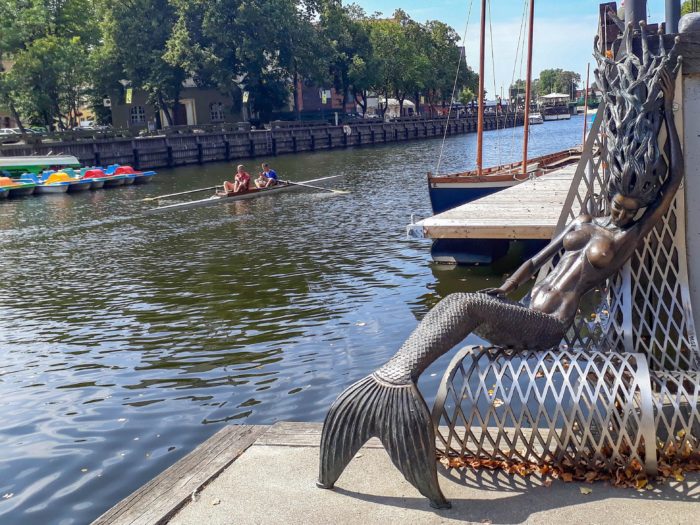
Where to Stay in Klaipeda
Michaelson Boutique Hotel – If you’re looking for a romantic getaway in a cute boutique hotel, then look no further than the Michaelson Boutique Hotel. Located in the Old Town, this small hotel offers a range of rooms and comes incredibly highly rated.
Art Hotel Boheme – Another small hotel, this place is good for couples and families alike. They have many rooms to choose from, are located very close to the Old Town and there is a good breakfast each morning.
Klaipeda Hostel – If you’re travelling on a budget or are keen to meet other travellers while visiting Klaipeda, this is the place for you. This small hostel has both dorm beds and private rooms on offer and is in a great location.
Not quite what you’re looking for? Click here to browse other accommodation options in Klaipeda!

Days 16-17: Kaunas
Because it is a hub for budget airline Ryanair and has recently been selected as the European Capital of Culture for 2022, Kaunas is seeing more visitors than it used to in past years.
However, many people visiting the second-largest city in Lithuania make a beeline either for Vilnius or the coast and leave the city unexplored.
This is a huge mistake, however, as Kaunas has a quite a lot to offer travellers and is worth spending a couple of nights in, rather than treating it as a day trip from Vilnius.
A more artistic and alternative city than you will find elsewhere in Lithuania, there is a thriving street art scene in the city. There is also a fascinating history, a number of interesting museums, and an imposing medieval castle to explore.
It’s also worth taking the time to visit the fascinating Sugihara House Museum, a museum dedicated to the Japanese diplomat who issued visas that saved countless Jewish people from a terrible fate during WWII.
Spending two days in Kaunas is a perfect addition to your Lithuania itinerary and we assure you that this edgy city won’t disappoint.

Where to Stay in Kaunas
Hof Hotel – This small hotel is one of the best places to stay in the city if you aren’t after the hostel lifestyle. Situated in a great location, they have a number of rooms on offer, come very highly reviewed, and even have free breakfast included in the room rate.
Maironis Apartment – This two-bedroom apartment is an excellent option if you’d like to have your own space while visiting Kaunas. Centrally located, you can easily explore all the city has to offer using this as a base. It is fully furnished and comes very highly reviewed.
Monk’s Bunk Hostel – This small and cosy hostel is an excellent option for budget backpackers and solo travellers alike. Located in central Kaunas, they have both dorm and private rooms available, have great reviews, and have excellent staff.
Not quite what you’re looking for? Click here to browse other accommodation options in Kaunas!

Days 18-21: Vilnius
The perfect ending point for this Baltics itinerary is in the Lithuanian capital of Vilnius. Boasting one of the largest Old Towns in all of Europe, Vilnius has a fraction of the tourists of Riga or Tallinn but sacrificed none of the charm.
Founded by Grand Duke Gediminas in the 14th century, the stunning baroque architecture and the laid-back vibe make Vilnius one of the best cities to explore in the Baltics. Spending at least three or four days in Vilnius will be the perfect amount of time to see everything that this dynamic capital has to offer.
Spend your first day exploring the massive Old Town, taking in all of the main sites such as the Town Hall Square, St Anne’s Church, and the central market of Hales Turgus. Enjoy the city’s thriving cafe culture and dine in some of the best restaurants in the region.
Devote your second day to wandering through the bohemian “independent republic” of Uzupis. This alternative area is filled with great street art, cool craft beer bars, and some of the best restaurants in the city. This is also a great time to visit some of Vilnius’ fantastic museums in order to learn more about the city’s and country’s complex history.
On the third day, take a day trip to the charming lakeside village of Trakai and admire the beautiful Trakai Castle – situated on its own island. If the weather is fine, you can even rent a pedal boat or swim in the lakes.

Where to Stay in Vilnius
Hotel Rinno – Excellently located close to Cathedral Square in the Old Town, this boutique hotel is one of the best places to stay in Vilnius . They have a range of rooms on offer and also have breakfast included in the room rate.
Old Town Trio – This hotel located on the edge f the old town is an excellent mid-range option in the Lithuanian capital. They have a myriad of lovely rooms to choose from, great amenities and there is an option to include breakfast in the morning.
Jimmy Jumps House/Hostel – This small hostel has a lively atmosphere and is a place to stay if you’re travelling on a budget. Located just off of the Town Hall square, they have both dorm and private rooms at affordable prices. They also organise social events in the evening.
Not quite what you’re looking for? Click here to browse other hotels in Vilnius!

Planning the perfect Baltics itinerary can be a complicated task, with so many interesting places to visit. Take the time to really explore the places you visit and get to know the countries you are in and it certainly won’t disappoint!
Are you planning to visit the Baltic countries? Have any questions about this itinerary? Let us know in the comments!

Related Posts:

A Perfect Day Trip to Lahemaa National Park from Tallinn

The Ultimate 2 to 3 Days in Tallinn Itinerary

Best Things To Do In Tartu, Estonia: A 2-Day Itinerary

About Maggie Turansky
Maggie is a co-founder and writer for The World Was Here First. Originally from the US, she has lived in five different countries and has travelled to dozens more, both solo and with her partner, Michael. She particularly loves exploring Spain and spending time in the Caucasus and the Baltics. Read more about Maggie
Hi Maggie. My Husband and I want to travel to Lithuania next year. My Father was born in Kybartai and my life long dream is to see where he grew up. From the limited research I have done so far I’m thinking we need to fly into Kuanas. Are there buses from Kuanas to Kybartai? What time of year do you recommend we go there? We don’t like cold weather but don’t want it to be extremely hot to explore in. We will be traveling from New York State USA and this will be our first trip to Europe. We do not speak Lithuanian, will we find many people in Kybartai that speak English? Can you recommend any places to stay there?
I was planning on a quick trip thru the Baltics this summer but apparently they merit much more time than that. I will plan on spending a month or so there on a different summer trip.
There really is so much to see and do in the region that having enough time is essential 🙂
Hey Maggie How about a trip in early April? Will the weather be cold for a trip with an emphasis on nature and the Baltic coast region?
Early April is still going to be quite cold in the Baltics and temperatures will likely still be hovering the single digits (celsius), so it may not be ideal for a coastal trip.
Hey Maggie, Thanks for the exhaustive information. I have a wedding to attend in Estonia and hence would like to do nearby cities/countries too. I have around 10-12 days in hand. Do not want to rush into many places but would like to do leisurely as i will be travelling with 2 teens too :-). My tentative plan is to do Estonia Latvia Lithuvania. What would you suggest.Should i include Finland in my trip. Cheers 🙂 Aparna
Hi Aparna, with only 10-12 days, I wouldn’t try to cram all three of Estonia, Latvia and Lithuania into your trip – there is too much to see and do that you would need more time. I’d recommend spending time in just Estonia and Latvia or simply just Estonia – you will get a lot out of the trip and there is a lot to see and do that you certainly won’t be bored!
Hi That was a pretty comprehensive guide to the Baltics! We are a group of 4 (husband, daughter, son-in-law and myself), planning a trip to the Baltics for around 2 weeks, starting Oct 18th or so. We thought we could travel the 3 Baltic countries by road (bus or hired car), then head to Warsaw for a few days, and head back home to Bangalore from there.
Do you think this itinerary would work with the time available? All 3 of my co-travellers are architects, so which cities / towns would you recommend we visit in this trip for experiencing / enjoying the local architecture ? And, is late October a good time to see fall colours, or should we plan to go a week or 2 earlier?
Thanks for your comment, Vijaya! I think that two weeks should be sufficient with your plans — I would recommend starting in Tallinn and heading south if you want to end your trip in Warsaw. For the architects, definitely spend some time in Riga as it has an amazing array of Art Nouveaux buildings and Vilnius would be a great option if they like Baroque architecture. I think your plan for mid-late October is a good one if you want to see some autumn colours — just make to pack some warm clothes as it will start to be very chilly!
Thank you for publishing this, as the Baltics have been on my radar for a while. I’ve wanted to avoid traveling by cruise ships (for many reasons)
We are planning to visit in July -Aug 2019, more or less traveling from Tallinn to Vilnius (might reverse, also a St Petersburg stop will be included at end/beginning).
Would you recommend traveling by train or bus in certain areas? Suggestions by country would be great.
Thanks for your comment, Jake! You can see a lot more of the Baltics if you avoid cruise ships so it’s great that you’re trying to avoid them. If you’re relying on public transport to get around (which is totally doable), your best bet is going to be to go by bus. There isn’t a well-developed train network throughout the Baltics but the buses are modern, extensive and reliable, and will get you everywhere you need to go.
We have a bunch of content on specific cities and regions throughout Estonia, Latvia, and Lithuania if you want to check it out ( https://www.theworldwasherefirst.com/baltics-travel-guide/ ). And if you have any more questions, please don’t hesitate to contact us 🙂
Thank you for an excellent and informative read.
I am heading to Baltic in June, starting ( 2 nts) and ending (2 nts) in Kaunas.
Can you suggest an itinerary to get the most from my ten days?
I intend all transfers to be by bus as is cheap and see more of the region that way.
Accommodation hopefully be Airbnb.
So many places to see, starting to think I should have booked more than ten days.
Do you think Kaunas,Tallinn,Riga,Vilnius,Tartu are doable in that time frame?
Some places you suggested that I hadn’t considered ( eg Tartu) have complicated things further.
Given Kaunas already booked I have a week to cover other places.
Would appreciate your itinerary ideas.
Got a feeling I shall need to book a return visit.?
Would much appreciate your input.
Hi Stuart, glad you found the itinerary helpful! I think that you might be a little bit pressed for time if you only have 10 days for all those stops. I would honestly recommend only heading to the capitals during that time (you can start in Kaunas and end in Vilnius, Kaunas is only maybe 1.5 hours away by bus from Vilnius). That would give you a good taste for the region without exhausting yourself. However much I love Tartu, for instance, I think it would probably more fulfilling to give Tallinn a proper amount of time during your first visit to the Baltics. Like you said, there is always room for more in a return visit! Hope this helps. If you need more help planning your trip, we have a ton of Baltics content here: https://www.theworldwasherefirst.com/baltics-travel-guide/
Hi Maggie, very helpful information. Wanted to check on what is the best way to travel between the cities mentioned in the Baltics
Hi Indrani, the best way to get between cities in the Baltics if you’re relying on public transport is by bus. There isn’t a well-developed train network in any of the three countries and the buses, especially Lux Express, are very comfortable and quite efficient.
I’m planning to travel from Helsinki to Prague over 2+ weeks. What’s your advice for affordable accommodation through the Baltics and should I be concerned about not speaking Russian or German. I am a 58 y o women traveling solo for a little adventure.
Sounds like a great trip! For affordable accommodation, I would recommend looking at Airbnb. Depending on where you are, private rooms will probably set you back about €20/night and a full apartment will probably be about €35-40/night. You also get the added bonus of staying with locals! As for a language barrier, It shouldn’t be much of an issue. Most people, especially the younger generation, tend to speak English at quite a high level. Of course, it’s always good to know a few words and key phrases in the local language and having Google translate downloaded will get you by in a pinch. Hope this helps!
Leave a Comment Cancel reply
What to Know Before You Travel to the Baltic Region
Lithuania, Latvia, and Estonia
:max_bytes(150000):strip_icc():format(webp)/RussianKerry2-56a39e8d5f9b58b7d0d2ca8c.jpg)
When to Visit
Countries of the baltic region, the culture of the baltic region.
The Baltic Region of Eastern Europe is a unique territory inhabited by non-Slavic natives as well as ethnic Slavs. Travelers to the Baltic Region will discover the centuries-old folk culture, strong national pride, and the refreshing air of the Baltic Coast.
Visiting this region offers sights and activities not found in other countries in East or East-Central Europe. The capital cities may provide the most as far as entertainment, sights, and shopping go, but a trek into the countryside will mean the exploration of castle ruins, enjoying a day at an open-air museum, or spending a revitalizing holiday by the sea. Furthermore, villages and towns showcase interesting snapshots of life in the Baltic Region.
While most people visit the Baltics in the summer, other seasons have a wealth of options for the off-season traveler. Autumn and spring are beautiful times to visit these three countries. Winter has the remarkable advantage to visit as it is the season during which Christmas markets and related events allow visitors to participate in holiday traditions. When you dine out in the Baltics, seasonal dishes such as cold beet soup in the summer and hearty stews in the winter will be popular fair at restaurants serving traditional fare.
Nestled together on the coast of the Baltic Sea—Lithuania, Latvia, and Estonia—make up the Baltic Region of Eastern Europe.
Latvia is situated between Estonia, its neighbor to the north, and Lithuania is its neighbor to the south. To get a better idea of location, look at these maps of the Eastern European countries . Because Russia (and Belarus), Poland, and even Germany have shared borders with the Baltic Region, the Baltic countries may share some characteristics of nearby countries. Each Baltic nation has a coast on the Baltic Sea, which has provided fish, amber, and other ocean resources to Baltic Region locals.
Visiting all three Baltic countries is easy, with regular flights between the capital cities of Tallinn, Riga , and Vilnius. Short distances between the cities also mean that travel by bus is convenient, affordable, and comfortable and that seeing all three cities in one visit is possible.
Although Lithuania, Latvia, and Estonia are grouped geographically as the Baltic Region, they differ from one another culturally and linguistically. The countries consistently strive to encourage the world to see them as unique nations. Locals and visitors alike can learn about the folk cultures and the evolution of languages in art and history museums in the Baltic Region.
As far as language goes, both Lithuanians and Latvians share some similarities of language , though the two are not mutually intelligible; Lithuanian is considered to be the more conservative of the two. Meanwhile, the Estonian language derives from the Finno-Ugric branch of the language tree, making it entirely different from both.
Festivals and markets across the region year-round also highlight unique elements of each nation's culture and history through folk dances, songs, crafts, and food. These song and dance festivals preserve this essential part of these countries' cultures, which was integral to gaining their independence during the Singing Revolution.
Countries in the Baltic Region also celebrate holidays according to local customs, so Christmas in Lithuania, while similar to Christmas in Eastern Europe, is definitely unique, with many special customs and traditions of its own.
Guide to the Countries of Eastern Europe
Major Cities in Eastern Europe
Fall in the Baltics: Weather, What to Pack, and What to See
Lithuania in Spring: Weather, What to Pack, and What to See
Lithuania Facts
After Decades of Disconnection, These 3 Countries Will Join the European Rail System
Introduction to the Baltic Capitals
Geography and Culture of Bulgaria
Lübeck: Planning Your Trip
Maps of Eastern European Countries
Maps of Northern European Countries Visited by Cruise Ships
Scandinavia and the Nordic Region: Planning Your Trip
Lithuania Christmas Traditions
November Festivals in Germany
8 Latvian Dishes You Should Try in Riga
Your Trip to Israel: The Complete Guide

Home » Destinations » Europe » Estonia » Travelling the Baltics: Your Perfect Baltic Itinerary
Travelling the Baltics: Your Perfect Baltic Itinerary
Links in this article may earn us a little money if you book/ order stuff. More here .
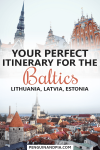
Thinking of Travelling the Baltics? Here’s a Sample Baltic Itinerary!
If you want a Baltic travel itinerary, you are in the right place! Planning a trip to the Baltics can be a challenge – even though they are so small, there is a ton to do and see in each of the Baltic States!
This is the first post about the Baltics on Penguin and Pia so we are going to be adding lots more information on the region in the future!
As a good place to start, below is a sample itinerary with the capitals, day trips, hostels, and other points of interest in the Baltic states.
In fact, all of Eric’s hostels in all three countries made our massive list of European hostels we loved staying at!
Table of Contents
Things to Consider When Travelling the Baltics
Before you dive into Baltic trip planning, you’ll want to consider a few details. From the currency they use (the Euro) to the weather, safety, and the best time to visit, we cover a few key areas below to help you prepare.
What are the Baltic States?
The Baltics (not to be confused with the Balkans, another region we absolutely love) is a small grouping of countries that are bordering the Baltic Sea in the Northeast part of Europe.
While a few of the countries that lie on the Baltic Sea can be considered Baltic countries, the Baltic States in their traditional definition are Lithuania, Latvia, and Estonia.
These three countries were part of the Soviet Union until their independence in 1991. Their capitals are beautiful, and are Vilnius, Riga, and Tallinn , in order of above!
Best Time to Visit the Baltics
Realistically, the best time to visit the Baltic countries depends on the type of travel you like to do. It will also depend on the types of activities you want to.
Eric visited in the winter and while it was much colder, there was still lots to do and explore. Another perk was that there were fewer people around.
Also, he wouldn’t have been able to go bobsledding in Latvia (see below) if it was summertime! There’s a reason a few of the Baltic capitals made the list of our favourite cities in Europe to visit in the winter .
Summertime means that the national parks in Estonia are full of hikers and wildlife. Summertime also means that the beaches along the Baltic Sea (like in Klaipėda, Lithuania) are going to be full of sun-seekers.
Day trips to Trakai Castle in the summer mean beautiful lakes and water activities. The winter means walking on the lake and enjoying the cold but peaceful atmosphere. See – there is no easy answer!
For the best of all worlds, consider visiting in the shoulder seasons of April-May and then September-October. The spring is cooler and there might be some rain but there will be fewer crowds and the snow will be gone.
The fall can also be nice because up in Estonia especially you’ll get to see beautiful coloured leaves.
Getting Around the Baltics
Getting around the Baltics is pretty easy since there are only so many large centres and they are all connected via highways (usually). This makes planning a route a no-brainer if you just stick to where the highways bring you!
We’ll get to car rentals below. As for Eric’s trip, he took the bus between all the Baltic capitals, ending in Estonia. It was awesome – we actually wrote a whole detailed post on taking the bus between the Baltic capitals from Vilnius to Riga to Tallinn .
The bus company in the region is LUX Express. He even took it from Warsaw to Vilnius to start the Baltic portion of the trip.
To be honest, after travelling with the big names like Megabus, FlixBus, ones in the Balkans like CroatiaBus, LUX was probably the cheapest and overall best experiences he has had with a bus company.
The best part about LUX Express is that tickets can be cheap but still a quality experience. You can check the timetables and latest deals on the LUX Express website .
Car Rental in The Baltics
If you are feeling like driving as opposed to the bus, renting a car is definitely a good option here in the Baltics. The thing is that these countries aren’t very big and so driving between places isn’t a huge time commitment like in other countries.
Plus, having a car means that you can adventure off and day trip if you want to see more than what you would be able to by sticking to a bus route.
In the Baltics, the highways are pretty good – regional roads between cities are paved and well-maintained. With any country, the more rural you get, the worse the roads become but that’s sort of a standard you’d come to expect.
Another big plus is that since the Baltics are all in the EU and the Schengen Zone, there are no internal borders between them. So you can drive wherever you like and cross borders without any problems!
Given that Baltic road trips are very doable, there are loads of rental car agencies available. You can compare prices from different agencies for the duration of your trip with this handy tool . Make sure to read the fine print about additional costs in case there are any issues.
Are the Baltics Safe?
Because so little is typically known about the region – this is a popular question to ask. With a rich history and an intimidating neighbour to the east (Russia), it’s no wonder we wonder if the Baltics are safe.
In short, we think the answer is: yes, but. The Baltics themselves are politically stable and developed nations. They are in the EU – and that wouldn’t happen if the countries still needed to get their act together. With any country, however, it’s always wise to keep your guard up in an unfamiliar place.
The capitals are beautiful and can get quite touristy in the summers. As a result, you’ll want to watch your pockets in crowded areas in the Old towns of Riga and Tallinn. If you decide to hike through a National Park, remember to lock your car and/or take valuables with you.
A local connection (who took Eric for beers and dinner in Vilnius the first night he arrived) mentioned that you wouldn’t want to hang around the main train/bus station at night.
That said, is there any train station you WANT to hang around at night in any country? Not really. So, use common sense or ask locals/hotels/tour providers about what’s a good area or not!
Travel Insurance for the Baltics
When visiting the Baltic countries (or travelling in general) it’s usually a good idea to have travel insurance. This includes medical travel insurances and the coverage for things like lost baggage or delays.
If you aren’t already covered by a company plan, extended medical plan, or a credit card insurance plan, we recommend that you get private travel insurance.
Travelling the Baltics: A Sample Baltic Itinerary
If you plan on travelling the Baltics, we want to help you out with a sample Baltic itinerary.
We’ve decided to write about it in the way that Eric did it – south to north. This means that you’d start in Vilnius, Lithuania and head through Latvia to Tallinn, Estonia.
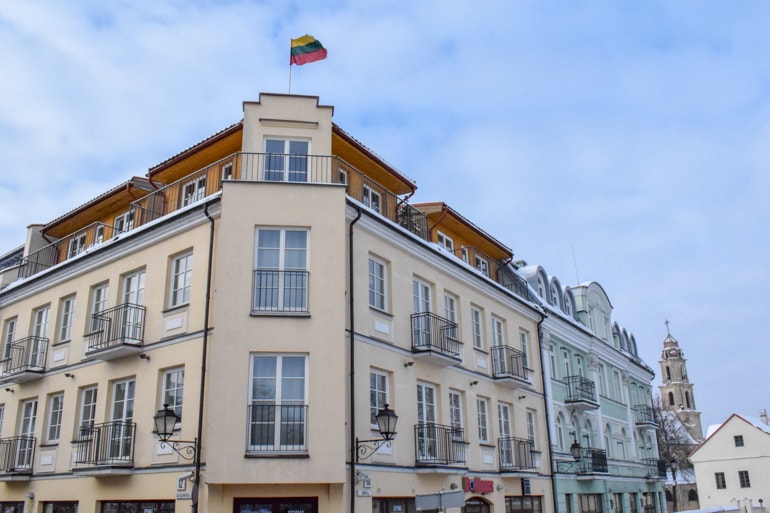
- Estimated Time to Stay: 2 nights
- How to Get There: Bus from Warsaw, Poland is about 7 hours, could also fly into Vilnius.
Beginning the itinerary with a great first city, Vilnius is a rich city full of history around every turn. Eric explored the city on his own for most of the days he was there.
In that time, he explored the Hill of Three Crosses, Vilnius Cathedral, the Bell Tower among other attractions. If you wanted an actual guide (and not just wander as Eric did) then you can go on a Vilnius walking tour with a local guide .
When Eric stayed there, he stayed in Jimmy Jumps House Hostel . It was a great stay – the people were awesome, the staff were friendly and welcoming, the location is right in the centre of the city, and they even make you waffles for breakfast!
Accommodation for Vilnius: Check for hotel deals or Hostelworld for great hostels !
Trakai (and the Castle)
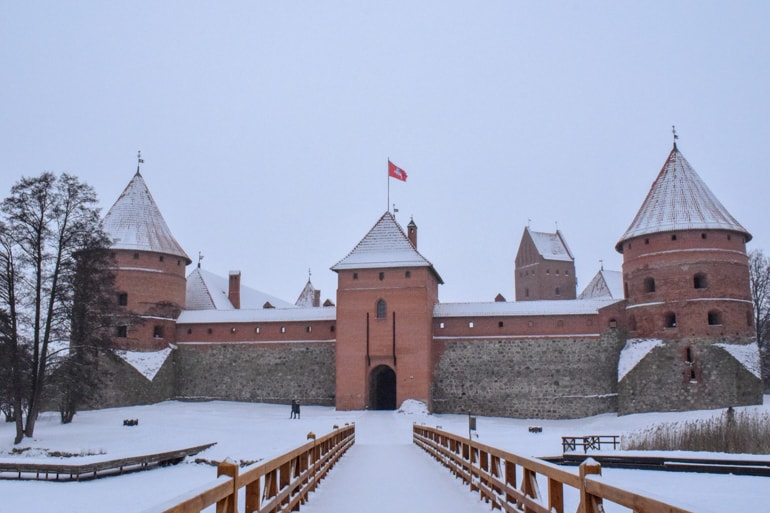
- Estimated Time to Stay: Day Trip
- How to Get There: Bus from Vilnius, car would also be easy – takes about 40 minutes.
Whether it’s the summer or the winter, a day trip to Trakai (and to visit the Castle) is definitely worth your time.
Eric went in the wintertime and even though it was super cold, it was really cool to basically have the castle to himself! The town itself is situated on the lake so it’s beautiful in the summertime as well.
Trakai Castle was built in the 14th century and remains an important place for Lithuanians as a medieval stronghold and a symbolic place of where statehood is preserved.
There are lots of different exhibits and galleries within the castle so it’s worth the admission fee. You can learn more about the town and castle here .
Nearby, the town is filled with small shops, cafes, and restaurants. These were open in the wintertime and we can’t even imagine how busy (but lively) the town must be in the summer.
If you wanted to leave the car in Vilnius, you could always take a day tour to Trakai to make the journey and guided tour super simple. If you planned on staying in Trakai in the summer, there are resorts and guest houses available!
Accommodation for Trakai: Check for guesthouse and resort deals !
- Estimated Time to Stay: 1-2 Nights
- How to Get There: Train, Bus, or Car – all methods take approximately 1 hour and 30 minutes from Vilnius.
Eric really only drove through Kaunas but his local friend who met him for dinner was from there. He explained that Vilnius, as the capital, was better for history and charm, whereas Kaunas was more lively with things to do for the younger crowds.
Obviously, there is a great deal of history in Kaunas with a castle, a monastery, cathedral, and many museums.
There are generally lots of cafes, restaurants, and shops in Kaunas as well as venues for music, etc. To learn more about Kaunas, check out the tourism website !
Accommodation for Kaunas: Check Booking.com for hotel deals or Hostelworld for great hostels !
- Estimated Time to Stay: 1 Night, or Pass Through on the way to Šiauliai. Could also Day Trip from Kaunas if necessary
- How to Get There: Car or Bus is best – 2 hours on the highway from Kaunas
Heading out to the coast of the Baltic, you’ll find the port city of Klaipėda. Klaipėda is a historic city with seafaring roots that go back centuries.
The old wooden, German-style buildings along the ports serve as a charming backdrop for cruisers that arrive at the busy port.
Klaipėda is actually Lithuania’s third-largest city – and so there are lots of things to do from museums to restaurants, theatres and green space.
The National Park – Curonian Spit – is a massive sand dune located close to the city. You can learn more about visiting Klaipėda here .
Accommodation for Klaipėda: Check for seaside hotel deals or Hostelworld for great hostels !
- Estimated Time to Stay: 1 Night
- How to Get There: From Klaipėda, Car is about 2 hours, Train varies from 2-3 hours, route/stops depending
As the fourth largest city in Lithuania, you might think there’s nothing left to see! That’s where Šiauliai proves you wrong.
While you’ll find many old museums in the city, the city is also a place of pilgrimage and served as a place of resistance to Soviet rule.
As a result, you’ll find the Hill of Crosses nearby to the city. On the Hill, there are over 100,000 wooden crosses that have been left there over the decades. It really is a sight to see and a place to be respected.
If you wanted to see the Hill of Crosses for yourself but weren’t planning on heading to Šiauliai on the way to Riga, consider a day trip from Vilnius for a Hill of Crosses Tour .
Accommodation for Šiauliai: Check Booking.com for hotel deals !
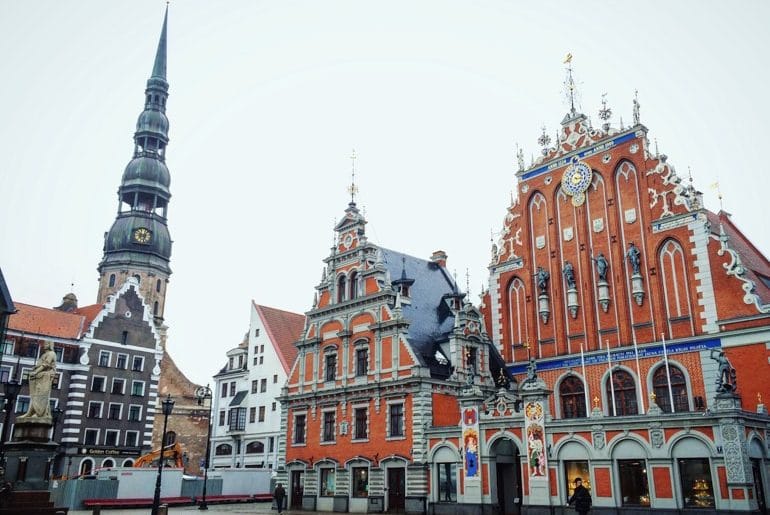
- Estimated Time to Stay: 2-4 Nights
- How to Get There: Car from Šiauliai is just under 2 hours, Train from Šiauliai is just over 2 hours.
As the largest of the Baltic capitals, there is TONS to do in Riga! Eric loved the city when we did his trip – and he wants to bring Lisa there someday soon so she can experience it, too!
Riga is a fantastic mix of history with new-age shops, coffee places, restaurants, and style. You get hints of former Soviet rule mixed with progressive ideas from the young people.
Not to mention it has incredible buildings, cathedrals, monuments, and other must-see attractions (like the Space Monkey statue).
Given the amount of history to Riga (much of it being significant Soviet history) a walking tour with an emphasis on Soviet tales might be for you! Besides that, there is lots of great food in Riga.
Eric tried the local cuisine of deep-fried bread at the traditional restaurant and beer hall. Now, if you are thinking “hmm, that would be delicious and definitely not healthy for you”… you’d be absolutely correct.
If you wanted to try other authentic cuisines, consider a food tour around Riga with a local guide who knows their stuff! We plan on writing up a whole other post on Riga soon so you’ll get lots more tips there.
As for a place to stay Eric stayed at Naughty Squirrel Backpackers . Technically a party hostel, it wasn’t as crazy as it sounds.
The staff were great, the people were nice, and the place was huge. You could lounge around or choose to socialise if you wanted. Bunks and rooms were huge and had amenities in the bunk which is always a nice detail.
Eric would definitely stay again for the tiny bar on hand and the free welcome shot of Latvian liqueur – Black Balsam!
Accommodation for Riga: Check for great Riga hotel deals or Hostelworld for great hostels !
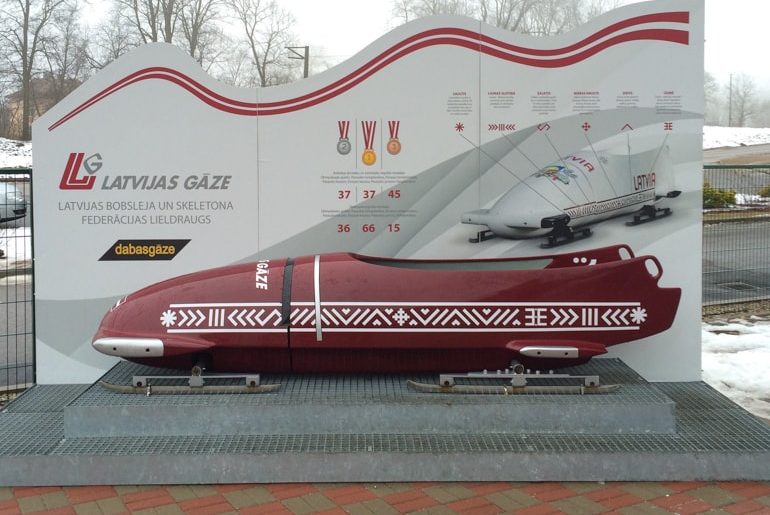
- Estimated Time to Stay: 1 Night or Day Trip
- How to Get There: Just under an hour driving, just over an hour with the Train.
Sigulda makes a great day trip or a longer escape from the city. Known for dense forests, castles, and parks, the city has one other attraction that is well-known around the world.
Sigulda is home to one of the world’s few operational bobsled tracks that are open to visitors – and you can ride a real bobsled down it!
Eric paid for the experience to be driven by a member of the Latvian sliding team – and WOW is it worth it!
The town itself is charming but the draw for people is the number of things to do that will excite you and keep you busy. You can learn more about Sigulda here .
Accommodation for Sigulda: Check Booking.com for hotel deals !
- Estimated Time to Stay: Day Trip
- How to Get There: Train or Car both take about 40 minutes (train can be shorter or longer route depending)
If you’re done with Riga and want to check out more along the Gulf of Riga, then head to Jūrmala. This beach town is a resort city that lies just west of the capital making it a great day trip.
The city is known for its massive sandy beach that gets busy in the summers as people head there to cool off and hang out by the water.
The shore is lined with seaside villas and other shops made from wood seeming like they were plucked from another era!
There are also a few parks and wooded areas that are great for small walks and hikes. Learn more about visiting Jūrmala here .
Accommodation for Jūrmala: Check Booking.com for hotel deals !
Pärnu + Soomaa Wetlands
- Estimated Time to Stay: 1 Night
- How to Get There: Car or Bus are about 2 hours and 20 minutes from Riga (slightly longer from Sigulda or Jūrmala)
If you want to enjoy the Estonian version of Jūrmala, then head to Pärnu. Known for its Estonian sunshine and sandy beach, Pärnu Beach is a resort town with youthful vibes, cool art, and historical bathhouses scattered through the city.
Pärnu is actually the fourth largest city in Estonia but the population balloons in the summertime with tourists and locals coming out to enjoy the water in Pärnu Bay.
From restaurants to nightlife there’s something for everyone. Check out more to do in Pärnu here .
Nearby, the Soomaa Wetlands are located in Soomaa National Park. The park itself is known for its high water. This makes the area great for canoeing and sighting wildlife.
Accommodation for Pärnu: Check Booking.com for hotel deals !
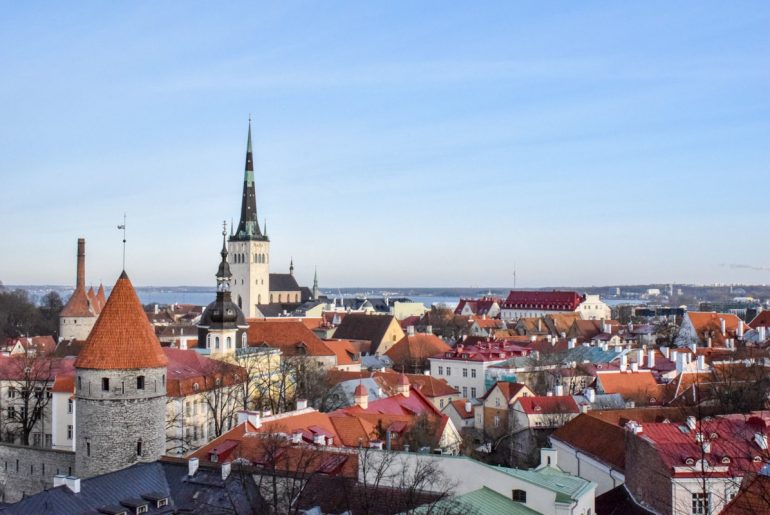
- Estimated Time to Stay: 2 or 3 Nights
- How to Get There: Car, Bus, or Train – just over an hour, 1.5 hours, or 2.5 hours, respectively, from Pärnu
Oh, Tallinn. Such a beautiful city. Eric was lucky enough to be guided around Tallinn by his former flatmate from when he lived in Edinburgh.
Needless to say, having a local around was a great way to experience the city! It was great to have a local show Eric around – she’s even (since) written a guide on spending one day in Tallinn !
Tallinn is known for its Old Town. So, you should start off with a wander there. The bright rooftops and cobblestone alleyways transport you back into medieval times.
There is quite a bit of history and amazing restaurants, cafes, and churches in the area. We walked around with our local guide but you could hop on a bike and take a guided tour – might be lots faster and you’ll get some exercise!
If you are done with attractions in the city centre, you should visit the Tallinn Tv Tower which is located just a quick bus ride away. As the tallest building in Northern Europe, it’s a pretty great attraction that is worth the view for the price of admission!
Eric visited with his friend and even though the views were a little cloudy it was still amazing to see the countryside and the Baltic Sea! If you know you want to go in the high season – get a line skip ticket for the Tallinn Tv Tower .
As for sleeping, Eric stayed at Red Emperor Bar and Hostel. For the price and the location, the hostel was good. There was a bar onsite (never got too crazy, just very social) with a lounge for loud and another one for quiet.
The rooms were standard – good lockers, good bunks, good bathroom facilities. The staff was very chill and you even get a beer with check-in!
The location is just outside the Old Town so like we said – it’s a good place to crash for a few nights and meet interesting people.
Accommodation for Tallinn: Check Booking.com for hotel deals or Hostelworld for great hostels !
Lahemaa National Park
- How to Get There: Car, Bus, or even a Taxi – each take about 45 minutes one way from Tallinn
With a landscape and wildlife similar to Canada (they are at similar latitudes to parts of Northern Canada), Lahemaa National Park is a nature lover’s dream.
Lahemaa is just a short distance from Tallinn yet it’s such an important forested area for conservation in Northern Europe that includes hiking to rock cliffs, waterfalls, beaches, and even moose!
If you want to learn more about Lahemaa, you can check out the official website . To make the trip even more simple, you could make the day trip a day tour to Lahemaa from Tallinn with a guide.
Optional – Day Trip to Helsinki
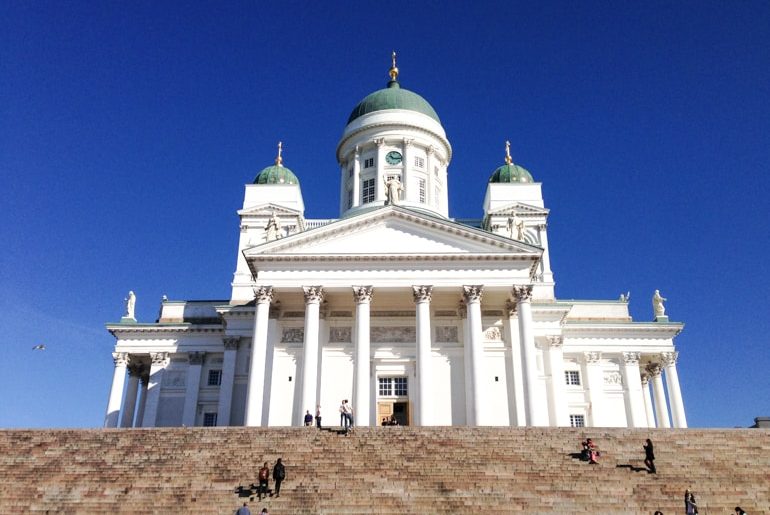
- Estimated Time to Stay: Day Trip or Overnight Trip
- How to Get There: Ferry from Tallinn is 3 hours. Flying takes 30 minutes (Eric did it by accident – it’s a long story).
Ah yes, a Helsinki day trip from Tallinn. Taking the ferry to Finland is a great option if you’ve got a day to kill and you’ve seen everything in Tallinn and the surrounding area.
That said, we wrote a whole post on how to take the ferry from Tallinn to Helsinki (and back) so check that out if you are interested!
Once you get to Helsinki, there is loads to do and see. Eric only had a few hours to explore the city but really wants to return with Lisa since she’s never been. I
f you want to know what to check out in Helsinki, read the guide written by our local connection Nick about the perfect day in Helsinki ! That said if you DID want to sleep there, check below for great places to stay in Helsinki.
Accommodation for Helsinki: Check Booking.com for hotel deals or Hostelworld for great hostels !
And there you have it – a few great ideas and a rough itinerary around the Baltics. In the end, there is so much to check out in these tiny countries that you’ll end up coming back for another trip or two.
This post was just to get you acquainted with the countries and the idea of travelling the Baltics! What do you think? Have you been to the Baltics or are you considering it? We can’t wait to get back there because Eric wants to show Lisa around! We’ll keep ya posted!
- Compare flights on Skyscanner
- Check for Hotel Deals or Book A Hostel
- Get A Rental Car (depending on the destination)
- Research plug types and possibly get a travel adapter
- Go over our packing list
Pin it for later!
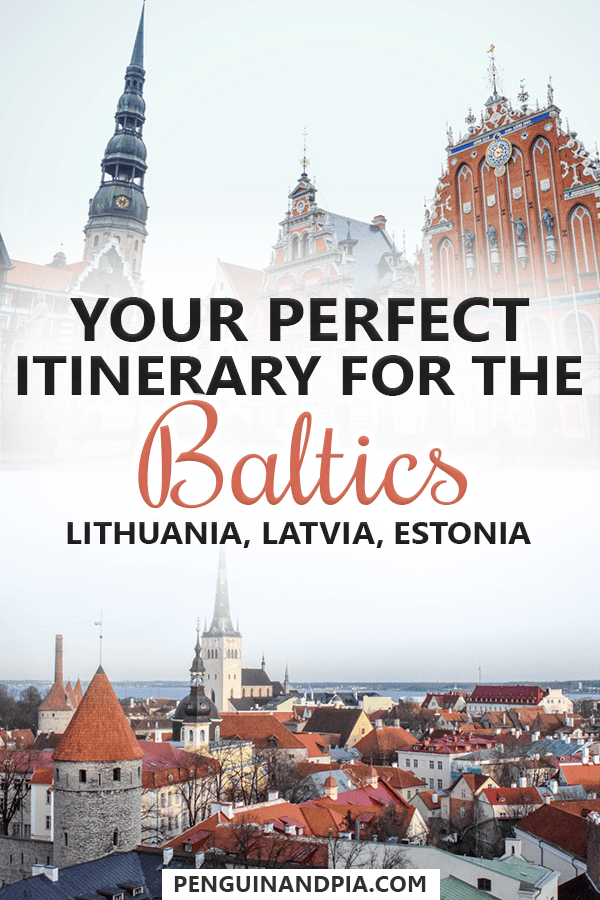
As an Amazon Associate we earn from qualifying purchases.
Destinations
Privacy policy
Disclaimer & Affiliate Disclosure
Terms of use
© 2024 Creativlier Media Inc.
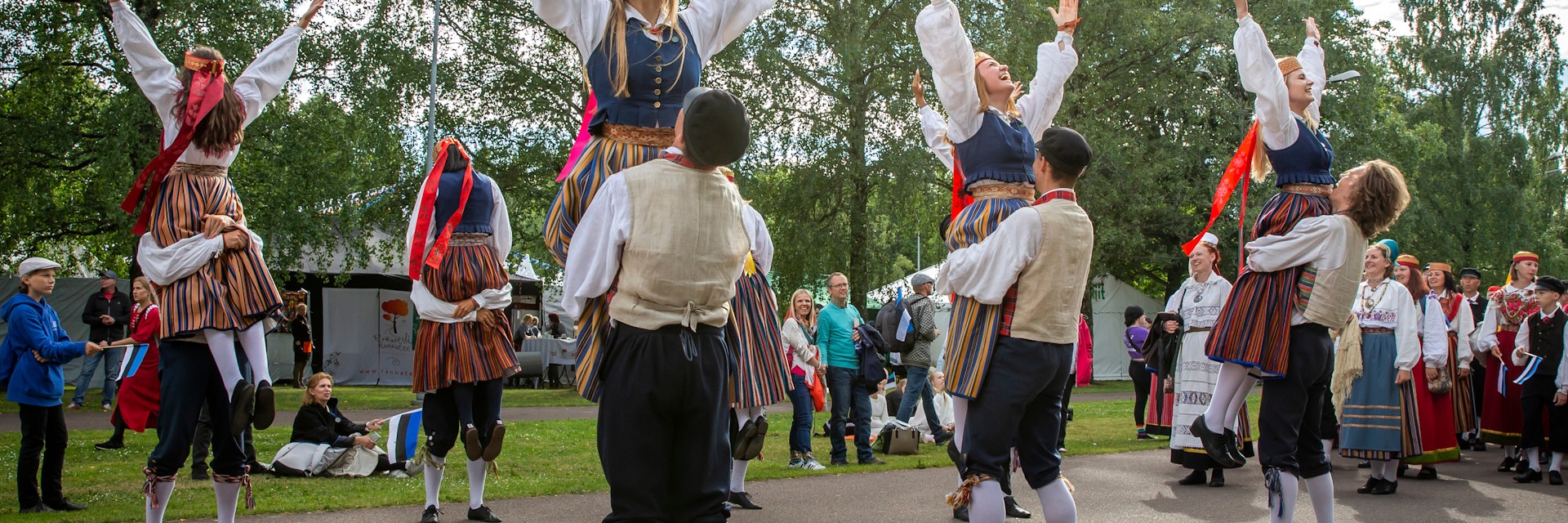
Shutterstock / Katiekk
The Baltic States
A land of crumbling castles, soaring dunes, enchanting forests and magical lakes – a trip to the Baltic proves that fairy tales do come true.
Leave the planning to a local expert
Experience the real The Baltic States. Let a local expert handle the planning for you.
Attractions
Must-see attractions.

Hill of Crosses
Lithuania's fabled Hill of Crosses is a symbol of defiance as much as a pilgrimage site. More than 100,000 crosses have been planted on this low hill,…
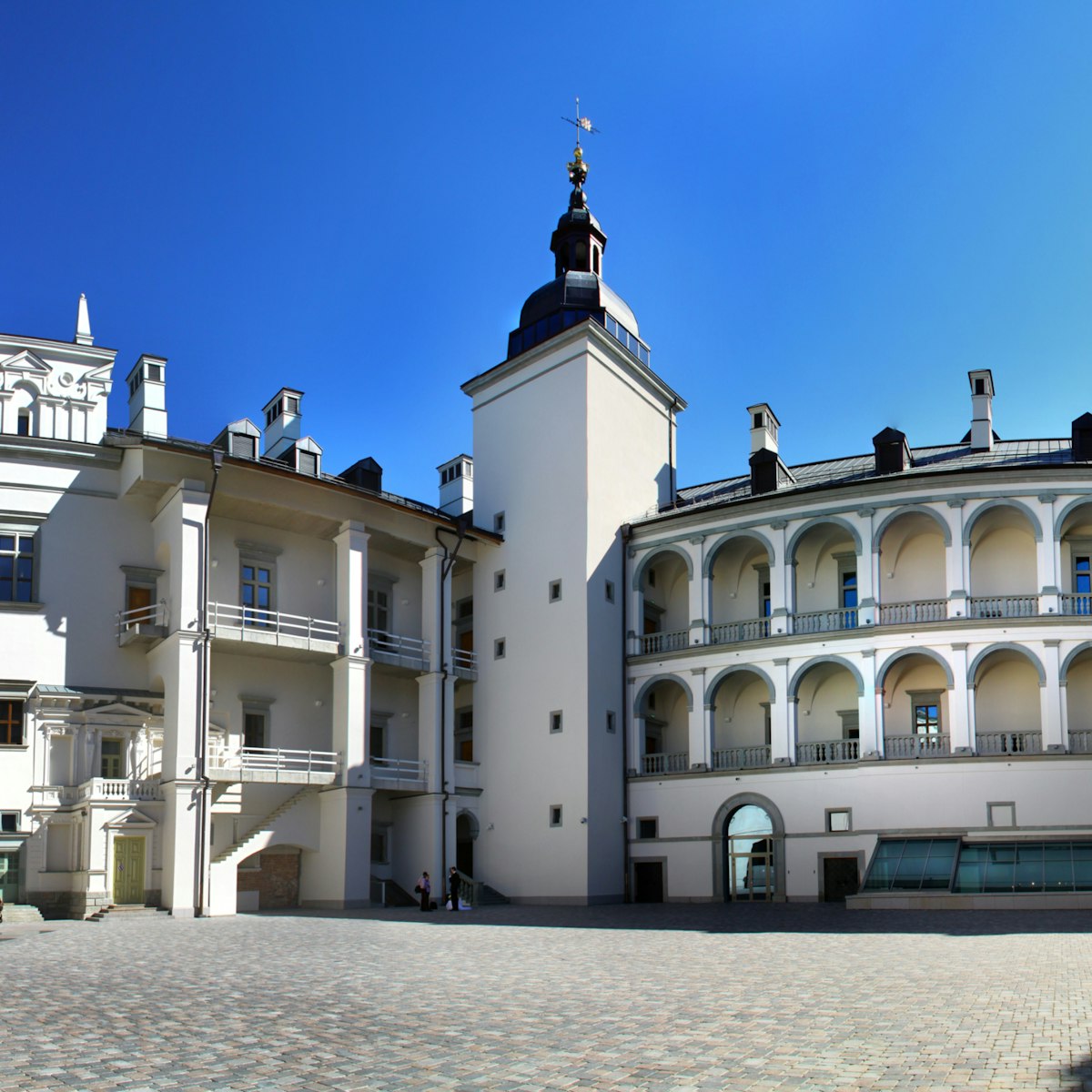
Palace of the Grand Dukes of Lithuania
If you only see one museum in Vilnius, make it this one. On a site that has been settled since the 4th century AD stands the latest in a procession of…
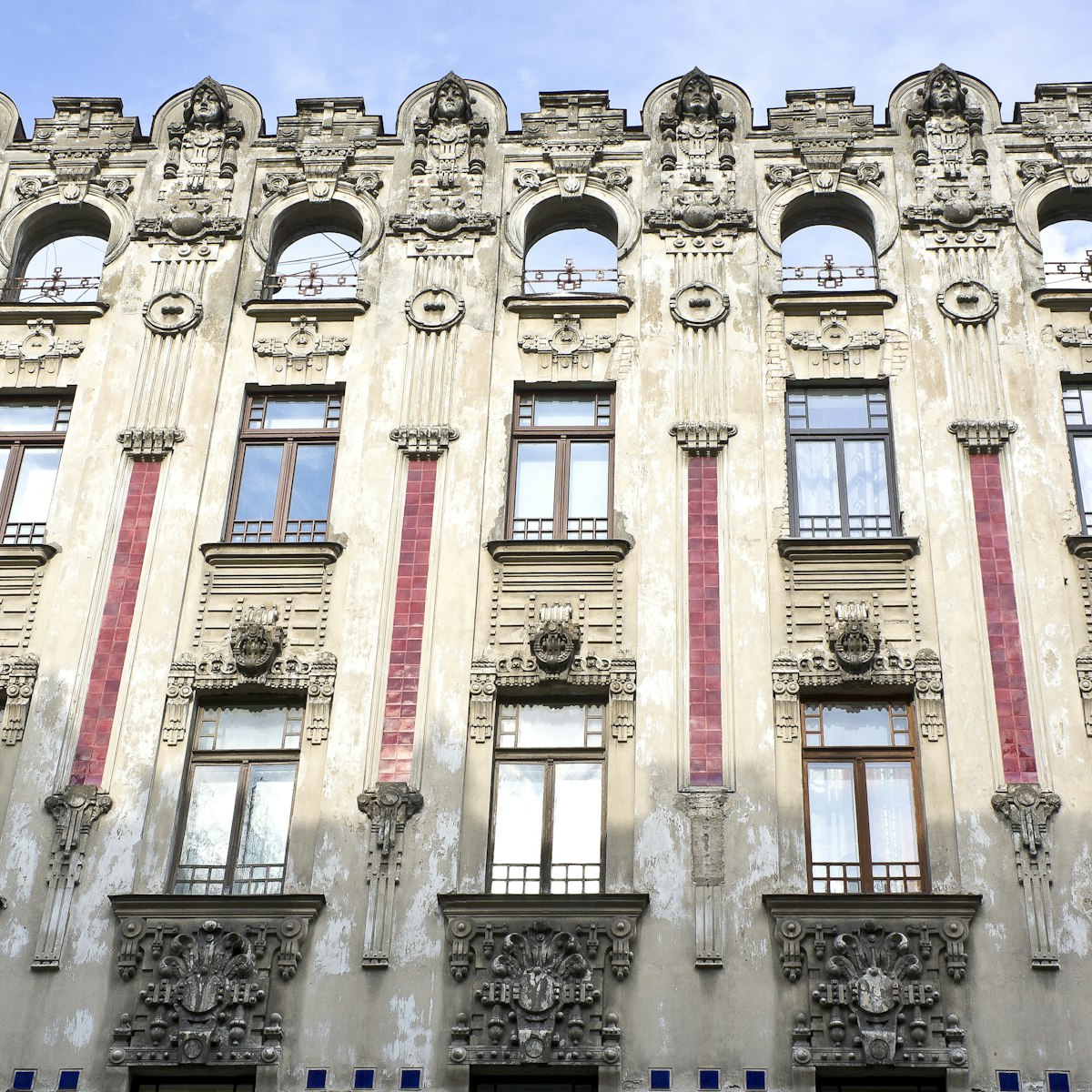
Alberta Iela
Central Rīga
Like a huge painting that you can spend hours staring at, as your eye detects more and more intriguing details, this must-see Rīga sight is in fact a…
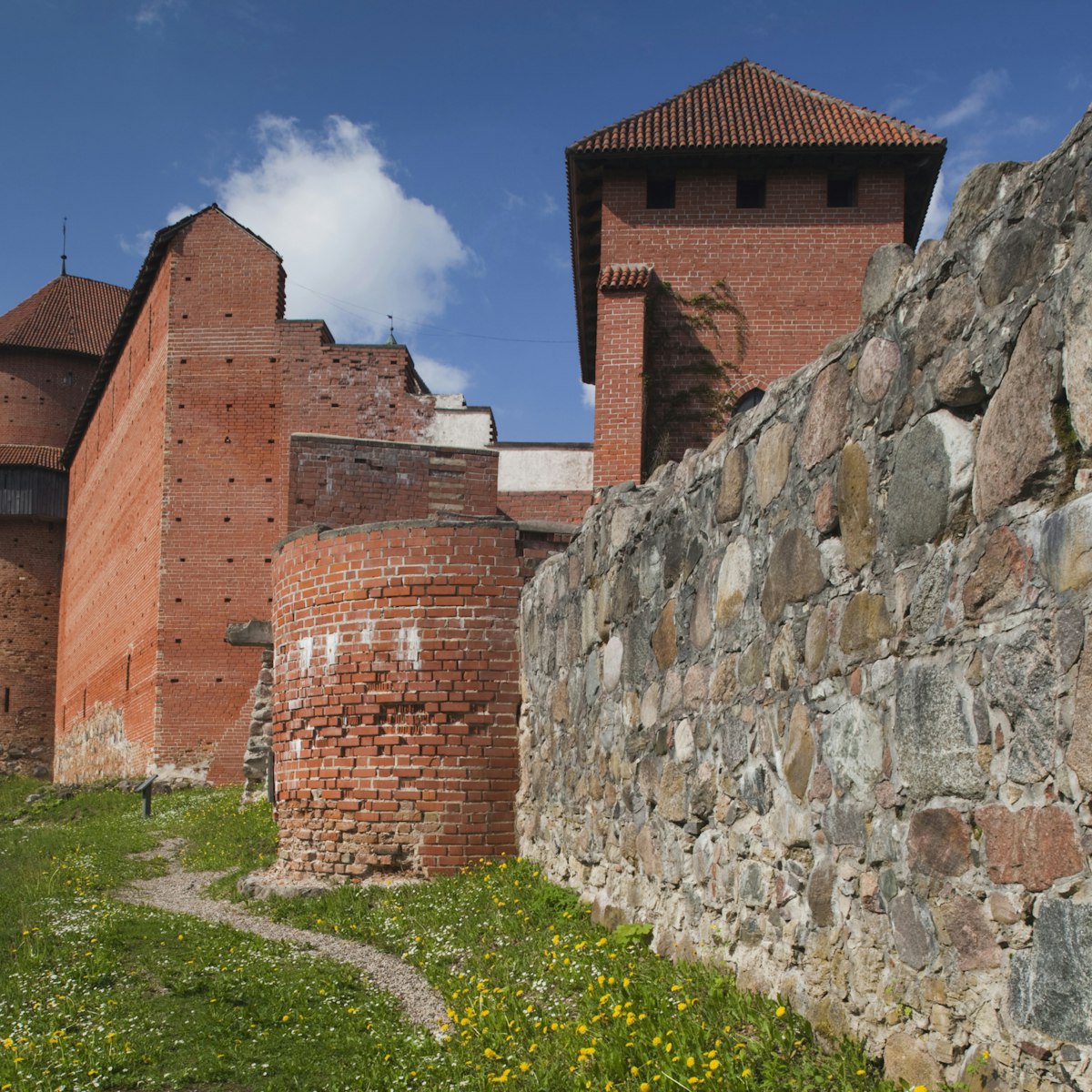
Turaida Museum Reserve
Turaida means ‘God’s Garden’ in ancient Livonian, and this green knoll capped with a fairy-tale castle is certainly a heavenly place. The red-brick castle…
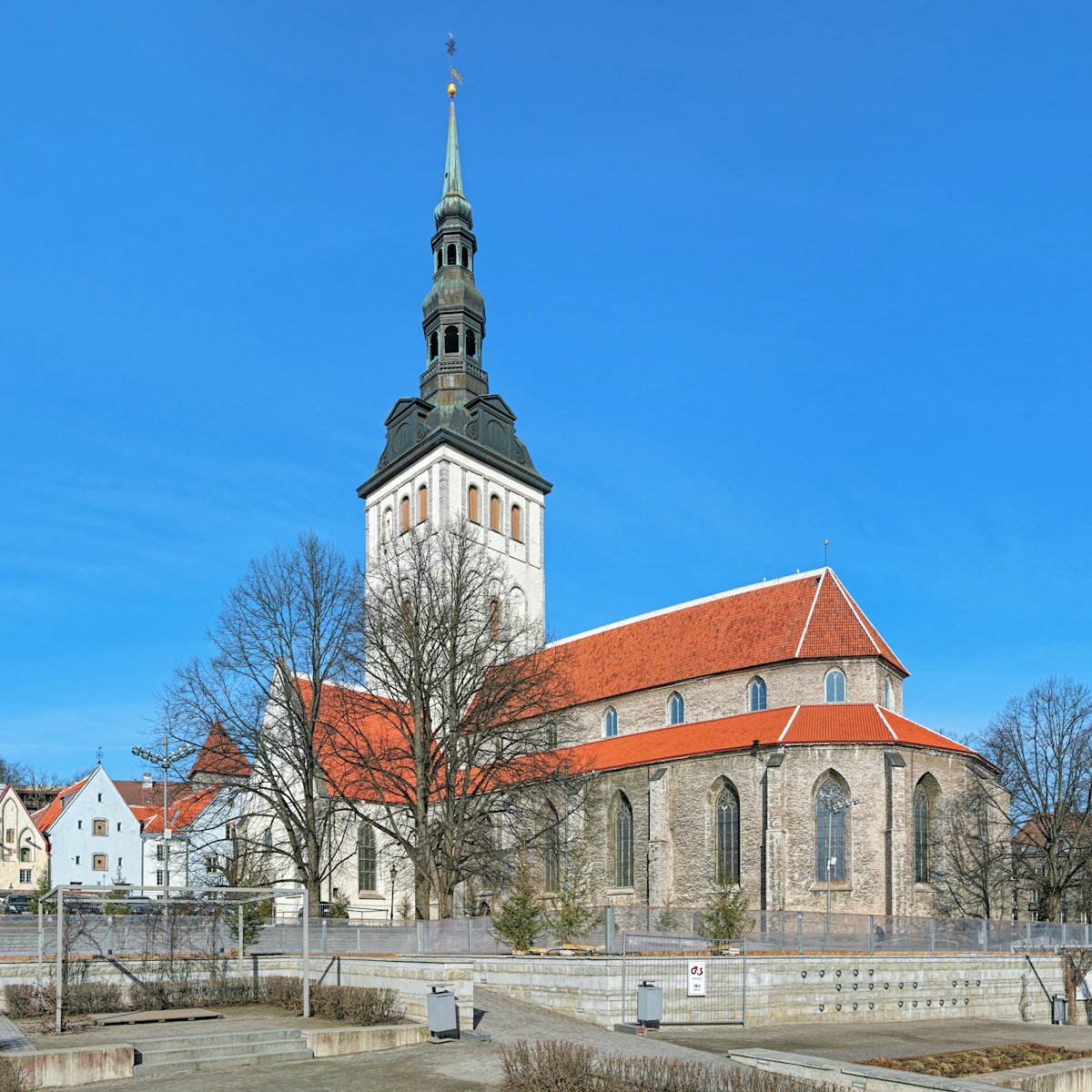
Niguliste Museum
Dating from the 13th century, the imposing St Nicholas' Church (Niguliste kirik) was badly damaged by Soviet bombers in 1944 and a fire in the 1980s, but…
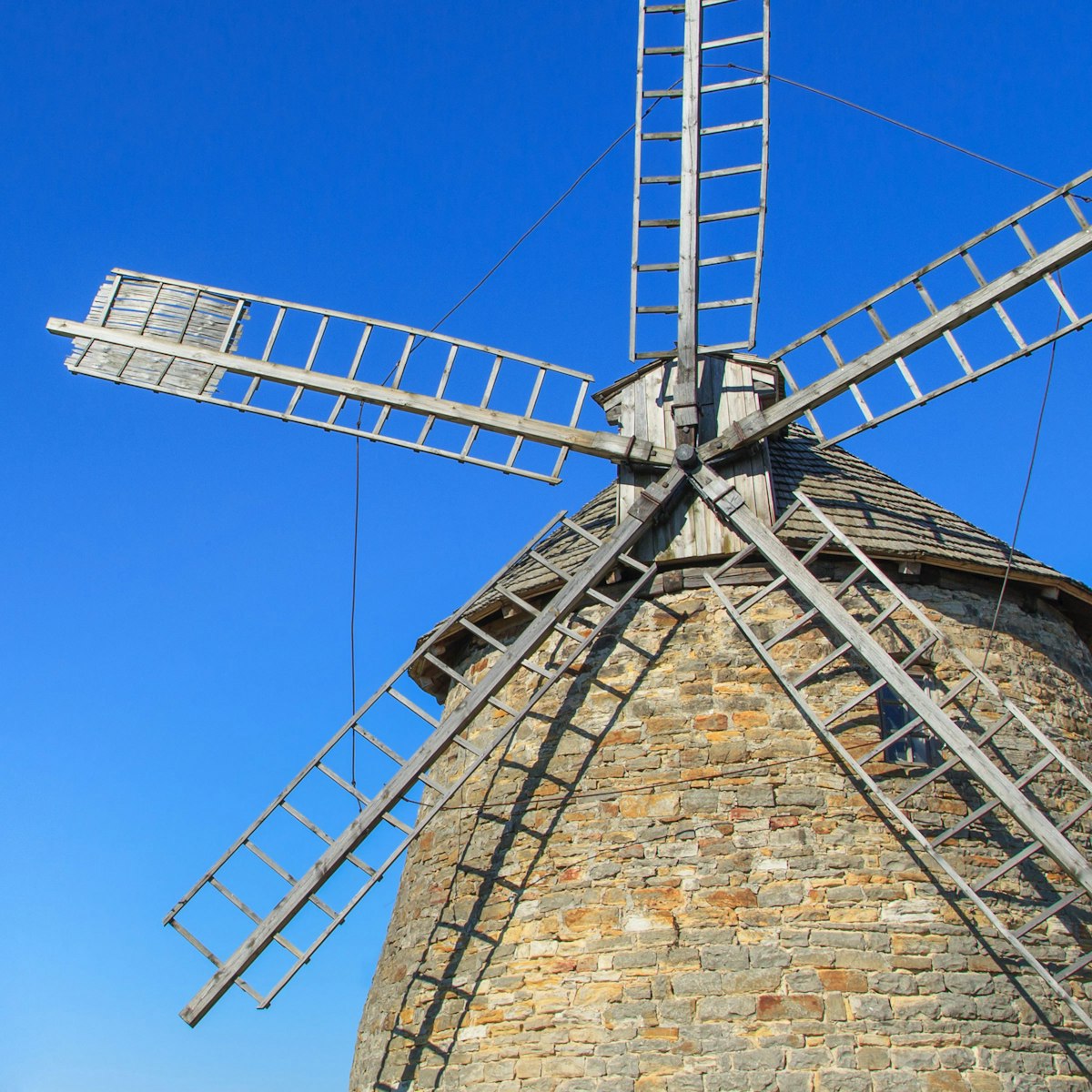
Estonian Open-Air Museum
This sprawling ethnographic and architectural complex comprises 80 historic Estonian buildings, plucked from across the country and resurrected in…
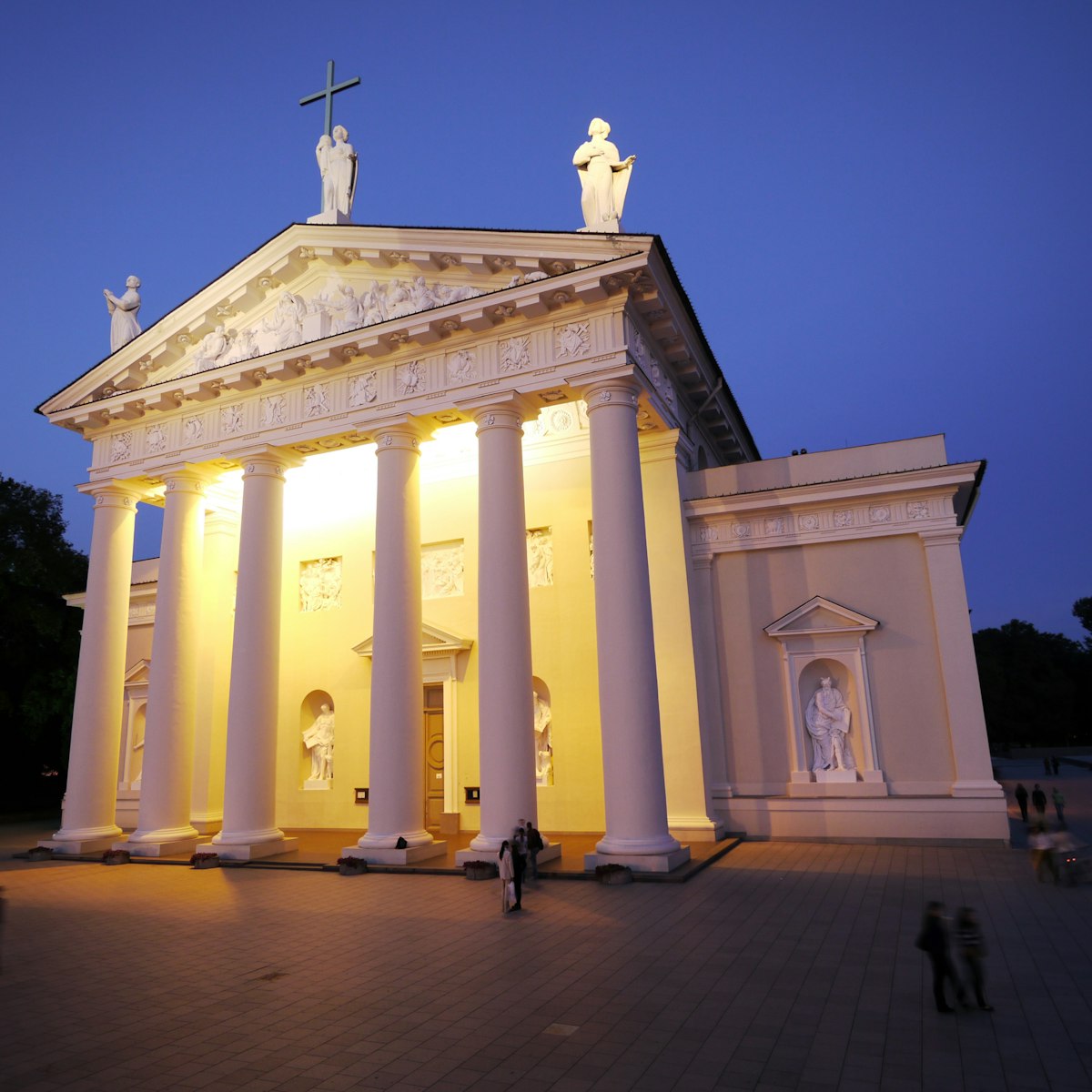
Vilnius Cathedral
Stately Vilnius Cathedral, divorced from its freestanding belfry, is a national symbol and the city's most instantly recognisable building. Known in full…
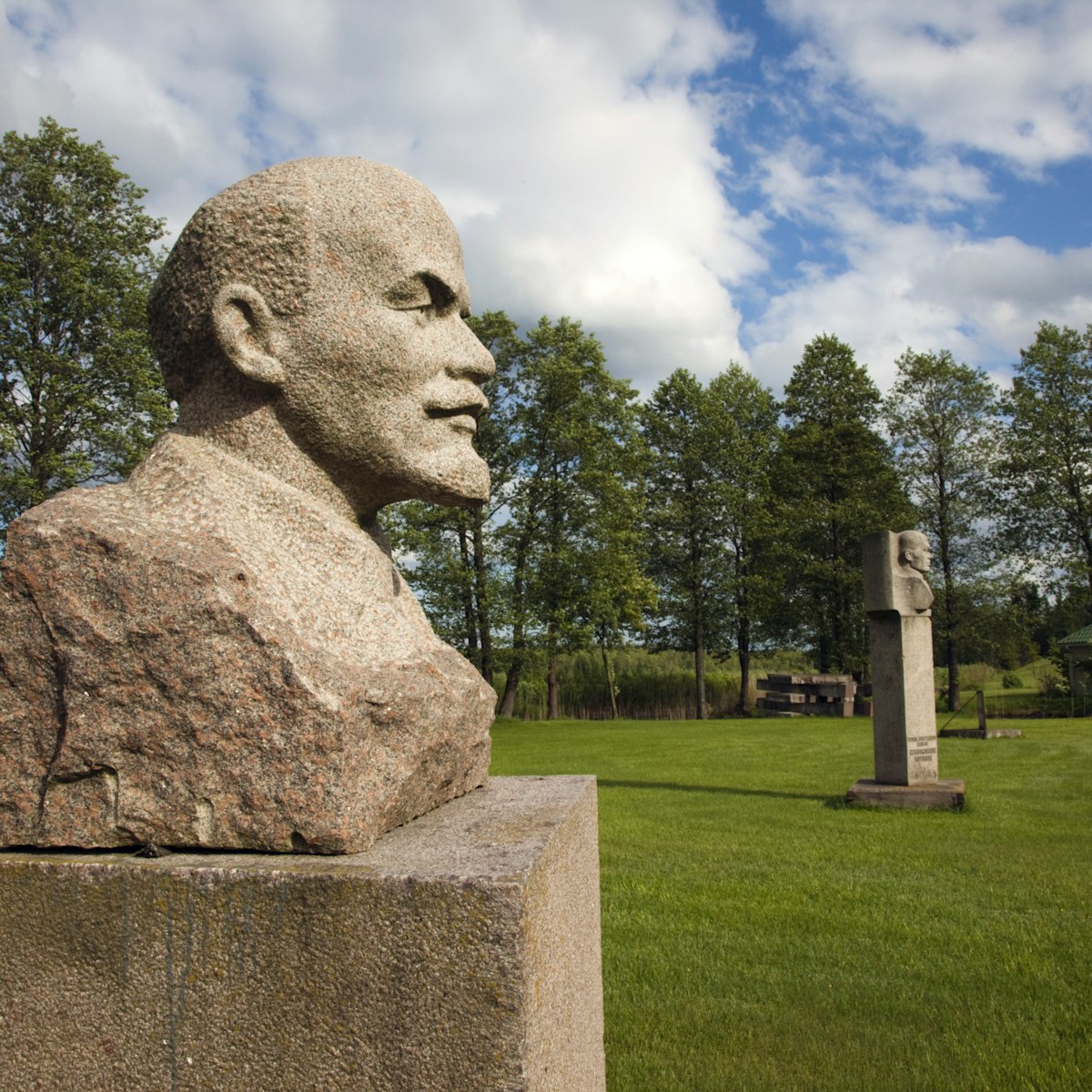
Grūtas Park
With Soviet-era statues of Lenin, Stalin and prominent Lithuanian members of the Communist Party that once dominated Lithuanian towns lining the forest…
Plan with a local
Experience the real Baltic States
Let a local expert craft your dream trip.
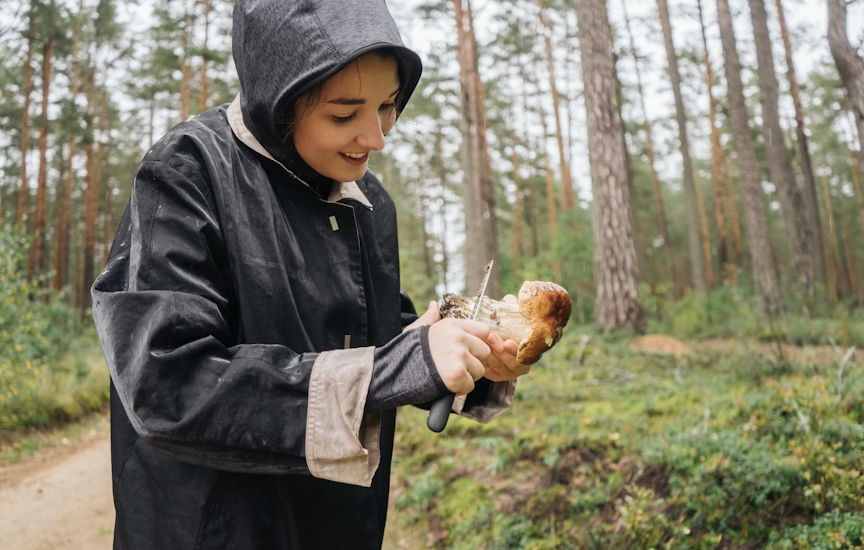
Latest stories from The Baltic States
Filter by interest:
- All Interests
- Adventure Travel
- Art & Culture
- Beaches, Coasts & Islands
- Food & Drink
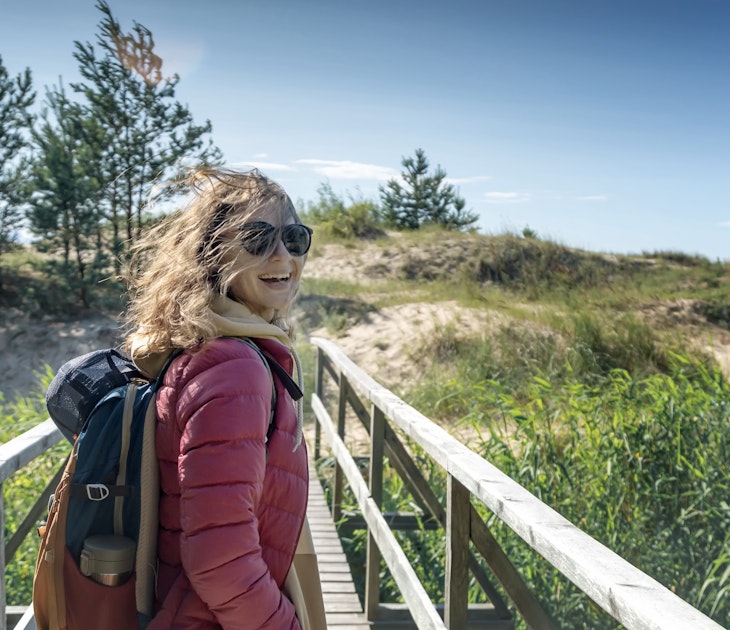
Sep 21, 2023 • 6 min read
The Baltic Trails take ambitious hikers through the wooded national parks, beaches and historic towns of Estonia, Latvia and Lithuania.
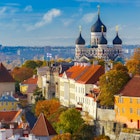
Oct 9, 2019 • 4 min read
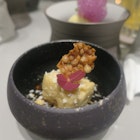
May 20, 2019 • 9 min read
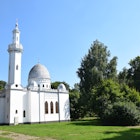
May 13, 2019 • 6 min read
Purchase our award-winning guidebooks
Get to the heart of The Baltic States with one of our in-depth, award-winning guidebooks, covering maps, itineraries, and expert guidance.
The Baltic States and beyond


Baltics Travel Itinerary: 2 Weeks in Estonia, Latvia & Lithuania (+ Map)
By Author Jurga
Posted on Last updated: January 19, 2023

Are you thinking of traveling to the Baltics, want to see all three countries – Lithuania, Latvia, and Estonia – but are not sure how to plan your itinerary? Do you want to know how much time to spend in each country and what not to miss? This guide will help you plan an unforgettable trip to the Baltic region – find out!
In this article, we share a two-week Baltics trip itinerary that allows you to see the highlights of Estonia, Latvia, and Lithuania. You will get to explore a good mixture of vibrant cities and rural areas, go hiking, relax by the beach and discover the food scene of each country.
This Baltics trip includes the famous capital cities Tallinn, Riga, and Vilnius, where you discover a bustling lifestyle and admire charming historic city centers and beautiful architecture. In addition, it also takes you to the lesser-known areas of each country. You get to spend two nights on Saaremaa, Estonia’s biggest island, explore the castles of Sigulda, Latvia, and climb the impressive sand dunes in the Curonian Spit in Lithuania .
Even though two weeks are not enough time to see everything the Baltics have to offer, this itinerary will help you make the most of your time and be sure that you don’t miss any of the ‘musts’.
Good to know: The best way to visit the Baltics is by renting a car and doing a self-drive road trip . But this trip is also doable without a car – there are excellent bus/train connections (and buses are reliable and comfortable) and for some popular places nearby, you can also take day tours from the capital cities. This itinerary is structured as a self-drive Baltics road trip but it also includes all the tips and suggestions for those who are using public transport. Take a look!
Baltics Travel Itinerary – OVERVIEW:
Days 1-2: tallinn, estonia.
- Days 3-4: Kuressaare, Estonia
- Day 5: Tartu, Estonia
Day 6: Cēsis, Latvia
- Day 7: Sigulda, Latvia
- Days 8-9: Riga, Latvia
- Day 10: Hill of Crosses & Klaipeda, Lithuania
- Day 11: Day trip to Curonian Spit, Lithuania
- Day 12: Kaunas, Lithuania
- Day 13: Trakai & Vilnius, Lithuania
- Day 14: Vilnius, Lithuania
- Assitional suggestions for a longer trip
- Practical info & tips
Good to know: This Baltics travel itinerary starts in Tallinn, Estonia, and ends in Vilnius, Lithuania, but you can easily do it the other way around – from Vilnius to Tallinn. There’s really not much difference which way you travel, and both cities have very good flight connections to various European countries.
Here’s our suggested Baltics travel itinerary:
Start your Baltics trip in Tallinn. Estonia’s capital is famous for its medieval Old Town, and during the next two days, you’ll have the chance to wander through narrow cobblestone alleys, climb the city walls and sample Estonian food.
Here are some highlights of Tallinn you should check out:
Town Hall Square
While walking through the Old Town, you will eventually end up at Town Hall Square . Here, you can discover lots of traditional old houses and a great atmosphere.
At one end of Town Hall Square, you can see the City Hall . In summer, you have the chance to climb to the top of the tower and enjoy the view. This is also the perfect place if you want to try Estonian food. Head to the III Draakon, a tavern in the town hall building, where you can sample elk soup, elk pastries, or lingonberry juice.
Almost opposite the town hall, you can find the Raeapteek . The Town Council Pharmacy is the oldest continuously operating pharmacy in Europe. If you go inside, you can visit a small exhibition or try claret, a wine produced here since 1467.
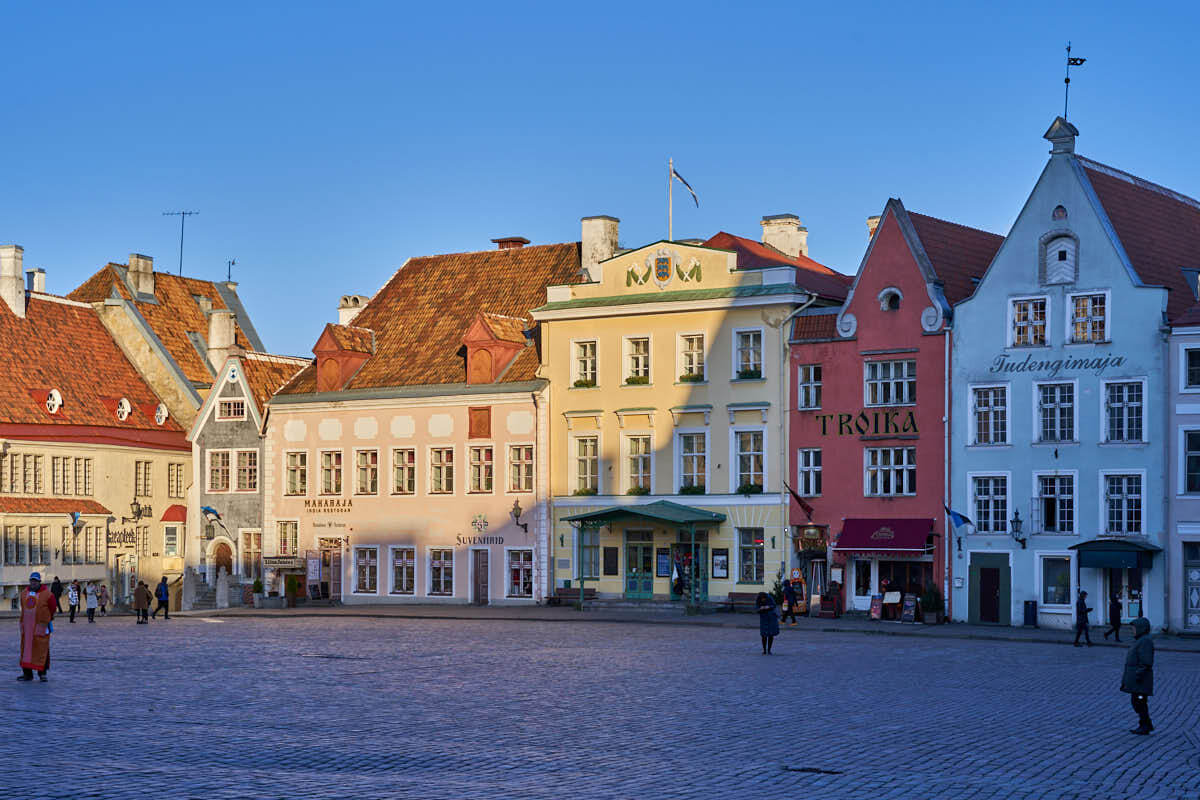
Toompea Hill
If you want to see Tallinn from above, you should head to Toompea Hill . Up here, you can find multiple viewing platforms that will offer fantastic views of the Old Town’s red roofs.
The Kohtuotsa lookout is the most famous platform, but it can get very busy. If you want to avoid the crowds, head to the Patkuli viewing platform instead, where you’ll run into fewer tourists. On clear days, you can even see the Baltic Sea from up here.
While up on Toompea Hill, make sure to check out the Alexander Nevsky Cathedral . The Russian Orthodox Cathedral is one of Tallinn’s most beautiful churches.

Tallinn’s City Walls
Some parts of the city wall that once surrounded all of Tallinn are still intact, and you have the opportunity to climb them in multiple places.
The first entrance is at Hellemann Tower . Here, you can walk on a piece of wall that is around 200 meters long. You have the chance to climb up into the watchtowers, too, to enjoy a very different viewpoint compared to Toompea Hill.
Up on Toompea Hill, you can find Kiek in de Kök Tower . Up here, you can also get on top of the city wall, and you can even enjoy a drink in the cafe on the wall. Your entrance ticket also gives you access to the tower. On each of the six floors, you can visit an exhibition about Tallinn, its city wall, and its history.

Additional recommendations
If you would like to learn more about the city, you can opt for this popular private walking tour with a local .
If you want to get the most of your stay and see more of Estonia, consider taking a half-day trip to Jägala Waterfall and Harju County . This area is east of Tallinn and you won’t be passing here when continuing your trip.
Where to Stay in Tallinn
For the best experience, stay in the old city center. There are many nice accommodations for all budgets here. We recommend Hestia Hotel Kentmanni.
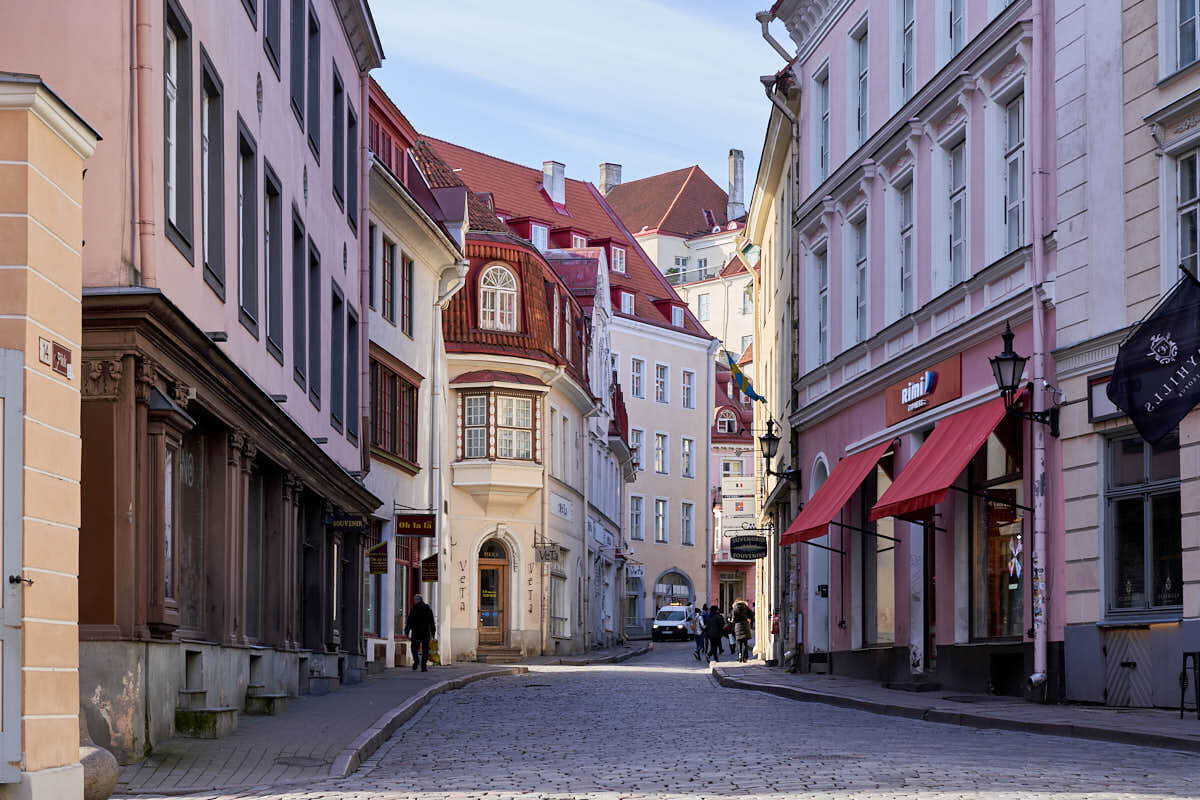
Days 3-4: Kuressaare
If you are planning a self-drive road trip through the Baltics, it’s best to rent a car from this day on . Here you can find some of the best deals for car rental in Tallinn .
After leaving the city, travel to Saaremaa, Estonia’s biggest island . The journey takes around 4 hours, including a half-hour ferry ride. If you are driving, make sure to arrive at the Virtsu ferry port at least 15 minutes before departure (if you take a bus, you don’t have to worry about that). Here you can find the ferry schedule and more practical info (you need a ferry from Virtsu to Kuivatsu).
Without a car: There are regular bus connections between Tallinn and Kuressaare, the biggest town on Saaremaa.
On Saaremaa Island, base yourself in Kuressaare , where you can find most of the island’s attractions. Make sure to stroll through the Old Town to discover the historic buildings and traditional architecture.
Afterwards, head to the Kuressaare Episcopal Castle . The castle dates back to the 14th century, and it takes at least an hour or two to explore the exhibitions inside. Be careful to follow the arrows, as it’s easy to get lost in the maze of corridors. During your visit, you have the chance of climbing the towers. From up there, you have a fantastic view of the star-shaped moat that surrounds the fortifications.
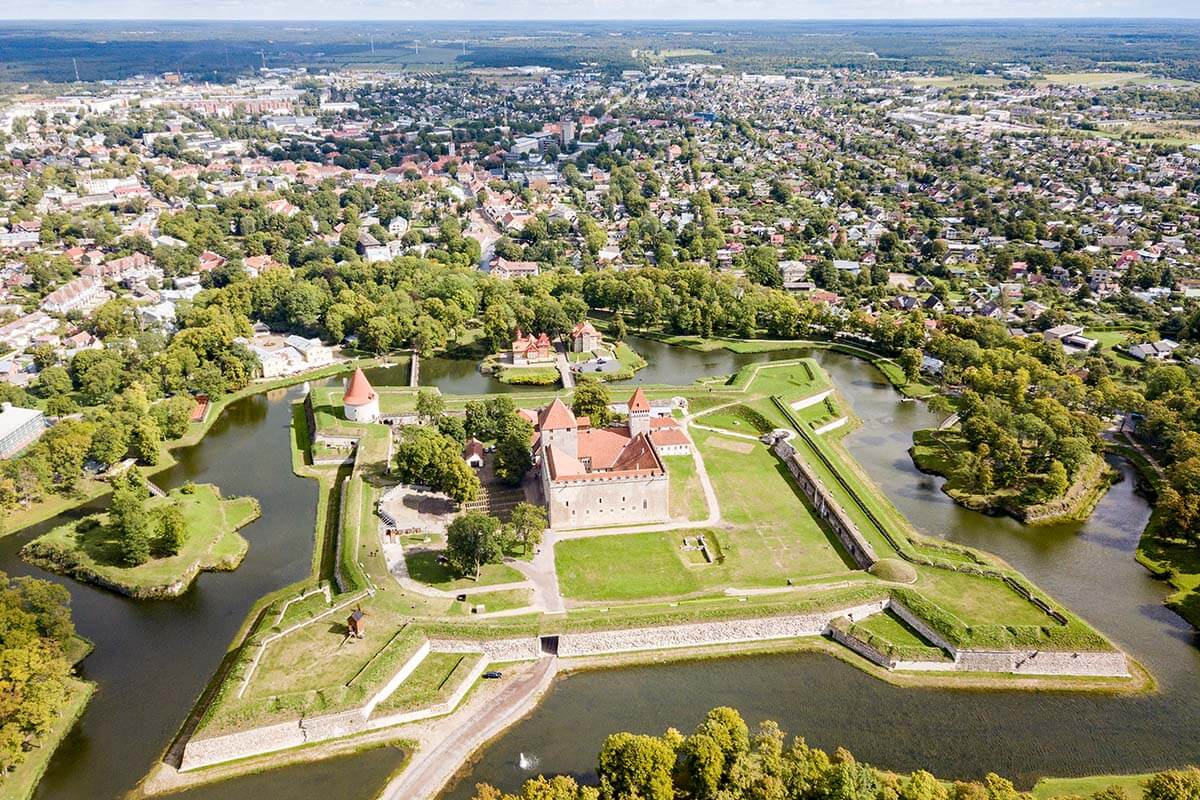
Another highlight of Saaremaa are the Kaali Meteor Craters , which you can visit in the village of Kaali. Scientists believe that the impact happened anywhere between 6,400 and 400 BCE, and it had the same explosive force as the Hiroshima bomb blast. All trees in a radius of six kilometers burned.
If you’d rather take it slow, head to the beach or find a spa to relax. Kuressaare is famous for its spas, and many Estonians come here to unwind for a few days. So why not join them and experience some traditional Estonian sauna culture!
Where to Stay in Kuressaare
There is a big choice of accommodations in Kuressaare, but since it’s a popular resort town, be sure to book well in advance, especially if traveling during summer or popular holidays. We recommend Johan Design & SPA Hotel , or – on a slightly higher budget Arensburg Boutique Hotel & Spa .
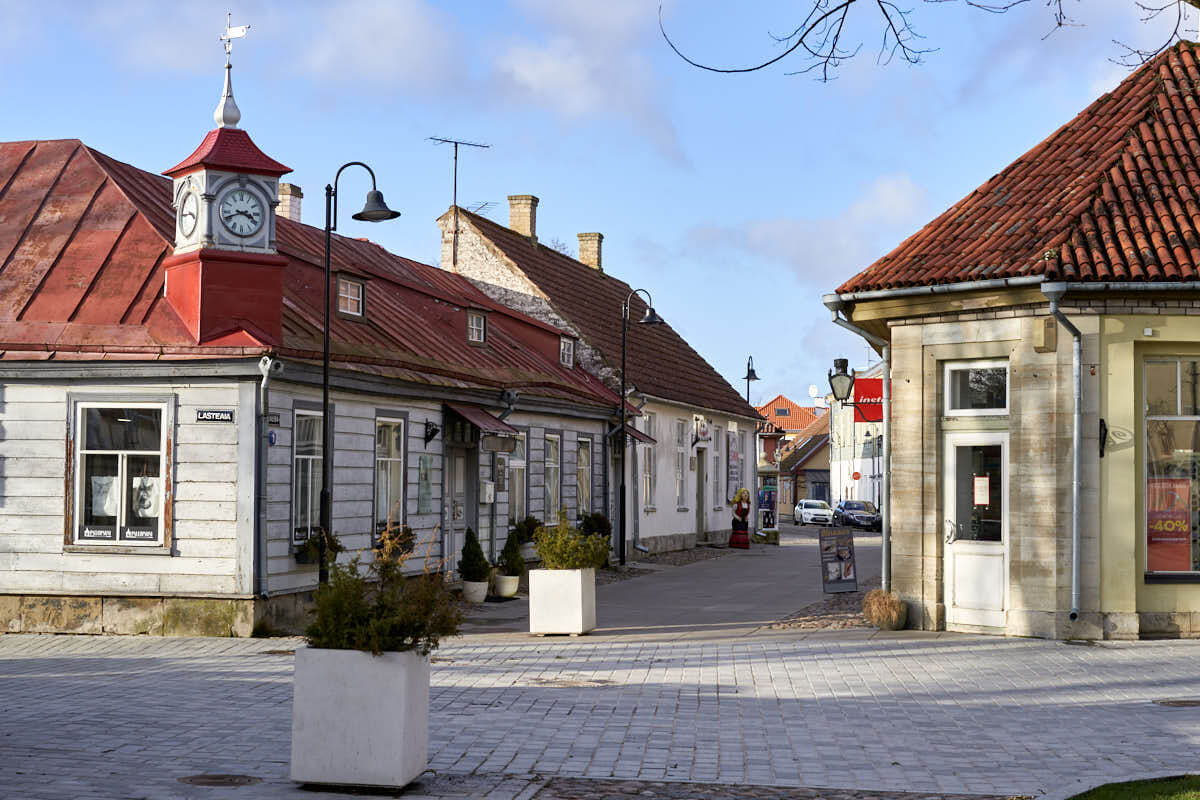
Day 5: Tartu
Today, you have a long drive ahead of you. It takes almost 6 hours to get to Tartu from Kuresaare by car and a little longer if you use public transport. Therefore, make sure to leave Kuressaare as early as possible, so you can enjoy the afternoon in Tartu.
Tartu is a cute town in Southern Estonia that is famous for its university. While here, check out the University Museums. On top of Toome Hill, you can find the University of Tartu Museum as well as the Old Observatory . Both are worth visiting, but if you only have time for one, head to the Observatory.
In the 19th century, Friedrich Georg Wilhelm von Struve measured the length of a meridian and eventually became the first person to accurately determine the shape and size of Earth. He conducted much of his work from this observatory, which is why it is now part of a UNESCO World Heritage Site. In the observatory, you can learn more about Struve’s work and see astronomical instruments from that time period.
While in Tartu, make sure to go for a walk through the Old Town. Town Hall Square is famous for its Kissing Students fountain, and you can discover many historic buildings around the square. Take some time to walk through the cobblestone streets and admire the architecture of Tartu. Be sure to check out the restored ruins of the Tartu Cathedral (Toomkirik). You can also climb the tower for some nice views over the city.
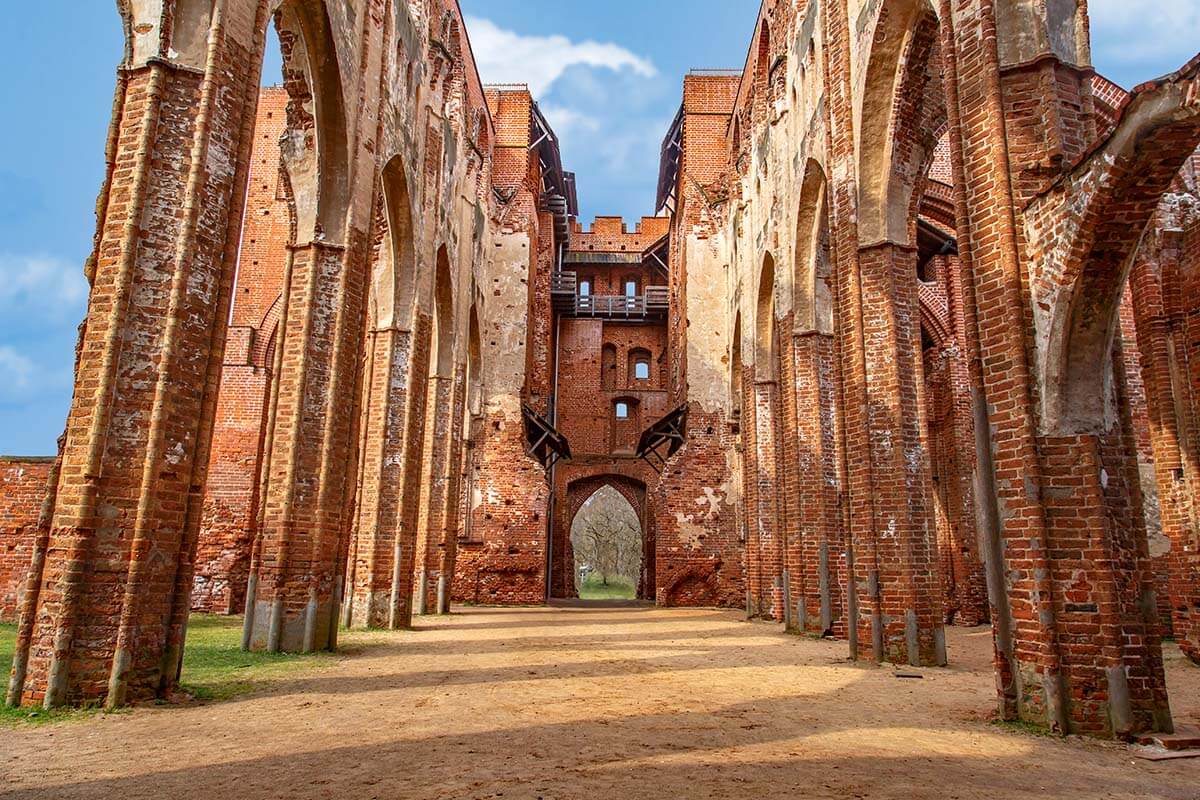
TIP: If you have a car and some time to spare, you could also visit Alatskivi Castle about 30-40 minutes drive north of Tartu. But if you only have half a day in the city, this will likely be too much.
Where to Stay in Tartu
Tartu is a popular tourist destination and you’ll have no trouble finding good accommodation at reasonable prices. We recommend Lydia Hotel , however, their parking is quite expensive since it’s in the heart of the city. A nice alternative (still very good location) if visiting by car is Art Hotel Pallas by Tartuhotels .
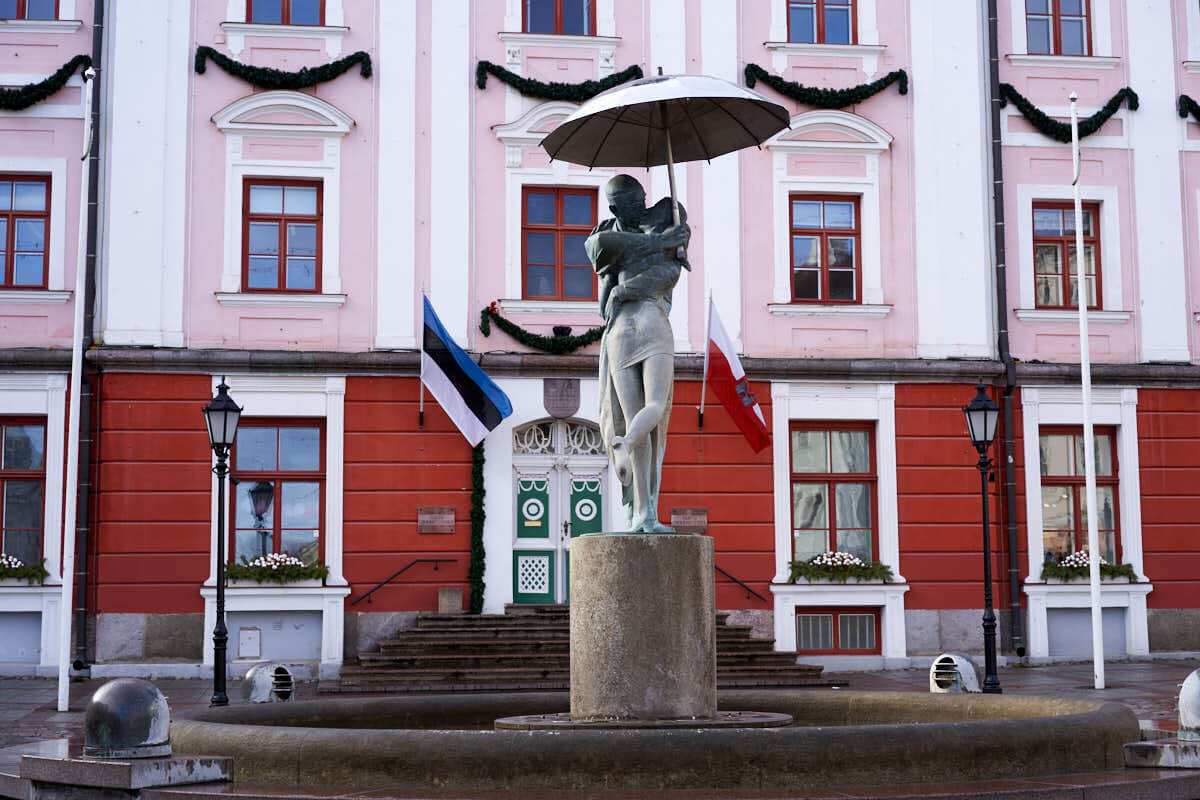
In the morning, drive from Tartu to Cesis in Latvia. The drive is about 2.5 hours and if you leave early enough, you have plenty of time to explore Cesis on this day.
Without a car: If you are traveling without a car, it’s easier to take a bus from Tartu to Riga, stay in Riga for 3 or 4 nights in total, and make day trips from there to Cesis and to Sigulda. There are also tours that visit these places from Riga in one day .
Cesis is a cute medieval town known for its two castles. You can get a combination ticket that includes entrance to both the Medieval Castle and the museum in the New Castle . As there are no electric lights in the old castle, you will need to carry a lantern. Exploring the ruins with a candle in your hand is an incredible experience you’ll remember for a long time.
After visiting both castles, take some time to stroll through Castle Park . At the edge of the park, you can see the remains of the oldest brewery in Northern Europe . Cesus Ale, the owner, has since moved the beer production to a more modern building on the outskirts of Cesis, but you can still see the old brewery.
Where to Stay
You could stay in Cesis for a night, but we suggest driving to Sigulda – the next town on this itinerary, about 30 minutes drive further. There is a bigger accommodation choice in Sigulda and much nicer hotels and you could stay here for two nights. We recommend Hotel Sigulda – it’s a nice hotel with great facilities, easy parking, and they have a very good restaurant.
Good to know: If you are really in a hurry, you could see just the main highlights of Cesis and Sigulda on the same day.
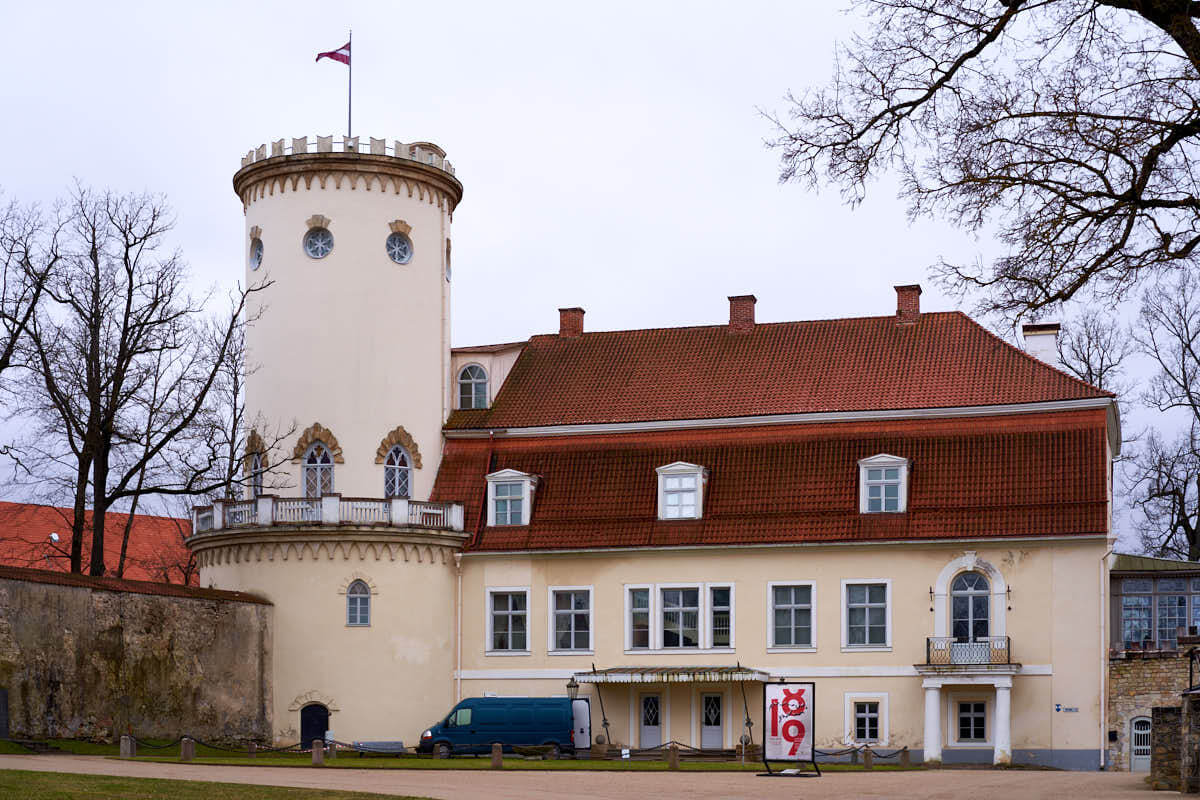
Day 7: Sigulda
Today, spend a day in one of Latvia’s most beautiful destinations – Sigulda in the Gauja National Park . Sigulda has multiple sights and attractions to keep you busy all day. You can find several castles in the area, which are all different and exciting to visit.
If you visit just one castle in Sigulda, make it Turaida Castle , a red-brick castle a few kilometers away from town. It houses a museum, and it’s part of the Turaida Museum Reserve, where you can also visit traditional houses from the area. This is the most-visited museum in Latvia!
Sigulda Medieval Castle (Castle Of The Livonian Order in Sigulda) is also nice to see. You can climb to the top of the Northern Tower from where you have a fantastic view of the valley. Just next to it, you can see the recently renovated Sigulda New Castle (Siguldas Jaunā pils) which used to serve as a city council and is now a museum.
Another place worth checking out is Krimulda Medieval Castle , which is the ruins of the 13th castle. Here, you’ll also find the beautiful viewpoint ‘Bellevue’, with great views of the bends of the Gauja River. Please note that this castle ruin is not to be confused with Krimulda Manor , which is a sort of rehabilitation center/ hotel.
TIP: One of the best ways to see the main castles is to go for a hike, from Sigulda Medieval Castle to Krimulda Castle (take the cable car to cross the valley) and then onwards to Turaida Castle. Don’t miss Gutmanis Cave , which you can find between Krimulda and Turaida. Locals have left graffiti here for centuries, and the oldest inscriptions date back to the 17th century.

If you want to take it easy, stay in the same hotel in Sigulda as the previous night. As already said, Hotel Sigulda is one of the best options here. Alternatively, you could continue to Riga already, which is about a 1-hour drive.
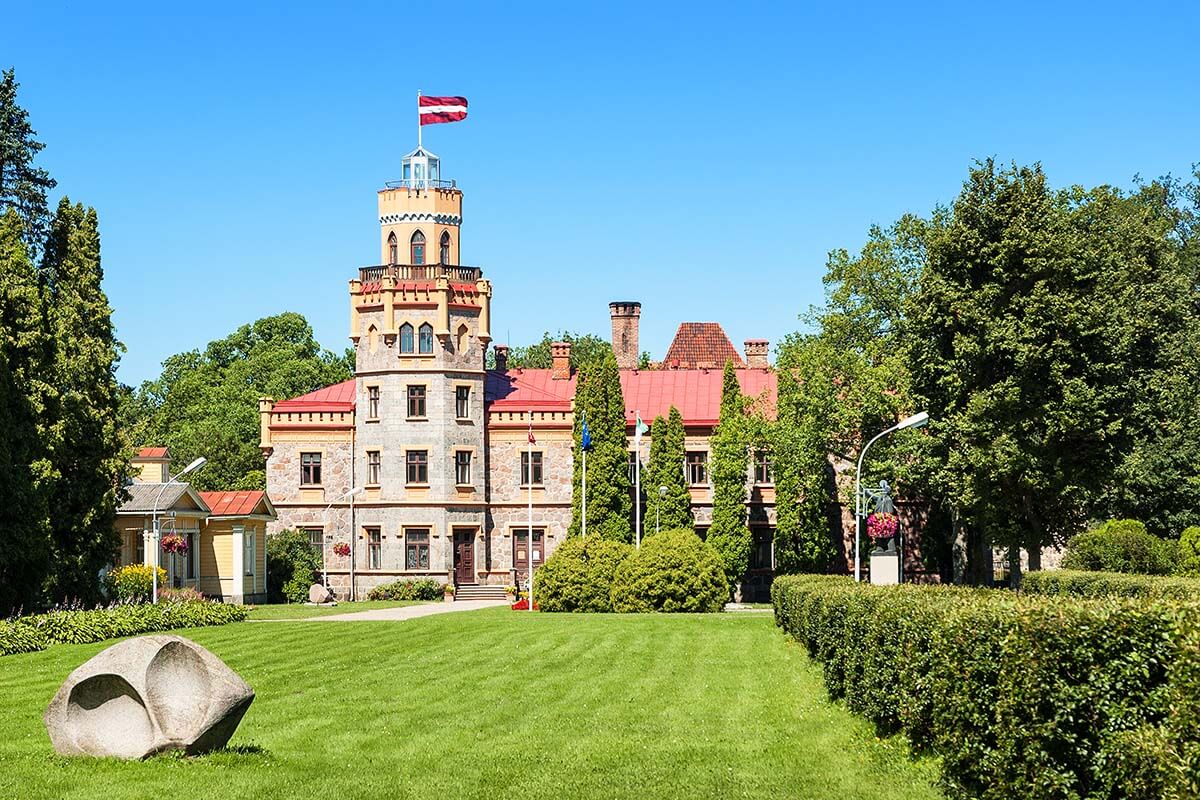
Days 8-9: Riga
In the morning, drive to Riga (about a 1-hour drive). With its location in the center of the country, Riga is also the perfect base for day trips to places like Cesis and Sigulda mentioned above. As already mentioned, if you are traveling without a car, it’s best to come here from Tartu (so on day 6 of this itinerary). In that case, stay in the city for 3-4 nights and make day trips either by public transport or by taking tours.
For the next two days, you have the chance of exploring Riga . Be sure not to miss the following highlights:
Riga Old Town
It’s easy to get lost in Riga’s cobblestone streets and to spend hours wandering through the Old Town . Along your way, you should pass the Three Brothers , a famous landmark in the city. All three houses belonged to men from the same family but date back to different time periods, so this is a fantastic place to see how architecture in Riga evolved over the centuries.
If you want to see the Old Town from above, stop by St Peter’s Church . The tower rises high above the houses, so from its top, you have a fantastic view of Riga.
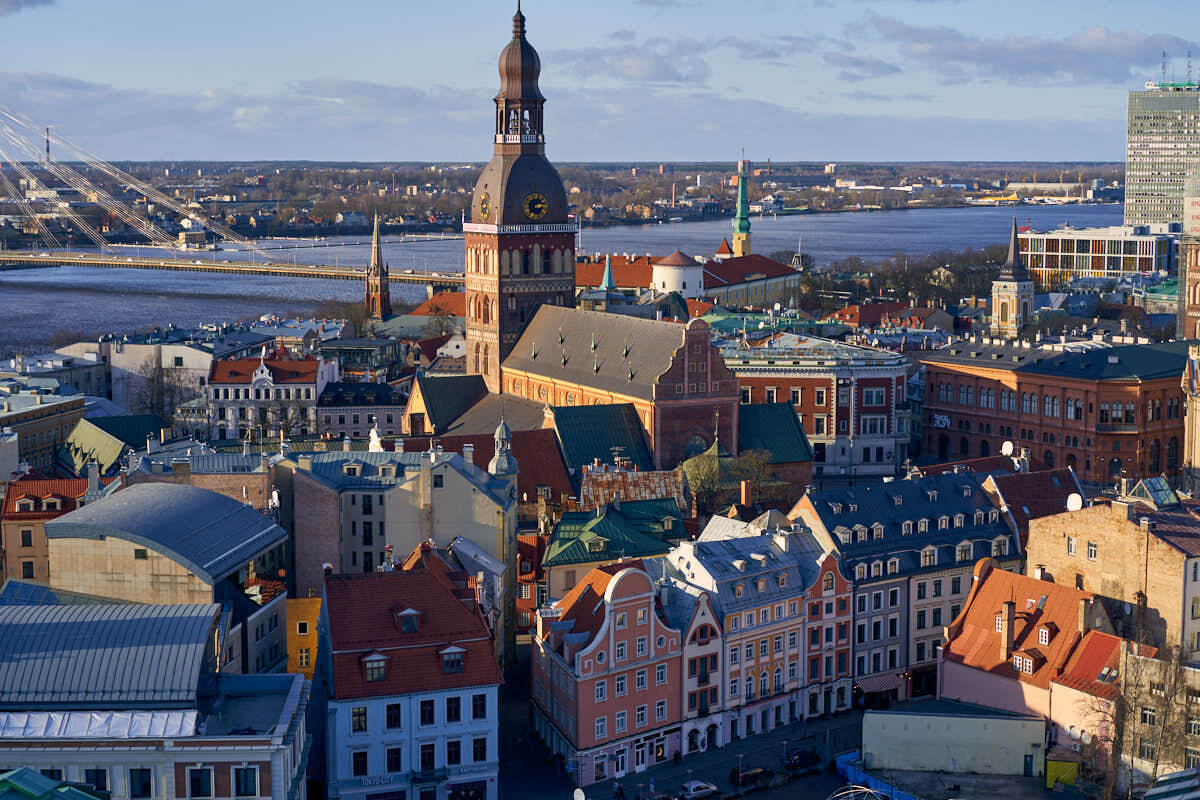
House of the Blackheads
If you only visit one museum in Riga, it should be the House of the Blackheads . You’ll notice the extensively decorated building while walking through the Old Town, and if you go inside, you can learn more about the Brotherhood of the Blackheads.
This guild was an organization of merchants and craftsmen, and in Latvia, they came together in the House of the Blackheads for meetings and social gatherings. They even erected the first Christmas Tree in Europe, though it is unclear if it was in Riga or Tallinn.
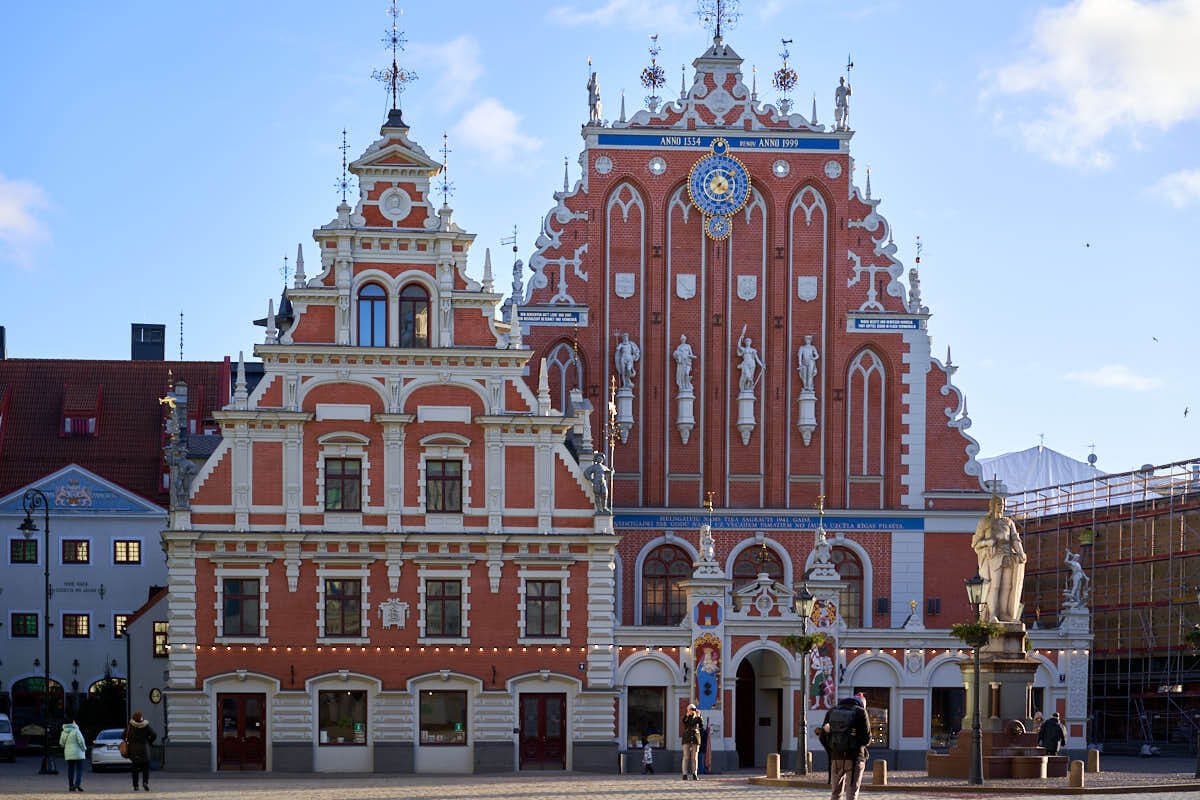
Ethnographic Open-Air Museum of Latvia
If you want to see a different side of Latvia, head to the Ethnographic Open-Air Museum of Latvia , which you can find on the outskirts of Riga. Buses 1, 28, or 19 can take you here if you don’t have a car, and you’ll have the chance of seeing more than 100 traditional buildings from all over the country.
The museum grouped these houses by region, and you’ll be surprised to learn how different building styles and rural life were, depending on the area. Don’t miss the giant windmill in the middle of the park, and make sure to go inside the houses. Some are open, and in summer, you might see weavers and blacksmiths perform their craft.
Practical information: The museum is open the whole year round, but opening days and times vary per season. Check their website for more information. You could easily spend an entire day here. As a minimum, count half a day.
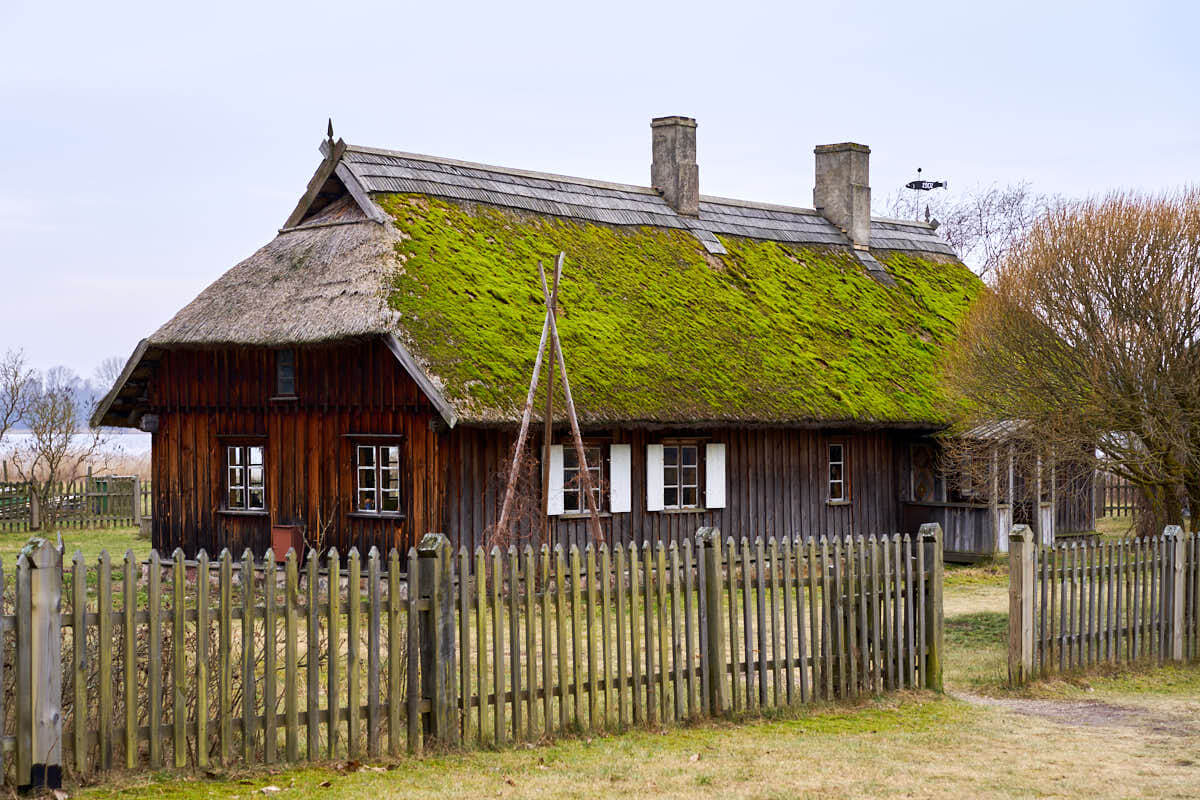
Where to Stay in Riga
Riga is a big city and there is no shortage of accommodations for all budgets . For the best experience, we recommend staying close to the city center. If you are traveling by car, be sure to check that the hotel has parking available! We recommend Wellton Riverside SPA Hotel .
Day 10: Hill of Crosses & Klaipėda, Lithuania
After leaving Riga, cross the border to Lithuania and head to Klaipeda. The drive is about 4 hours, and you can stop at the famous Hill of Crosses near Šiauliai on your way. It’s conveniently located for this itinerary, about 2 hours drive from Riga and about the same from Klaipeda, and a visit here doesn’t require more than half an hour. Still, be sure to leave Riga early so that you can explore Klaipeda in the afternoon.
Without a car: If you are traveling by bus, there are direct bus connections from Riga to Klaipeda, and the trip takes around 4-5 hours. It will be difficult to visit the Hill of Crosses on this day, but you may still be able to come here on your way from Klaipėda to Vilnius two days later. See day 12 of this itinerary for more details.
The Hill of Crosses is one of the most unique places in Lithuania, and you can see hundreds of thousands of crosses on this hill. The sight is almost unreal, and as you walk around, you will notice hundreds of small crosses wedged into the ground between the larger ones. Here you can find our complete guide to visiting the Hill of Crosses .
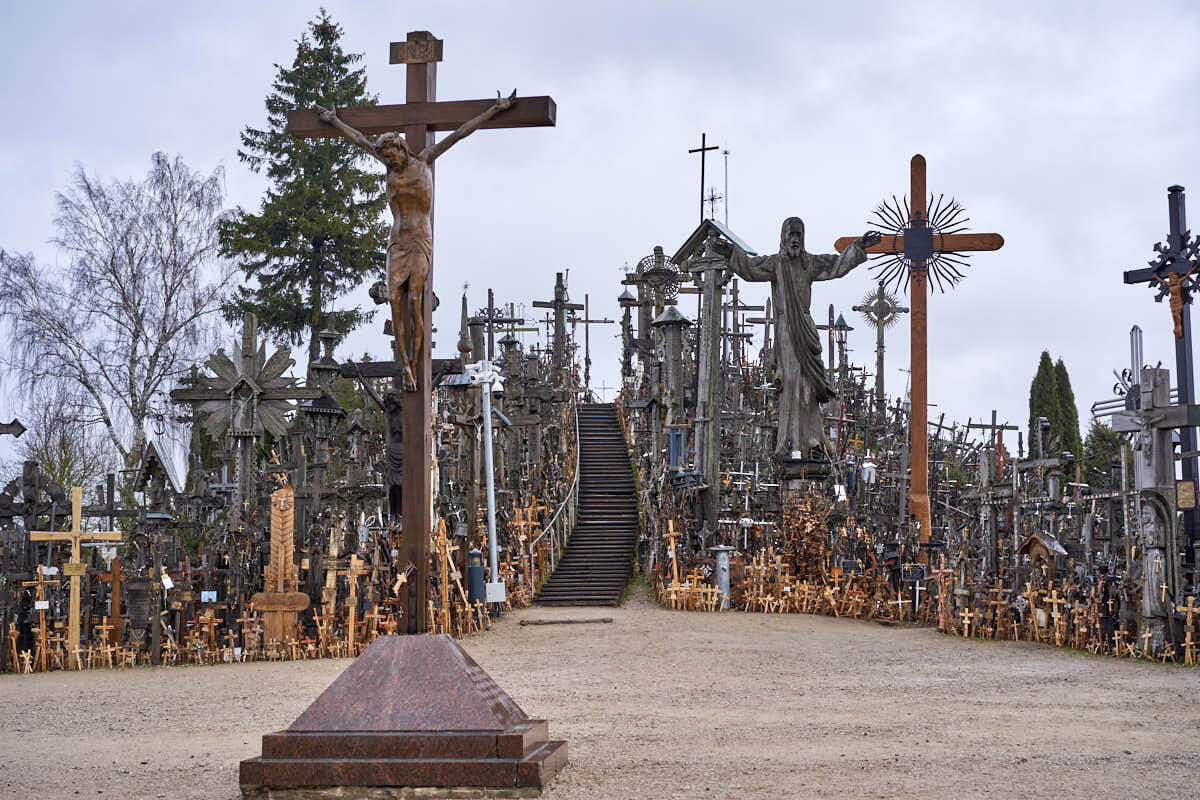
After spending time at the Hill of Crosses, continue to Klaipeda . You should arrive in the early afternoon, so still plenty of time to explore the city. While Klaipeda is Lithuania’s third-largest city, its historic center isn’t that big and you can see all the musts in half a day.
When you stroll through the Old Town of Klaipeda , you will notice that the architecture is different from anything else you’ve seen in the Baltics before, and some of it even looks German. That’s because the area once belonged to Germany, and you can still see the influence in architecture today.
Make sure to visit the History Museum of Lithuania Minor if you want to learn more about the history of the region. Don’t miss Theatre Square and be sure to check out the little hidden gem Fredericho Passage , where you can also find a restaurant serving local dishes.
Afterwards, head down to the riverside and to the harbor. The waterfront is one of the most pleasant areas to go for a walk in Klaipeda, especially in summer. During the warmer months, you can also rent kayaks or pedal boats to explore the city from a different angle.
Where to Stay in Klaipeda
Klaipeda is a harbor town and so it’s nice if you can stay close to the water. We recommend either Old Mill Hotel or Michaelson Boutique Hotel – both near each other and both excellent choices, in beautiful historic buildings. There is big public parking just nearby (the fees aren’t high) and the Old Town is within walking distance. Stay here for two nights.

Day 11: Day trip to the Curonian Spit
Today, take a day trip to one of the most beautiful places in the Baltics, the Curonian Spit . This 98km-long narrow piece of land perched between the Curonian Lagoon and the Baltic Sea is a National Park and a UNESCO World Heritage Site.
Curonian Spit is famous for its wandering sand dunes. The biggest dune that you can climb is Parnidis Dune, just next to Nida. From here, you can see the lagoon on one side and the Baltic Sea on the other side. It might not look like it, but Parnidis is a wandering dune that moves a few centimeters every year. Over the past centuries, these dunes have even swallowed a few villages!
During your day trip, visit the nicest dunes and villages of the region, and be sure to go for a walk around Nida, the main town of the Curonian Spit. Here, you can see many traditional fishermen’s houses, several museums, and a beautiful waterfront promenade. For more information, please see our complete guide to the best things to do in Nida .
But there’s much more to see in the beautiful Curonian Spit National Park than just its biggest town! So if you are self-driving, check out our complete guide to the Curonian Spit in Lithuania . It also has all the details on how to get there by car.
Without a car: Curonian Spit is best explored by car since there are many beautiful places scattered all over the region. If you don’t have a car, you can best opt for an organized tour – see this private day tour from Klaipeda. Alternatively, take a passenger ferry from the pier north of the city center (Senoji Perkėla), and once you reach the other side, you can take a bus to Nida. Nida is a nice day trip in itself, but you won’t be able to see the rest of the area if you take a bus.

Day 12: Kaunas
Today, leave Klaipeda and head to Lithuania’s second-largest city, Kaunas. If you are driving, it’s a long but easy drive on a highway and takes about 2.5-3 hours, leaving you plenty of time to explore Kaunas.
Without a car: If you are traveling through the Baltics by public transport, it’s easier to skip Kaunas and take a train from Klaipeda directly to Vilnius (with a stop in Šiauliai for a visit to the Hill of Crosses). In that case, take a train to Šiauliai and book a private tour to the Hill of Crosses (they can pick you up at the train station and the hours are flexible). Afterwards, continue your trip to Vilnius by train. If you decide to go to Kaunas from Klaipeda and skip the Hill of Crosses, then take a bus to Kaunas – it’s much faster than by train.
There is enough to see and do in Kaunas to fill a few days, so you could easily add a night here if you have more time. But you can get a taste of the city and see some of the main highlights in half a day as well.
The best way to explore Kaunas on a short visit is by taking a walk through its main pedestrian streets that run through the entire city center – from Kaunas Castle and Cathedral in the Old Town via Vilniaus Street and all the way to St. Michael the Archangel’s Church at the far eastern end of Laisvės alėja (Freedom Avenue). If you have the time to visit one museum, check out the M.K. Čiurlionis Museum of Art . If you are looking for something more unique that you won’t find anywhere else, then don’t miss the Devils’ Museum .
Where to Stay in Kaunas
We recommend staying in the city center, close to the above-mentioned pedestrian streets. That way, you can leave your car at the hotel and explore Kaunas on foot. Check out BEST WESTERN Santakos Hotel – it’s right in the middle between the Old Town and the popular pedestrian avenue Laisvės alėja and has free private parking. Here you can find more hotels and accommodations in Kaunas .
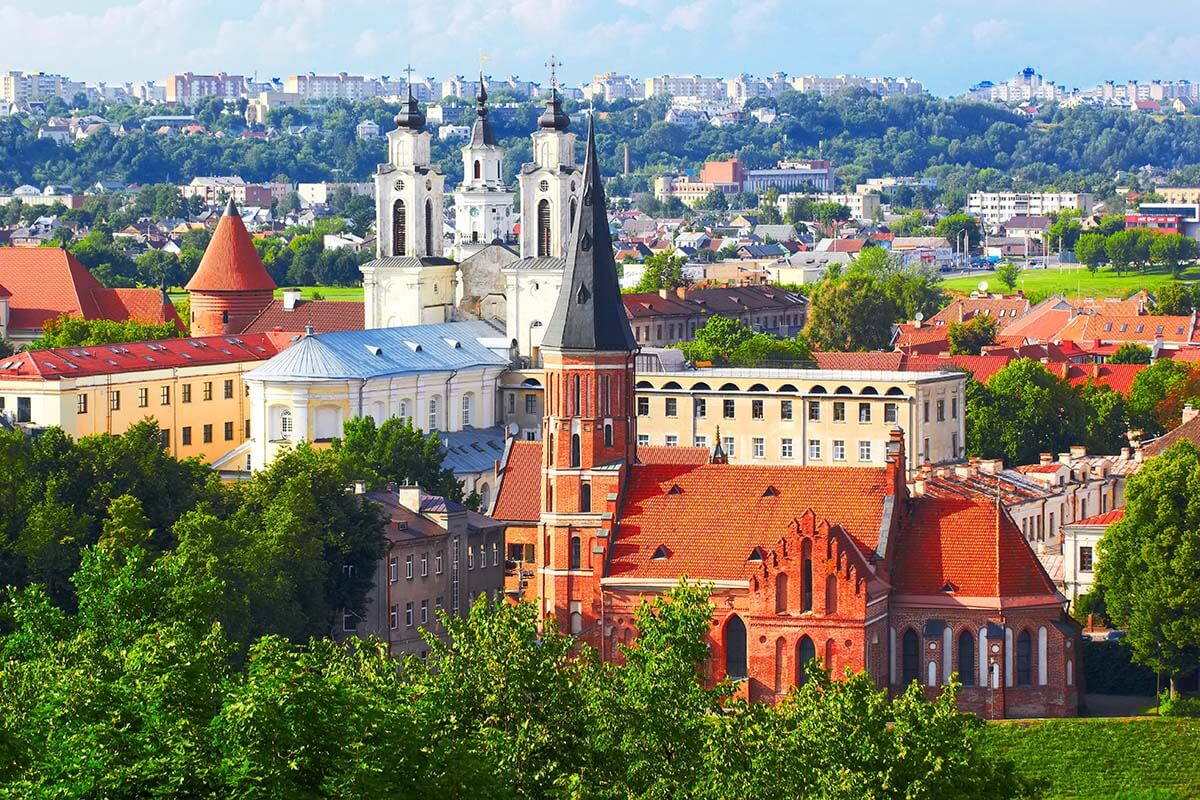
Day 13: Trakai & Vilnius
With two weeks in the Baltics, you’ll have to make some tough choices and skip some places, so if you want to take it easy, today, we recommend that you drive to Trakai from Kaunas, and then head to Vilnius in the late afternoon.
However, if you have an entire next day to explore Vilnius and so if you find a day in the city sufficient, then you may want to visit a few other nice places between Kaunas and Vilnius. In that case, you could also visit Pažaislis Monastery and Lithuanian Folk Museum in Rumšiškės .
Both these places are just a small detour from the Kaunas – Vilnius highway and both are well worth your time. But don’t try to squeeze too much in a day or you won’t have much time to actually enjoy it.
Without a car: Take a train from Kaunas to Vilnius and spend a day in Vilnius. You can take a half-day tour to Trakai the next day. In summer, you can also opt for a full-day tour from Vilnius that visits the castle and includes canoeing on the lakes around it.
Anyway, if you are going from Kaunas to Trakai, it’s an easy drive, mostly on the highway, and it takes a bit over 1 hour. From there, it’s just a short drive to Vilnius (but can take an hour if traffic is busy), so you can spend as much time in Trakai as you like. This town is famous for its island castle, one of the must-see places in Lithuania.
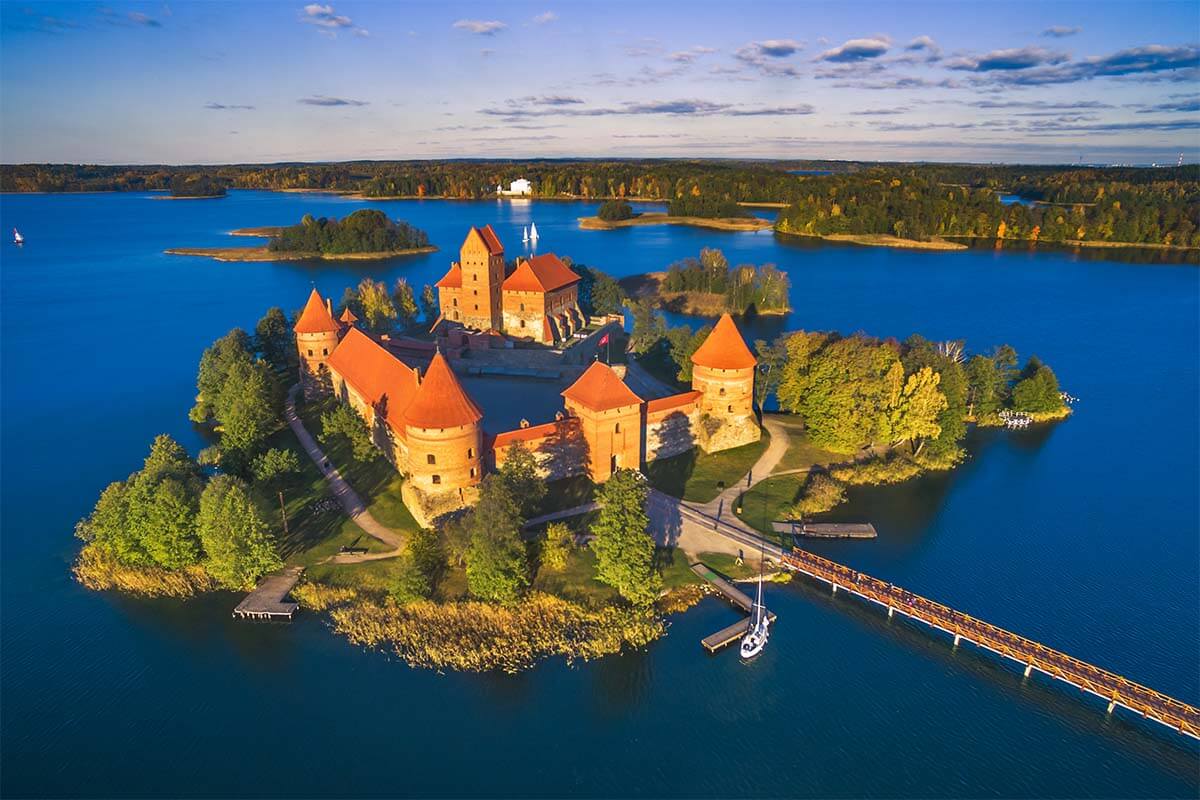
Trakai Castle dates back to the 14th century, a time when Trakai was an important town in Lithuania, and – for a few years – even the capital city. The Grand Duke of Lithuania often received important visitors here. The Castle was recently restored and is the most impressive castle you can visit in Lithuania these days. Its location on an island, surrounded by lakes and forests, makes it even more special. And don’t worry, you won’t have to swim to the island – there is a nice pedestrian bridge connecting it to town.
Inside the Castle, you can visit an exhibition about the history of Trakai, and you also have the chance to learn about the Karaites, a Turkic Jewish minority that lives in the area. Lithuanians call them Karaimai .
And speaking of them, when in Trakai, be sure to try Kybyns (LT: kibinai ), traditional Lithuanian food of the Karaite ethnic minority. You can find them at most of the local restaurants in Trakai. This is the best place in Lithuania to try this traditional meat-and-onion pastry. You may also find it in Vilnius and a few other places in the region, but they are nowhere as good as in Trakai.
If the weather is nice, take a boat tour on the lake to see the castle from a different perspective. Afterwards, head to Vilnius, walk around the Old Town, and end your day with some typical Lithuanian food.
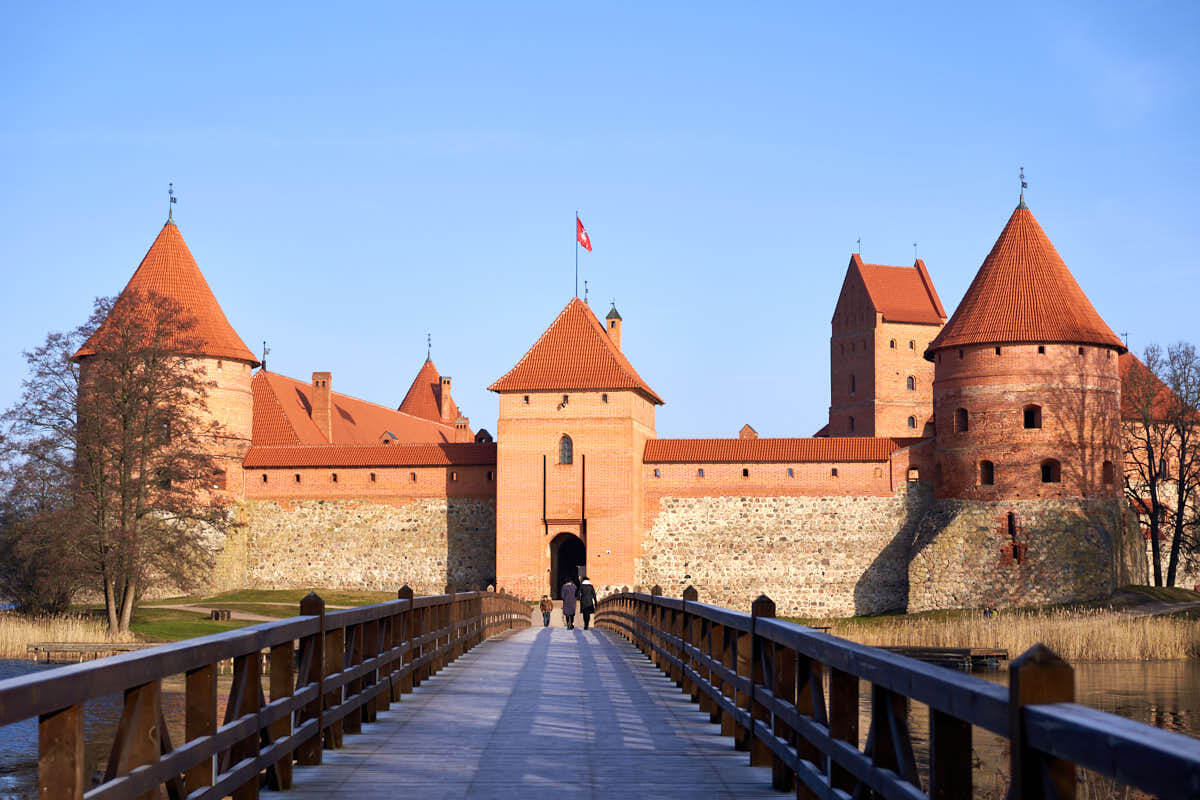
Day 14: Vilnius
Today, it’s time to explore Vilnius. Lithuania’s capital city has a lot to offer, but if you have just a day, be sure not to miss the following places:
Walk around the Old Town
Walking through the Old Town of Vilnius is the best way to get to know the city. It has such a great atmosphere and you’ll find something nice behind every corner.
Don’t miss the Town Hall Square ( Rotušės aikštė ), Vilnius University , Presidential Palace , and one of the must-see streets in Vilnius – Castle Street ( Pilies gatvė ). Also worth visiting is Literature Street ( Literatų gatvė ). This picturesque street is lined with plaques detailing names of authors who have either lived in Vilnius or written about the city.
Another must-see is the Gate of Dawn , a city gate that dates back to 1522 and was once part of the city wall. Inside, you’ll find a religious artifact, an icon of the Blessed Virgin Mary Mother of Mercy, which still attracts pilgrims today.
Stiklių Street , in the vicinity of the Restaurant Lokys, is also worth passing by. They usually have some nice decorations hanging above the street and it’s always worth seeing what kind of creations they come up with next. And the restaurant is very good too!
There are also lots of beautiful churches in the Old Town of Vilnius. They say there are 28 churches just in the Old Town… If you visit just one of them, don’t miss St. Anne’s Church – it’s a stunning example of Gothic architecture.

Cathedral Square, Gediminas Castle & Neris River
Cathedral Square is home to Vilnius Cathedral. With its many columns and a white Bell Tower , this building is one of the city’s most famous landmarks.
Just next to it, you’ll find one of the best museums in Vilnius – the Palace of the Grand Dukes of Lithuania . If you have at least an hour to spare, definitely check it out. The Virtual Reality 3D experience is so well done and gives you a good introduction to the history of Vilnius.
Behind the Cathedral, you’ll see a hill with a tower on top. Head up there to discover Gediminas Castle Tower and to enjoy the fantastic view of Vilnius. You can walk up the hill or take a funicular which can be found on the other side of the hill, on the riverside. And once you are here, be sure to take a walk along the river.
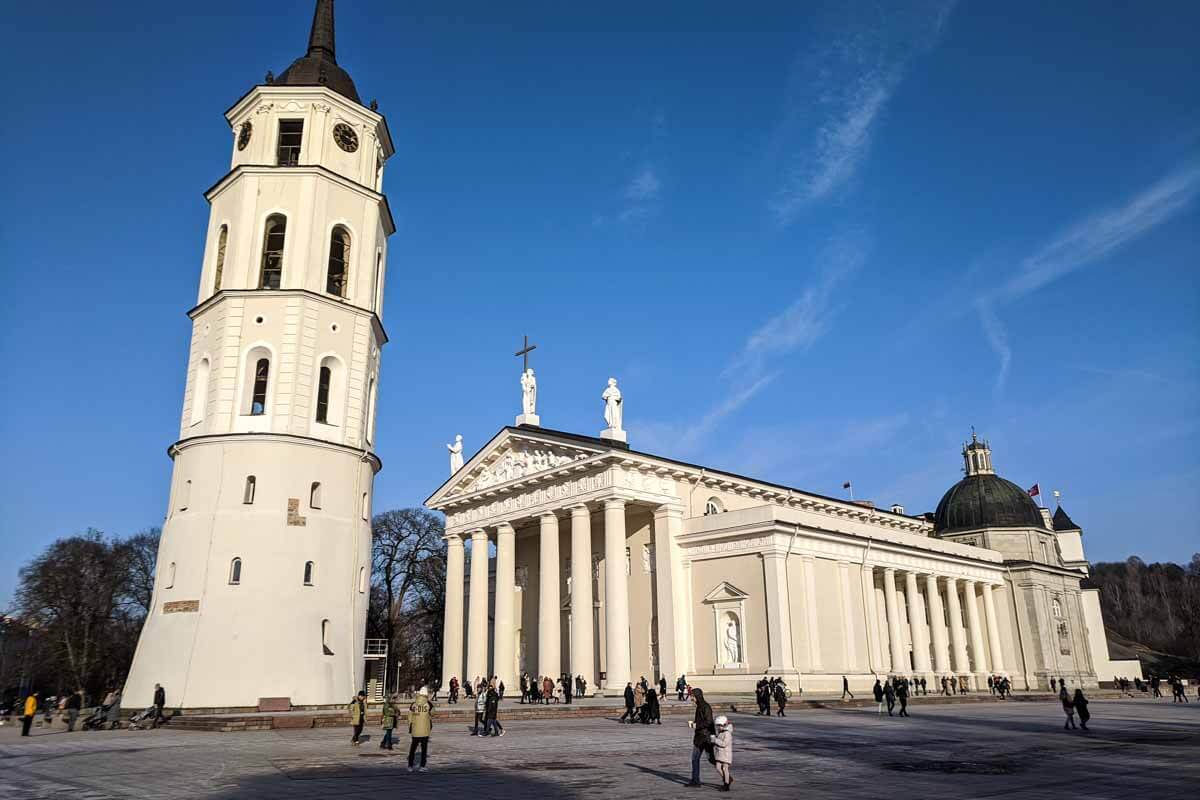
Gediminas Avenue & Museum of Occupations and Freedom Fights
Gediminas Avenue (Gedimino Prospektas) is one the main streets of Vilnius. This is the place where you’ll find many shops, restaurants, theaters, etc.
Be sure to walk at least a part of this street, up to Lukiškės Square, the largest square in Vilnius. Here, you’ll also find the former KGB building, now the Museum of Occupations and Freedom Fights .
It’s a very interesting and eye-opening place where you can learn more about the way the Soviets treated innocent people. It will surely help you to better understand the not-so-distant history of Lithuania and the other Baltic States.
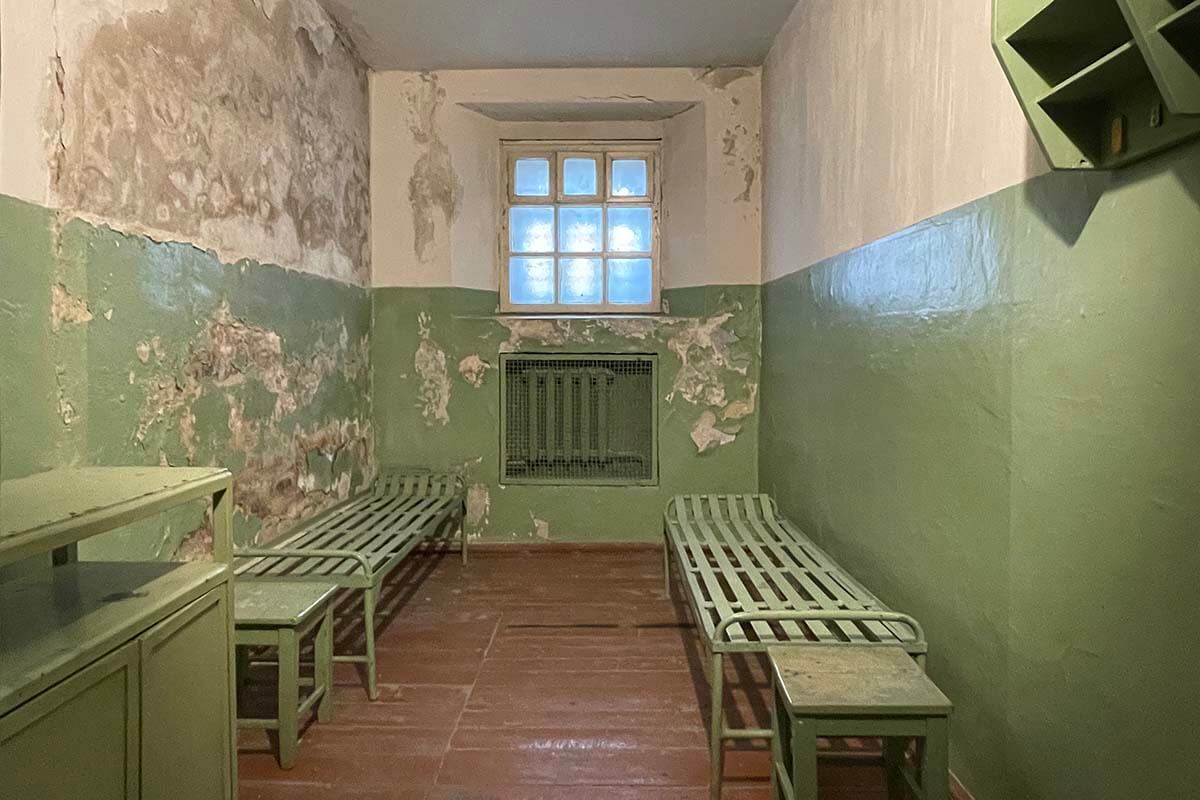
Republic of Užupis
One of the most curious neighborhoods to visit in Vilnius is Užupis (literal translation “behind the river”).
This “republic” declared its independence in 1998 as a joke by local artists. Uzupis has its own parliament, border post (bring your passport if you would like a stamp), and even a constitution. Check out the Angel of Uzupis, a statue that represents the freedom of art and expression.
While nobody recognizes the independence of Uzupis, the neighborhood is a great place to discover art galleries and cafes. As you walk around, you can also find impressive street art, so keep your eyes open and don’t forget to glance into the small alleys and sidestreets.

Where to Stay in Vilnius
There are lots of nice hotels and accommodations in Vilnius. Many people like to stay in the Old Town and if you already returned your rental car, it can be a good option. In any case, be sure to look for a hotel that has parking (or public parking nearby).
Radisson Blu Hotel Lietuva is a nice modern hotel by the river, on the other side from the Old Town, but you can easily get everywhere via a pedestrian bridge from here. It will also be easier to park here.
If you rather stay in the Old Town, take a look at NARUTIS Hotel . It’s a great choice in the heart of the city and within short walking distance to everything. They also have free parking and an indoor pool. And, of course, there are many other options all over the city center, for all budgets.
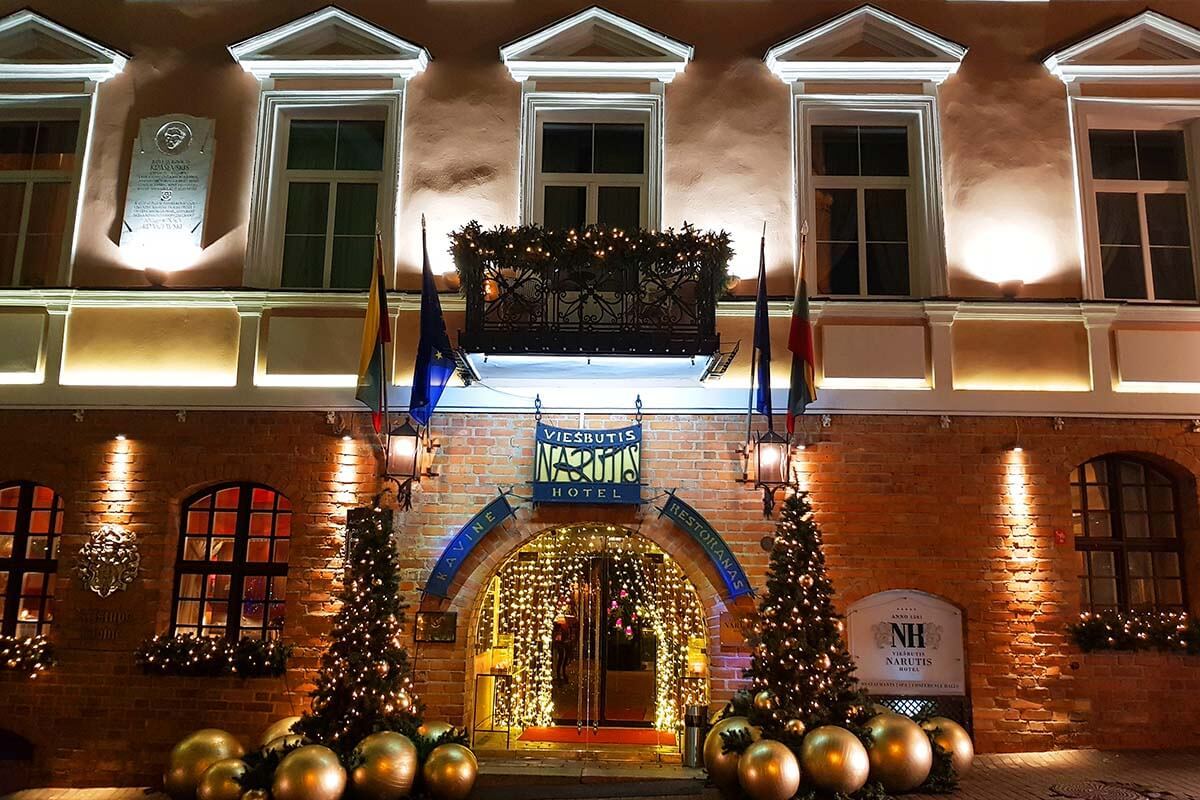
If you have a few more days in the Baltics…
Even though this itinerary is already packed with things to do in the Baltics, you can easily spend more time in the region – there are so many other nice places to see. If you have a few extra days, you can distribute them between the countries however you wish, and here are some additional suggestions:
- In Estonia, consider visiting Pärnu, a relaxed beachside town, or head to Lahemaa National Park to go hiking for a day.
- In Latvia, you could visit the seaside in Jurmala or go on a day trip to Rundale Palace.
- In Lithuania, you could stay longer on the Curonian Spit, add a day in Kaunas, and also an extra day in Vilnius.
Map of this Baltic States Itinerary
To help you plan your trip to the Baltics, we created a map indicating all the main places that we recommend visiting in Estonia, Latvia, and Lithuania. This map is just an overview and doesn’t contain all the details, but it will give you a better idea of where everything is and how you could adjust this itinerary if you have less or more time.
You can click on the picture below and see this map on Google Maps. The entire Baltic States road trip – as it is suggested in our itinerary and shown on the map – is about 1500 km over 14 days.

Some Practical Info for Planning Your Trip
Best time to visit.
The best time to visit the Baltics is in the summer. The weather is generally very nice, the days are long, and there are lots of events and celebrations. As a downside, it’s much busier in June, July, and August than the rest of the year and accommodation prices at the popular vacation destinations soar. For the best experience and fewer crowds, plan a trip to the Baltic states in May or in September.
The Baltics in the winter
If you want to avoid the crowds altogether, you can also travel to the Baltics in autumn or in winter. In some of the stops on this itinerary, you will barely see other travelers at all, and with a bit of luck, you’ll experience snow. However, if you are planning a self-drive Baltics road trip, don’t visit in winter if you are not used to driving in winter conditions.
If you are planning a trip in winter, then consider visiting in December. Vilnius, Riga, and Tallinn host wonderful Christmas markets! So if you visit in the winter, you’ll enjoy a great Christmas atmosphere and much fewer people than at the most famous Christmas markets in Western Europe… Here you can read more about the Christmas Market in Vilnius, Lithuania – they have the most original Christmas Trees every year.
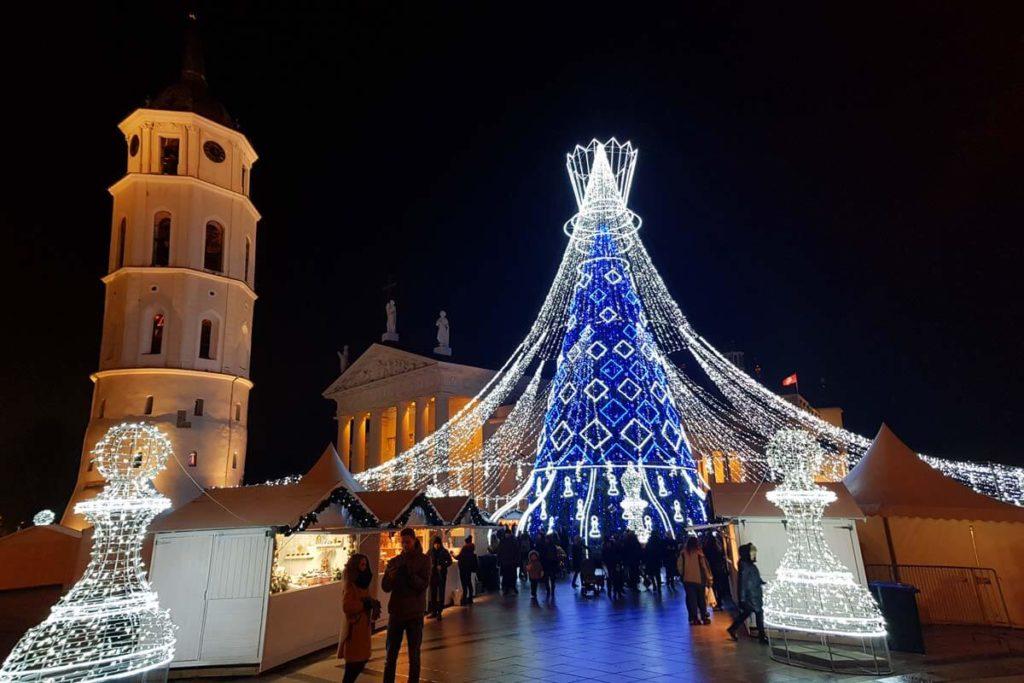
Renting a car vs. public transport
You can easily visit the Baltic states by car. The roads and infrastructure are good and comparable to any other EU country. Traffic can get very busy around the biggest cities and at the seaside on summer weekends, but apart from that, driving in the Baltics is quite relaxed. Just be sure to follow speed limits and other traffic rules since police controls are frequent.
If you prefer not to drive, you can also visit all three Baltic countries by public transport. There are good bus connections between all major cities, so if you are mostly interested in visiting the main towns, you can easily do that without a car as well. That being said, if you want to explore the Baltics a bit deeper, it’s definitely better to rent a car.
Is it safe to travel to the Baltics?
Yes, traveling in the Baltics is safe and very comparable to the rest of the EU. In fact, you’ll likely feel safer walking around Vilnius or Riga at night than you would in London, Paris, or Brussels… Just as everywhere, use common sense, but in general, there’s nothing to worry about. If you are traveling to the Baltics in winter, you may encounter ice on the roads and on the pavements, so be careful.
Which is the best Baltic state to visit?
It’s hard to compare three countries of the Baltics and say that one or the other is better. They are all different and each is worth a visit, and if you follow this itinerary, you can get a taste of all three countries and decide for yourself. That being said, if you have the time to visit just one country, then go to Lithuania. It has everything – nice towns with a great atmosphere, interesting museums and lots of cultural events, stunning nature, friendly people, and delicious Lithuanian food . And yes, I’m biased since Lithuania is my home country, but I haven’t met one single person who didn’t love it!
READ ALSO: Best places to see in Lithuania
So, this is our suggested Baltics itinerary for two weeks. We hope that this inspired you to visit this beautiful and still very little-discovered region in Eastern Europe. Have a great trip!
If you found this post helpful, don’t forget to bookmark it and share it with your friends. Are you on Pinterest? Pin these images!
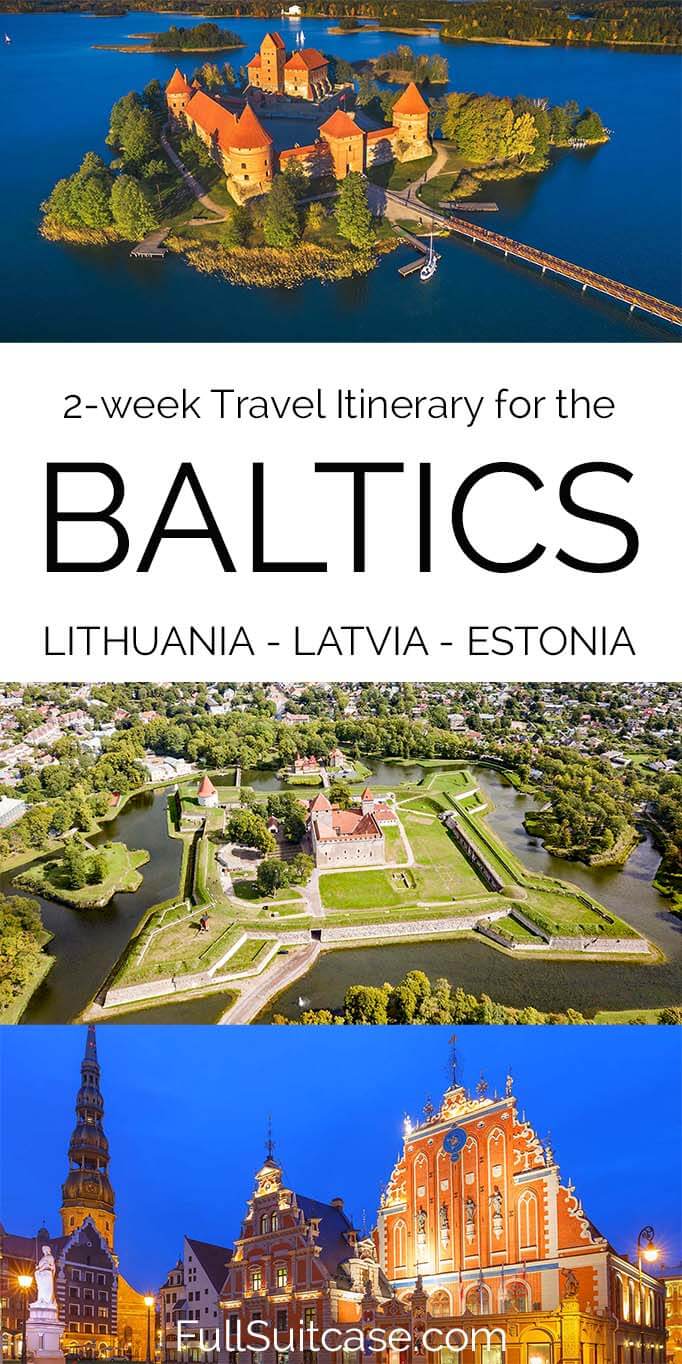
Image credits: personal collection, Toptravelsights.com , raigvi/Shutterstock.com, Wide Wings/Shutterstock.com, Chamille White/Shutterstock.com, and Depositphotos.com.
This site uses Akismet to reduce spam. Learn how your comment data is processed .
Friday 23rd of June 2023
My friend and I are planning to visit the three Baltic states in September. around 15 days. Your guidance is the best. I think we will follow your suggestions. We plan to hire a car. Any helpful hints?
Saturday 24th of June 2023
Hi Philip, that's a very general question ;). You can find all the helpful hints in our article already. Just one thing - book your car asap and I also recommend booking accommodations in advance as well. Have a great trip!
Wednesday 1st of March 2023
Thanks for the invaluable guidance. Is March a good time to visit? Will sights and restaurants be opened? Sometimes it is good to have more people around to soak up the culture of the place.
Hi, you can really visit the Baltics at any time of the year. And yes, everything will be open as usual, except in the smaller seaside villages. In the bigger cities and towns, it's always lively, and everything is open. There are also lots of concerts, theater performances, etc. in the winter months. As for the weather in March, it's more difficult to predict. It can still be quite wintery (especially in the north), or you may get lucky and it will be warmer and a bit spring-like already. Be sure to check the weather forecast a few days before you go. In general, at this time of the year, you have to be prepared for winter conditions. Have a great trip!
Thursday 5th of January 2023
Looking to do a similar trip! Wouldn't a one way car rental be pretty astronomical? I think we need to find a way to make it a loop if we are gonna rent a car. :-/
Saturday 7th of January 2023
Hi, it really depends and a one-way rental is not always more expensive. It's quite common for travelers to start in one Baltic State and end in the other, so many car rental companies are offering quite normal prices for one-way rentals. But you'd have to check what cars/prices are available for your travel dates and decide based on that. We personally always use this website for our car hire. We're just back from a trip where we rented a car with a drop-off a few thousand kilometers away and they didn't even charge us any one-way fees. So you never know until you check. Good luck!
Monday 13th of June 2022
What an amazing trip plan!! I was planning a trip just like this but was a bit apprehensive given the war in Ukraine and proximity of Baltics to Russia. I see this was updated in May 2022. Do you know if there are any complications of border crossings, etc. due to the war. Looks TRULY amazing!
Tuesday 14th of June 2022
@Jurga, yes thank you!! Just booked my flight and will visit both. I plan on following this itinerary so many thanks!!
Hi Kari, my entire family lives in Lithuania and we are also visiting there soon, and I see no reason not to travel to the Baltics at the moment. Life is as usual everywhere there and if you just stay in Lithuania, Latvia, and Estonia, I don't expect any issues. These are all EU countries so there are no border controls in between them. And they are also all NATO countries, so let's hope that's sufficient to keep things stable. For the rest, nobody can ever guarantee anything, but that is no different in the Baltics than anywhere else really. Hope this helps.

The Perfect Baltics Travel Itinerary: Lithuania, Latvia, Estonia, and Finland
10 Comments
- Last Updated On: November 21, 2023
The Baltics were always high on my list of places to visit in Europe. It’s a lesser traveled (although rapidly changing), cheaper, and equally as beautiful area of Northern Europe. The history of this region is very unique As the Baltic countries are small and neighbor each other, I always wanted to do the countries at the same time.
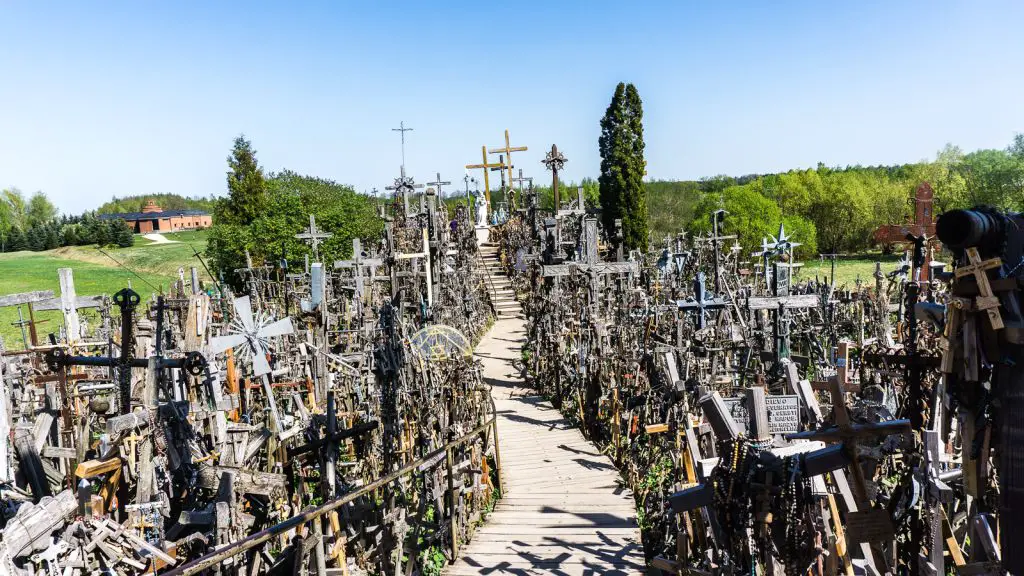
The Baltics comprises three countries: Lithuania, Latvia, and Estonia. Finland is part of Scandinavia but for the purposes of this itinerary, it is part of the Baltics as there is an easy ferry connection between Tallinn and Helsinki so I couldn’t pass up adding this to my trip! This itinerary is for anyone that has roughly 8-10 days to visit this beautiful area of Europe.
Essentially, I allocated 2-3 nights per city which is enough in my opinion. If you have less days, this itinerary is also possible depending on which city you want to spend less time in. I also give ideas for those that have more time as there are so many charming little cities that are well worth the stop as well.
Where I went in the Baltics
I visited the Baltics for just over a week. As it is Europe, most of the sightseeing is done in the cities (with a few things to see in between). I went in end of April, beginning of May which was great because I got quite lucky with the weather. It was record temperatures in Riga and I could wear shorts for most of my trip. However, as this area is not know for its warm weather, expect volatile weather pretty much all throughout the year.
The summer months of course are most ideal as you get super long days and warmer weather but then you also have far more tourists. Even when visiting in April/May, the sun would set after 9pm and the temperature was a very comfortable 20-25 degrees while I was there.
In total, this itinerary is for anyone that has 7-10 days. Of course this itinerary can be shortened or lengthened depending on your schedule. I visited the following areas on this itinerary
- Vilnius, Lithuania
- Kaunas, Lithuania
- Hill of Crosses, Lithuania
- Riga, Latvia
- Tallinn, Estonia
- Helsinki, Finland
If these places ring a bell and sound like the places you want to visit, this is the perfect itinerary for you! Also, the Baltics can easily be combined with other countries like Poland to the south , Belarus, or Russia where you can easily combine St. Petersburg and Moscow. Of course, make sure you have your Russian visa before visiting.
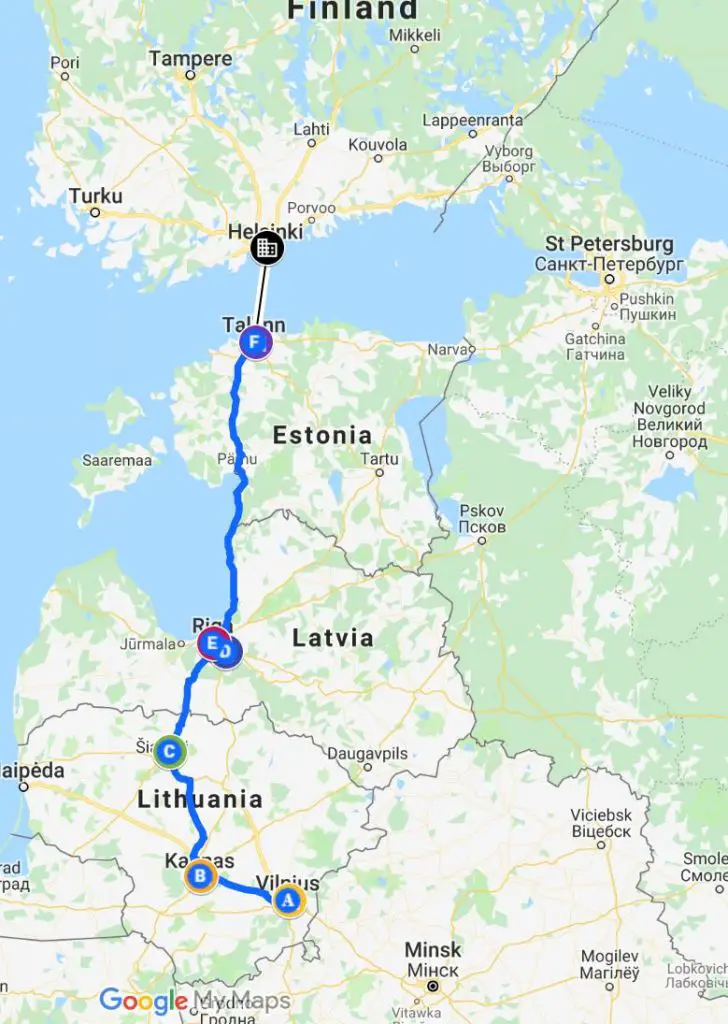
Getting around the Baltics
The Baltics are small countries and getting around the countries is easy. There are numerous ways to get from one capital to the other and almost all these options are quite affordable. The Baltics are cheaper than Western Europe as they were under Soviet occupation less than 30 years ago, but it is not as cheap as say the Balkans .
Most people that I met got around the Balkans with Bus. There is solid bus service that connects Vilnius to Riga to Estonia and vice versa. There are also numerous bus companies that you can choose from but I mainly went with LuxExpress as they have a good website online. I’d definitely recommend booking your bus tickets a month in advance if possible. I checked bus tickets for same day departure at the Riga bus station and they were going for €20-30 whereas buying them in advance was under €10 euros.
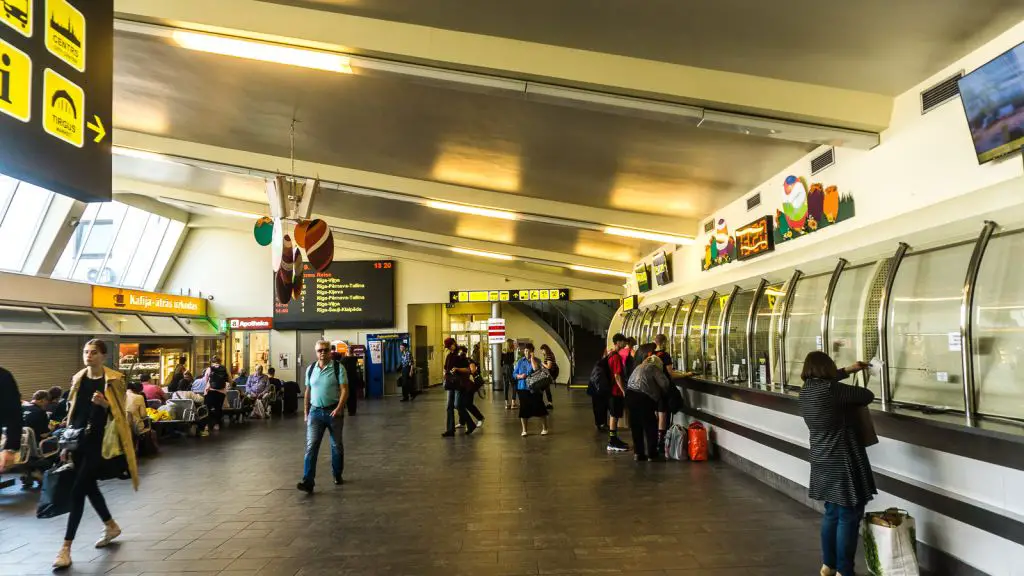
The bus ride is 4-5 hours between Lithuania and Riga, as well as to Tallinn.
Flying with AirBaltic
Air Baltic is the national airline of Latvia (and de factor airlines of the other Baltic countries). They have multiple daily flights between Vilnius, Riga, Tallinn, Helsinki in all different combinations. Prices are also very cheap for under €50 one way. This is especially useful if you’re flying into Riga for example, going by land to Vilnius, and then you can fly AirBaltic from Vilnius to Tallinn and not have to take a 8-9 hour bus ride.
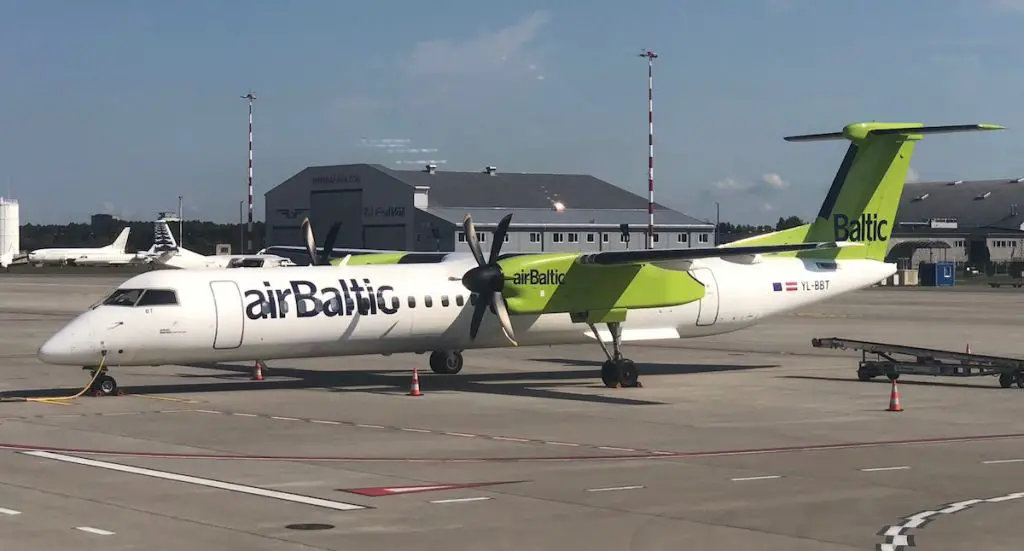
Getting around within the cities
All of the cities are very small and if you’re in the Old Town, you won’t need anything besides walking. However, if you need to go to the airport or some further away destination like the Marine Museum in Tallinn, then I can recommend using the ride share apps. Sure the public transport is fantastic in these cities but if you’re multiple people, ride sharing apps will be even cheaper than taking the metro. I’m a huge fan of ride sharing apps in foreign countries because it makes sure you don’t get ripped off.
Bolt (formerly Taxify) is a startup out of Tallinn that has a major presence in the Baltics. I used it for all my airport transfers and a few other rides and it is super cheap. From Vilnius to the airport, it was 20 minutes and only €4-6. Whatever you do, do not take the official taxi services because it is many times more expensive. For example, the metered taxis in Riga charged almost €30 for a transfer to the city when Bolt was €6!
There is also Uber in the Baltics, but not in Riga (yet).
Airbnb accommodations
Of course there are plenty of very cheap hostels that you can stay in, but if you are two or more people and want some privacy, the Airbnb options in the Baltics is fantastic. We stayed in huge and centrally located penthouse style accommodations in Vilnius and Riga for €100/night or so.
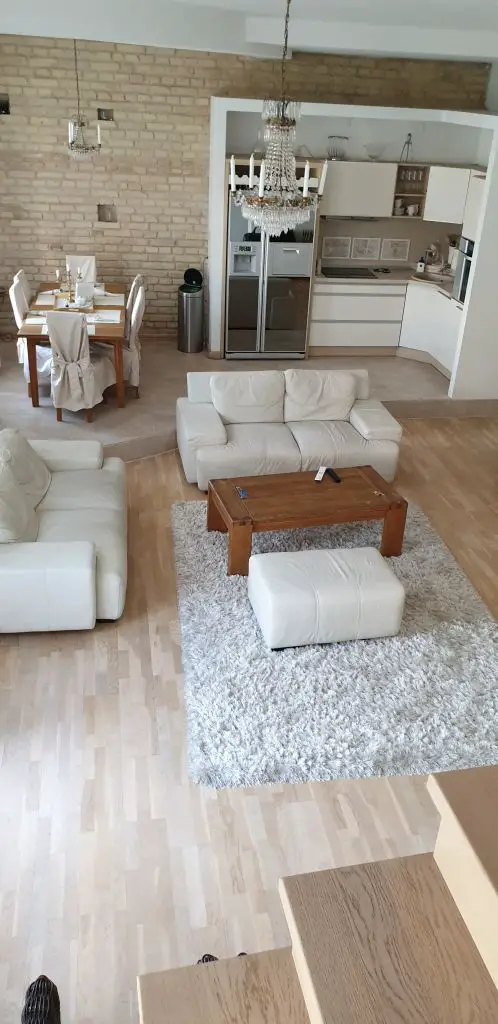
Full Itinerary
This itinerary starts in Vilnius, Lithuania. Generally, most people start in Vilnius and work their way north to Helsinki, or vice versa. There is really no advantages/disadvantages to where you start, just a matter of which flights make the most sense at the time of travel.
I started in Vilnius where I spent two nights exploring the Old Town. From Vilnius, I took a full day tour from Vilnius to Riga that stopped at various locations in the countryside including Kaunas, and the Hill of Crosses (super cool). From Riga, I spent another 3 nights exploring the capital of Latvia. I took a day trip to Jurmala which is a beachside town about 30 minutes away. From Riga, I took a bus to Tallinn, Estonia for 2 nights. Finally, I took the ferry from Tallinn to Helsinki where I spent 2 quick nights before flying home from Helsinki.
Compared to other destinations like Peru and Bolivia , or Guatemala and Belize , traveling around Europe is quite simple so this itinerary should be very easy to follow!
Day 1-3: Vilnius, Lithuania
The itinerary starts in Vilnius, Lithuania! Like I mentioned before, if you’re landing at the airport, skip the taxis entirely and go straight for Bolt or Uber as it should be no more than €6 for a trip to the old town. Otherwise take the bus which is also quick for just €1.
Vilnius is perhaps of the least known capital cities in Europe, but it won’t be for much longer. It’s old town is a Unesco protected heritage site and boasts an endless maze of cobblestone streets, cafes, restaurants, museums, and bars. It is also adorned with beautiful baroque and neoclassical buildings with colorful stucco rooftops.
What to do in Vilnius
As I like to do for all my trips around Europe, I always start with the free walking tour in a new city. This always gives me a good flavor and the highlights of the city that I can choose to re-visit later on in the trip. There are a few free walking tours in the city leaving at various times throughout the day. We visited all the highlights of the city and got in depth history lessons as well.
It seems that the three countries share similar history in that they were all pagan at one point before being forcefully converted in some degree by Germanic missionaries in the medieval ages. In more recent history, all three countries were controlled by the Nazis during world war 2 before succumbing to generations of Russian rule in the Soviet Union. One of the most interesting things I learnt was that the Baltic countries cannot understand each other. Latvian and Lithuanian are similar but not enough where they can hold a conversation, while Estonian is completely different and more similar to Finnish but also not similar enough to make conversation.
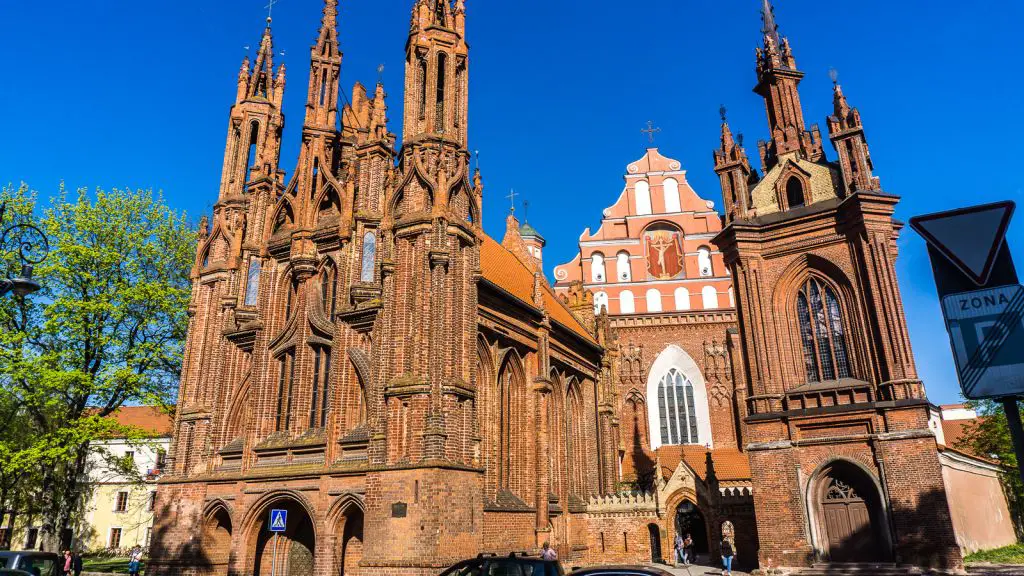
For views of the city, visit the Belltower of St. John’s Church
For the best views of the city, go to the Belltower of the St. John’s Church. It is just a €3 entrance fee and there is an elevator taking you to the very top. The belltower offers panoramic views of the old town where you can see the hill of three crosses and the Gediminas Castle. I prefer this view to the one at the castle because the belltower is in the city center giving you better views Vilnius’ red rooftops.
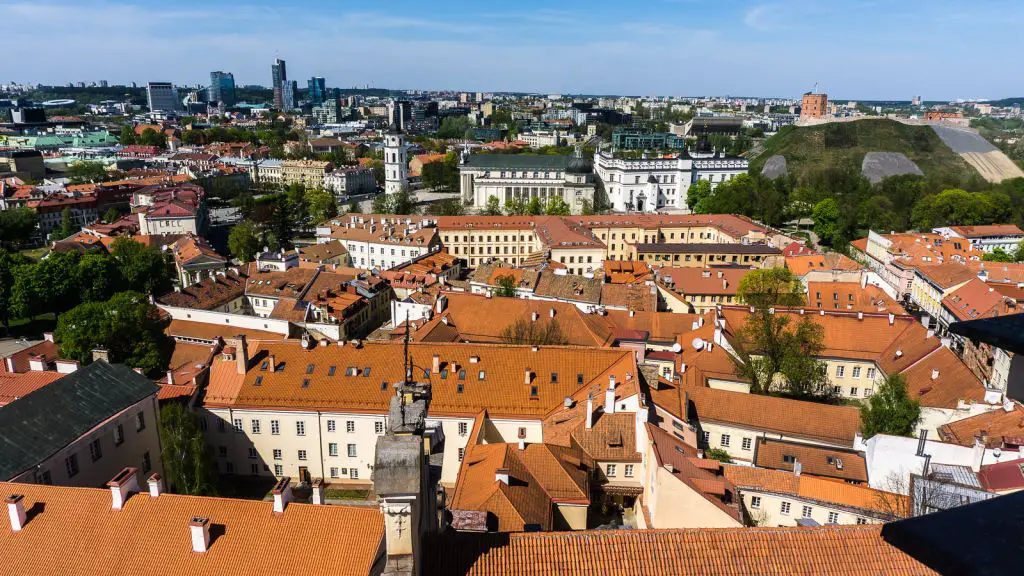
Vilnius is a beautiful city on the ground. The buildings are all in fantastic condition and the architecture of beautiful baroque variety. From the air, you can see that all the buildings are adorned with orange stucco rooftops that make it look like a Baltic version of Dubrovnik . The church also doesn’t see that many tourists so we had the entire viewing platform to ourselves for much of the day.
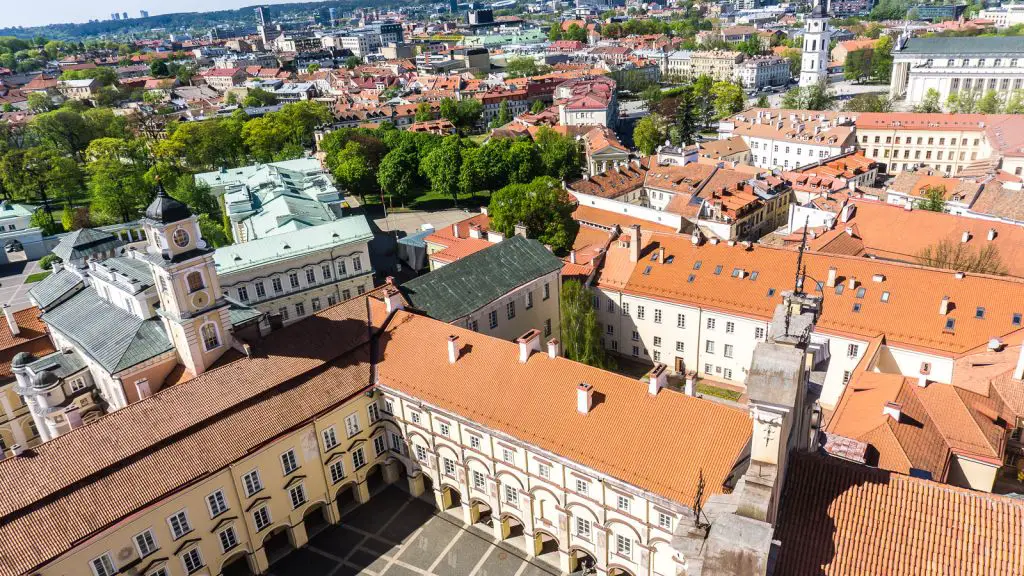
Visit the neighborhood of Uzupis
Užupis, a cool and edgy neighbourhood on the wrong side of the Vilnia River, declared itself an independent republic on April 1, 1997. Say what you will about autonomous hipsters, but the postcode is awash with trendy bars, shops (conceptual shoe shop, anyone?) and restaurants. Make sure you have a pint in the country’s “parliament” by the river, where the state’s constitution is on display.
Eat some Lithuanian Food
The Baltics are not known for their culinary prowess and I’m here to say that you won’t be wowed by the food but there are a few items that you must try. My favorite thing that I had in the Baltics is also the most simplest, fried rye bread with cheese sauce or kepta duona in Lithuanian. It doesn’t sound that appetizing but this is the ultimate bar food after a good chicken wing. I’m not sure why this hasn’t been adopted anywhere else because it would be incredibly successful. If you don’t eat this here, don’t worry as they have it all over the Baltics.

Another food I enjoyed was the cepelinai, or stuffed potato dumplings. These are special soft potatoes that have been boiled and stuffed with ground meat covered with a sour cream and bacon sauce. It is tasty, incredibly filling, and certainly not healthy.
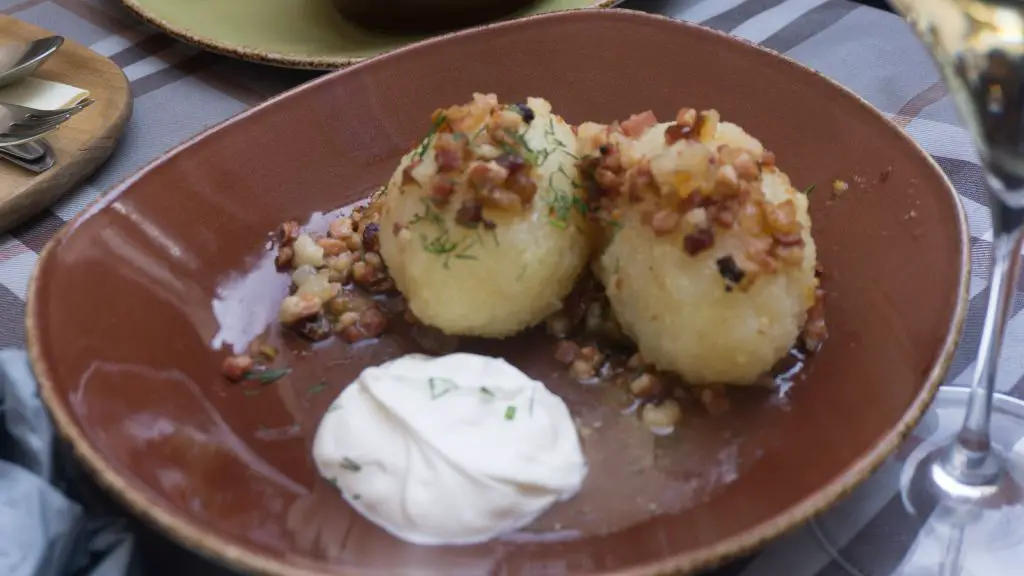
Day 4: Day Trip from Vilnius to Riga with Riga Travellers
Day 4 is about getting from Vilnius to Riga. Most people will elect for the bus services between the two cities but I stumbled upon a much more interesting and innovative concept.
Riga Travellers started out by doing small tours around Riga before coming up with the idea of doing a full day trip between Riga and Vilnius and stopping at the numerous sights in between. There are a few very cool things to see in the Lithuanian countryside that you would need to travel the whole day for anyway so why not see those things and end up in the next destination of the itinerary in Riga!
The total cost of the trip was €65 which is considerably more than the regular bus but I think it is well worth it. Our guide was very engaging and had a lot to tell us about the culture of the two countries. All in all, we made 5 stops along the way and it was about 11-12 hours in total. We left at 9am and arrived just before 9pm. You can also do this trip in reverse, Riga to Vilnius.
They also offer Riga to Tallinn tours (and vice versa) so this is a great way to get around the Baltics!
Trakai Castle
Trakai Castle is the first stop of the day. Located on Lake Galve, the Trakai castle was built by Lithuanian Dukes in the 14th century and was used as a residence. It is the only island castle in Eastern Europe. Nowadays it is a big tourist attraction and serves as perhaps one of the most epic settings for summer music festivals. If you have more time in Vilnius, I would recommend coming here on your own for sunset as I hear the views are spectacular.
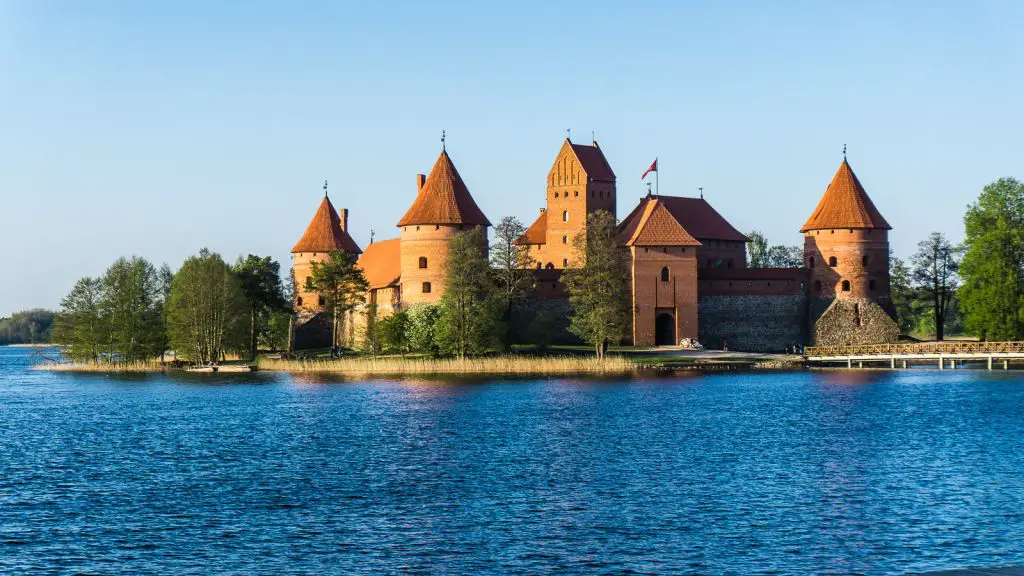
Kaunas City
Kaunas, Lithuania’s second biggest city was the second stop fo the day. During the past couple of years, Kaunas has invested heavily into tourism and infrastructure making it an attractive city for all travelers. The old town is much smaller than Vilnius but boasts the same beautiful buildings and cobblestone streets.
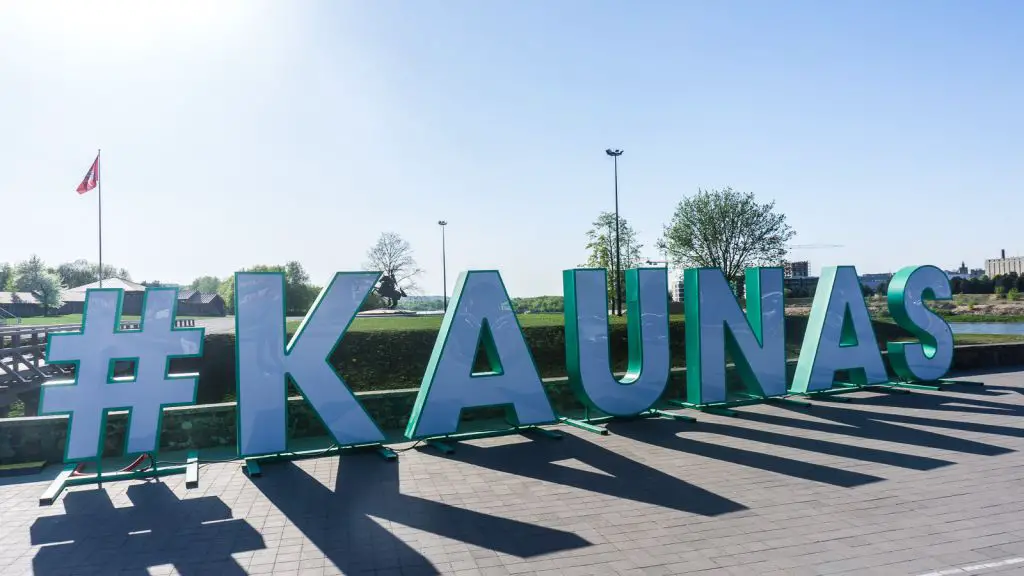
We didn’t have much time here unfortunately and if I had more time, I would definitely have stayed here for a night. There are loads of craft breweries in Kaunas producing delicious local brews that I wanted to try.
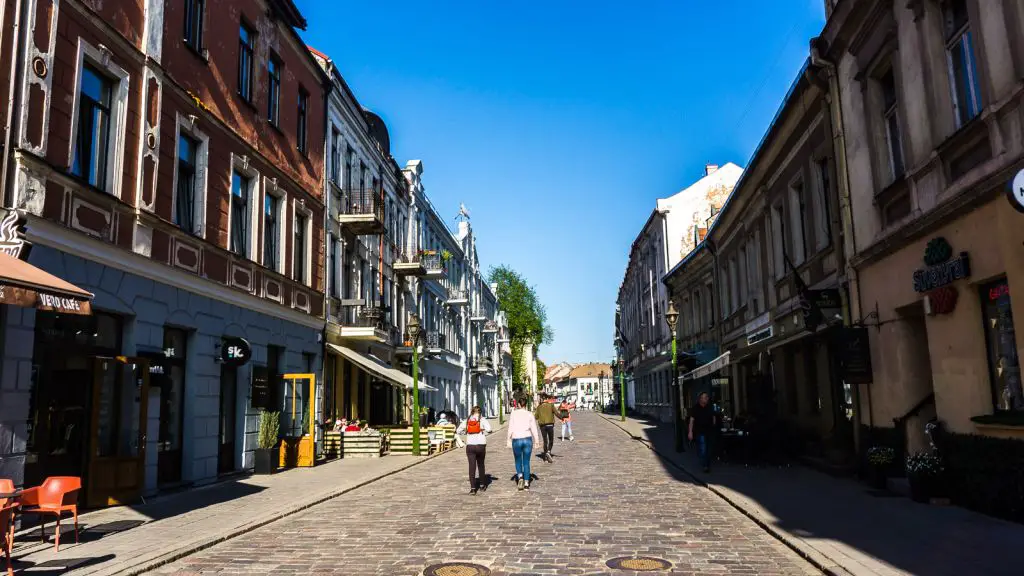
Hill of Crosses
The Hill of Crosses was next on the list after lunch. A Christian pilgrimage site with hundreds of thousands of wooden crosses erected on a small hill in Lithuania. The crosses start appearing as a protest to Russian occupation of Lithuanian lands. Families would plant crosses as a way to remember those sent to Siberia to their inevitable deaths. During soviet occupation, religion was of course not a thing so they bulldozed the site on numerous occasions and put soldiers to guard the site from future crosses.

Lithuanians continued sneaking in and planting rogue crosses until it was bulldozed again. And again. Nowadays, the Russians are no longer there and the amount of crosses have increased to the point where all walks of life are remembered here. It is supremely impressive to look at. I had no idea that this was on the itinerary and was completely wow’d at the sheer amount of crosses and the attention to detail of many of them. This was probably the highlight of the day in my opinion. We also visited on a sunny day but I can definitely see this place being super creepy on dark cloudy winter day. In fact, it would be the perfect place for a horror movie setting!
Rundale Castle
The next stop was the Rundale Castle, crafted by one of Lithuania’s dukes. It’s a nice palace with a big garden but if you’ve been to the Schonbrunn Palace in Austria , or the Palace of Versailles in France, then this will just look like any other palace.

Salaspils Soviet Memorial
The Salaspils Memorial Ensemble was erected where an extended police prison and labour correctional camp of Nazi Germany was located from 1941 to 1945. The memorial consists of a museum housed in a large open-air rectangular structure, and many statues. These statues showcase the struggle of the Latvian people, as well as the stoic might of the Soviet liberators. I found the statues to be a big creepy but overall, the memorial was very unique.
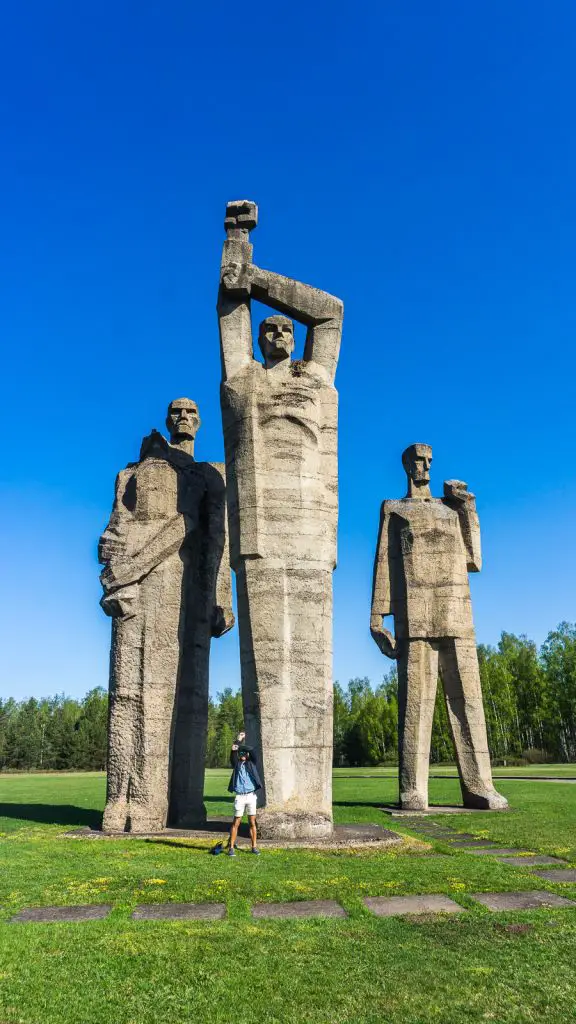
The museum inside the wooden building is also quite interesting as it shows the conditions that people had to endure here. A grim view for sure but a reminder of what much of Europe had to endure in the 1940s.
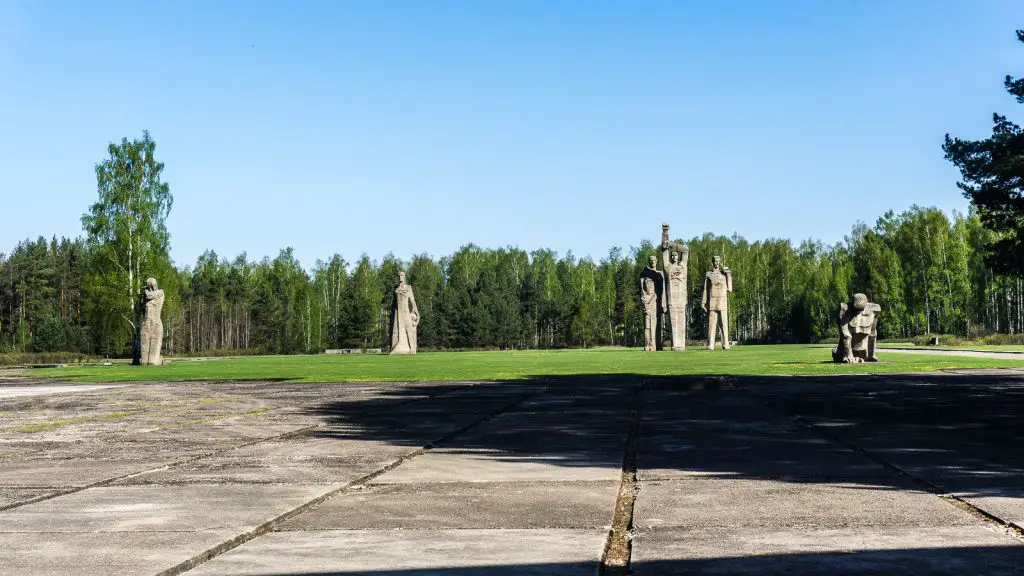
After this last memorial, we were only about 20 minutes from Riga where we ended our tour just before 9pm. Just in time for dinner in the city.
Day 4-6: Riga, Latvia
The next part of the itinerary centers around Riga. With around 700,000 people, Riga is the largest city in the Baltics. In its 800 years of turbulent history, everyone from German knights to Swedish kings and Soviet commissars have left their footprints, and today Latvia’s capital is an exciting European metropolis at the crossroads of eastern and northern Europe.
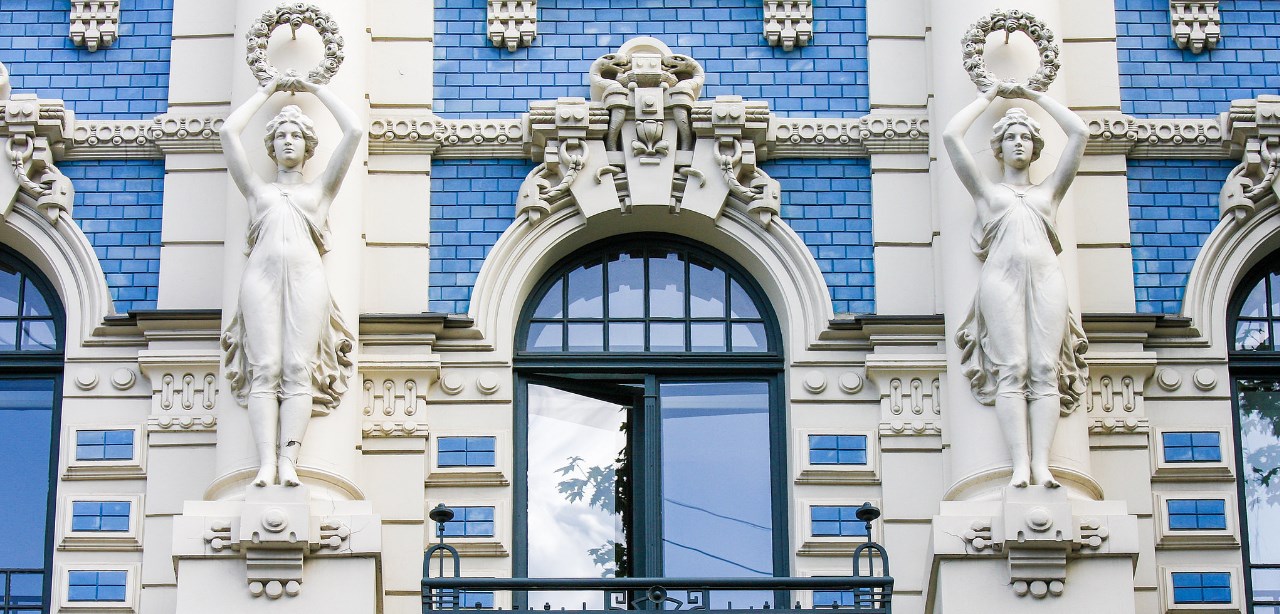
Riga is a UNESCO World Heritage site of cobblestones and breathtaking river views, as well as Europe’s Wifi capital with almost 1,000 spots to get online for free.
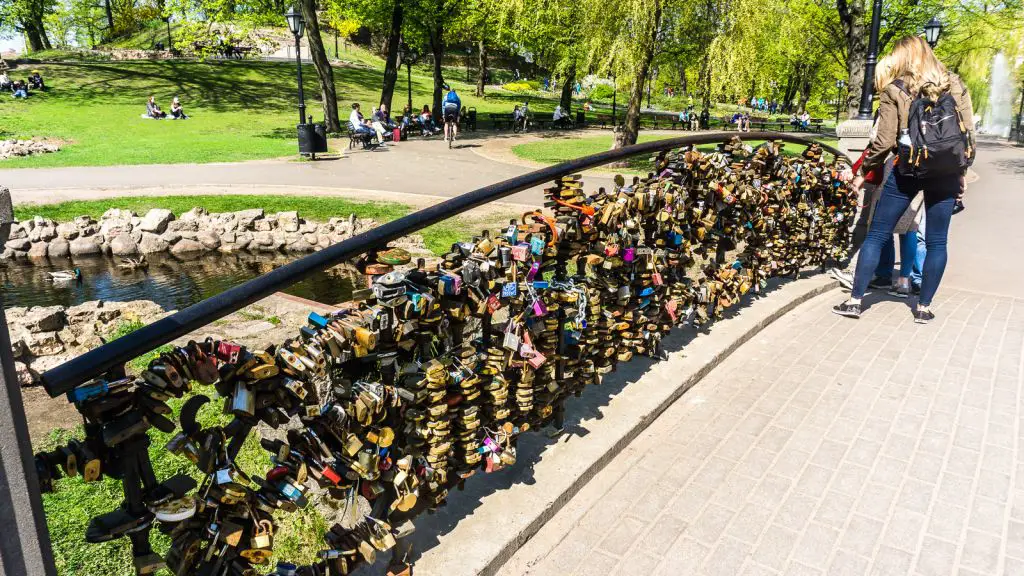
Walking Tour of Riga
As always, I sought out the free walking tour which is offered by multiple companies at multiple times throughout the day. Our guide was a big quirky taking us too way too many Guild houses that were the meeting points of Latvian fisherman in the past. Nevertheless, we visited all the main churches and buildings of Latvia, and received a lot of history lessons along the way.
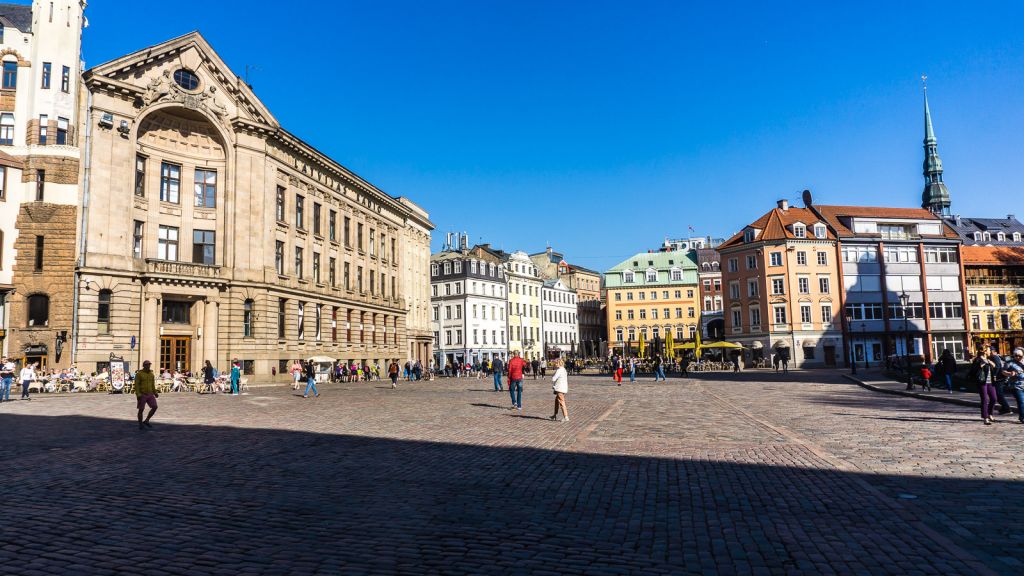
Visit the food market
Riga is an adventure for the taste buds too. The enormous Central Market is a treasure trove of earthy sausage, cheese and black bread, smoked fish, and much more. Sample the goods on a picnic in one of Riga’s lovely parks, or enjoy a hearty meal in many great value bistro and cafes.
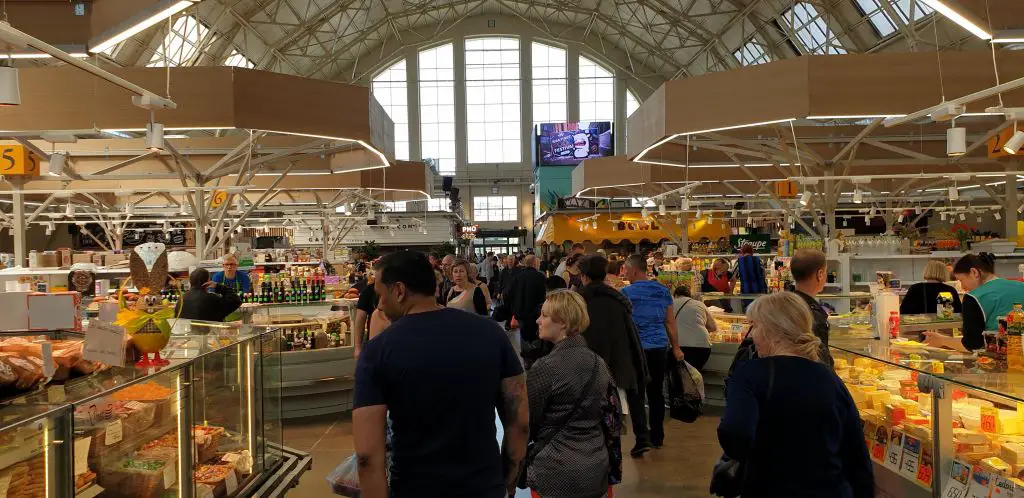
To wash it down, sample intriguing local beers in the brew pubs along hipster strip Miera iela, or a cocktail with the mysterious Riga Black Balsam in fun-filled bars across town.
Visit St Peter’s Church for Panoramic Views
Like I did for every other Baltic country, I always look for viewing points. St Peter’s Church is the best place to do this in Riga. Located at the top of 9 floors at the spire of St Peter’s church, you have 360 degree views of the city. The entrance fee is €9 and is well worth it.
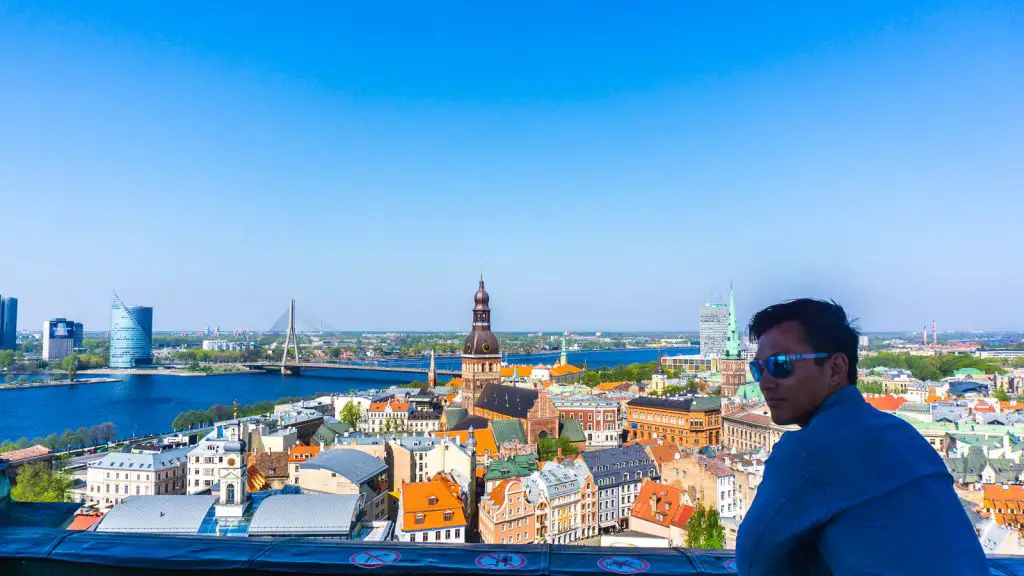
Rooftop drinks at the Galleria Mall
While most people recommend the rooftop at the Radisson Blu, I would whole-heartedly recommend you skip that and walk down the street to the Galleria Mall. The Radisson Blu is much higher and the view is spectacular but it is enclosed. The rooftop at the Galleria Mall (on the 8th floor) is completely open so you can watch the sunset, feel the air, and an overall much better experience.

Cocktails here are a very reasonable €7.5 and they are delicious. Grab some cocktails and watch the sunset!
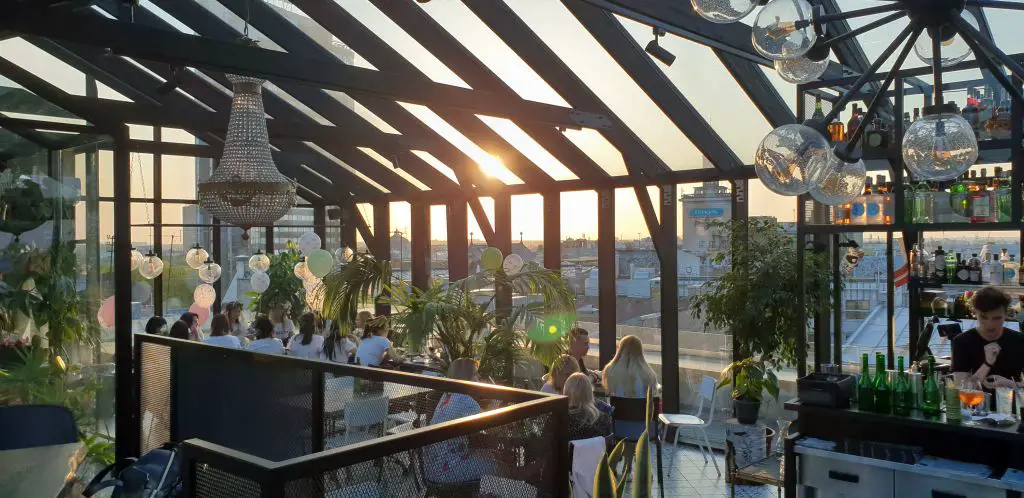
Day 6-8: Tallinn, Estonia
Tallinn is the last stop in the Baltics. From Riga, you can take a quick bus ride or an even quicker plane ride to Tallinn.
The Old Town consists of the Upper Town or Toompea located on a hill, currently housing the parliament and the government of Estonia, and the Lower Town with many wonderful theatres, cafés, restaurants and pubs in addition to its sights. The Old Town is surrounded by the fortifications of the medieval Tallinn city wall and a green area that runs along the former esplanade.
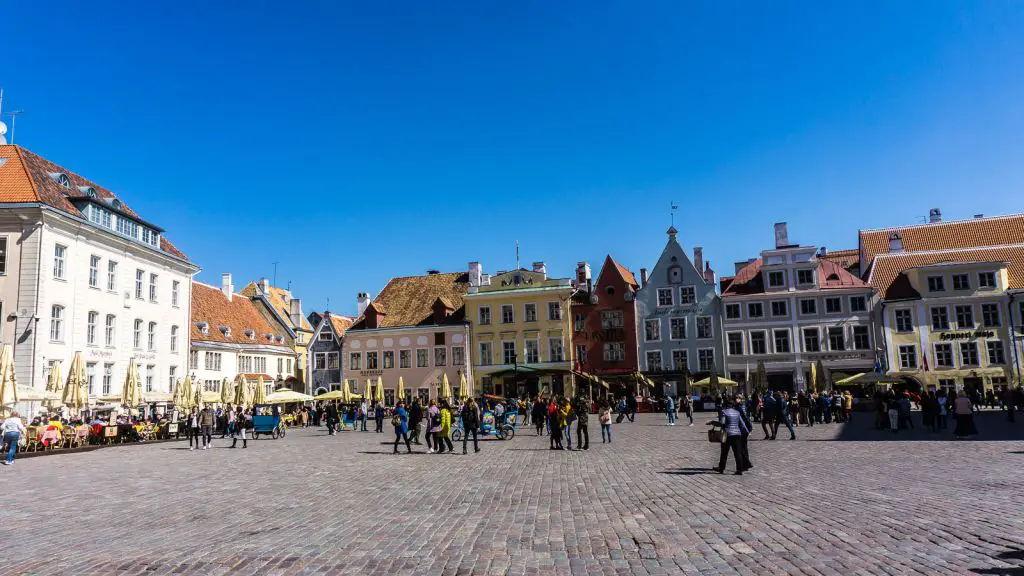
Free walking tour in Tallinn
The free walking tour in Tallinn goes every day and meets in the city center square at multiple times during the day. Starting from May, they meet at 10am, 12pm, and 3pm. As always, I find that free walking tours are always very interesting and this one was no different.
Our guide really knew her stuff and had great stories to tell about the history of Estonia, the culture, language, food etc. The walking tour was about 2 hours and we visited many of the highlights of the city including numerous churches, fortified walls of the city, viewpoints, and much more.

I learned a lot from our guide. Estonia is one of the, if not the least religious countries in the world. The Baltics were one of the last areas of Europe to “convert” to Christianity and Estonia was never really all about it. In fact, after their independence from the Soviet Union, they had plans to take down some of the churches in the city as no one ever used them. They realized they were iconic landmarks to foreign tourists and would be better served as such.
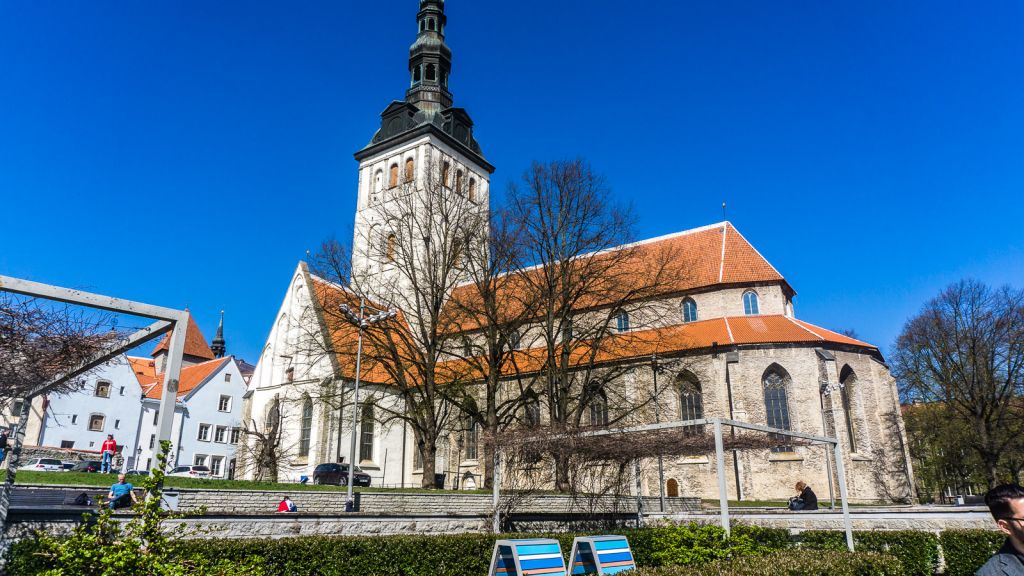
Visit the Creative neighborhood of Teleskivi
Everyone should pay a visit to the neighborhood of Teleskivi just outside of the old town of Tallinn. Think of this neighborhood as the nouveau, industrial, and ultra hipster neighborhood of Tallinn. There are loads of craft beers, restaurants in converted train cabins, and more.
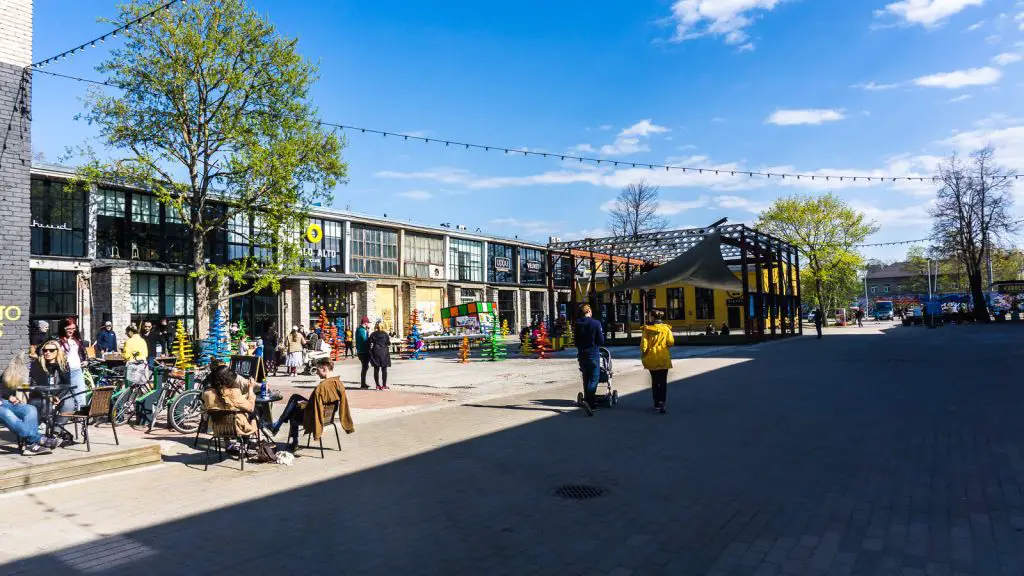
It was once Soviet origin factories and nowadays is the center of the vibrant artist and startup communities in Estonia. Estonia is the startup capital of Europe nowadays and Tallinn is the epicenter.

For views, visit the Kohtuotsa Viewing platform
For the best views of the city, head over to the Kohtuotsa Viewing platform. It is completely free and it was part of the walking tour I did. I came back later and spent more time here as the crowds were less. This would also be a great place to bring some drinks and enjoy the sunset over Tallinn’s skyline in the summertime.
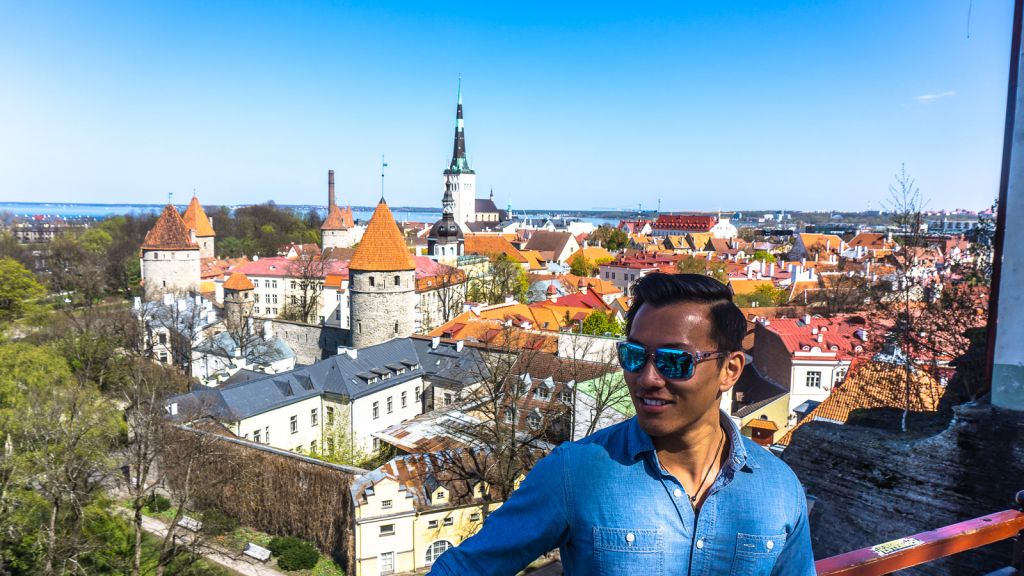
Day 8: Ferry from Tallinn to Helsinki
The next step on the list is Helsinki, Finland! While Helsinki is not a part of the Baltics but rather Scandinavia, it is super close to Tallinn. From Tallinn, it is just a 2 hour ride to the capital of Finland.
While exploring the vibrant culture and stunning landscapes of Finland, a unique aspect of Finnish leisure that’s gaining popularity is the concept of 1 euron talletus casino . These online casinos offer the convenience of enjoying a variety of games with a minimal deposit of just one euro. This feature is particularly appealing for those who prefer to experience the thrill of casino gaming without a significant financial commitment. Whether you’re relaxing in your hotel room after a day of sightseeing or enjoying the serene Finnish landscapes, these online casinos provide an accessible and enjoyable form of entertainment at any time.
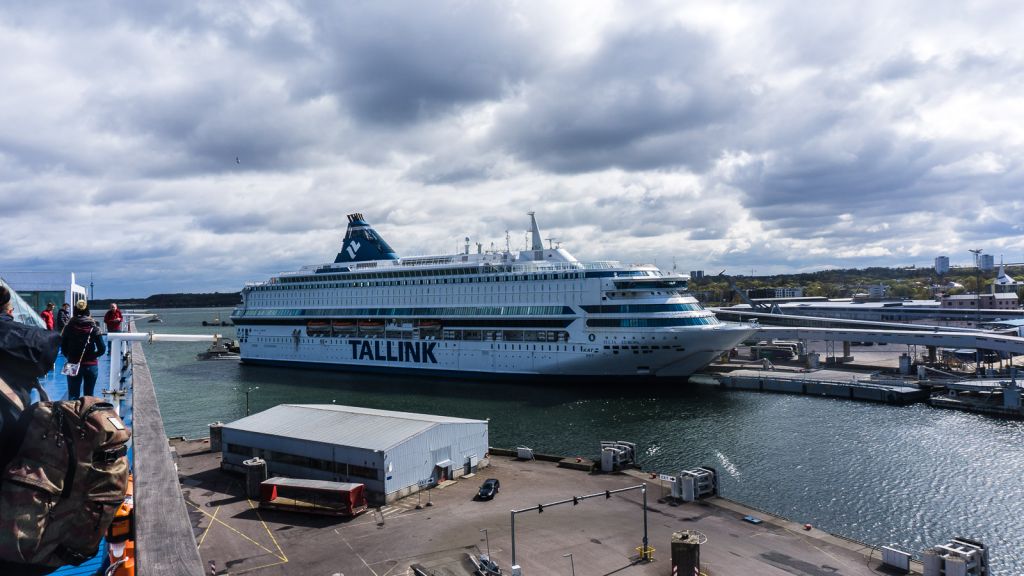
Which ferry company should I use from Tallinn to Helsinki?
There are three companies that service this route: Viking Line, Eckero, and Tallink . Tallink has the newest boats and is the most expensive, while Eckero is the cheapest. The three companies seem to use the same type of ships which are the size of small cruise ships. They are all car ferries so you’d expect the boats to be large.
I saw pictures of the new Tallink Megastar and it looks absolutely stunning. When looking for tickets, Tallink charged €30-40 per ticket, Viking was €25-30, and Eckero was the cheapest at €20 or so. These prices probably fluctuate greatly but I ended up just booking the cheapest ticket which was with Eckero. You can buy your ticket online or at the ferry terminal.

It is such a short ferry ride that it doesn’t matter what you end up using. Ferries are pretty frequent and you can find one of the companies ships once an hour that do this route.
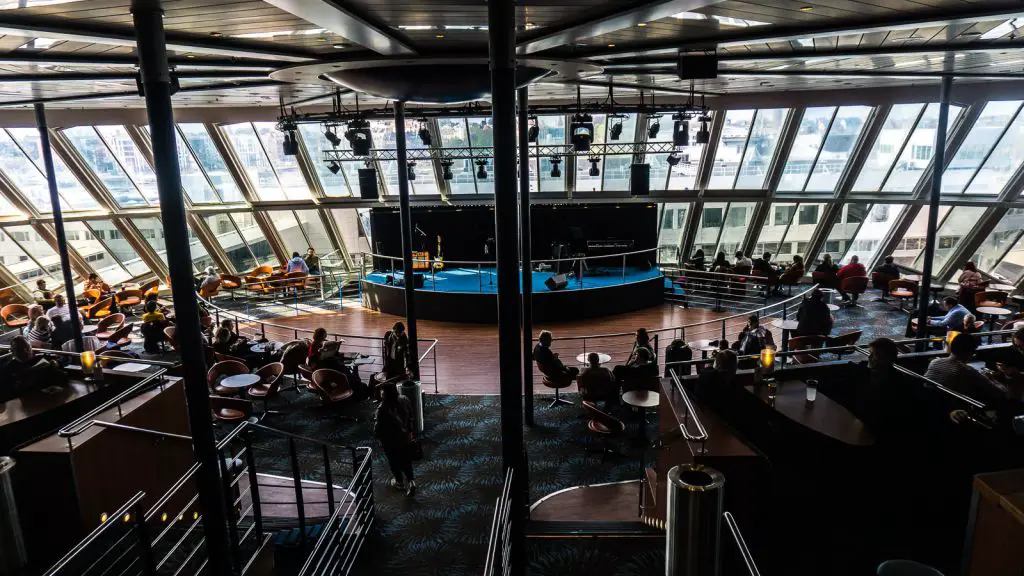
I was very impressed with the Eckero ferry. I went straight to the top of the boat to the sun deck to enjoy the views. They had a bar outside where I could sample some of the local Finnish beers. There is free wifi but the signal was pretty spotty at best. They also have what looks to be a delicious buffet for €24 per person.

Day 8-10: Helsinki, Finland
Helsinki is a beautiful and peaceful capital, famous not only for its history and heritage but for its Old Town, coastline and archipelagos. The city offers a wide range of historic attractions, top museums, art galleries, tours and experiences for everyone to enjoy.
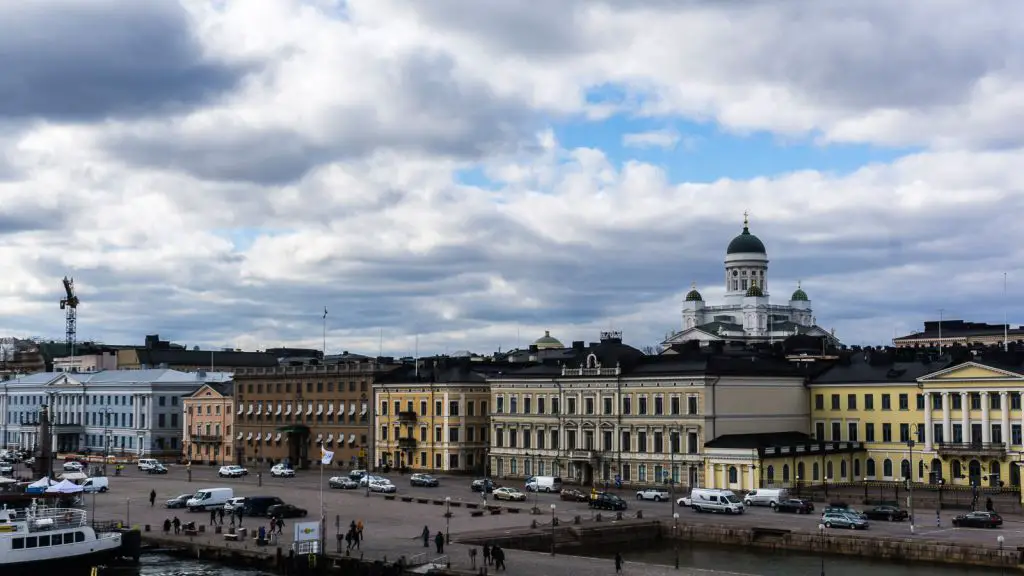
I was very impressed with Helsinki. It is totally an underrated city that I feel like many people forget about when visiting Europe. When people visit Scandinavia, they tend to gravitate to Oslo or Copenhagen. If they visit the Baltics, then Estonia, Latvia or Lithuania because it is significantly cheaper. Helsinki is kind of somewhere in between. This is good because it means less tourists and especially less drunk Brits on their Stags.
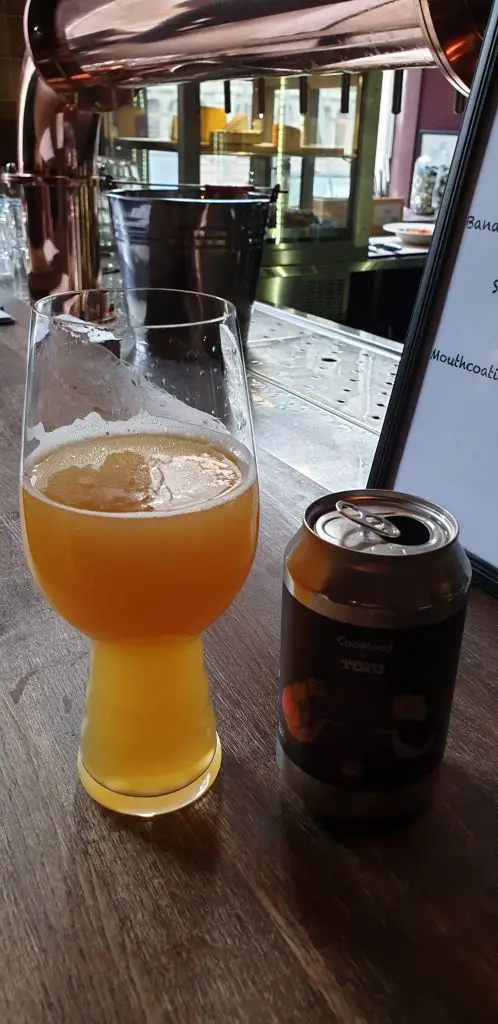
I came away totally impressed with the city. The architecture and buildings are stunning, the streets are super clean and orderly as you would expect from Northern Europeans, and the views from the harbor are fantastic. If Helsinki is the last stop on your Baltic itinerary, one thing to note is that it is considerably more expensive in Finland than it is in the Baltics. Beers are €8-10 on average, and food is twice the price. Starting from Vilnius, you can expect your trip to get gradually more expensive with Finland being the biggest shock to the system.
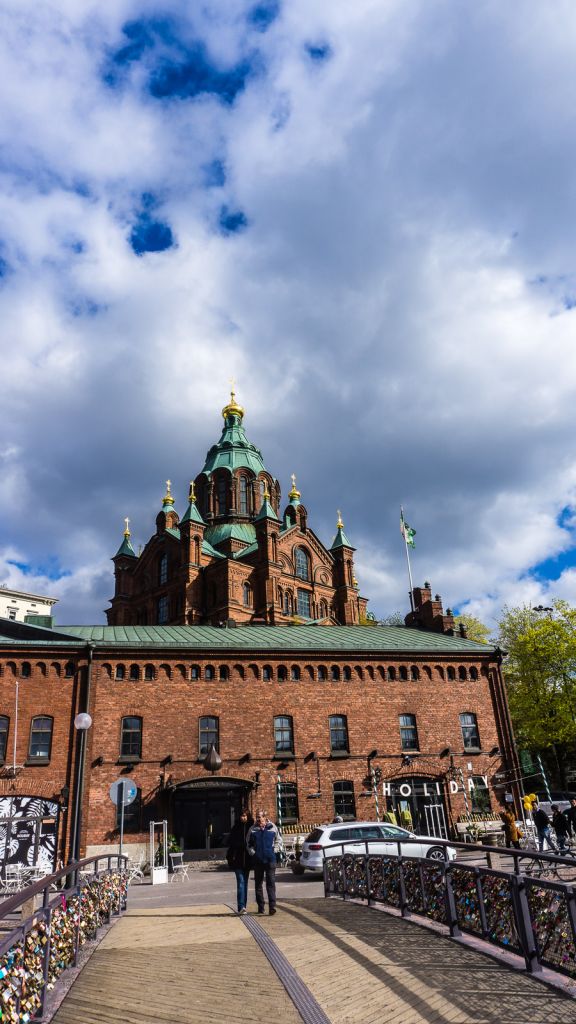
Free walking tour of Helsinki
I did the free walking tour with Green Cap tours, which appeared to be the only outfit in Helsinki doing these free walking tours. They only do it once a day at 11am and expect it to be packed. My Finnish guide was one of the most knowledgeable and interesting guys I’ve had. He had a lot to say about Finnish culture, like why the language is so different than their Scandinavian neighbors, the Finn’s obsession with karaoke, and all your standard history tidbits.
Here are some highlights of the Helsinki Free Walking by Green Cap Tours
- Senate Square
- Helsinki Cathedral
- University of Helsinki
- Wellfare State functions
- Bank of Finland
- The Mecca of the Finnish Karaoke Scene
- Uspenski Orthodox Cathedral
- Presidential Palace
- Sauna Centre
- Market Square
- Epicenter of National Celebration called Vappu
- Esplanade Park

Old Market Hall
The old market hall is one of the most popular sights in Helsinki. Located next to the main harbor, come here to sample some delicious local Finnish cuisine like Salmon soup, open faced sandwiches, and Reindeer meat. They also have other cuisines here as well like kebabs and Vietnamese food.
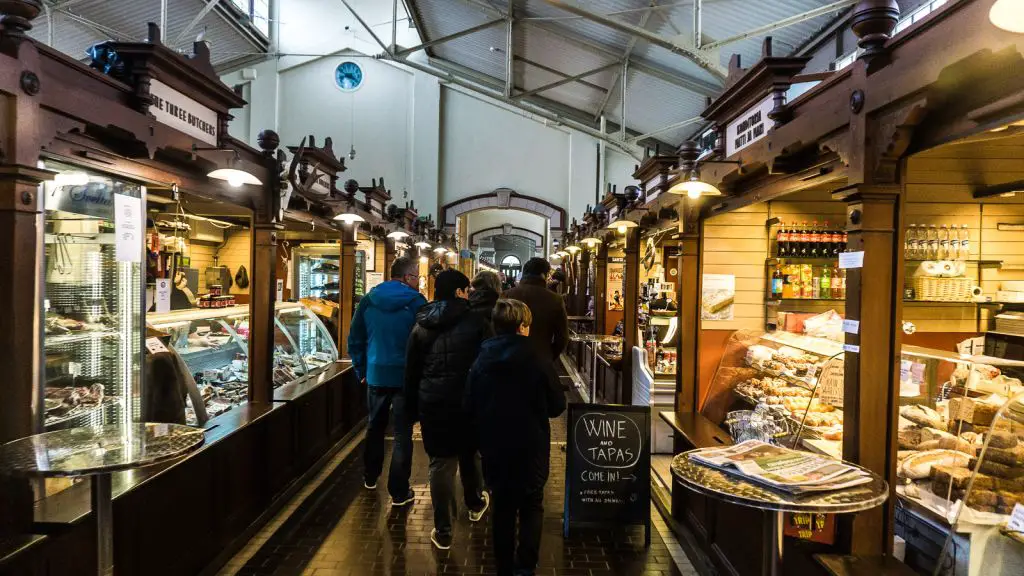
The food is not cheap however, as you can expect to pay upwards of €70/kg of salmon. I sampled a bit of everything from the salmon to the reindeer, but found that the best deal was the Bahn Mi sandwiches at the Vietnamese shop that was only €5.5 per sandwich.
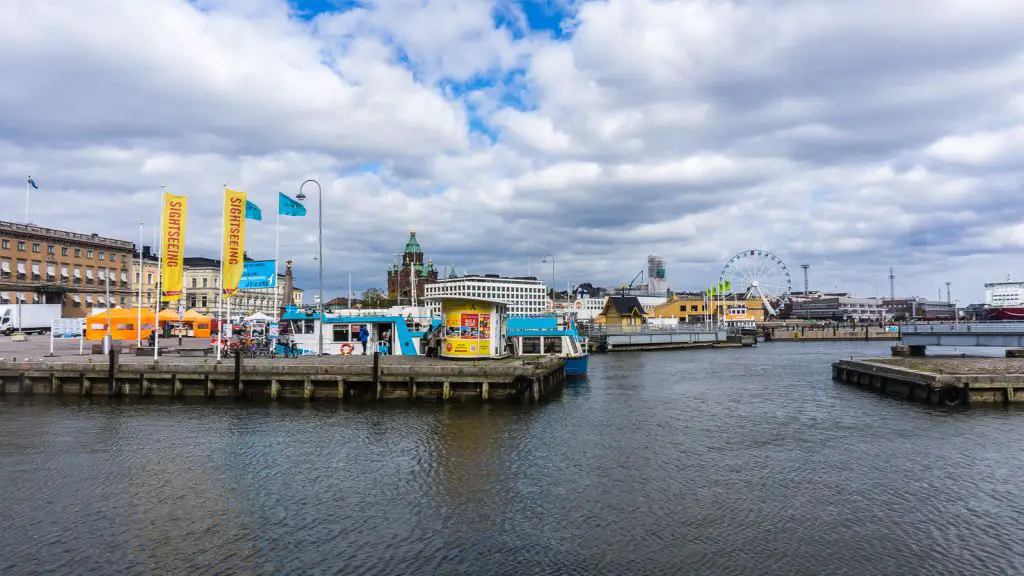
Day trip to Suomenlina
One of the most popular historic attractions in Helsinki is the UNESCO World Heritage Site, Suomelinna Fortress Island , which played an integral part in the naval history and defense under Swedish, Russian and Finnish rule. A visit to this fascinating island includes a guided tour, three museums, and a submarine! Another historic landmark not to be missed is the stunning Rock Church for its awe-inspiring architecture.
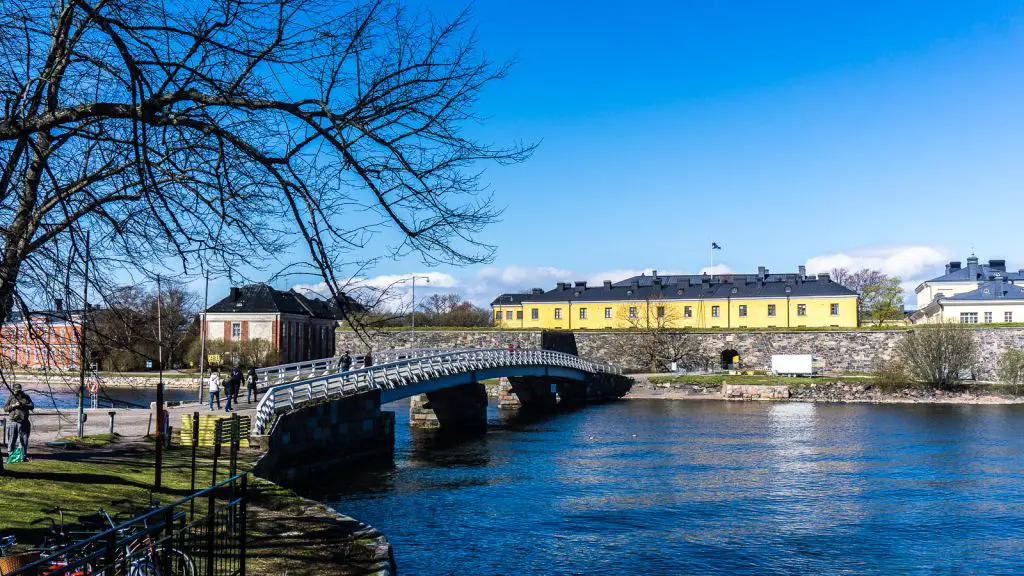
The ferry to Suomenlina Island leaves from the Helsinki harbor every 20 minutes and the cost is €5 for roundtrip tickets. Make sure to take the public ferry for the cheapest price as opposed to the smaller boats nearby that advertise this as a tour.
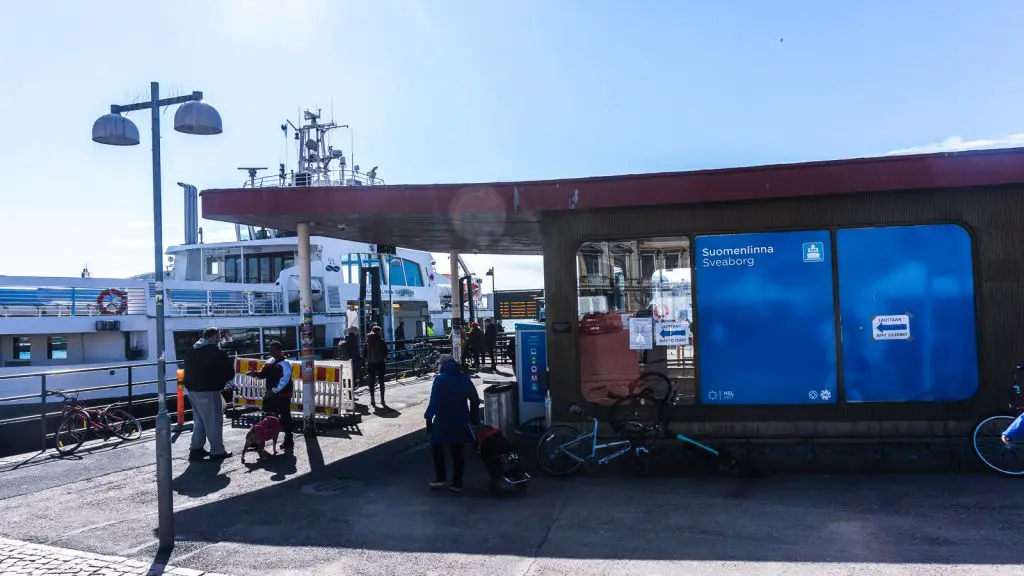
Day by Day breakdown of Baltics Itinerary
Here is a day by day breakdown of the Baltics itinerary. It is pretty straight forward trip as it mostly focuses on visiting the big cities.
Day 1: Land in Vilnius to start the trip Day 2: Full day Vilnius Day 3: Full day Vilnius Day 4: Vilnius to Riga full day tour stopping at various locations along the way Day 5: Riga full day Day 6: Riga to Tallinn Day 7: Full day Tallinn Day 8: Tallinn to Helsinki ferry Day 9: Full day Helsinki Day 10: Depart Helsinki
Two week Baltic Itinerary
If I had another 4-5 days, I would structure my trip like this as I could spend more time in some of the smaller cities which also deserve some time:
Day 1: Land in Vilnius to start the trip Day 2: Full day Vilnius Day 3: Full day Vilnius Day 4: Vilnius to Kaunas, spend the night in Kaunus Day 5: Kaunus to Riga, with stops at Hill of Crosses Day 6: Full day in Riga Day 7: Riga to Jurmala beach town Day 8: Riga to Tartu, spend night in Tartu Day 9: Tartu to Tallinn Day 10: Full day in Tallinn Day 11: Full day in Tallinn Day 12: Tallinn to Helsinki Day 13: Full day in Helsinki Day 14: Helsinki to Turku Day 15: Turku back to Helsinki for a flight home
Combining The Baltics with Russia
I have not visited Russia yet as the visa is a huge pain to obtain but if you have even more time, this itinerary would be perfect in combination with Russia’s highlights including St Petersburg and Moscow. From Tallinn or Helsinki, there are trains and ferries that make the journey into Russia in a matter of hours. I will eventually visit Russia and make another itinerary combining these destinations!
Continue Reading:
- The Perfect Two Week Itinerary For The Balkan Countries
- The Perfect Travel Itinerary For Slovenia: Ljubljana, Lake Bled and More
- The Perfect One Day And Two Day Itinerary for Zurich, Switzerland
- The Perfect Mexico Travel Itinerary: Mexico City, Puebla, Oaxaca, And Mazunte
- The Perfect One And Two Day Itinerary For Ljubljana, Slovenia
- The Perfect Romania Travel Itinerary: Timisoara, Cluj-Napoca, Sibiu, Brasov, Bucharest
- The Ultimate Two Week Travel Itinerary For Turkey
- The Perfect Bulgaria Travel Itinerary: Sofia, Plovdiv, Black Sea
- The Ultimate One To Two Week Travel Itinerary For Guatemala
- Guide to Visiting Cape Town
- The Perfect Travel Itinerary For Malta and Gozo
- The Perfect Two Week Mexico and Belize Travel Itinerary
- The Ultimate Dublin To Cliffs Of Moher Day Trip Itinerary
- The Perfect Travel Guide For Freiburg im Breisgau
Related Posts

The Perfect Sri Lanka Travel Itinerary: One Week, 10 days, and Two Weeks
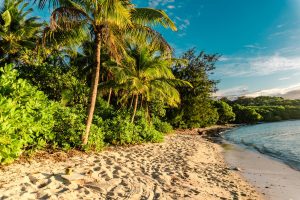
The Perfect Fiji Honeymoon Itinerary: One To Two Weeks

The Perfect Fiji Travel Itinerary: Beaches, Diving, and Island Paradise

The Perfect Vietnam Travel Itinerary: One Week, Two Weeks, and Three Weeks
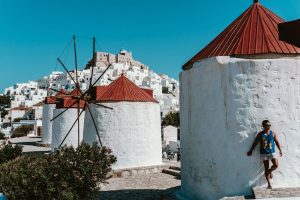
The Perfect Two Week Travel Itinerary For Greece

The Perfect One Week Itinerary For Greece
Leave a reply cancel reply.
Your email address will not be published. Required fields are marked *
Yes, add me to your mailing list
Add Comment *
Save my name, email, and website in this browser for the next time I comment.
Notify me of followup comments via e-mail. You can also subscribe without commenting.
Post Comment
Any concerns about safety while in the area, given the conflict in Ukraine?
Hi Andrea, I would not be concerned with safety there. It’s an EU country and part of NATO. If Russia actually attacked it would be WW3 and even they are not that stupid.
Hello! I love this post , thank you for writing this up ! What was the name of your tour through Lithuania on your way to Riga? Thank you
Hi Kath, I used Riga Traveller tours as my way to get from city to city. They are fantastic and perfect way to get from one city to the other while seeing some cool stuff in between!
If you go for any tour you have frequently known the place of that country. But for better travelling and also safety purpose you have choose a Transportation service provider company. Last month I had visited for a tour in Latvia through the Riga Airport Transfer company. This company provide best travel & transportation service in Latvia. I had seen many beautiful scenario and enjoy the delicious food of Riga restaurant. This tour is one of the best tour for me because I had comfortably visit all these places.
Nice to come across your blog, very informative. I’m also planning similar route as yours, will it be too tight? I am travelling solo, usually faster pace. Or Do I need to give another 1-2 days more?
Day 1: Arrive Helsinki at 7am Day 2: Fly to Vilnius, arrive 9am Day 3: Vilnius Day 4: Day trip to Kaunas Day 5: Bus to Riga Day 6: Riga Day 7: Bus to Tallinn Day 8: Tallinn (Midnight bus to St Petersburg)
Hi jas, I think this is probably enough but could recommend another day in Helsinki. But if you can’t swing another day, I wouldn’t sweat it!
Thanks Johnny! That’s very helpful, I will find out more for Helsinki.
Sauna is very popular attraction in the Baltics (different from Finnish sauna). Sauna is getting more and more popular among tourists and I personally know foreign tourists who return to Baltics every!! year just to have sauna procedure which usually last for up to 5 hours max for 2 persons and gives absolutely magical bliss, restart of the mind and body and life long memories of this part of the world. Strongly suggested while in these beautiful countries. 🙂
That’s good to know! I didn’t nkow about this and will def look into it next time I’m there.

- Three weeks in the Baltics – An itinerary for independent travellers
This article may contain links to products and services we use and recommend. We may receive compensation when you click on links to those products. For more information, see our Disclosure Policy .
Download your Sustainable Travel Checklist and show the world you care
Why visit the baltics, how much does it cost to explore the baltics, when is the best time to visit, save money using the airalo esim, why choose this itinerary, map of accommodation, points of interest, eateries and transport, how easy is it to travel in the baltics by bus or train, and where to buy tickets, train travel in the baltics, bus travel in the baltics, hiring a car in the baltics, have you explored the baltic states what other tips would you add, author: sandra rosenau.
As travellers, we should all be aware of our travel behaviour and its environmental, economic and social impact; and make conscious decisions about it. Too often, we hear negative stories in the media about tourists behaving badly.
Here is your chance to tick some boxes and check out what it really takes to travel with a sustainable mindset.
The fine print: I agree to receive the Minimalist Journeys newsletter full of news, actionable tips and practical advice every month. I know I can unsubscribe at any time. I have read and agree to the Terms of Use and Privacy Policy .
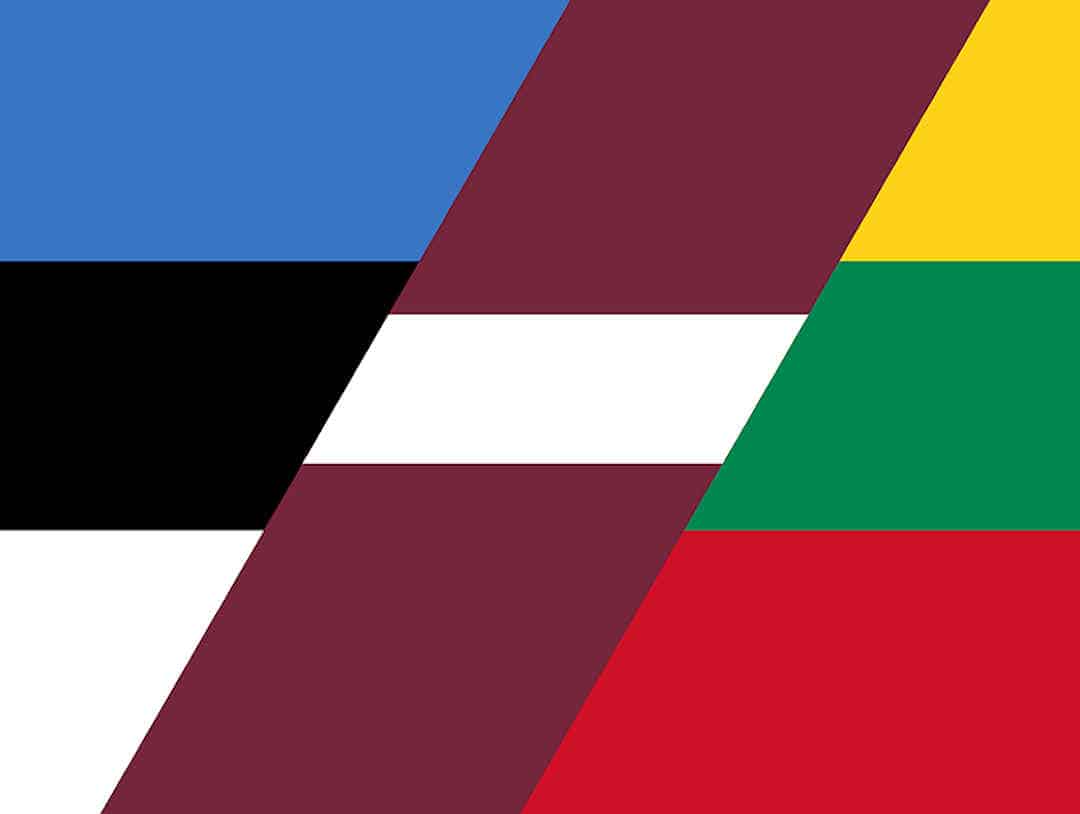
The flags of the three Baltic countries (from left to right): Estonia , Latvia and Lithuania
While there is a young and dynamic feel about them, the Baltics have a lot of history waiting to be discovered. From Teutonic Knights to Russian Tsars and both Fascist and Socialist dictatorships, the Baltic countries had (more than) their fair share of invaders. The remnants from those times are everywhere: Quaint medieval old towns sit side by side with austere Soviet-era architecture, Catholic and Protestant churches next to the onion-shaped domes of Eastern Orthodox edifices. Even Baltic cuisine can tell you stories.
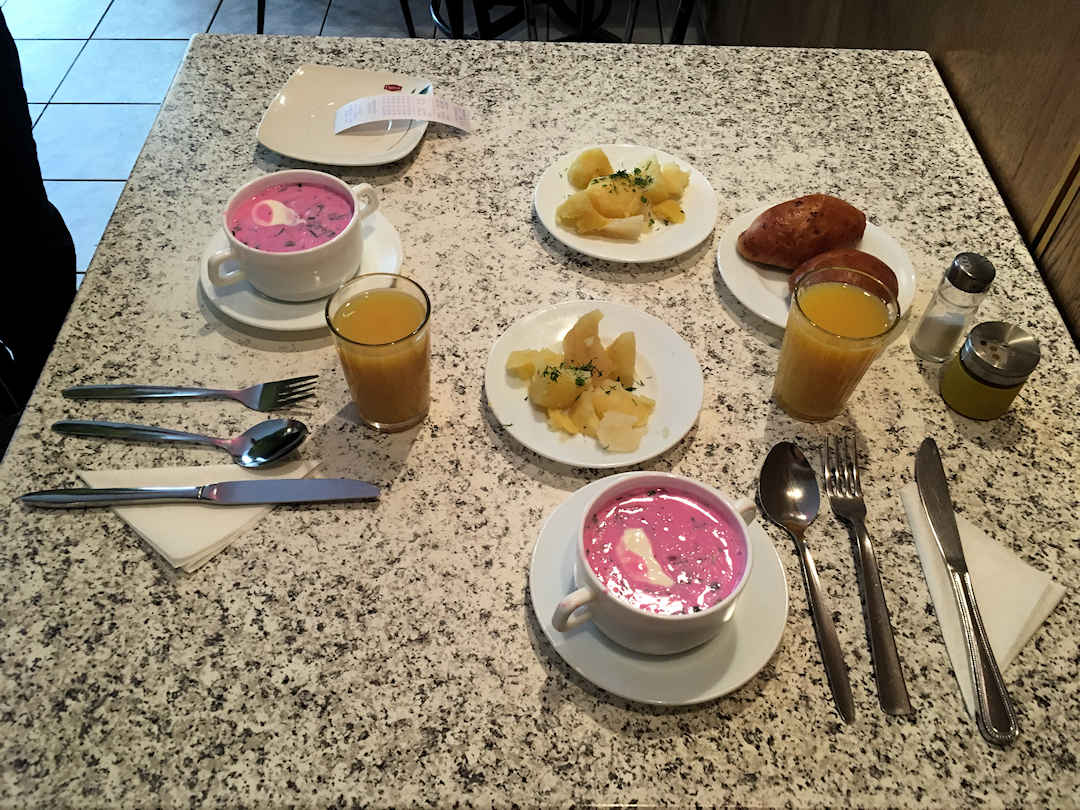
Baltic food is hearty, with influences from the foreign forces that invaded and occupied the Baltics over the centuries
If that’s not enough: August 2023 marked 34 years of the Baltic Way, when 2 million people joined hands to form a chain reaching from Vilnius via Riga to Tallinn . And by 2021, all three countries celebrated the 30th anniversary of regaining their independence after 40+ years of Soviet occupation. One thing is sure: Lithuanians, Latvians and Estonians everywhere were proud to celebrate the occasion.
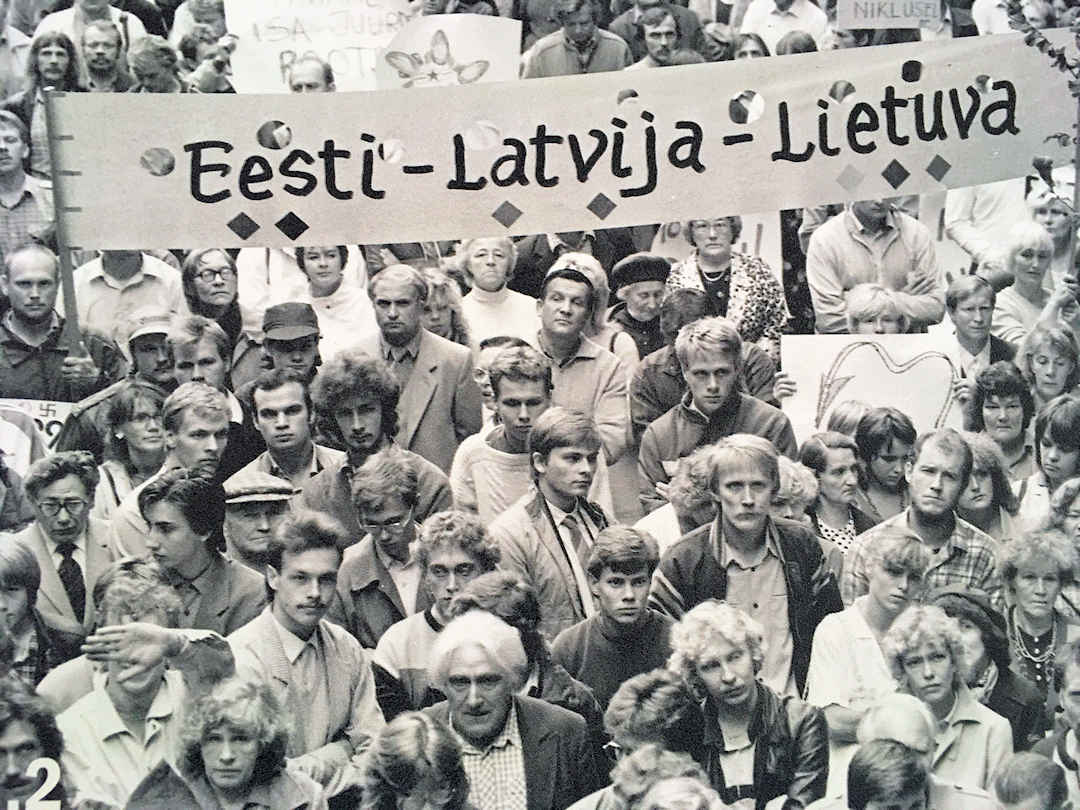
2019 markes the 30th Anniversary of the Baltic Way, which ultimately led to the Baltics regaining their independence

The Baltics are home to 14 national parks | Photo courtesy of Cristiano Sequeira on Pixabay
These days, the Baltics are a peaceful place. It feels safe travelling around Lithuania , Latvia and Estonia . People are friendly, albeit often a bit shy: most people over 40 don’t speak English .
The countries are also relatively undiscovered when it comes to tourism. Most visitors seem to focus on the UNESCO-protected historic old towns of Vilnius , Riga and Tallinn which are advertised in every tourism marketing brochure. But there is so much more to the Baltics than the capital cities and their medieval hearts. So, what are you waiting for?
Visiting the Baltic countries cost us on average EUR45.17/USD50.54 per person per day. Check out our individual country costs here:
While our favourite travel time of the year is usually Spring (mid-March to mid-June) and Autumn (mid-September to mid-December), the three Baltic countries are best visited between the end of May/early June and mid-end August, when the temperatures are in the low 20s (centigrade that is), and the days are super long. If you want to experience the Baltics in the winter, come in February or March, when snow is still likely, but the days are longer.
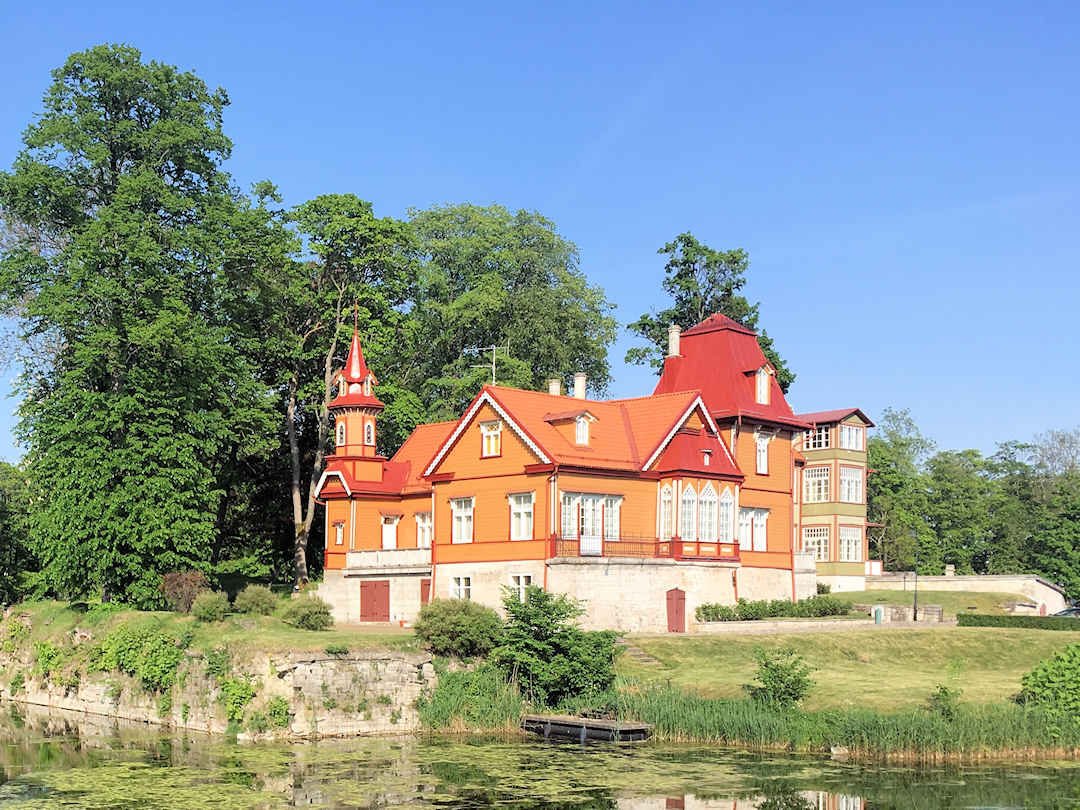
The Baltics are best visited in summer when the temperatures are warm and the days are long
Airalo is the world’s first eSIM store that solves the pain of high roaming bills by giving you access to eSIMs (digital SIM cards). More than one million people are already using Airalo 's eSIMs.
With eSIMs from Airalo , you can download and install a digital data pack for over 200 countries/regions and get connected anywhere in the world as soon as you land.
With Airalo 's eSIMs, you can access the Internet from virtually any country on the planet and don't have to pay excessive roaming charges. You don’t need to waste your time looking for a local plastic SIM card. The eSIM can be activated either immediately after installation or upon arrival at your destination. A wide range of eSIMs are available for different countries and regions. You do not even have to buy a card for a specific country. If you intend to travel, you can buy a regional eSIM on Airalo . For example, there are eSIMs available for the entire continent of Europe .
The support team is available 24/7/365 and is happy to offer prompt assistance via chat on the Airalo website, social media, or email.
We’ve put together an itinerary that shows you a bit of everything: historic cities, National Parks and the Baltic Sea. While our itinerary starts in Vilnius and finishes in Tallinn , it can easily be done the other way around.
All the places we recommend are reachable by public transport. Although to make things a bit easier for you, we do recommend one-day car rentals on the island of Saaremaa and for the day trip from Vilnius (and maybe Riga ). Don’t worry: we provide you with all the links you need to organise your transportation further down in this post.
While this itinerary is built around a week in each country – Lithuania , Latvia and Estonia – you can easily add days here and there if you’ve got more time. Alternatively, if you’ve got only time to visit one country just pick the one that sounds most interesting to you (and come back for more another time).
So, let’s have a look at which places we have in mind for you.
Below is a map of the recommended accommodation, points of interest, eateries and transport terminals/stops mentioned in this article.

Travelling around the Baltics by bus and/or train is super easy. Our go-to website to determine what transport options exist between points A and B (and to get an idea as to how long it takes and how much it costs) is Rome2Rio .
While there are reliable bus connections pretty much everywhere in the Baltics , we find trains more comfortable and chose trains over buses wherever possible:
In both Lithuania and Latvia , you can buy train tickets at the train station or on the train (both without a surcharge). Alternatively, if you prefer to purchase online (electronic tickets are accepted):
- buy train tickets for Lithuania here
- buy train tickets for Latvia here .
In Estonia , you can only buy train tickets online (electronic tickets are accepted) or on the train (with a surcharge). The train stations we travelled through had no ticket counters or machines at the stations.
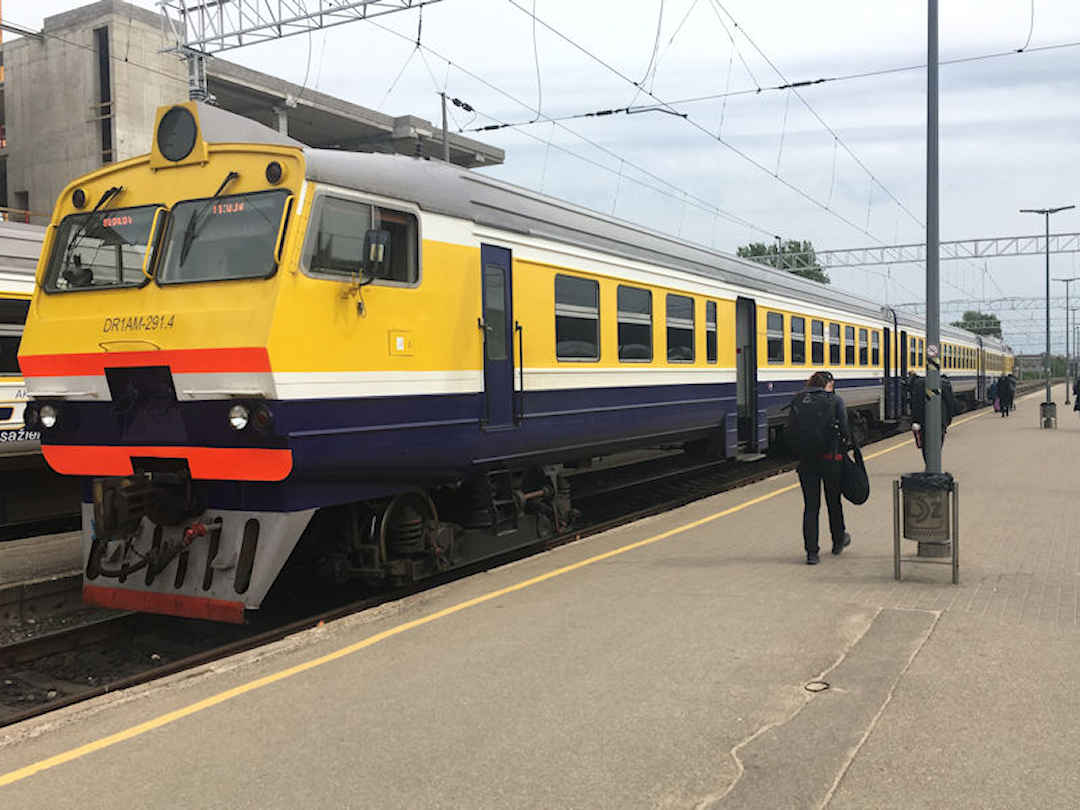
Trains in the Baltics are clean, comfortable, cheap and reliable (and in Latvia and Estonia they even have Wifi)
Withdrawing cash overseas can be expensive but it doesn’t have to be. We can show you how to avoid unnecessary fees and make your travel budget stretch further.
How do you determine which card is best for your overseas trip? Using the right one can save bank fees and make your travel budget stretch further.
Ever been caught out by the bad FX rates and exorbitant commissions charged by FX bureaus? These tips allow you to minimise these charges in future . We also recommend XE Money Transfer to keep more of your money when you complete a transfer.
We booked our bus tickets in Lithuania and from Lithuania to Latvia online (electronic tickets are accepted):
- Bus tickets for Lithuania or between Lithuania and Latvia/Estonia
- Bus tickets for Latvia ,
but you can also buy them at the bus stations.
The Peatus website provides comprehensive route/timetable/bus company information for Estonia and between Estonia and Latvia / Lithuania , but you can’t buy a ticket through the website. Instead, you can buy your bus ticket at the bus station or online with the bus company directly:
- Book GoBus and MKBus tickets in Estonia
- Buy LuxBus tickets for any route in the Baltics .
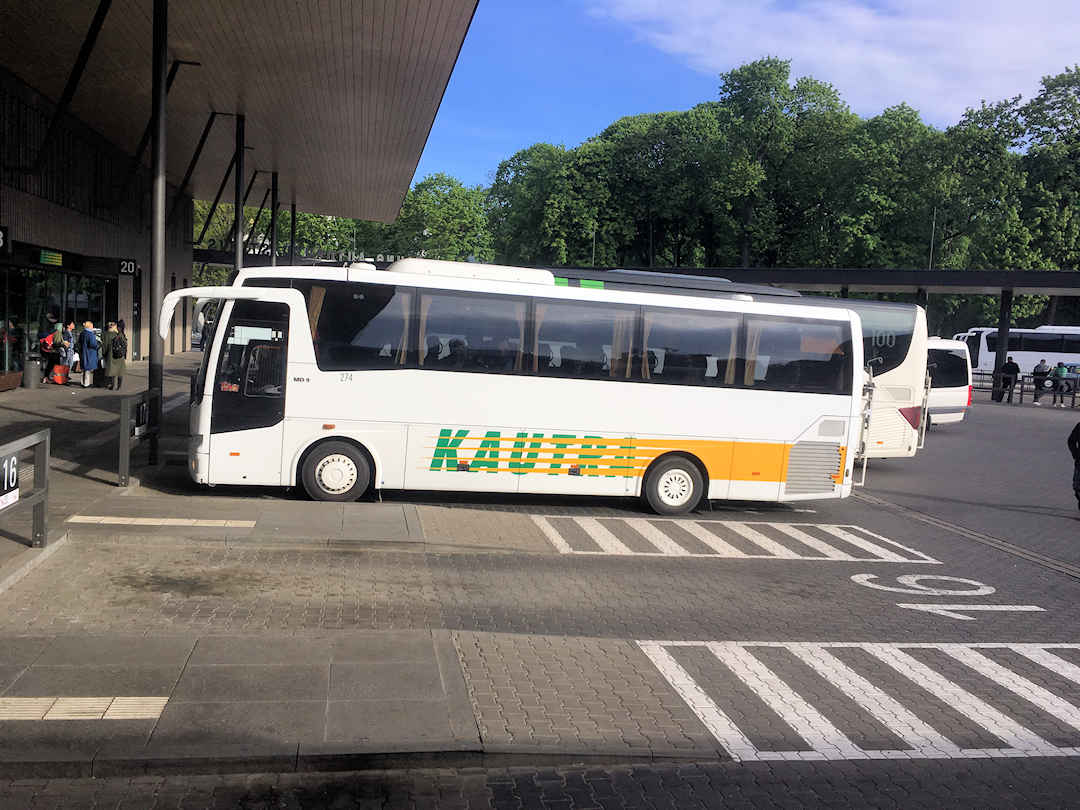
There are reliable bus connections pretty much everywhere in the Baltics
While you don’t really need a car to explore the Baltics , we know some of you prefer your own wheels. To hire a car in Vilnius or Riga , we recommend using one of the aggregator websites like Skyscanner or Expedia . On Saaremaa , we found two rental companies:
- Rendi Autorent
We used Rendi Autorent (we just booked over the phone, and they dropped the car off at/picked it up from our accommodation). The car was an older model, but fine for a day. Expect to pay around EUR30 (with basic insurance).
If you do not hold an EU or UK driver’s licence, note that the car rental company may require you to bring an International Driving Permit. We encountered that issue when trying to rent a car in Tallinn (as we have New Zealand driver’s licences). If that is a concern for you too, make sure you read the terms and conditions (and if need be confirm over the phone) before you book a car.
I wrote the Baltic itinerary based on our own experience. If you have been to the Baltics as well and you have something to add to this list of affordable things to do, please feel free to contact me. If you liked my Baltic tips and found them helpful, I would appreciate if you could share them with your friends and family via the Share buttons below. Even better, link to the page from your personal blog or social media platforms.

2 Weeks in the Baltics: 2 itineraries
DISCLAIMER: This post might have links to travel services and products that we enjoy. We might make a commission from it at no extra cost to you.
The Baltic region of Europe does not get a lot of attention compared to central, west, south, or even east Europe. Not because it lacks stunning locations, but because during World War II, the Baltic region was greatly destructed by the bombing. The countries affected have to rebuild from scratch.
Another reason is that the countries in the Baltics left the USSR (Russian Empire) not too long ago. In the 1990s, they became independent countries roughly 30 years ago. This means that the countries have yet to make their name and impact in the world.
Today, the countries in the Baltics have their own languages, cultures, cuisines, and fantastic places to showcase to their visitors. In this itinerary for 2 weeks in the Baltics, I’ll help you get a visual idea of what a trip to Lithuania, Latvia, and Estonia for 14 days would look like.
CHECK OUT: 2 weeks in Italy and 2 weeks in Spain
THINGS TO KNOW BEFORE VISITING THE BALTICS

When planning a trip to a place you have never been to, it can be intimidating and overwhelming to imagine what the place is like, how to move around, or how to get out of the airport without looking silly.
Below are some basic but important things you should know if you plan a trip to the Baltics. The following information will help you visualise your trip and prepare. These will help you write a travel itinerary that is suitable for you.
What are the countries in the Baltic Region
There are three countries in the Baltic Region. T his includes Lithuania, Latvia, and Estonia. The region got its name due to the fact that these countries lie next to the Baltic Sea. This is why some resources might even say that Sweden, Finland, and Poland are also part of the Baltics.
However, Sweden is known as part of Scandinavia and the Nordics, while Finland is part of the Nordic region. Poland is often regarded as East Europe or Central Europe.
Regardless, in this travel itinerary, we will be focusing on Lithuania, Latvia, and Estonia.
When is the best time to go to Baltics
The best time to visit the Baltics is between spring, summer, and autumn. This region is not known for skiing or other winter activities although it doesn’t mean there’s nothing to see.
During the warmer months, you can walk around, rent a push bike, and enjoy a nicer and more comfortable visit. One thing that’s amazing in this region is the rainy season.
The wet season often happens during summer. However, the chance of rain is often no greater than 30%. This means you can be assured that your day won’t have to be cancelled due to rain.
The winter can be rough. It’s dark and cold, and most locals prefer to hide away in warmth. But during this time, there are fewer tourists and the hotel prices are often lower. There are places you can visit that are only possible or more enjoyable during winter.
You can walk on the frozen lake in Lithuania, visit a sauna in Latvia, and explore the Christmas markets in Estonia.
Are 2 weeks enough in the Baltics
2 weeks in the Baltics is plenty, you can see a few cities and cover all three countries. About 3-4 weeks would be better, but with great planning, you can cover the Baltic Region in just 14 days.
If you want to travel slowly, perhaps choose between 2-3 cities only, but if you want to see as many places as possible, you can squeeze 3-5 cities into your itinerary . Just make sure that you choose cities that are connected by bus, train, or direct flight.
If you have never been to Europe or have been but thinking of seeing a different place this time, check our compilation of different itineraries for 2 weeks in Europe , from central Europe, southern, eastern, and even up to the Nordic region.
Getting around
Moving around between Estonia, Latvia, and Lithuania is very easy. T hese three countries are well-connected to one another by public transport. You can travel around the region by bus, train, car, and of course, flying.
If you prefer the freedom of your time, I recommend renting a car. However, double-check if the rental company will allow you to cross the land border with the vehicle and if you can drop it off in a different country.
You can also rent a car in each country and move around with it, but it won’t help much. You can instead use ride-hailing apps and taxis, ride the bus and train, and book flights.
Taking the bus and train will be the cheapest option. The train might be faster than flying because you have to arrive at the airport with enough time before your flight. When moving around each city, you can rent a push bike or take a local bus.
Language and currency
All three countries have languages of their own . Latvian or Lettish and Lithuanian are a little similar but still very different from one another. However, their neighbour Estonia uses a Finnic language that’s more similar to Finnish or the main language in Finland.
The Baltic region uses Euro . Lithuania prefers using a bank card for payment, but cash is still preferred in smaller villages. In Latvia, paying with your credit card or debit card is also common, however, cash is mostly used.
On the other hand, Estonia is a major cashless transaction and highly promotes digital payments throughout the country.
Regardless, you’ll be able to find ATMs anywhere. It’s best to have some cash with you and try to pay with your card first. If you plan to use public transportation in Lithuania and Latvia, cash will be preferred.
What is the average cost for 2 weeks in the Baltics
14 days trip in the Baltics will cost you between $1,300 to $1,600 . This will cover accommodation, transportation, a few tours, and meals, but excludes flights to and out of the Baltic region.
If you plan to spend $2,000 , you should have plenty of budget and be able to spoil yourself. Just keep in mind that these numbers don’t include the main flight to and out of the Baltics.
But of course, for a luxurious trip, plan to spend about $8,000 or more if you want to stay in five-star hotels and book private and premium tours.
The Baltics are members of the EU, and are also part of the Schengen State Area , where all countries share the same visa policy and are treated as one when it comes to the number of days foreign visitors are allowed to stay.
This means that if your passport is from most countries in America, Japan, Australia, South Korea, New Zealand, Malaysia, and Singapore, you can enter and travel in the Baltics for up to 90 days in a 180-day calendar.
Other travellers must apply for a Schengen tourist visa in the embassy or consulate of either Latvia, Lithuania, or Estonia near you as soon as 6 months in advance.
Other basic travel tips
The travel sites and tools below are my favourite services to use. They offer lots of choices suitable for people on a budget or those looking to splurge a little bit. A lot of these sites also offer flexible cancellations without high fees in case your plans change.
PINNED MAP OF MUST-SEE PLACES IN THE BALTICS
Click the icon on the top right to enlarge the map. Credit: map data: Google
2 WEEKS IN THE BALTICS ITINERARY
Discovering the Baltics is quite an interesting destination. It’s less popular and with fewer visitors, yet it definitely has its own identity that’s worth discovering.
These two travel itineraries for 2 weeks in the Baltics will help you visualise what your trip could look like and help you create a travel plan that is suitable for you.
You can also check out our itinerary for 2 weeks in Eastern Europe where you’ll have plenty of choices.
Itinerary #1: First-time – Vilnius, Riga, Tallinn
If you have never been to the Baltic States, this itinerary will be perfect for you . It’s basically a route where you will visit the capital cities of the three Baltic countries.
As you traverse through each location, not only can you see the difference in the culture but also how you transition from Eastern European culture from Lithuania to a more Nordic setting as you approach Estonia.
It’s possible to simply use the train and buses to get from one city to another, but you can also take domestic flights for more convenience.
Vilnius for 5 days
Walk through the cobbled stone streets of Vilnius, dine at a local restaurant and order a tasty beer root soup matched with refreshing locally brewed cider. This is a suitable day out in Vilnius, whether it’s summer or winter.
Apart from that, you can also visit museums such as the Museum of Occupations and Freedom Fights, which showcases the occupation of Russia in Lithuania during World War II. If you are into art, explore the Museum of Illusions, Lithuanian National Museum of Art and MO Museum.
If you’re visiting in summer, make sure to do a day trip out in the Green Lakes for some swimming and boat rides. A day trip to the stunning Trakai Castle is also a must. In winter, the lake that protects the castle freezes so it’s safe to walk on it.

Riga for 4 days
Riga is the gateway to the Finnic region of Europe. Here, you will notice that the Latvian and Lithuanian languages are similar but different. However, once you cross the border to Estonia, you will see a very big difference in language between Latvian and Estonian.
Besides the fascinating language shift, Riga is also known for its lively nightlife, historical sites, and bold art scene. It’s also home to such interesting architectural progression.
Stand in a city where you will find Gothic churches, take a short walk, and you’ll be welcomed with Medieval buildings; another cool infrastructure is delivered by the gorgeous Art Nouveau style.
The must-see spots in Riga include the Central Market, House of the Black Heads, and St. Peter’s Church just to name a few. You can explore areas relating to World War II and take a day trip to Sigulda, Jelgava, and Kemeri National Park.
You can book a bus from Vilnius to reach Latvia.
Tallinn for 5 days
Do you know that Estonia is one of the least religious countries in the world? According to World Population Review, at least 60% of Estonians are not affiliated with any organised religious groups or church.
Despite this, there are still cathedrals and churches to visit in Tallinn during your visit. If this is not your interest, there are plenty of sites related to World War II where you can learn more about Estonia’s history during this time.
But one of the things that many people don’t know about this country is the fact that it has vast national parks, dense woods, and is home to unique birds.
When exploring Tallin, you definitely have to see Alexandar Nevsky Cathedral. Take a walk through the Town Hall and visit Kadriorg Art Museum. If you find yourself with some free time, get on a day trip to Lahemaa National Park, Tartu, and Jägala Waterfall & Harju County.
To get to Tallinn from Riga , you can drive for 4 hours or that the train for 5 hours. There’s also a flight you can book or the bus which is more affordable though takes longer.
Itinerary #2: Off-the-beaten-path – Kaunas, Klaipeda, Liepaja, Jelgava, Parnu
For those who want to avoid tourists, you can visit less-known cities . You might have to take a bus or train ride from the capital city to reach your destination. You may also rent a car, but if you plan to cross the border with it, make sure to check with the rental company.

Kaunas for 2 days
Take the train or bus from Vilnius to Kaunas, a city where walls are painted with incredible art. Ensure your camera is all charged up because Kaunas is a charming and photogenic location. Since it has fewer tourists, it’s very easy to take a nice shot of every corner.
The streets are paved with cobbled stone just like a truly European city. This is matched with traditional yet colourful houses. Finish your walk around by dining at a local restaurant serving Lithuanian dishes.
Klaipeda for 3 days
Klaipeda is a coastal city in Lithuania, just north of Kaliningrad. It is the oldest city in Lithuania and is known as an ice-free port, although it’s located in such northern part of Europe. Because of this, when you explore the city, many of the spots are related to history and marine life in this region.
During summer, many Lithuanians go to Klaipeda to enjoy the beach and warm weather. The locations you want to see in this city include Smiltynės Beach, Klaipeda Castle, and Lithuanian Sea Museum.
You can reach Klaipeda from Kaunas by taking a less than 5-hour train or a 3-hour bus. You can also drive, which is the fastest option for around 2 hours.
Liepaja for 2 days
It’s now time to go to Latvia. Since you are on the coast already, you can head to Liepaja, a coastal town in Latvia . Although Riga is a beach city, many locals go to Liepaja in summer, where there are fewer people during the peak season.
This town is also a known location for music festivals and concerts. Its fantastic long-stretch Liepaja Beach is perfect for enjoying the sun and reading a book. It’s also located right next to a big Seaside Park, which means the nose from the road is dampened by beautiful trees.
You can take a bus directly from Klaipeda to Liepaja , which will take around 1 hour and 40 minutes.
Jelgava for 4 days
Jelgava is less than an hour’s drive south of Riga. It’s a popular spot for a day trip from Riga due to its accessibility and cool atmosphere. Although not too far from the capital city, Jelgava is a nice town where you can still stay away from big crowds of tourists while admiring the Baltic culture and scenery.
While exploring, make sure to check out Jelgava Castle, St. Trinity Church Tower, and take a walk on the scenic wooden boardwalk in the beautiful River Svete.
Getting to Jelgava from Liepaja is not a problem . There’s a direct train, and the journey is about 2 hours and 40 minutes, the ticket will cost between $5-$10. You can also take the bus, which is cheaper but will take longer since it will stop in Riga and you need to switch buses.

Parnu for 3 days
Parnu is north of Riga, a great place as your next and final destination during your 2 weeks in the Baltics. It’s a quiet little town where you can enjoy the peaceful beach called Parnu Beach . There are not a lot of things to do in Parnu. However, this is the gateway to the incredible Sooma National Park.
If you like the outdoors, you definitely have to spend most of your time in Sooma National Park. It is a wetland and a perfect location for canoeing, bird watching, and long walks.
Sooma is only half an hour’s drive from Parnu , or you can take the local bus. Check the bus schedule since it doesn’t go that often.
THINGS TO SEE AND DO (each city)
Now that you know which cities you want to include in your 2 weeks in the Baltics itinerary, it’s time to show you a great list of must-see places in each city. This will help you visualise how you want to explore each city or the order of the places you want to go to.
Vilnius, Lithuania
- Discover Vilnius via a walking tour or bike tour
- Gediminas Castle Tower
- Jewish Quarter and Soviet Sites
- Vilnius Cathedral
- St. Anne’s Church
- Hill of Crosses – day trip from Vilnius
- Gates of Dawn
- Hot air balloon over the city – read the reviews
- Museum of Occupations and Freedom
- Cathedral Square
- Learn about Lithuanian cuisine – book a walking food tour or dinner with a local family
- Three Crosses Monument
- Palace of the Grand Dukes of Lithuania
- Full-day tour around Vilnius, to Trakai, and Keranve – check the tour price
- Vingus Park
- Walk around Uzupis – the art district of Vilnius
- Day trip to Paneriai Memorial Park – a tour that includes Trakai Castle
- Day trip to Trakai Castle – if you visit in winter, you can walk on the frozen lake to reach Trakai Castle – do an audio guide tour or one with a guide
Riga, Latvia
- Explore Riga downtown on a walking tour or Old and New walking tour
- House of the Black Heads
- Riga Central Market – go on a food-tasting tour
- St. Peter’s Church
- Beer or Cide tour – check this bike tour
- The Freedom Monument
- Latvia Palace – and medieval castle tour
- Riga Cathedral
- Day trip to Rundale Palace and Hill of Crosses – check the tour cost
- Three Brothers, Latvian Museum of Architecture
- Art Nouveau Building – sign up for an architectural bike tour
- Latvian National Museum of Art
- Go on a pub crawl
- Daugava River – go on a boat tour or this one
- Day trip to Jelgava
- Try out the shooting range – read the reviews
- Museum of the Occupation of Latvia
- Day trip to Sigulda and Turaida – look at the price
Tallinn, Estonia
- Join a city tour – either a walking tour or 2-hour guided tour or an electric bike tour or push bike tour
- Kadriorg Art Museum
- Tallinn TV Tower
- St. Olaf’s Church
- Danish King’s Garden
- Estonian cuisine – do a 3-hour food tour or a food tour with a market visit on a bike
- Alexander Nevsky Cathedral
- Go on a Shore Excursion – check out this tour or cruise port with a bike tour
- Tallinn Town Hall
- Estonian Open Air Museum
- Day trip to Lahemaa National Park – read the reviews
- Day trip to Parnu
- Day trip to Helsinki, Finland by ferry
Kaunas, Lithuania
- Book a Kaunas tour – check the price first
- Kaunas Castle
- 9th Fort of the Kaunas Fortress
- Devil’s Museum
- M.K Ciurlionis Museum of Art
- Explore Kaunsa, Rumsiskes, and Pazaislis Monastery – read the reviews
- Pazaislis Monastery and Church
- Laisves Aleja
- Kaunas Town Hall
- Vytautas the Great War Museum
Klaipeda, Lithuania
- Curonian Spit / National Park – do a private tour or explore on a bike
- Lithuanian Sea Museum
- Dino Parkas
- Klaipeda Castle – do a walking tour
- Smiltynes Beach
- Museum of Clocks
- Black Ghost of Klaipeda
- Canoe Tour – look at the price
Jelgava, Latvia
- Jelgava Castle
- Masti Wake Park
- Jelgava St. Trinity Church Tower
- Adolfs Aluna’s Memorial Museum
Liepaja, Latvia
- Karosta Prison
- Liepajas Muzejs
- Liepaja Beach
- Liepaja Seaside Park
- Artillery Battery No 1 (Northern Fort)
- Rose Square
- Liepaja Lake
- Liepaja Northern Breakwater
Parnu, Estonia
- Sooma National Park – book a canoe and walking tour
- Parnu Beach
- Church of Catharina
- Parnu Museum
- Punane Torn
- Parnu Mud Baths
- Pärnu Rannapark
- Concert Hall
- Day trip to Saaremmaa Island
MUST-TRY DISHES, DRINKS, AND SNACKS

Make sure that you don’t leave the Baltics State without trying out the local cuisine. You will notice how similar many of the dishes are across these three countries. The most common that I released is the beetroot soup. All three countries have this dish and offer various versions.
Try at least 4-5 local dishes and see which one you like . I also recommend you try the cider and not forget the tasty and freshly baked pastries.
- Bulviniai Blynai
- Šaltibarščiai / Beetroot Soup
- Juoda Ruginė Duona
- Alus (Beer)
- Grybai/Mushroom Cookies
- Aukstā Zupa – cold soup
- Sklandrausis
- Frikadeļu Zupa
- Siļķe Kažokā
- Pelēkie zirņi ar speķi
- Aukstā Gaļa
- Biešu Zupa – beetroot soup
- Vürtsikilu Suupiste
- Eesti Kartulisalat
- Mulgikapsad
- Lillkapsas Juustukastmes
ACCOMMODATIONS (per city)
To help you arrange your travel plans, I included a quick list of places to stay in the Baltics based on each city. You will also see that you can choose hotels depending on your budget.
- Affordable: Jimmy Jumps House or Mikalo House or Downtown Forest Hostel & Camping
- Mid-range: Comfort Hotel Rock n Roll or Domus Maria or Come2Rest – Subaciaus 5 or Art City Inn
- Luxury: Hotel Vilnia or Novotel or Neringa Hotel or Radisson Blue or Congress Avenue Hotel
- Affordable: Orange Cat Rooms or Cinnamon Sally Backpackers Hostel or Blue Bird Hostel
- Mid-range: Avalon Hotel & Conferences or Wellton Riga Hotel & Spa or Hestia Hotel Draugi or Forums Boutique Hotel
- Luxury: Grand Palace Hotel or Neiburgs Hotel or Relais Le Chevalier or Hilton Garden Inn
- Affordable: Alur Hostel & Bar or Villa Kadriorg Hostel or Imaginary Hostel
- Mid-range: Thomas’ Home or ibis Hotel or Rija Fonnental Design Hotel or St Olav Hotel
- Luxury: Revelton Suites or The von Stackelberg Hotel or Rixwell Collection Savoy Hotel or Radisson Collection Hotel or Centennial Hotel
- Affordable: Mr Jo’s Hostel or Villa Kaunensis or The Monk’s Bunk
- Mid-range: Berman House or Botanical Garden Studio or Moja Accommodation
- Luxury: Moxy Hotel or Radisson Hotel or Boheme House or Kaunas City Hotel
- Affordable: Surf Camp or Light House Coliving
- Mid-range: B2 Apartments or Ararat All Suites Hotel or Aurora Hotel
- Luxury: Michaelson Boutique Hotel or Victoria Hotel or Euterpe Hotel
- Affordable: Hotel Vilhelmine or Dzivokli Dunikas
- Mid-range: Amrita Hotel or Liva Hotel
- Luxury: Roze Villa or Promenade Hotel or Art Hotel Roma
- Hotel Karklu Muiza
- Affordable to Mid-range: Hotel Tammsaare or Hommiku Guesthouse or Green Villa or Hotel Villa Wesset or Parnu Rannastaaddioni Hostel
- Luxury: Studio28 Boutique Rooms or Wasa Resort Hotel & Spa or Carolina Hotel

SUMMARY OF 2 WEEKS IN THE BALTICS
The Baltic State might not be a popular and glamorous region of Europe compared to the central or southern part of the country. However, it has a lot to offer. From history to cuisine, culture, and very welcoming locals.
The Baltics is a great place to visit if you want to get away from big crowds of tourists or want to experience that deep and true European adventure without spending too much and without the feeling of having to rush your trip.
I hope that you found this list of travel itineraries for 2 weeks in the Baltics helpful in planning your own travel trip.
TO SAVE THIS ITINERARY, PIN THIS IMAGE BELOW:


The Essential Guide to the Baltic States
Here’s what you need to know about traveling to estonia, latvia, and lithuania—and why you should be bound for the baltics on your next trip..
- Copy Link copied

Vilnius, the capital of Lithuania, has a history that stretches back to the Stone Age.
Photo by Diego Flore/Shutterstock
Strung along the Baltic Sea, Estonia, Latvia, and Lithuania are small nations with long and complicated histories. Nearby larger powers, especially Russia and Germany , have long shaped their cultures, politics, and commerce, but despite being part of the Russian and Soviet empires at different points, each nation has managed to maintain its distinct character and language.
The three Baltic countries also possess an appearingly paradoxical balance: Although highly urbanized in certain areas, they’re mostly forested or agricultural. Their capitals offer the appeals of other northern European cities—lively restaurant and bar scenes, galleries, museums, and shopping—while their national parks help preserve the beauty of the region, from the birch forests dotted with lakes and streams to the vast stretches of dunes occasionally interrupted by centuries-old castles.

The capital of Latvia, Riga is known for its beautiful art nouveau architecture.
Photo by Shutterstock
Occupying the northern end of Eastern Europe, the three countries have been at the center of many historic moments. While nominally independent since World War I, they remained firmly under Soviet influence long after Word War II, even though they never officially joined the Soviet Union. On August 23, 1989, 2 million protestors formed a human chain across the Baltic republics and set in motion the official withdrawal of the Red Army. In the years since, these nations, and the more than 6 million people who call them home, have seen a burst of entrepreneurial energy, making them more exciting than ever to visit.
When to Go to the Baltic States
The Baltic States are countries best visited in summer, when temperatures are mild and the sun shines for 18 hours on the longest days. Taking advantage of off-season deals may backfire: Spring is often brief and wet, fall is chilly, and winter is dark, cold, and challenging for travel, especially to rural areas. Even if you stick to the milder coastal regions (where Tallinn and Riga , the Estonian and Latvian capitals, are located), you’ll often find yourself facing snowy forecasts in the colder months.

Tallinn, the capital of Estonia, boasts a bustling restaurant and bar scene.
Getting Around the Baltic States Tallinn, Riga, and Vilnius—the capitals of Estonia, Latvia, and Lithuania, respectively—all have major international airports, though there are no direct flights from North America. If you intend to explore beyond the capital cities—and there are many reasons to do so—know that bus service is more extensive than train, but both are limited and a rental car will make traveling much easier. Another way to see the region is by cruise, many of which provide a great introduction to Tallinn, Riga, and Klaipėda (Lithuania’s major seaport).
Food & Drink
The cuisine of the Baltic countries has much in common with that of Russia—beets and potatoes, delicious dark breads, and a variety of dumplings are served at restaurants throughout the region. You’ll also find fish and shellfish, however, because cooks here take full advantage of the bounty of the Baltic Sea. Game is popular, too, and if you visit in the summer, you’ll get to indulge in the area’s short but spectacular growing season. Fruit wines are a favorite, so toast your adventure with a glass of cherry or black currant wine.
All three capitals have existed for centuries, with Vilnius’s history stretching back the furthest (a settlement was there as early as the Stone Age). In each city, the old towns are ideal for wandering among medieval, Gothic, and Renaissance buildings. Riga is famous for its many art nouveau structures, while Vilnius has recently begun to recognize the beauty of some of its Soviet-era architecture. Cheap flights from elsewhere in Europe have helped fuel bar, music, and restaurant scenes, though more so in Tallinn and Riga than Vilnius.

Time travel back to the Middle Ages with a visit to Lithuania’s Trakai castle.
Photo by Marek Dravnel/Shutterstock
Can’t Miss Beyond touring the historic sites in the capital cities, you’ll want to visit the medieval castles that dot both the coastlines and interiors of the Baltic States. Trakai, a castle on an island in Lake Galvė, is especially stunning, recalling the height of the Grand Duchy of Lithuania. Also worth seeing is the atmospheric Sigulda in Latvia, where 12th- and 13th-century crusaders lived while attempting to convert the Baltic region’s then-pagan population.
For culture outside the capitals, head to Lithuania’s major seaport of Klaipėda, a city strongly influenced by Germany (it was politically part of the country until 1923, when it was annexed by Lithuania). Also visit Estonia’s second largest city, Tartu, home to important history and the country’s largest university. When you’re craving nature, Lahemaa, Estonia’s largest national park, features a variety of landscapes, from forests to dunes to alpine lakes.
Practical Information
U.S. travelers to Estonia, Latvia, and Lithuania do not need to obtain any special visas, but their passports must be valid for at least three months beyond the end of their planned stay. Each country has its own language and, while locals will appreciate any effort to learn a few phrases, you’ll find that most people who interact with travelers speak at least some English. All three countries are in the eurozone, with Lithuania the last to adopt the euro as its currency in 2015. C and F plugs are common in all three states and the standard voltage is 230—the adapters you would use when traveling in Western Europe will work in these countries, too.
>>Next: The #1 Reason You Need to Hit Up Latvia This Summer
Baltic states

- 1.1 Other regions
- 2.1 Capitals
- 3 Other destinations
- 4.1 History
- 4.2 Religion
- 6.1 By plane
- 6.2 By boat
- 6.3 By train
- 7.1 By plane
- 7.3 By train
- 7.4 By bicycle
- 8.1 Itineraries
- 12 Stay safe
The Baltic states are three countries of north-eastern Europe , on the eastern shore of the Baltic Sea. The three small countries have a long interesting history, and an impressive cultural heritage dating back to the Hanseatic League . The region's 175,015 km 2 are home to 6.3 million people, nearly half of them in Lithuania.
Countries [ edit ]
North to south:

Other regions [ edit ]
Kaliningrad Oblast – a bizarre small slice of Russia between Lithuania and Poland that makes for an interesting addition to a Baltic trip. Entering the exclave requires a Russian visa.
Cities [ edit ]
Capitals [ edit ].

The three capitals all have UNESCO -listed old towns, Soviet concrete new towns and occasional 21st-century buildings in between.
The cities are roughly listed North to South
- 59.437222 24.745 1 Tallinn – smallest of the three but still an aspiring global-feel city and Estonia's digital industrial hub
- 56.9475 24.106944 2 Riga – the region's biggest city, Latvia's party town has much to offer
- 54.687222 25.28 3 Vilnius – Lithuania's cosmopolitan centre
Other [ edit ]

The towns and cities are roughly listed North to South
- 58.38 26.7225 4 Tartu – Estonia's second city with a relaxed student vibe
- 55.871389 26.516111 5 Daugavpils – second biggest city of Latvia
- 56.508333 21.011111 6 Liepāja – Latvian beach city known for its music and the former secret Soviet military town of Karosta
- 54.9 23.933333 7 Kaunas – second biggest city of Lithuania, with an old town and many museums and galleries
- 55.7125 21.135 8 Klaipėda – Lithuania's harbor city—belonging to Germany until World War I under the name "Memel" and still served by Baltic Sea Ferries from German ports
- 55.928056 23.316667 9 Šiauliai – Lithuanian city with odd specialist museums and the Hill of Crosses
Other destinations [ edit ]

- 58.416667 22.5 1 Saaremaa – largest Estonian island, green landscapes dotted with quaint villages and a medieval castle
- 56.9665 23.722111 2 Jūrmala – Latvian resort town on the Baltic Sea; draws a crowd in summer for the long stretch of sandy beach and cool forests
- 55.274444 20.970833 3 Curonian Spit – a sandy spit containing the largest drifting sand dunes in Europe, at the border of Lithuania and Kaliningrad Oblast
- 59.393056 27.774167 4 Sillamäe – former Soviet closed town in Estonia near the Russian border, today it is known for having a treasure trove of beautiful Stalinist architecture
Understand [ edit ]
Baltic States are diverse, and each country and region has a different history and culture. While Latvia and Estonia were under foreign dominance for centuries, Lithuania was one of the major powers in the region. The culture of the Baltic states was strongly influenced by Scandinavians, Germans, Poles and Russians. Modern history of the Baltic States has been especially shaped by various forms of Russia , since it gained control over the area during the 18th century. People of the Baltic States have strong national identities, and are today well-integrated with the Western world.
History [ edit ]
The Baltic states have had vibrant histories. Christianity , Germans and feudalism arrived together in the 13th century. Also in the 13th century, the Grand Duchy of Lithuania emerged as a major political player in Medieval Europe. The Hanseatic League dominated commerce on the Baltic, until the Danish Empire and later the Swedish Empire came to rule the Sea.
In the 16th century, the Polish-Lithuanian Commonwealth took over control of the area. It lasted until the late 18th century. The area of the Baltic states was then largely absorbed into the Russian Empire , with a slice of modern-day Lithuania being given to Prussia , later becoming part of the German Empire .
As part of revolutionary Russia's speedy exit from World War I in 1918, the early Soviet government relinquished claim on the region, creating the states which exist today. Germany was also considerably reduced in size after the war.
The Soviet Union rebounded and re-annexed all three states during World War II in a move greatly resented by their populations. The Nazis used anti-Soviet sentiment to help them form Baltic auxiliary police units that assisted the Nazis in wiping out almost all of the area's Jewish population (see Holocaust remembrance ) and others considered ethnic or ideological enemies (notably including Poles), though the Nazis' claims to being liberators were not widely believed for long. The Soviets yet again annexed the Baltics in 1944, in a move condemned as illegal in the West but tolerated as part of the emerging Cold War diplomacy. All three states maintained a strong sense of national identity throughout the Soviet period, with fierce resistance against Soviet rule by the local population, culminating in an independence movement known as the Forest Brothers that was active throughout the entire period of Soviet rule. In 1990–91, the Baltic states led the breaking away of the USSR's constituent republics from the central government. They all swiftly turned away from Moscow towards the West, and joined both the European Union and NATO in 2004. All Baltic states are members of the Eurozone with Lithuania being the last to do so in 2015.
The Baltic States have seen rapid economic growth since their independence, leading to them being dubbed the Baltic Tigers ; while hit hard by the 2008 financial crisis, they saw a rush of emigration, but recovered in a few years. As of 2020, they are the only former Soviet republics whose standards of living have risen to Western European standards, and the only ones to be classified as "advanced economies" (i.e. developed countries) by the IMF. In 2017, the United Nations Statistics department changed categorization of the Baltic States from eastern Europe to northern Europe.
Kaliningrad , subject of ethnic cleansing and repopulated by Russians loyal to Moscow, became an exclave of Russia after the fall of the USSR.
All three countries are home to significant ethnic Russian minorites as a result of the history of Soviet rule. These communities generally maintain close ties with Russia, making relations tense between them and their respective governments. While Lithuania granted citizenship to its ethnic Russian minority following independence, most ethnic Russians in Latvia and Estonia are stateless permanent residents; they are allowed to remain in the respective countries, but not allowed to vote in elections or claim certain welfare benefits.
Religion [ edit ]
Traditional Christian affiliations were Lutheranism in much of Latvia and Estonia, and Catholicism in Eastern Latvia and Lithuania. Communism and the general loss of religion across the Western world have heavily altered the traditional affiliations: Once a Lutheran country, Estonia is now among the least religious countries in the world, as 49% say they have no belief in God, and a further 40% claiming to be either agnostic or not being affiliated with any religion; in Lithuania, 49% say they do, and Catholicism remains a vital life force in everyday life; Latvia is evenly split between Lutherans, Orthodox (mostly among the Russian community), and irreligious. A smattering of pagan belief persists, for example the Romuva faith, perhaps because this was one of the last areas of Europe to be Christianized.
Talk [ edit ]

Each of the three countries has its own language, with Russian as a common second, or even first, language of many, particularly in the cities. English is widely spoken among the younger generation educated after independence; those born after the fall of the Soviet Union tend to be fluent, especially in Estonia. German is often understood and spoken at a conversational level. Any attempt to speak the native language is greatly appreciated.
The Estonian language's similarities with Finnish, along with Finnish cultural influences, allow much mutual comprehension. In Tallinn Finnish is spoken or understood at most places of interest for the average visitor. Some Polish is spoken in Lithuania.
Given that Russian was the language of the perceived colonial oppressor, it may not be well received. Try first communicating in the native language or in English, at least for greetings and to ask whether the person prefers to speak Russian. The negative attitude towards Russian tends to persist more strongly in Estonia and Latvia, with Lithuania having less anti-Russian language sentiment. Generally speaking, the younger generation schooled after independence is more likely to speak English than Russian. That said, all three countries have significant ethnic Russian minorities whose native language is Russian, particularly in some neighbourhoods in their respective capital cities and in areas near the Russian border. Younger ethnic Russians who were educated following independence usually speak the respective country's national language as well, though older people who were educated during the Soviet era typically do not.
Latvian and Lithuanian are related to each other as Indo-European Baltic languages. It is commonly believed that Baltic and Slavic languages are more closely related to one another than other branches of the Indo-European language family, but this is not even yet the unanimous opinion of linguists and unlikely to be of much help understanding people or recognizing cognates. Estonian is relatively closely related to the Finnish language, much more distantly related to Hungarian (about as close as Spanish and Greek are) and not related to the Baltic languages or any other Indo-European language even though there are of course loanwords.
Get in [ edit ]
All three states are part of Europe's Schengen area .
By plane [ edit ]

Generally speaking there are fairly good connections from other parts of Europe and from the western half of the former Soviet Union. Save for a few exceptions, getting to the Baltics from elsewhere always includes at least one change of planes.
Riga Airport ( RIX IATA ) in Latvia is by a large margin the busiest airport in the Baltic countries. It is the main hub of AirBaltic , which flies to around 60 European cities (including most major cities) and has seasonal routes to the Middle East and Central Asia. When flying to the Baltic states, chances are you will pass by Riga.
Tallinn Airport ( TLL IATA ) in Estonia is a small airport with fewer direct connections than its neighbors. However, it ranks among the best airports in the world for its excellent customer service, modern facilities, and overall efficiency. It is Air Baltic's second hub, is served by several low-cost airlines, and has flights to most major airports in northern and central Europe.
Vilnius Airport ( VNO IATA ) in Lithuania is mostly served by budget airlines Wizz Air and Ryanair, for which it is a major hub, although a number of major carriers and charter airlines can be found as well. Vilnius also has a rather large catchment area that reaches deep into Belarus and northeastern Poland.
Ryanair also provides several connections to Kaunas Airport [dead link] ( KUN IATA ). Palanga Airport serves as a small regional airport for the western part of Lithuania with a few routes.
By boat [ edit ]
Ferries criss-cross the Baltic . A popular route is Helsinki – Tallinn . There are also many Baltic cruises .
By train [ edit ]
Rail connections are pretty shoddy, not to say awful and even not recommended. Vilnius is the entry hub for rail travelers from Warsaw , Kaliningrad and Belarus . All three capitals have at least daily connection to Moscow and St Petersburg . Note that the trains from Vilnius to Moscow and from Kaliningrad to St Petersburg via Vilnius (do not confuse with direct train from Vilnius to St Petersburg) pass through Belarus, which might require an additional visa.
Get around [ edit ]
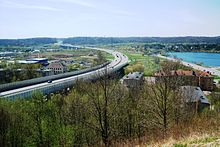
The capitals are all connected to each other by short flights. From Riga there are flights to Kaunas and Palanga . From Tallinn there are flights to Tartu , Kuressaare and Kärdla .
By bus [ edit ]
The international bus network is pretty well developed making for easy movement. Bus is in most cases the fastest and most practical way for intercity travel if you don't have a car.
None of the capitals have direct services between them, though each country has a usable and cheap domestic network. Most (if not all) lines radiate from the capital cities, and do not link up with each other. Riga to Tallinn can be traveled by train in one day by changing in Valga . As of Dec 2023, there is no service between Riga and Vilnius , but the Lithuanian national operator hopes to begin a direct service in 2024. [1]
By bicycle [ edit ]
The international bicycle project, BaltiCCycle may provide you with a lot of information and help.
By car [ edit ]
Your own car or a rented one is also an option, especially if you want to get to places outside major cities. Large highways are in a good shape and almost comparable to the ones in the Nordic countries , sideways and streets (in particular in smaller towns) much less so.
Two strategies may be helpful for travelers who want to explore the Baltic states by rented car. The first is to take buses or trains between major cities and rent and return a car locally. The other is to rent a car in one of the three capitals and then make a loop or figure 8 route. Returning a car to a different city or country will increase the cost by at least 50%, but usually 100%.
See [ edit ]

- The Baltic sea coast with sandy beaches, including the Curonian Spit
- Some of Europe's lowest "highest country points"; Suur Munamägi (318 m) near Võru , southeast Estonia, Gaiziņkalns (312 m) near Madona , central Latvia and Aukštojas (294 m) southeast Lithuania near the Belarusian border.
- World heritage listed old towns in all three capitals.
- Buildings and other remains from the Soviet Union .
- The Hill of Crosses near Siauliai
Itineraries [ edit ]

- Via Baltica – Goes from the Estonian capital Tallinn through Riga , Latvia and Kaunas , Lithuania and continues to Warsaw , Poland .
- Cruising the Baltic Sea
Do [ edit ]
Eat [ edit ].
The Baltic cuisine has similarities with the Nordic , Russian , and Central European cuisines. They have a wide range of bread , eaten to nearly every dish. The most traditional alcoholic beverages are beer and vodka , though kvass (a beverage commonly made from rye bread) is also common.
Drink [ edit ]
Due to their geography and history, the Baltic States are fond of hard liquors and beer. Another common drink in the area is Kvass.
Stay safe [ edit ]
Unlike their giant next-door neighbor to the east and many other former Soviet Republics, the Baltic states have never suffered from rampant criminality; they are usually safe from a tourist standpoint, and taking the basic precautions will suffice to feel comfortable. Larger urban areas do have their (marginal) share of non-violent offenses, whereas rural areas are virtually crime-free.
Nevertheless, keep the following information in mind:
- Alcoholism is a significant problem in the Baltics. Watch out for people (including tourists from the UK, Germany, and Russia) who cannot control themselves, especially in bars, nightclubs, and low-income neighborhoods. Security guards in the region have very low tolerance on the matter, and they will resort to violence to get rid of drunkards.
- Violent crimes such as aggravated assaults have occurred, but are usually limited to poor towns and areas off the beaten track. The city of Narva in northeastern Estonia, the western part of Riga, and the northern suburbs of Vilnius are notable examples of places with higher-than-average crime rates.
- In Riga and Tallinn, the Russian mafia remains present, but is unlikely to harm tourists. Both cities are also known to inhabit "gopniks", the Slavic equivalent of chavs in the UK.
- Open homosexuality is rare in the region, and same-sex couples will often be met with glaring stares by older generations, but violent reactions are unlikely, especially as the younger generations are more accepting of the LGBT community.
Go next [ edit ]
Stay on the Baltic coast with:
- Gdansk – historic Prussian port town, later home of the Polish movement Solidarity, which helped bring down communism
- Helsinki – enter the Nordic countries via the charming Finnish capital
- Stockholm – easily reachable by ferry and plane, Sweden 's capital is another excellent entry point to Scandinavia
- Kaliningrad – estranged former Soviet brother of the Baltics, Russia's westernmost outpost
- St Petersburg – a prettier way to see Russia than Kaliningrad
Or head inland to:
- Minsk – see Stalinist architecture of the 1950s at its best
- Moscow – Russia's capital is the world's northernmost city with more than 10 million inhabitants, and has a lot to see and do
- Warsaw – vibrant cultural life and good dining
- Has custom banner
- Has mapframe
- Maps with non-default alignment
- Maps with non-default size
- Has map markers
- Articles with dead external links
- Outline regions
- Outline articles
- Region articles
- All destination articles
- Has Geo parameter
- Pages with maps
Navigation menu
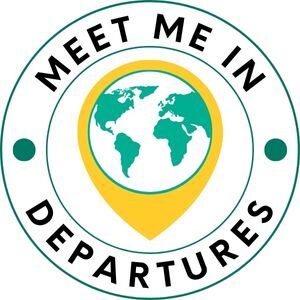
Best Of The Baltics: 23 Unmissable Things To Do In The Baltics
Compared to other destinations in Europe, the Baltics are relative newcomers to tourism. However, you’ll find an abundance of things to do in the Baltics making them a great destination for anyone interested in culture, historical cities and stunning landscapes.
The 3 Baltic countries Latvia, Lithuania and Estonia were under Soviet rule until 1991, which meant they were pretty much off limits to the outside world. That hasn’t held them back with the Baltic tourism industry seeing a huge influx in visitors wanting to explore this once restricted region.
This article delves into the best of the Baltics and covers a multitude of bucket list worthy things to see in Estonia, Latvia and Lithuania.
With their outstandingly well preserved UNESCO listed mediaeval historical centres, rolling and untouched landscapes dotted with fairy-tale castles and captivating history, you can see why visiting the Baltics is on the up, and for good reason!
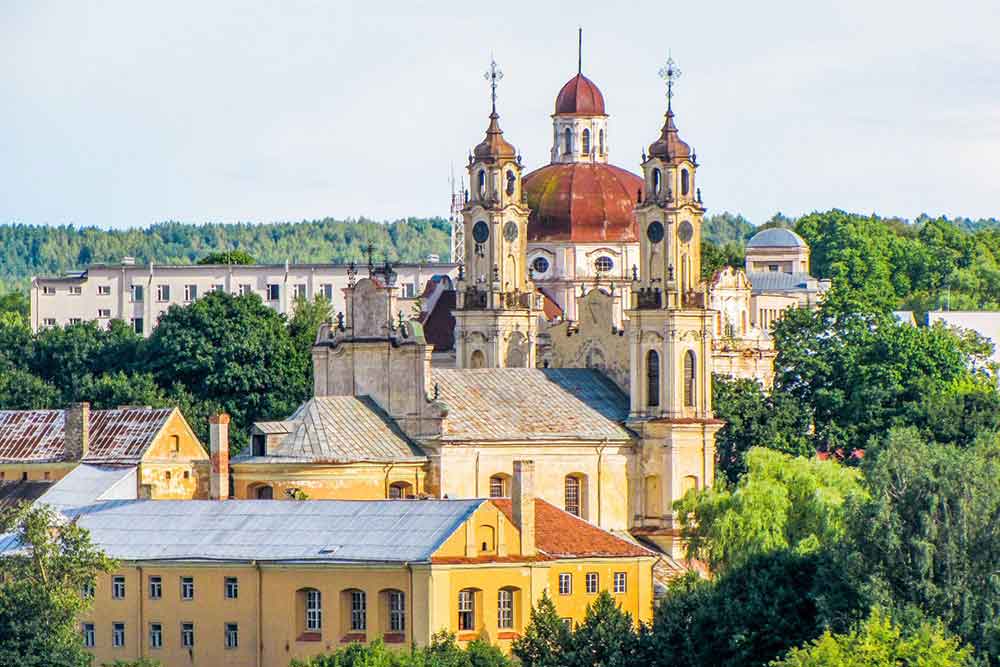
This post may contain affiliate links. To find out what this means and more information visit my disclosure page .
Top 3 Things To See In Lithuania
Organised tours of the baltic states, street art of tartu, druskininkai, what currency does the baltic states use, save it for later, best of the baltics – overview.
This best of Baltics travel guide is divided into sections. The first part gives a list of the 3 top things to see in the Baltic nations as well as gives some useful information to read before you visit.
The second section goes into the best things to see in each of the Baltic with insider information about what to expect, getting there, and the location.
Finally, there’s an FAQ section which answers any other questions you might have about planning your trip to the Baltics. You can also download this free checklist, planner and information sheet straight to your inbox.

Your download is on its way to your inbox 🙂
Top 3 Things To Do In The Baltics – By Country
If you’re planning your Baltic itinerary, and only have a limited amount of time then this section covers what to see in Latvia and Lithuania as well as Estonia. You could easily visit all these highlights within a week, especially if you have access to your own transportation .
Top 3 Things To See In Estonia
- Tallinn UNESCO Historical Centre
- Lahemaa National Park & Viru Bio reserve
- White Sandy Beaches of Pärnu
Top 3 Things To See In Latvia
- Riga UNESCO Historical Centre
- Art Nouveau District, Riga
- Jurmala Beaches & Villas
- Vilnius UNESCO Historical Centre
The Hill of Crosses
Trakai castle, baltic states travel guide – useful info.
So, you’ve got an overview of what to see in the Baltic states. If you’re in the planning stages of your Baltics vacation, this section covers some useful information to know before you get there.
You can easily do the items listed in this article by public transport, especially if you base yourself in one of the nation’s capitals. The Baltic states also make for a great road trip destination . If you want someone else to do the leg work, then you can also join a small group guided tour.
Getting To The Baltic States
It’s easy to get to the Baltic states, you have several options. The obvious is to fly, Tallinn, Riga and Vilnius all have international airports.
You could also opt for entry via land – the Baltic states share borders with Poland, Belarus and Russia with trains and buses going from each. To get the best deals on travel, book in advance using the Omio App .
Getting Around The Baltic States
When you plan your Baltics itinerary take into account how you’re going to get around. I started in Estonia and worked my way down through Latvia and then Lithuania. Each of these cities is connected by an efficient bus service.
You could fly between each country, but honestly, it’s not worth it. By the time you get to the airport, check in, and wait, it’s quicker to go by land.
An alternative is to rent a car and drive. Roads in the Baltic states are well maintained, and outside of the cities, there’s little traffic, so this is a great destination for a road trip.
If you’ve only got a limited time, don’t want to navigate the public transport system or hire a car, then an alternate way of visiting the Baltic States is on a small group guided tour .
Check Availability: Best of the Baltics Highlights 8 Days Tour
What To Do In The Baltics: 23 Things For Your Baltic Bucket List
This section goes into the best places to visit in Baltic States and is categorised by country. Don’t forget you can download this Baltic best-of guide straight to your phone for future reference.
Best Things To See In Estonia
Because of how close it is to Finland, a big chunk of Baltics tourism goes to Estonia as day trips between Helsinki to Tallinn . The city certainly has the most Scandinavian feel compared to the likes of Riga and Vilnius.
Aside from Tallinn, there’s an abundance of things to do in Estonia, and although I really liked all of the Baltic states, this country was my personal favourite. Here’s the lowdown on the best things to see.
Tallinn Historical Centre
Undoubtedly, one of the best things to do in the Baltic States is to spend time exploring the UNESCO listed city of Tallinn .
You might be wondering which is the best Baltic city. Truth is, they are all stunning. However, Tallinn, for me, was the most visually beautiful. The UNESCO listed historical centre ticks every box for being a quintessential mediaeval city, with walls, defence systems connected by a myriad of pretty cobbled courtyards and alleyways to spend hours getting lost in.
The city is also rich in history, which includes a pretty harrowing Soviet past. There is still an abundance of relics left from the Soviet era including the eerie KGB prison and headquarters, which is actually housed in a beautiful Art Nouveau building right in the heart of the old town.
Check Availability: Tallinn City Tour with Local Guide

Inside the historical centre, there are so many things to see. Tallinn is best explored on foot as the city is compact and mostly pedestrian. The city is surrounded by hills, and there are several look-out points dotted about to walk up to and take beautiful panoramic photos of the city going past the fantasy like Alexander Nevsky cathedral.
One of the most popular things to do in the historical centre is to walk around the remaining segments of the city walls. Once, these surrounded the entirety of the city to protect it from invaders. Today, they no longer make a complete circuit, but you can walk along parts of it. Lots of the sections still have watch towers to climb.
If you want to learn more about the history of the city, then it’s worth doing a walking tour of Tallinn with a local guide to give you more insight into the city.
Make sure you visit the gigantic and rotund Kiek in de Kok. Ideally, you’ll want to spend a couple of hours here. This building also houses the entrance to the super eerie Bastion passages which are built under the city and used in several wars. If you’re looking for a great Instagrammable spot, then be sure to visit St Katherine’s passage.

Tours of Tallinn
There’s a lot to do in the Estonian capital, it’s a great city to wander about by yourself. However, to make the most out of your time in Tallinn, I reccomend joining a tour.
Related Article: 33 Things To See In Tallinn
If you want to escape Tallinn and leave the other tourists behind, you should catch a bus to Kuressaare. This town, with its cute historic centre, is located on Saaremaa, Estonia’s biggest island.
Most travellers visit Kuressaare to see the Episcopal Castle, a huge fortification that dates back to the 14th century. From its towers, you have a great view of the town, but the highlight is the museum inside the castle.
Here, you can learn everything you’ve ever wanted to know about the history of Saaremaa. Oh, and did we mention the hidden passageways? The castle is full of them, small, winding staircases that you can take to get from one floor to another.

If you’re tired of climbing stairs, it’s time to relax. Kuressaare is famous for its spas, and here, you’ll have the chance to unwind in a typical Estonian sauna. If you travel to the Baltics in the low season, you could even look into renting a room in a spa hotel. They offer great discounts in winter.
In the evening, we recommend having dinner in a traditional windmill. Here, you can try lots of typical dishes from the region, like wild boar or kama jelly. Give it a try; we’re sure you’ll love it.
Explored by Daniel and Ilona from Top Travel Sights
Mooska Farm Smoke Sauna
Located in Võru County 3 hours from Tallinn, Mooska Farm Smoke Sauna is an Estonian must-see! Mooska Farm Smoke Sauna is a farm and smokehouse, but the traditional Estonian smoke sauna is by far the biggest attraction here.
No Baltics tour would be complete without experiencing a traditional sauna. The smoke sauna experience has been awarded a UNESCO Intangible Cultural Heritage of Humanity certificate and is meant to improve your overall sense of wellbeing – in body, mind, and soul. It gave us important insight into local traditions and was an experience we will remember for years to come.
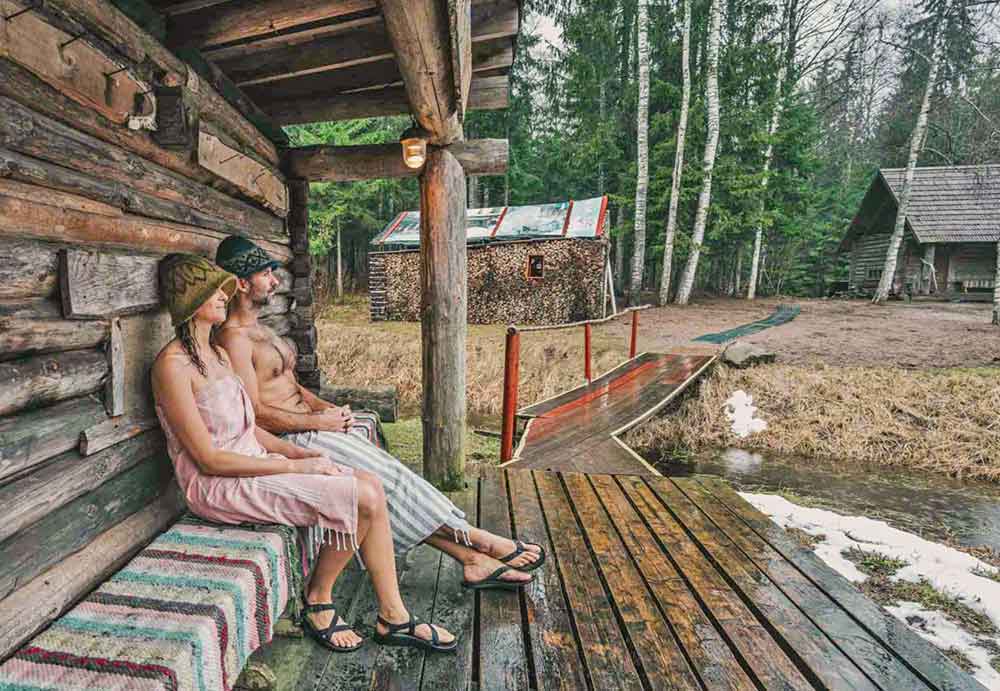
The 3-hour Smoke Sauna experience is guided by the mother of the smoke sauna and wonderful hostess, Eda. She’ll instruct you in and out of the sauna and lead the chanting, meditation, and whisking with leaves, twigs, and honey scrubs. There is also an optional ice-cold skinny dip!
Meats are traditionally cured inside the Estonian smoke sauna and after our sauna experience, we were given the chance to try some alongside other local products from the farm. The meal was homemade and made us feel like the food was reason enough to visit the farm.
Depending on the time of the year, you can also partake in a nature tour with Mooska Farm which typically involves snowshoeing, skiing, or walking through the local forest.
Explored by Oksana & Max from Drink Tea & Travel
Pärnu is home to one of the best Baltic beaches, and one of the most popular beach destinations across the three Baltic States. Czars and Russian officials made the journey here for their retreats and tourists continue the tradition every summer.
During the long summer days, the town roars to life with tourists and the sandy shores of the Baltic Sea become party central. When the temperature drops, though, it becomes quiet once again and a peaceful place to wander.

Did you know that Pärnu was where Estonia’s independence was first proclaimed? It was read in 1918, and not in Tallinn, from the balcony of the old Endla theatre. The Soviets may have demolished it and a new one was rebuilt in the city, but a replica of the balcony has sprung up in the original spot, with the proclamation inscribed on it. You’ll find it close to the bus terminal.
Away from the beaches, there is still plenty to see in Pärnu during the off-season : A leisurely walk (watch out for the black ice in winter!) takes in marshes teeming with birdlife, traditional wooden houses, including the poet, Lydia Koidula’s, childhood home. You’ll also find decorative art nouveau buildings such as the Villa Ammende, along with historic mud baths and ancient fortifications like the red tower and the Tallinn gate.
It’s enough to turn a rest stop on the Riga-Tallinn journey into an overnight stay.
Explored by Nicholas from Rambling Feet
The Struve Geodetic Arc
If you’re into the sciences or even interesting facts, then this is a must-see on your Baltic States itinerary. The Struve Geodetic Arc is a series of triangulations done by Tartu University astronomer and geographer Friedrich Georg Wilhelm Struve between 1816 and 1855.
The measurement of the meridian, which used the observatory at Tartu University in Estonia as its base point, represented the first accurate measurement of a long segment of an earthly meridian.
This work helped determine the exact size and shape of the planet and marked an important step in the development of earth sciences and topographic mapping.
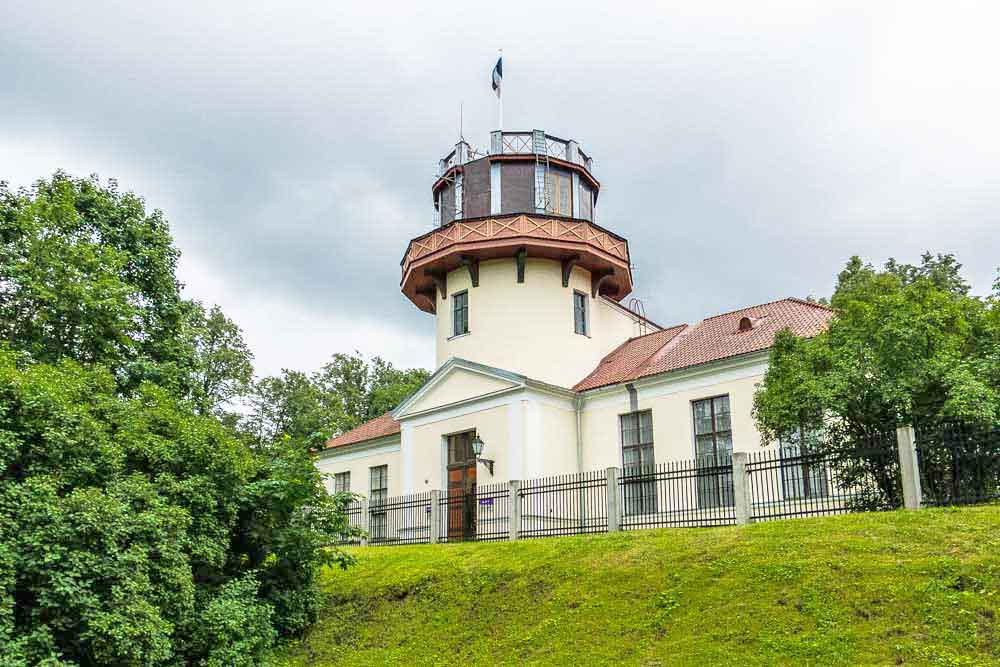
Struve did important early astronomy work on the nature of binary stars. But his actual thesis work was on determining the exact geographic coordinates of the Tartu Observatory. This, indirectly, led to his geodesic project.
The observatory is no longer in use, but now serves as a museum and includes many of the measuring instruments, many handmade by Struve, that he used in his work in mapping and astronomy.
The Tartu University site, along with other points along the meridian in 10 countries stretching from Norway to the Black Sea, are a UNESCO World Heritage site.
Explored by Tom from Travel Past 50
Lahemaa National Park
After touring the cities, it’s sometimes nice to take a break from the concrete and decompress in nature.
Estonia never gets its dues as a significant tourist attraction. When someone mentions Estonia, the first reaction is “Brrrrr. It’s cold.” Yes, the country borders Russia and the capital city of Tallinn is only a 2.5 hour ferry to Scandinavia, but summers in Estonia are a hidden gem.
Lahemaa, the largest national park in Estonia, is a short 1-hour bus ride from Tallinn. If you don’t want to go by bus, then book onto a full day tour of Lehemaa instead.
Summer days this far north of the equator mean EIGHTEEN hours of sunlight. The seemly endless days allow for exploring Estonia’s gorgeous national parks, of these fantastic natural areas, I highly recommend adding Lahemaa to your Baltic travel itinerary.
Check Prices: Tallinn To Lehemaa National Park Full Day Tour

The park is perfect for a picnic in the forest, exploring quaint seaside villages, overnight glamping at the eco-hostel at Projekt Kodu, and hiking the wooden planked path of the Viru bog. Viru bog hike is a uniquely Estonian nature walk.
The 2 to 4-mile hike is over a giant biodiverse peat bog. To keep from disturbing the ecosystem, you hike over wooden planks. The path is well marked, simply follow the planks, with information signs highlighting the plants you will commonly encounter.
The highlight is the view from the lookout tower overlooking the dark pools of bog water. From that viewpoint, I felt transported back into time, as if I was looking over a scene from Jurassic Park.
Explored by Marco from Nomadic Fire
The university city of Tartu is located 186 kilometres (116 miles) southeast of Tallinn and is the hub of Estonian street art . So much so that each year there is a street art festival, Stencitibility.
Although technically street graffiti is an illegal activity in Estonia, the festival has been running for over 10 years. If you’re a fan of street art, then this is one of the best Baltic cities to visit to find it, in abundance.
The styles differ and are created by local and international artists. With pieces ranging from playful and cartoon-like, to full on political satire. No matter where you walk in the city, you’ll pass some form of street art that adorns every possible surface.

Large murals decorate the walls of buildings, but you’ll also find artwork on letter boxes, street lamps, doors and roads. Don’t forget to look up and back over your shoulder. You’ll be surprised by how much artwork you will see.
Urban art is a constantly evolving medium, with new pieces cropping up all the time. I’m sure you’ve heard of the urban artist, Banksy, well Estonia has their own answer who uses a similar signature stencil style with pieces provoking political and social issues. Again, like Banksy, Edward von Lõngus keeps his real identity hidden.
Read Next: Visit Tartu – Estonia’s Street Art Capital
Best Things To See In Latvia
Baltic states tourism is alive and kicking in Latvia. Nestled between Estonia and Lithuania, this is the middle sister that attracts visitors passing through the states, with the capital Riga a solid favourite.
There’s an abundance of things to do in Latvia. Here’s the lowdown on the best things to see.
Riga Historical Centre
The Latvian capital has been dubbed the ‘Paris of the north’. It’s easy to see why; beautiful architecture, located on a river and plenty of café culture. If you’re spending any time in Latvia, make sure that you dedicate a couple of days to explore Riga city .
The Old Town of Riga is a listed UNESCO heritage site and is filled with remarkable buildings and picturesque cobblestone alleyways. The historic centre has been lovingly and painstakingly restored and brought back to their original glory after the city’s turbulent past.
The compact city is ideal to get lost in. When you visit Riga, be sure to see Town Hall Square and make sure to visit the House of the Blackheads . The colourful unmissable facade is one of Riga’s oldest and most beautiful buildings.
Book Here: Riga Guided City Walking Tour

Then climb one of Riga’s most iconic landmarks, featuring the bulbous spire, St Peter’s Church for an amazing view across the river and the city. If you want to learn more about the history of the city, then book onto a guided Riga city walking tour .
If you’re after one of the livelier places in Riga, then head to Livu Square or the areas surrounding the cathedral where you’ll frequently find street entertainers, live music and market stalls as well as plenty of places to drink. Don’t forget to try the local drink; Riga Balsam!
For the architecture aficionados, then Riga is also the Art Nouveau capital of the world . Albert Street is where you’ll find the highest concentration of them. It’s certainly worth half a day exploring the opulence of a bygone era. If you have more than a couple of days in Riga, then it’s also worth doing a day tour out to Rundale Palace.
Tours of Riga
There’s a lot to see in Riga. One of the most efficient ways to see the best of the city is on a tour. You might like these Riga city tours.
Read Next: The Complete Guide To Riga
Kemeri National Park
If you’re wondering what to do in Latvia to get away from the bustle of the city, then head out to explore some of the unique nature tucked away in the region.
Kemeri National Park is located about 45 minutes away from Riga, Latvia, and makes for a perfect day trip from the city . The park is home to stunning bogs, forests, therapeutic mud, and mineral waters.
Popular things to do here include hiking through the park including the Great Kemeri Boardwalk, Lake Sloka, Forest House, and Lake Kanieris. It’s also a great place for birdwatching and cycling.
Check Availability: Full Day Trip From Riga to Kemeri National Park

The most popular and beautiful thing you can do in the park is to walk the Great Kemeri Boardwalk at sunrise. You’ll be shrouded in mist, walking through the bog, enjoying the painted sky, wrapped in silence. Towards the end of the walk, climb to the top of the observation tower for amazing 360-degree views of the entire bog.
To get to the Great Kemeri Bog Boardwalk, you can take a train from Riga train station every 2 hours for just a few euros. Get off at the Kemeri Railway Station. It’s a bit of a walk from the train station to the beginning of the hike, follow the signs for “Leila Kemeru tirela taka”. If you don’t want to go by train book a tour to Kemeri from Riga .
If you’re travelling the Baltics by car, then you’ll be glad to hear there is plenty of free parking at the park.
Explored by Kelly from Snap Travel Magic
Gutmanis Cave
Gutmanis Cave is located in the Sigulda region of Latvia, about 1 1/2 hours by bus from Riga. It’s not very big, but what makes Gutmanis Cave famous is the number of legends that happened here. The most famous one is The Rose of Turaida, a Latvian love story.
This tragic tale is about a girl who was found as a baby during the Swedish – Polish war. She was adopted, baptised and given the name Maia. One day she fell in love with a gardener named Victor Heil and soon after they were engaged.

Legend says they met at Gutmanis Cave in the evenings, but an army deserter named Jakubowsky also fell in love with Maia. One day Jakubowsky sent Maja a love letter pretending to be Victor asking her to meet him at the cave. She arrived, and Jakuboswky appeared out of the shadows and attempted to force himself on her.
She begged for him to stop and said in return, she would give him a scarf that would protect him from all injuries, and if he didn’t believe her, he could try it out on her first. He stabbed her with his sword as blood gushed from her neck. She would have rather died than betray her fiancé.
Today, every Latvian knows this story, and if you visit the Sigulda region during your Baltics travel you will certainly come across it. It’s so famous that there is even an opera based on the legend.
Explored by Marika from Clumsy Girl Travels
A warm sea breeze, colourful art nouveau villas, flower-lined pedestrian streets, and a carefree attitude are just some of the signature hallmarks of Jurmala .
This cheerful little resort town is located right in the middle of the Gulf of Riga, and just 40 minutes from Latvia’s capital, Riga. For added effect, take the retro elektrichka (electric train). If you’re pushed for time, you can also book a half day trip to Jurmala .
If you’re travelling to Latvia, don’t miss visiting Jurmala – especially in the summer!
Although this town was known for its healing sanatoriums back in the USSR, it hasn’t lost its charm. It’s still the go-to place for travellers around Eastern Europe.
Book Here: Jurmala Half Day Tour From Riga

Grab a towel and start your trip at one of Jurmala’s beaches. My personal favourite is Majori beach, which is clean, has plenty of space to spread out, and is close to the centre. If you prefer something more active, then hire a bike and cycle along the coast .
Speaking of the centre: don’t travel to Jurmala without taking a casual stroll along Jomas Street! This is the main high street of Jurmala and is full of beautifully photogenic villas, boutique shops selling local Latvian goodies, and delicious cafes.
If you’re craving nature, the Dzintari Forest Park is the place to be: It’s the perfect spot for families, as there’s an entire children’s area. Whether you’re travelling to Latvia for a day or a week, Jurmala is a must for any Baltic States travel itinerary!
Explored by Luda from Adventures with Luda
Ventspils is a great stop off for a Baltic Road trip. Founded over 700 years ago this beach city is located on the western coast of Latvia. Ventspils is known as the Latvian capital of flowers and fountains.
Ventspils Port is Latvia’s oldest and one of Europe’s busiest ports. In the town centre, there is a beautiful historic carillon bell which plays the melody “Pie dzintara jūras” each hour. Other must-visit places are Livonian Order Castle and Ventspils Town Hall Square.
The entire city is adorned with flowers from spring to autumn. It is famous for its artistic spirit and numerous cow sculptures around the city. During the ‘City Festival’ in August, florists from Baltic states cover the Promenade of Ostas Iela with carpets of flowers. During this time, you will find several extraordinary flower sculptures and unusually shaped greenery, flower beds, and fountains all around the city.

Like many of the beaches in the Baltic States, Ventspils offers a beautiful white sandy beach with special areas for surfers and nudists as well as having plenty of amenities nearby.
If you want to learn more about the history of the area, you can discover Ventspils’s marine history in the Seaside Open Air Museum with its nostalgic collection of fishing boats, nets, and huts. Take a beautiful ride on a narrow-gauge steam train running from here.
If you’re after souvenirs, Ventspils market square is the best place for buying locally made products. The market was established in the 17th century and alongside the handmade gifts, you’ll find locals shopping for vegetables, fruits, clothes, flowers, plants and meat. If you have time, and you’re on a Baltic States road trip, you could spend at least a couple of days in Ventspils.
Explored by Moon Ray from Nomadic Mun
Sigulda is one of the most charming, yet underrated and lesser visited towns of Latvia . If you’re wondering what to see in Latvia that’s a little off the beaten track, then this is a true hidden gem.
Known as the ‘Switzerland of Latvia’, this region has an abundance of appeal for active travellers. I recommend renting an electric bike for half or a full day or joining a hiking tour of Sigulda . This way you can get closer to wonders like the Sigulda castle.
Take the cable car to the opposite slope passing over the Gauja river, the Sigulda’s bobsleigh track, and the hipster Jāņa market; a great option to stop for lunch and coffee.
Book Here: Full Day Tour From Riga to Sigulda with Castle, Ruins and Cave Visit

If you have your own vehicle, you can go a little further to discover places like Gutman’s cave, Krimulda manor, and Turaida museum. Finally, if you enjoy walking, don’t miss the nearby Cecili and Amata hiking trails in the wonderful Gauja National Park, a short distance from Sigulda.
If you don’t have a car, then book on to one a full day tour to Sigulda instead.
Ideally, you would want to visit Latvia between late spring or early autumn to make the most of the outdoor activities, however, if you visited during the winter, then be sure to add a visit to a local sauna into your plans.
Explored by Inma from A World to Travel
Best Things To See In Lithuania
Lithuania is the largest of the 3 Baltic states. Along with another UNESCO listed historical capital, there’s a load of stuff to see here.
Wondering what to see in Lithuania ? Here’s a list of the best things to see.
Vilnius Historical Centre
The Old Centre of the Lithuanian capital is one of the most beautiful Baltic cities, and as with Estonia and Latvia, is listed as a UNESCO world heritage site. The mediaeval city is known for its mixture of architectural styles with a huge emphasis on baroque style buildings.
A guided walking tour of Vilnius will give you loads of insight into this fascinating city. The main hub of the Old Town is Pilies Street and Gediminas Avenue. Both are lined with these exquisite buildings which are now a buzz with stylish cafes. boutique restaurants and often lined with street markets.
You could easily spend a couple of days in Vilnius getting lost and exploring the quaint cobbled paths, courtyards and alleyways. Be sure to visit Cathedral Square, the Vilnius Cathedral and the Town Hall Square as well as one of Vilnius’s most beautiful buildings, the Vilnius University – it’s got 13 courtyards!

Other must-see places are St. Anne’s Church and the Gate of Dawn, a 16th-century gate which once guarded the entrance to the original city.
One of the more interesting areas in Vilnius and certainly worth a few hours is the autonomous district of Užupis. This community within the city is filled with quirky artwork often made from recycled and reclaimed materials and thought-provoking and sometimes political messages.
Just outside of the historic city centre, you’ll find that Vilnius also has an outstanding street art scene.
Tours of Vilnius
Just like the other captials mentioned in this article, there’s a lot to see in Vilnius. This is another UNESCO listed city with an abundance of things to see. To make sure you don’t miss anything, book onto a guided city tour.
If you’re looking to get into a bit of Lithuanian history, Trakai Castle is for you. Completed at the start of the 15th century, this mediaeval castle stands proudly on an island in Lake Galvė in the town of Trakai. While the castle itself became obsolete centuries later, it stands as an important symbol of Lithuanian statehood.
To get to the Castle, you take a long wooden bridge from the shore across the lake. In the summer, the lake provides a beautiful relaxing escape from the city. In the winter, you can walk across the frozen lake to get to the Castle (ice conditions depending).
Inside the castle walls, there are numerous areas like the courtyard, keep, and chapel that you can explore. Spend some time wandering around the gallery rooms reading and exploring the artefacts. Trakai Castle is a great place to learn about the history of Lithuania .
Check Availability: Guided Tour of Trakai Castle

It is really easy to get to Trakai. The town is only about 40 minutes drive from the capital, Vilnius. Take the bus from Vilnius. The bus station in Trakai is south of the castle so you walk through the town – with cafes and shops – before spotting the castle across the water.
Because Trakai Castle is located on an island in the middle of a lake, there are various ways of seeing it; by kayak in the summer and by kick sledge in the winter when the lake is frozen.
Explored by Eric from Penguin and Pia
Located in the north Lithuania, not far from the small unassuming town of Šiauliai, you have perhaps the most fascinating thing to see anywhere in the country and also one of the best places to visit in the Baltics.
Thousands upon thousands of people flock here every year to visit the Hill of Crosses . A small hill in the countryside, dominated by more than 100,000 crosses!
Pilgrims have congregated here ever since the 1800s when there used to be a matter of hundreds of crosses here. In recent decades’ popularity has exploded and now it’s a wonderful sight to behold regardless of whether you are religious or not.
In 1993, the Hill of Crosses was so widely renowned that it was worthy of a visit from the then-reigning Pope John Paul II.
Book Here: Hill of Crosses Guided Tour with Transportation from Vilnius

Even if you aren’t religious, most people still find their visit here to be pretty magical. It’s fascinating walking up and over the hill taking in the incredible array of crosses, and the pictures look pretty cool as well!
After your visit, take some time to walk a bit further out from the hill, enjoying the large church behind as well as taking in views of the never-ending Lithuanian countryside in all directions.
A no-fuss option for visiting Hill of Crosses is to opt for a tour that includes transportation and a guide .
Explored by Bradley from Dream Big, Travel Far
If you’re looking for the perfect small city to visit in the Baltics, then you really can’t go wrong with the charming port city of Klaipeda. Often overlooked as simply a jumping-off point for the Curonian Spit, there are several things to do in Klaipeda that make it worth visiting in its own right.
As a very important ice-free port in the Baltics, Klaipeda has been a strategic city for centuries, giving it a robust and interesting history.
There is plenty of maritime history here that is worth learning about and a few museums that can help you to understand just how influential Lithuania’s third-largest city historically was. One of the most relaxing ways to explore Klaipeda is from the water in a handcrafted canoe .

Along with boasting a charming riverside pathway lined with lovely historic ships, Klaipeda also has a pretty old town worth wandering through and a great restaurant scene that showcases the newfound love for modern Lithuanian cuisine.
The city also has a couple of beautiful, white-sand beaches perfect for taking advantage of the long, sunny days of a Lithuanian summer.
Explored by Maggie from The World Was Here First
Grūtas Park
If you’re interested in either dark tourism, or Soviet history, then Grūtas Park will be one of the top things to do in the Baltics. Grūtas Park is located in southern Lithuania, not far from the border with Belarus. The nearest town is Druskininkai, about eight kilometres away.
When Lithuania declared its independence from the Soviet Union in 1990, the Soviet statues that had been on display in public spaces were pulled down and dumped in various places around the country. Then in 2001, a wealthy local man collected them and turned them into a kind of Soviet theme park, nicknamed “Stalin World”.
Check Availability: Dzukija National Park and Grutas Park Full-Day Tour

This idea was opposed by many at the time and remains controversial today, but the intention was never to glorify the Soviet regime. When you look at the park’s recreation of prison camps, barbed wire fences and guard towers, it’s clear that the purpose is to document the horrors of this difficult time in Lithuania’s history.
For a better insight, it’s worth exploring the parks and statues as part of a guided tour .
Among the 86 statues in the park, you’ll find a dozen or so of Lenin and even two of Stalin, which is pretty unusual. Even today, you’ll often come across Lenin statues while travelling in Russia and some other former Soviet countries. But de-Stalinization has been ongoing since the 1950s, so it’s rare to come across an image of him.
While I understand why some Lithuanians are not in favour of the park, I believe that it can help locals and visitors alike to better understand the country’s recent history.
Explored by Wendy from The Nomadic Vegan
Any trip to Lithuania, particularly in the summer, wouldn’t be complete without at least a day trip to Palanga! The Baltic sea brings large crowds together in the summer months when visitors can get their fill of swimming, sunning, and playing in the sand.
One of the most famous Baltic sea landmarks is the Pier of Palanga. It’s a great spot for photos as you head to the ocean, which you can also walk under depending on the tide. I highly recommend spending time at the Seaside Regional Park, a unique gateway to the sea with large trees that line the sand out to the water in some places.

This park is noted for the Dutchman’s Cap, which is a sand-dune climb to the highest elevation. Seaside Regional Park is also a breath-taking spot for sunsets. Bring a picnic basket and settle in the sand for a gorgeous light show through the trees.
Besides the typical beach activities, tourists can rent bikes to ride through green forest paths. A family favourite is the nearby Lithuanian Fairy Tale park, which features several interactive sculptures that kids like to climb and play on.
Palanga is located in the northwestern-most tip of the country, so it is an easy addition to any road trip through Lithuania and its neighbouring country, Latvia.
Explored by Monica from This Rare Earth
Dvina Missile Base and Žemaitija National Park
In September 1960 the Soviets started a top-secret construction. 10,000 soldiers moved to Žemaitija National Park, in northwest Lithuania to build a nuclear missile base that had the potential to destroy every city in Europe.
Once completed, its strategic importance to the Soviets in the Cold War was second only to Cuba. One of the best ways to enjoy the Žemaitija National Park is by canoe .
It was finally discovered in 1978 by U.S. reconnaissance teams but had been decommissioned 4 years earlier. Thankfully no missiles were ever fired.
Check Availability: Full Day Canoeing at Žemaitija National Park

Now it’s one of the very few nuclear missile silos in the world actually open to the public as a museum. The 100-foot deep missile silo is a highlight, tours also include displays of propaganda and the history of the Cold War.
You can easily visit the Cold War Museum when taking a road trip through the Baltics and enjoy the Žemaitija National Park that surrounds it. The vast parks, forests and lakes are home to rare wildlife such as Lynx and are well worth spending a day or two exploring while travelling in Lithuania.
Explored by Jo from Lost Wanders
Kaunas, the second-largest city in Lithuania, is one of the coolest places to visit in the Baltic States. The city has big historical value, it used to be an important trade centre in the region in the 15th century, in the interwar period Kaunas was the capital of Lithuania.
These are not the only reasons why you should visit the city! With its diverse history, old port and wars, Kaunus is steeped in ghostly stories.
With all the great things to do in Kaunas , you won’t be bored there for sure. Besides the traditional monuments; churches, old houses, and the remnants of the castle from the 14th century, Kaunas offers a great street art scene, exceptional modernist architecture from the interwar period, and some unique museums (like the only Devils Museum in the world).

This is also the only city in Lithuania with funicular trains, there are two of them in Kaunas, both built before World War 2. The coolest spot to visit in the city is the hidden Yard Gallery.
A local artist wanted to bring the community together and created a real wonderland, with numerous art installations, street art and photos of Jewish families that used to live in that complex.
When you get hungry numerous restaurants and cafes along Vilniaus street and Laisves avenue invite you to sit down, relax and enjoy the vibrant atmosphere of Kaunas.
Explored by Kami from My Wanderlust
Curonian Spit
On the western edge of Lithuania, drawing a line across the edge of the Baltic Sea lies the Curonian Spit; a thin strip of land 61 miles long and just over a mile wide that connects Lithuania to a small piece of Russia.
This idyllic gem is a UNESCO World Heritage Site shared by both countries and is the perfect destination for beachgoers, casual hikers, sailors, families and anyone who wishes to relax in nature. If you’re after something more active, then you can do a full day by canoe around the spit .
The Curonian Spit has a folkloric creation legend on the Lithuanian side. It was made by Neringa, a beautiful and good-hearted Lithuanian giantess, who collected sand in her huge skirt and poured it out to form the Spit so that it could protect the people on the coast from raging storms. Because of this, part of the land is named in her honour.
Book Here: Full Day Curonian Spit by Canoe

The town of Nida is also a draw for literary enthusiasts, as the Nobel Prize-winning author Thomas Mann spent summers in a holiday home he had built there in the 1930s.
In addition to this, on the Lithuanian side, the Curonian Spit is also home to the Hill of Witches – a supernatural-themed sculpture park in the village of Juodkrante, featuring wood carvings of people and creatures from mythology and supernatural lore.
The easiest way to get to the Curonian Spit is from the town of Klaipeda, and catch the ferry over to the spit.
Explored by Jeremy of Cultura Obscura
Druskininkai is a special place in Lithuania, this city is well known for spas, relaxation, healing mud, clean air, and mineral water. In the 50km spectrum, there are no factories, and Druskininkai is surrounded by forests that’s why the weather there is extremely fresh.
You can pick your own forest goodness like mushrooms, blueberries, cranberries, etc. Actually, this region of Lithuania has an old saying: “if there were no mushrooms and berries then Dzūkų women would be naked”. In the Lithuanian language, it rhymes.

If you love spa holidays or just want to relax for a weekend then Druskininkai is your destination. Also, there are many trekking roads, bicycle roads, lakes, and beautiful nature.
One of the top spas is UPA Medical Spa it is modern and minimalistic, the staff is super professional and they offer a variety of procedures. For top-notch Spa treatments and luxury accommodation, it’s well worth checking out this hotel.
I love that this city is small that’s why all restaurants and hotels personally take care of you and you make really warm memories of your stay. Also, I highly recommend going to a restaurant called “Sicilia” and trying their mussels, it’s just extremely delicious. It is one of the best restaurants in the city where you should come before dinner time during weekends or you will have to wait in line outside.
Recommended by To Youpiter
Best of Baltics – Frequently Asked Questions
So, are the Baltics worth visiting? Yes! I’ve given you plenty of great reasons to go.
This section has the answers to questions that frequently come up about the practicalities of visiting the Baltic states as well as useful travel tips .
What Are The Baltics Known For?
The Baltics are known for their UNESCO capitals, cultural richness, and unspoilt forests and lakes and white sandy beaches.
Can I do a small group tour of the Baltic States?
There are several companies offering tours of the Baltic States. Opt for a small group tour to get the most out of your visit. Check out this great small group tour of the Baltic States .
How do I get to the Baltic States?
Each country has their own designated international airport located just outside the capital. This makes getting to the Baltic States, from destinations within Europe or from as far away as the United States very easy.
Is it easy to travel around the Baltic States?
If you are travelling to the Baltic States without a car or not going on a tour, you’ll be pleased to hear that it’s easy to travel around the countries.
There are decent train and bus networks across all three countries, and services are very affordable and regular. If you really wanted you could get a flight between each of the capitals, but this isn’t necessary as they are only a few hours apart by bus.
A great travel app to search across bus, train and flight is the Omio App.
Where can I find a list of Baltic countries?
This article covers the three Baltic states, it’s made up of just three countries; Baltic countries list = Latvia, Lithuania and Estonia.
Which is the best Baltic country to visit?
It’s difficult to determine which Baltic country is the best to visit as the three Baltic states share a lot of common features as well as having a similar history.
Each of the Baltic capitals holds UNESCO world heritage status, fascinating history as well as beautiful landscapes. Purely based on the capital Tallinn, I thought Estonia was overall the most beautiful Baltic country, then Lithuania and then Riga but this is so subjective.
What are the best things to do in the Baltics?
Not sure what to do in the Baltic states? Here are some great tour ideas to give you some ideas.
When is the best time to visit Baltic States?
The winters in the Baltic States are cold, so unless you enjoy sub-zero temperatures, this probably isn’t the best time to visit the Baltics. However, that said, the festive season can be incredibly picturesque, with the pop-up Christmas markets, particularly in Tallinn.
Also, these countries are geared up for the cold weather, and things like saunas and ice skating are popular activities.
The best time to visit Baltic countries is from late spring through to early autumn, with July and August being the warmest months. Because the Baltic states are located high up in Europe, in June you can expect over 18 hours of daylight per day.
What should I pack for the Baltic States?
It can rain all year round, even in the summer. It’s best to pack layers of clothing, as well as have a lightweight, wind and rainproof jacket.
In the peak of winter, pack a thick jacket, hat scarf and gloves as well as thermal socks and waterproof shoes. It gets extremely cold.
For all year round, pack a pair of comfortable shoes as most likely, you will be doing a lot of walking. Take a pair of shoes with a good grip on the bottom, especially if you’re visiting historical city centres, as often they are cobbles and can be difficult to walk on.
You’ll be glad to hear that the three Baltic nations all use the Euro, so you won’t need to change currency when you enter a new country. Hotels and tourist places will accept cards and ATMs are frequently available.
Planning On Visiting The Baltic States?
If you had any doubts about are the Baltic states worth visiting, I hope this article has answered that.
How many of these places are you adding to your Baltic bucket list? I hope this Baltic travel guide has given you lots of inspiration.
Whether you’re backpacking the Baltics, on a short weekend break to just one of the countries, or on an extended Baltic States vacation, I’m sure you’ll find plenty of places of interest.
If you enjoyed this best Baltic places article , you might also like…
- Riga 3 Days Itinerary
- What To Do In Tallinn
- Estonia’s Street Art Capital of Tartu
If you found this article useful, or know someone that will, then please like and share. Don’t forget to pin it for future reference.
Have a question about visiting the best Baltic State? then head to the Contact page and drop me a message.

Hey, I'm Becki......and I'm a self-confessed travel addict and experience connoisseur!
In other words, I’m a bucket-list traveller, on a mission to experience the best things our fabulous little planet has to offer with the least environmental impact.
When I'm not climbing mountains, scuba diving, spotting wildlife or exploring ruins, you'll probably find me sipping coffee, or with a glass of wine in hand planning my next adventure.
Similar Posts

9 Winter Getaways That Will Cure Your Seasonal Blues
FacebookTweetPin Who says holidays are only for summertime? With winter getaways getting more popular with each passing year, it…

9 Best Cities in Lithuania to Visit + 3 Other Top Places to Visit in Lithuania
FacebookTweetPin Planning your trip to the beautiful Baltic nation of Lithuania, and not sure which are the best cities…

Is Lisbon Worth Visiting? 16 Great Reasons to Visit Lisbon
FacebookTweetPin Wondering, is Lisbon worth visiting? Fab, this article is for you! Lisbon is an absolute must-visit for travellers…

Is Madrid Worth Visiting? 16 Great Reasons to Visit Madrid
FacebookTweetPin Planning a trip to Spain and wondering is Madrid worth visiting? The short answer is yes! There are…

8 Best Day Trips From Brno, Czech Republic
FacebookTweetPin So perhaps you’ve landed in Prague and spent some time in the nation’s capital, and then had some…

Best 2 Days in Granada Itinerary 2024
FacebookTweetPin Are you looking for the best 2 days in Granada itinerary? Having lived in Andalucía for several years,…
APRIL SALE: Book now and get up to 60% off!
Baltic Tours & Trips
TourRadar has 232 tours visiting the Baltic countries - Estonia, Latvia, and Lithuania. The tours start from just 2 days in length, up to 21 days. The most popular month to go is August, which has the highest number of tour departures.
232 Baltic tour packages with 993 reviews

- In-depth Cultural
Baltic Experience
First and foremost with these tours, the enjoyment and experiences can be enhanced by the guide you have and our guide for this trip was exceptional! There are a LOT of cobblestones to walk on this tour so sensible footwear is an absolute must. Every city visited had its 'Old City" which were paved with cobblestones. It was a fascinating tour of the history of this part of Europe from medieval times to present day. The days spent canoeing and trekking in the countryside offered a welcome break from the cities visited. Klaipeda and the day trip to the unique, World Heritage-listed Curonian Spit National Park was just one of the highlights of the countryside experience. A hillside of Witches was a unique collection of sculptured tree trunks depicting all manner of mythical witches and demons. Amazing to wander through this huge area with such an engaging local guide to share the stories and history of the area. Hiking and canoe through Aukstaitija National Park's dense forests and lakes provided an opportunity for not only physical activity, but also time to swim and stop to appreciate the wild flowers and other flora. Plants that are considered garden annuals here, grow wild amongst the grasses and forests of this area. But Riga was one of the most beautiful cities visited. Fragrant gardens, fountains, old and new public sculptures and the well preserved and restored art nouveau buildings, made this city enchanting and fascinating. The trip did consist of long journeys especially by bus from Warsaw to Berlin. It proved to be quite exhausting and could be well improved by a stay somewhere in between these two major cities. Overall, if interested in Russian and German occupation and the history of these Baltic countries and their struggle for independence then this is the trip for it.
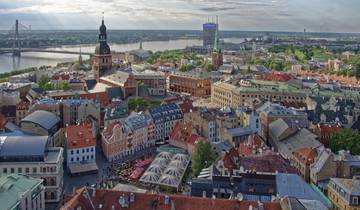
- Coach / Bus
- Sightseeing
The Best of Baltic Highlights in 8 days, 4* hotels (Guaranteed departure)
Generally a good tour and chance to see three distant Eastern European countries in depth. Good things include: Very small group, only eight on the English-language segment. Really nice hotels, all Radisson Blu, with the most outstanding and huge buffet breakfasts ever created. High quality tour bus from capital to capital to capital with included stops at 3-4 sightseeing locations. Bus + walking tours and tours of included sightseeing stops. Problems include: Another tour group in Spanish was with us on the bus and some walking tours. EVERYTHING was repeated TWICE-- English then Spanish. Every question was answered at length twice. Over bus sound system that droned on and on. Could not sleep or check cellphone comfortably. Pressure to book optional tours and optional dinners, which were expensive, did not seem great and were repeated by regular tour elements, The walking tours could be shorted a bit to focus on major attractions and not on everything. ps: Loved Vilnius -- modern, green, beautiful, nice people, advanced, with many historic sites including the old city.
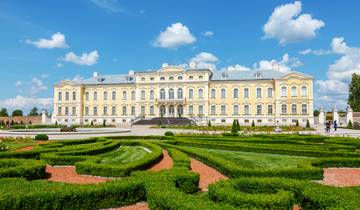
Stunning Baltics End Warsaw
Travel means something different to all of us. Danielle and I have done it all. We have flown between 7 or 8 countries in Asia (most hard). We have hired a private driver between many countries (easy). We have taken organized group tours and we have completely traveled with no plan. We have used trains and boats. Europamundo is somewhere in the middle. We found them because they were the only company that could easily get us between the Baltic countries (trains, country buses and private cars were not an option). It turns out, I really like this option. These tours are like a multi-country hop on hop off bus. You can customize your countries 100%. In other words, you tell them where you want to visit and they will bounce you on and off buses to make it work [Removed in Moderation]. The buses are modern enough with recline, arm rests, tray tables and foot rests (no wifi or toilet). They stop every couple of hours and the included hotel are 4* quality. Here all the hotels have had spa facilities (it is the Baltics after all). Each city includes a short city tour (combo of bus and walking) and breakfast is always included, sometimes more meals and admission to attractions. For those looking for the ease of travel with some free time this company is worth considering. You should note - Our tour is English but this is a Spanish company so often we listen to the explanations on the bus in Spanish first, then English. Overall, I highly recommend this company for what you get! Clean, nicer-end accommodations and easy travel between locations.
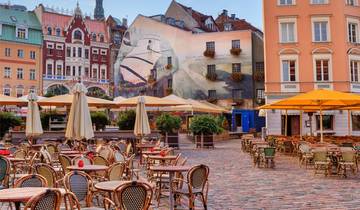
The Best of Poland and The Baltics in 13 days (Guaranteed departure)
Disappointed with the hotel locations, particularly Krakov, 20 minute bus ride from the main centre is unacceptable. Riga was the only location that was right in the middle of the old town and wonderful to be able to walk around at ease and not get local transport , a taxi, or at least a 10 minute walk back to the hotel . The hotels were all fine except again for Krakov, 3 star, not 4 and on a major freeway next to a petrol station and opposite Ikea - not a good start. Our guide, Elena was excellent, a very calm lady who dealt well with all the different personalities and was very informative on each county's history.

Baltic Adventure
Great tour , outstanding guide with great
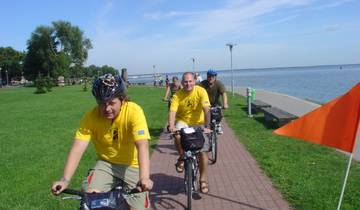
Great Bike Tour of the Baltics (fully guided from Vilnius to Tallinn 2024)
Everything was well organized, our guide was very knowledgeable and helpful and the routes we cycled and places we visited were beautiful. I can highly recommend to spend your vacation in the Baltics and take a tour by Baltic Bike Travel.
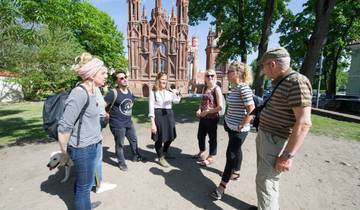
Highlights of Baltic States in 8 Days (Guaranteed Departure)
Many thanks and best wishes
- €100 deposit on some dates Some departure dates offer you the chance to book this tour with a lower deposit.

Baltics and Scandinavia in 10 Days (Guaranteed Departure)
It was good. For better improvement it far better to have only ONE guide in the chosen language AND have that same guide the whole duration of the trip. Not to be passed on to a different guide on some days. Very confusing with multiple guides for same tour!

Stunning Baltics End Berlin
Outstanding itinerary, guide, food , accommodation great local guides.

Poland and Baltic Discovery - 13 days
Excellent tour all together, had very friendly staff and would highly recommend to anyone.
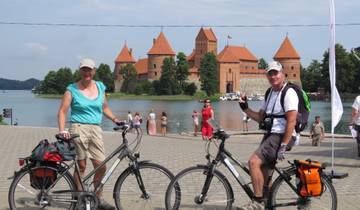
- Self-Guided Cycling
Baltic Bike Tour: Vilnius to Tallinn (self-guided supported)
Generally good, sometimes unclear description of route; friendly and helpful drivers on/with transportation

Discover the Baltics
A great joy. Migle is a gem.
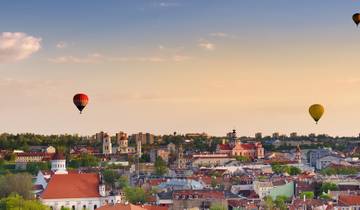
Premium Baltics
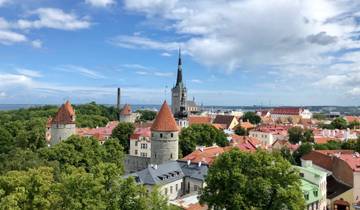
Helsinki to Warsaw
Helsinki to Poland tour by Expat Explore was well organized. However, it is too rushed. Ideal would be to add two more days and spread it out a bit. Lot of walking, therefore very tiring and difficult to keep up with the pace even for the not so old, especially in bad weather conditions. The hotels were very good except for one which was average. Breakfast at hotels were very good. Included lunches and dinners were okay. The optional tours were not fabulous. The tour guide highly recommends them all, but I was disappointed with each of them. On the whole, a good tour but very rushed and tiring.
- 10% deposit on some dates Some departure dates offer you the chance to book this tour with a lower deposit.
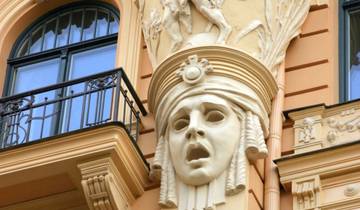
Tour Metropolis of the Baltic
Guides including local city guides and palace guides were great Logistics especially combination of several groups onto very large buses was not as anticipated or advertised
What people love about Baltic Tours
The Baltic Experience tour was a lot of fun! Our Tour Leader, Agata, was superb! The small tour size (we had six participants) meant we got to know each other well. The tour had a perfect mix of planned group activities and time to explore the sites on our own. The on-line tour description was accurate and extensive. Three cautions: Travel insurance is MANDATORY, somewhat expensive, and not included in the tour price. Many, like me, will commit to the tour not knowing this additional cost will be tacked on. Second, the tour sometimes involves significant walking (up to 30 minutes) from transportation facilities to hotels while carrying your own bags (two weeks of baggage), as well as walking tours that sometimes involve climbing as many as 800 steps. This is a tour for fairly young and fit participants. Finally, European hotels and home-stay facilities generally don't have air conditioning or screened windows, meaning sometimes in the summer you will have to choose between sleeping in hot, stuffy rooms or opening the windows for mosquitoes to enter. All that said, this was a thoroughly enjoyable and memorable experience and I would highly recommend it for fit, adventurous people with positive attitudes who can tolerate occasional less-than-luxurious accommodations.
Tour was fantastic. ILONA did a great job at keeping everyone together. He knowledge of history was outstanding. Hotels were perfect and all in or close to the city center. This was a great value foe the money. Lots of optional tours that you could or did not have to do, which I like.
- Fully Guided (138)
- Family (134)
- In-depth Cultural (121)
- Personalized (75)
- Private (39)
- Active (30)
- Coach / Bus (21)
- Bicycle (17)
- Hiking & Trekking (16)
- Self-Guided (16)
- Intl. Flights Included (14)
- Self Drive (11)
- Custom (10)
- Festival & Events (6)
Destinations
- Poland tours (67)
- Lithuania tours (16)
- Estonia tours (14)
- Latvia tours (14)
Travel Styles
- Small Group (61)
- Budget (17)
- Singles and Solo (159)
- For Couples (53)
- Seniors (83)
- 7 Day Tours (43)
- 10 Day Tours (72)
- 2 Week Tours (47)
- 3 Week Tours (9)
- Spring 2024 (72)
- Summer 2024 (152)
- Fall / Autumn 2024 (117)
- Winter 2024 / 2025 (35)
- Spring 2025 (41)
- Summer 2025 (33)
- Fall / Autumn 2025 (26)
- Winter 2025 / 2026 (5)
- April 2024 (31)
- May 2024 (103)
- June 2024 (138)
- July 2024 (137)
- August 2024 (149)
- September 2024 (113)
- October 2024 (66)
- November 2024 (35)
- December 2024 (33)
- January 2025 (15)
- February 2025 (21)
- March 2025 (23)
- April 2025 (24)
- May 2025 (34)
- June 2025 (33)
- July 2025 (26)
- August 2025 (29)
- September 2025 (25)
- October 2025 (10)
- November 2025 (4)

The Ultimate 10-Day Baltic Itinerary: How to Visit Baltics?

Wondering how to visit Baltic countries and what to see in Baltics? This article covers it all and includes a 10-day Baltic itinerary that you will want to steal.
The Baltic countries consist of Estonia , Latvia , and Lithuania and are located in Northern Europe. It used to be a true hidden gem in Europe, however, nowadays, this region has gained a lot of popularity and attracts many tourists from all over the world.
From the medieval Hanseatic League to the more recent Soviet era, the Baltics have endured and emerged as sovereign states, each with its language, traditions, and unique national character. And traveling around the Baltic countries guarantees unforgettable memories and sights.
This comprehensive Baltic guide will cover everything that you need to know before visiting Baltics. We will cover a lot of practical travel tips, like how to move around and when is the best time to visit the Baltics. And then we will dive deeper into the perfect 10 days in Baltic itinerary for first-timers.
*Disclosure: This article contains affiliate links. If you make a purchase after clicking one of these links, I earn a small commission at no extra cost to you.
Useful information to know before visiting Baltic countries
Where are the baltic countries.

The Baltic countries, Estonia, Latvia, and Lithuania, are situated in Northern Europe, along the eastern coast of the Baltic Sea. Estonia is to the north, Latvia in the middle, and Lithuania to the south, collectively creating the Baltic region.
These nations form a distinctive region with shared historical ties and a rich cultural heritage. The geographical proximity to the Baltic Sea has significantly influenced the development of these nations over the centuries.
Are Baltics worth visiting?

Yes, exploring the Baltic countries is definitely worth it. Estonia, Latvia, and Lithuania offer a unique blend of rich history, diverse landscapes, and vibrant cultures.
From the medieval charm of Tallinn’s Old Town to the Art Nouveau architecture of Riga and the serene natural beauty of Vilnius, the Baltics provide an amazing travel experience.
Whether you’re interested in historical sites, cultural traditions, or simply enjoying the natural beauty of the region, the Baltics have something to offer for every traveler.
Is it safe to travel to the Baltic states?

Generally, the Baltic states are considered safe for travelers. They have low crime rates compared to many other European countries, however, like any travel destination, it’s essential to exercise common safety precautions.
While no place is entirely without risk, the Baltic countries are one of the safest places in Europe for travelers who take basic precautions and stay informed about their surroundings. Which makes it a great destination for solo female travelers as well.
Are Baltic countries cheap?

The Baltic countries, Estonia, Latvia, and Lithuania, are often considered more budget-friendly compared to many Western European destinations. While prices may vary depending on specific locations and your personal spending habits, the Baltics generally offer good value for money.
Accommodation, food, and transportation costs in the Baltic states are often more affordable than in Western Europe. Local markets and eateries can provide cost-effective dining options, and public transportation is usually reasonably priced.
I have to mention that over the years the Baltics have raised the prices, so if you visited these countries a couple of years ago, you might be surprised. However, you can certainly plan a budget trip to Baltic countries.
That being said, the level of perceived affordability can vary from person to person, and factors like the specific cities you visit, the type of accommodation you choose, and your lifestyle preferences will influence your overall expenses.
How to get around Baltic countries?

Getting around the Baltic countries is relatively easy, and there are various transportation options to choose from. Let’s dive in and explore the ways to get around Baltic countries.
Public Transportation: Each capital city—Tallinn, Riga, and Vilnius—has well-developed public transportation systems, including buses and trams. Public transport is an affordable and efficient way to explore these cities.
Buses: Intercity buses connect major towns and cities in the Baltic region. Several bus companies operate, providing a cost-effective means of traveling between countries and exploring different regions.
Trains: The Baltic countries have a rail network that connects major cities. Trains are a comfortable option for traveling between capitals and other notable destinations. Check the schedules and book tickets in advance for long-distance journeys.
Car Rental: Renting a car is a convenient option if you want to explore rural areas or have more flexibility in your itinerary. However, you won’t need a car to follow this Baltic itinerary.
Taxis: Taxis are available in urban areas, and ride-sharing services like Bolt operate in some cities. Taxis are a convenient option for short distances or when public transportation is less practical.
If you are planning to follow this Baltic States travel itinerary, you will use the bus to move between Baltic capitals. Make sure you check Flixbus for the most affordable prices and purchase your ticket in advance. Other great alternatives include EcoLines and Lux Express.
When you finally reach the Baltic capitals, you will be walking most of the time. Occasionally, you can hop on a public transport or book a Bolt ride. And to explore the countries beyond the capital, you will be able to use buses or trains. Or join some of the best tours.
However, you don’t have to worry about these things, because this 10-day Baltic itinerary will include all these details and all the information on how to travel between Baltic states.
When is the best time to visit Baltic countries?

The best time to visit the Baltic countries—Estonia, Latvia, and Lithuania—largely depends on your preferences for weather and activities. Here’s a general overview.
Summer (June to August)
This is the peak tourist season when the weather is generally mild and pleasant. Summer brings longer days, allowing for more exploration and outdoor activities. However, popular tourist destinations can be more crowded during this time.
If you ask my personal preference, summer is the best time to explore the Baltics and make the most of your trip.
Spring (April to May) and Fall (September to October)
These shoulder seasons offer milder temperatures, fewer tourists, and the added beauty of blooming flowers in spring or colorful foliage in fall. It’s a good compromise between pleasant weather and avoiding the crowds.
The fall foliage was one of my favorite seasons growing up in Latvia, however, you will have a high chance of rain and a cloudy sky.
RELATED : Why You Should Visit Latvia in Autumn?
Winter (November to March)
Winter can be cold, with temperatures often dropping below freezing. If you enjoy Christmas markets and winter sports like skiing, this could be an excellent time to visit, especially in Lithuania. However, many outdoor attractions may be less accessible during this period.
Chasing winter wonderland in the Baltics is a truly unique experience and overall, it is more affordable compared to Scandinavian winter destinations.
How many days in the Baltic countries?

The ideal duration for your visit to the Baltic countries depends on the depth of exploration you desire and your travel preferences. However, the Baltic itinerary for first-timers should consist of at least 10 days.
During the 10 days in the Baltics, you will be able to discover the essence of the Baltic capitals and even pick one of the best day trips to see beyond the big cities.
I have to say that this is a relatively easy Baltic itinerary for 10 days because I want you to enjoy your time not just chase sights. Also, it is very flexible, so you can easily exclude the things that you don’t want to see or visit and add other alternatives.
What is the best route to visit Baltic countries?

The best route to visit the Baltic countries often depends on your starting point and personal preferences. However, if you’re looking for a general route that covers the highlights in a logical sequence, you might consider the following.
Start in Tallinn, explore the Estonian capital and beyond. Head south to Riga, spend a few of days there, and then make a day trip to see more of Latvia. Conclude your trip with a stop in Vilnius and plan a short visit to Trakai.
You can also do the same route and start from Vilnius instead. If you have to fly back from your arrival point, plan an extra day on the route, which is not ideal, but totally doable.
The ultimate Baltic itinerary for 10 days
This is a quick overview of your Baltic itinerary for 10 days.
- 2 days in Tallinn
- Day trip from Tallinn
- 2 days in Riga (with an optional extra day)
- Day trip from Riga
- 2 days in Vilnius
- Day trip from Vilnius to Trakai.
If you are wondering how to see the best of the Baltic in 10 days, you will need to plan at least 3 day trips – one from each capital. But if you want to see other beautiful places to visit in the Baltics, you can always add an extra day.
Also, I suggest you plan a day trip, so you don’t have to worry about checking out and checking in to a different hotel every day and drag your luggage with you. This way you can base yourself in each Baltic capital for 3 days and plan a short trip from there.
As you can see there is an extra day for Riga, however, you can use it for an additional day trip from Tallinn or Riga, depending on your interests. Or you can simply enjoy a chill day in the middle of your trip. If not, this trip to the Baltics will take 9 days, but I wanted to keep it flexible.
This is truly the best way to spend 10 days in the Baltics. But let’s dive deeper and discover more details of your Baltic vacation.

The northernmost capital, Tallinn, is a blend of medieval charm and modern vitality. The heart of the city is its UNESCO-listed Old Town, where cobblestone streets wind through well-preserved medieval structures.
Tallinn’s skyline is dominated by the imposing Toompea Castle and the spires of churches like St. Olaf’s Church and Alexander Nevsky Cathedral.
It is the starting point of a 10-day Baltic sightseeing itinerary. 2 days in Tallinn is the perfect amount of time to enjoy all the essentials of Tallinn, taste unique food, and try unforgettable experiences.
In this itinerary, we will cover how to spend 2 days in Tallinn and how to maximize your time in this charming city. I will add some optional stops, so this itinerary suits different travelers and interests.
RELATED : 40 Photos to Inspire You to Visit Tallinn, Estonia
2 days in Tallinn itinerary

Day 1 in Tallinn
- Morning: Viru Gate, self-guided tour in the Old Town, Town Hall Square, Town Hall Pharmacy.
- Lunch: Pub Kompressor.
- Afternoon: Hellemann Tower, St Olaf’s church or Cafe Maiasmokk (optional), Alexander Nevsky Cathedral, Kohtuotsa viewing platform, Patkuli viewing platform.
- Dinner: Draakon or Rukkilill Cafe.
Day 2 in Tallinn
- Morning: Rotermani (optional), Kadriorg.
- Lunch: Balti Jaam.
- Afternoon: Telliskivi, Fotografiska.
- Dinner: Old Hansa or Cru.
If you want to see a detailed version of this itinerary, make sure you read how to spend 2 days in Tallinn . It includes a lot of useful tips that will help you in the planning process.
Day 3 – pick the day trip from Tallinn

The compact size of Estonia and the convenient location of Tallinn means that you can plan an amazing day trip from Tallinn and see beyond the Estonian capital. If you ask me, there are a lot of great options for nature lovers and I would focus on that, but it is up to you.
Click here to discover the best day trips from Tallinn to fill up 3rd day of your complete Baltic itinerary for 10 days. You will see that you can even go to Helsinki, but considering that you are on a mission to discover the Baltic states, let’s just focus on the places within Estonia.
Where to stay in Tallinn?
It is important to find the right accommodation for your trip, so I have prepared a list of the best hotels in Tallinn for every budget. Depending on your travel style, I am sure you will find something suitable, so take a look and decide where to stay in Tallinn.
Luxury: Radisson Collection Hotel, Tallinn

If your travel to Tallinn is focused on a luxurious experience, the Radisson Collection Hotel is the right hotel for you.
This modern and stylish hotel offers all the comforts to its guests, including a rooftop terrace on the 24th floor. Some rooms boast stunning city views, while some others even include a sauna.
Unique: Schlössle Hotel – The Leading Hotels of the World
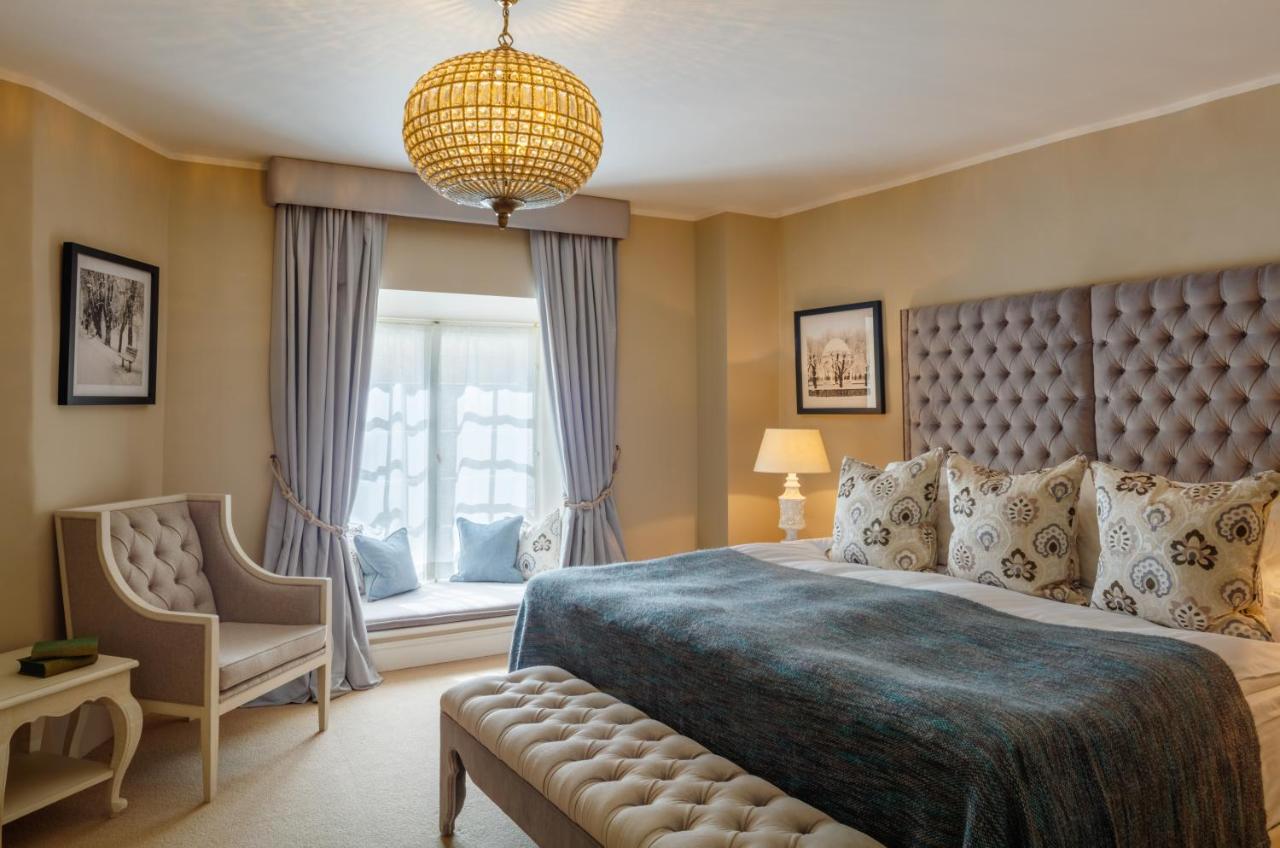
If you want to make your 2 days in Tallinn unforgettable, Schlössle Hotel is the place to be. Renovated in 2016, this stylish 5-star hotel is housed in 13th-century buildings in the heart of Tallinn’s Old Town.
The wonderful atmosphere, the antique furniture, and the sauna are just some of the reasons that make Schlössle Hotel a unique place to stay for your Tallinn vacation.
Mid-Range: Citybox Tallinn City Center

Citybox Tallinn City Center is a very modern hotel that is the perfect location to visit Tallinn without giving up any comfort and without squandering your finances.
Located between the port and the Old Town, it’s perfect if you have three or two days in Tallinn.
Affordable: St.Olav Hotel

St.Olav Hotel is the perfect place to explore Tallinn if you are on a budget. The hotel is housed in an ancient palace, it offers many rooms and can keep a competitive price.
The rooms are basic but nicely decorated and the location inside the Old Town is perfect for spending a long weekend in Tallinn.

Riga, the capital of Latvia, is a city that seamlessly intertwines its medieval past with a more cosmopolitan present. The Old Town, a UNESCO World Heritage site, is a picturesque maze of narrow streets, medieval buildings, and charming squares.
Riga’s rich architectural heritage is particularly notable in the Art Nouveau district, where intricate facades showcase the city’s artistic flair. The vibrant Central Market, housed in former Zeppelin hangars, is another must-visit place in Riga.
It is your next stop on Baltic States travel itinerary and you can choose whether to spend 2 or 3 days in Riga. I am originally from Riga, so want to share it through the eyes of a local and help you discover beyond the main attractions, so I suggest you plan 3 days, but that is up to you.
RELATED : 100 Photos to Inspire You to Visit Riga, Latvia
2 days in Riga itinerary

Day 1 in Riga
- Morning: Mārtiņa Beķereja, Latvian National Opera, Freedom Monument, Bastejkalna Park, Livu Square, The Swedish Gate, Three Brothers, Latvian Museum of Architecture.
- Lunch: Ezītis miglā or Petergailis.
- Afternoon: Our Lady of Sorrows Church and St. Saviour’s Anglican Church, Riga Cathedral, DOM Restaurant , House of the Black Heads, views from the St. Peter’s Church.
- Dinner: Salve Restaurant, ALA Pagrabs.
Day 2 in Riga
- Morning: Riga Central Market, Latvian Academy of Sciences .
- Lunch: Lido (either Dzirnavu or LIDO Atpūtas centrs).
- Afternoon: Riga Nativity of Christ Orthodox Cathedral, Corner House or Latvian National Museum Of Art, Art Nouveau district.
- Dinner: Riviera or Lidojošā varde, Cloud Nine.
In order to get a better look at this itinerary, please read this travel guide for 3 days in Riga . It covers the following day but you can easily turn into a day trip if you prefer. Also, you will find a lot of useful travel tips for visiting Riga.
Optional extra day in Riga

If you still want to explore Riga and discover all the hidden gems in the Latvian capital, here is a list of places you don’t want to miss.
Head to the left side of Daugava and enjoy the views on your back. I suggest you cross Vanšu Bridge and make a stop at the Vanšu Bridge Viewpoint.
After head to Agenskalns where you will find a vibrant market and the picturesque Holy Trinity Church located in Meža iela 2. Nearby, you will also find the National Library of Latvia, which is a gem of modern architecture.
You can end your day with a sunset over Riga panorama and visit AB Dambis for some of the best views of Riga.
If you prefer spending a day in nature, the Ethnographic Open-Air Museum of Latvia is a good idea to take a glimpse at the old Latvian way of life. Another hot spot to enjoy some sunny days in Latvia is Mežaparks. This beautiful modern park is one of the most loved by the locals.
If these locations don’t excite you, feel free to skip to the next day.
Day 4 – pick the day trip from Riga

Just like Tallinn, Riga offers some amazing day trip options because of its small size and convenient location. While Tallinn day trips are great for nature lovers, Latvia offers some great cityscapes to historical towns, and charming villages.
Click here to discover the best day trips from Riga and decide the next stop of your Baltic States travel itinerary. This article features some of the best cities to visit in the Baltics, however, it includes some great spots in nature as well.
Where to stay in Riga?
Riga is not a big city and you shouldn’t have any problems moving around, but there are some tips to make your weekend in Riga even more sufficient.
The old town (Vecrīga) is the most beautiful area of Riga. The city center (Centrs) is a big area in the heart of Riga, but I don’t advise you to go anywhere after Lāčplēša Street. The area near the Freedom Monument is great and very practical.
If you are looking at the map, you see that Riga is divided by a river called Daugava. And it might look close, but I don’t advise staying on the other side of Daugava. It can be trafficked and not very pleasant to walk.
Luxury: Grand Hotel Kempinski Riga

If you want to have a luxurious and romantic escape during your Baltic vacation, this is your place to go.
Grand Hotel Kempinski is one of the most popular 5-star hotels in Riga and it offers phenomenal spa facilities to make your stay unforgettable. The location in the Old Town makes it perfect to discover the best photo spots in Riga.
Boutique: Grand Poet Hotel and SPA by Semarah

Grand Poet Hotel is the best place to stay in Riga with style. This fabulous five-star hotel in Riga’s old town is the best place for relaxing and sightseeing. In fact, guests have free access to the fitness center and spa zone.
The wellness center includes a pool, sauna, hot tub, and hammam. Various massages are offered at a surcharge.
Mid-range: Wellton Centrum Hotel & SPA

Wellton stands at the entrance of the old town, in one of the most picturesque streets in the Latvian capital. The hotel is stylish and also offers a great spa to relax after a day visiting Riga.
If you want to have a quality stay, at a reasonable price this is the right spot for you.
Affordable: Allure Rooms & Coffee

If you are looking for cheap accommodation while you visit Riga without giving up the quality, look no further.
This lovely guest house is conveniently located in the old town and it even offers a romantic view of Riga. It’s the perfect place to pick to get the best of your time in Riga at an affordable price.

Vilnius, the southernmost capital, is a city of contrasts and layers. Its Old Town, a UNESCO World Heritage site, unfolds with narrow alleys, baroque churches, and the iconic Gediminas’ Tower overlooking the city.
Beyond its historical treasures, Vilnius is a city that embraces modernity while cherishing its cultural roots. The Užupis district, often referred to as the “Republic of Užupis,” is a bohemian neighborhood that celebrates art, creativity, and free expression.
The culinary scene in Vilnius is a delightful reflection of the city’s diverse influences and traditions. From traditional Lithuanian dishes like “cepelinai” and “kugelis” to international cuisine, Vilnius offers a variety of dining experiences to suit every palate.
Just like the other Baltic capitals, you will need 2 days to see the best in Vilnius, and here are some of the best places that you absolutely have to see.
2 days in Vilnius itinerary

Day 1 in Vilnius
- Morning: Gates of Dawn, Orthodox Church of the Holy Spirit, Town Hall Square, Literatų g.- St. Anne’s Church.
- Lunch: Etno Dvaras.
- Afternoon: St. John the Baptist and St. John the Apostle and Evangelist Church, Cathedral Square, Gediminas Castle Tower.
- Dinner: Lokys or Senoji trobelė.
Day 2 in Vilnius
- Morning: Uzpis, Biržų duona, Subačiaus apžvalgos aikštelė.
- Lunch: Paupio Turgus.
- Afternoon: Church of Sts. Peter and Paul, Three Crosses Monument.
- Dinner: Ertlio Namas or Amatininkų Užeiga.
Day 3 – day trip from Vilnius to Trakai

While there are many beautiful sights around Lithuania, a day trip from Vilnius to Trakai is a must during your Baltic itinerary for 10 days. It is a wonderful choice to explore the historical and picturesque Trakai Castle and enjoy the scenic surroundings. Trust me, you don’t want to miss it.
The centerpiece of Trakai is the majestic Trakai Island Castle, a masterpiece of medieval architecture set on an island in Lake Galve. This iconic fortress serves as the residence of the Grand Dukes of Lithuania and a symbol of the country’s medieval heritage.
Beyond the castle, Trakai town itself is a quaint and welcoming place. Visitors can stroll the charming streets, lined with traditional wooden houses, and perhaps stop in local cafes to try traditional Lithuanian delicacies.
Užutrakis Manor Estate, located near Trakai, further enriches the region’s appeal. The estate, with its elegant mansion and beautifully landscaped gardens, offers a glimpse into the life of Lithuania’s nobility. The expansive park, designed by renowned French and Italian architects, provides a peaceful retreat.
How to reach Trakai from Vilnius?
You can easily reach Trakai by using public transport since the buses regularly operate between Vilnius and Trakai. The journey takes approximately 40 minutes. The ticket will cost you 3 euro and you can buy it at the station.
Another option is to train. Trains depart regularly from Vilnius Railway Station, and the journey takes around 30 minutes. The price is 2.80 euros and you can purchase your ticket at the station.
Taxi is also a popular choice to visit Trakai from Vilnius if you have limited time. The ride will cost you approximately 20 euros depending on the traffic.
Finally, there are plenty of companies that organize daily trips from Vilnius to Trakai. This one is one of the best-rated tours and it offers a professional guide to learn more about Trakai.
Where to stay in Vilnius?
Here is a list of some of the best hotels in Vilnius for every budget and style. If you don’t like any of these options, I highly recommend that you pick a hotel near Old Town, so you can make the most of your limited time in the Lithuanian capital.
Luxury: Relais & Châteaux Stikliai Hotel

If you want to make your stay in Vilnius special, book Relais & Châteaux Stikliai Hotel. This 5-star hotel in Vilnius is housed in a historic building with Baroque and Gothic features and is located in the heart of the Lithuanian capital. The hotel boasts a sauna, an indoor pool, and a fitness center.
Mid-range: Courtyard by Marriott Vilnius City Center

If you are looking for quality accommodation without squandering your finances, make sure you check the Courtyard by Marriott Vilnius City Center. Its prime location and modern & stylish rooms are perfect for exploring Vilnius in style. The rich breakfast is also worth mentioning.
Affordable: Domus Maria

Domus Maria is definitely the best budget choice to stay in Vilnius. It is located in a former monastery in the Old Town and it’s perfect to visit Vilnius city on foot. The rooms are simple but cozy and welcoming and the value for the money is simply unbeatable.
More things that you should know before visiting the Baltics
What language do they speak in the baltics.

The Baltic countries each have their own distinct languages.
The official language of Estonia is Estonian, which belongs to the Finno-Ugric branch of the Uralic language family and it is closely related to Finnish. The official language of Latvia is Latvian, a Baltic language that is part of the Indo-European language family. Lithuanian is the official language of Lithuania. It is a Baltic language and one of the oldest languages in the Indo-European language family that is still spoken.
As a Latvian, I can say that all these languages are very different and unfortunately, we are not able to understand each other. There are some similarities between Latvian and Lithuanian, but nothing remotely close to having an actual conversation.
As a foreigner visiting the Baltics, you will notice that the older generation speaks fluent Russian and the younger generation can communicate pretty well in English. I am sure you won’t have any problems with the language during your trip, but I recommend you learn some basic phrases and surprise the locals.
What is the local food in the Baltics?

The culinary scene in the Baltic countries is a delightful fusion of traditional flavors, influenced by the region’s history, climate, and agricultural practices. Each country has its unique dishes and culinary traditions, however, you will notice a lot of similarities.
One notable dish of Estonian cuisine is “Mulgipuder”. It is a dish of mashed potatoes and groats and is a hearty staple, often served with bacon. Fish, particularly herring, plays a significant role, and “kiluvoileib,” an open-faced sandwich with smoked or marinated herring, is a popular choice.
Vana Tallinn is the most famous local drink and a great souvenir to bring home.
While in Latvia you should try “grey peas with bacon”, which is a traditional Latvian dish. “Latvian rye bread” is a staple, and garlic bread can be found in every local restaurant. But layered rye bread is a popular dessert that you will need to try.
Sklandrausis is a vegetable pie (or tart) made from rye pastry that is filled with a mixture of carrots and potatoes and eaten cold. Latvia’s proximity to the Baltic Sea influences its seafood offerings, with smoked fish, especially sprats, being a common delicacy.
And just like Vana Tallinn, Riga Black Balsam is a must-try when visiting Latvia.
Lithuanian national dish is “Cepelinai” – large potato dumplings stuffed with meat, curd, or mushrooms. “Kugelis,” a potato pudding baked with bacon, is a beloved comfort food. “Šaltibarščiai,” a cold beet soup, is a refreshing and vibrant option, especially during the warmer months.
RELATED : Where to Eat in Riga Like a Local? 10 Local Restaurants in Riga, Latvia
What is the local currency in the Baltics?

While every Baltic country used to have its own currency, nowadays, it is part of the Eurozone and the local currency in the Baltics is Euro.
Further reading for 10-day Baltic itinerary

Photography Guide: 15 Best Photo Spots in Tallinn, Estonia

20 Best Photo Spots in Riga, Latvia + Photography Tips From a Local

10 Best Day Trips from Riga, Latvia (Top Guided Tours Included!)
Plan your trip to Estonia:
- 10 Best Day Trips from Tallinn, Estonia + Top Rated Tours
- Complete Tallinn Itinerary: How to Spend 2 days in Tallinn
- How to Plan a Day Trip to Helsinki from Tallinn via Ferry
- 40 Photos to Inspire You to Visit Tallinn, Estonia
Get ready to explore Latvia:
- 100 Photos to Inspire You to Visit Riga, Latvia
- Riga Art Nouveau Guide: Where to Find Art Nouveau in Riga?
- 10 Amazing Coffee Shops and Best Cafes in Riga
- How to Spend 3 days in Riga + Riga Itinerary and Tips From a Local
- Where to Eat in Riga Like a Local? 10 Local Restaurants in Riga, Latvia
- Weekend in Riga: Perfect 2 Day Riga Itinerary and Tips From a Local
- Why You Should Visit Latvia in Autumn?
Or read more about: Riga | Latvia | Tallinn | Estonia | Baltics
Other useful tips for visiting the Baltics
🏠 Need a place to stay? Browse Booking or Agoda 💃 How about fun experiences? GetYourGuide and Viator have it all 🚗 Considering renting a car? Use Rentalcars ✈️ Looking for the best flight deals? Check WayAway 🔒 Don’t forget about travel insurance from HeyMondo
In conclusion…

This is the end up the ultimate guide to seeing the Baltic in 10 days and I am sure that you have a great vision of how to plan your trip to the Baltic countries.
I would love to hear your thoughts, so if you have any feedback or additional tips, leave a comment below. Also, check out my Instagram for regular travel videos and travel inspiration. Or explore other destinations on this travel blog.
Pin it and save 10-day Baltic Itinerary!

Leave a Reply Cancel reply
Your email address will not be published. Required fields are marked *
Terms and Conditions - Privacy Policy
Manage my booking
You can easily manage your booking right here! Within one step you can add or remove tour services, modify your booking, make a payment.

The Best of The Baltic Highlights in 8 days
The best of the baltics and helsinki in 10 days.
- The Best of Poland in 7 days
- The Best of Poland and The Baltics in 13 days
Best Time to Visit the Baltic Countries
Book & tour, baltic tours 2024, baltic tours, poland tours, all programs.

Posted by Baltic Tours | June 25, 2019
Exploring the Baltic countries – Lithuania, Latvia, and Estonia – promises an enchanting journey filled with cultural wonders, natural beauty, and unforgettable experiences. The best time to visit this charming region depends on your preferences and budget, and there are different seasons, each with its own unique allure.

Baltic Summers (May to September):
The Baltic summer, from May to September, is a splendid time to explore this region. Enjoy warm weather and long daylight hours as you immerse yourself in the beauty of the Baltic coast. Start your journey in Lithuania, where you can visit the medieval streets of Vilnius, the charming Trakai with its castle on a lake, and the vibrant Old Town in Klaipeda. In Latvia, embrace the coastal delights of Jurmala or explore the historic city of Riga. Don’t miss Estonia, where Tallinn’s enchanting Old Town and the serene beaches of Pärnu await. This is the perfect season for hiking, beachcombing, and experiencing the unique architectural heritage of these countries.
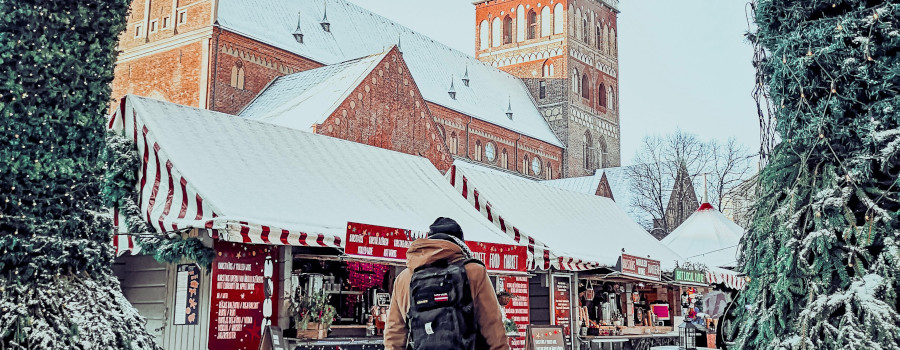
Festive Winter Celebrations (December to Early January):
If you’re longing for the enchantment of Christmas, plan your visit for December and early January. The snowy wonderland of Vilnius, Riga, and Tallinn is a sight to behold. Revel in the festive markets, indulge in traditional holiday treats, and discover the magic of the season. While prices might be higher during the holiday season, the atmosphere and memories are worth it. For a niche experience, head to Sigulda in Latvia, where you can try your hand at bobsledding at the only bobsleigh track in the Baltics, providing an exhilarating and unique winter adventure.

Winter Wonders (November to March):
Despite the chilly temperatures and occasional dampness, the winter season, spanning from November to March, is a unique time to explore the Baltic countries. Frozen rivers and lakes turn into ice rinks, making it an outdoor enthusiast’s paradise. Estonia, especially, offers a winter wonderland with ski resorts in Otepää, winter parks, and a variety of activities, from skiing to picnics in the snow. This season is a great opportunity to experience the local culture and enjoy winter sports. To delve into a more distinctive experience, go to less-known destinations like the quiet countryside of Lithuania’s Aukstaitija National Park. Here, you can partake in ice fishing, a traditional and tranquil Baltic winter activity.
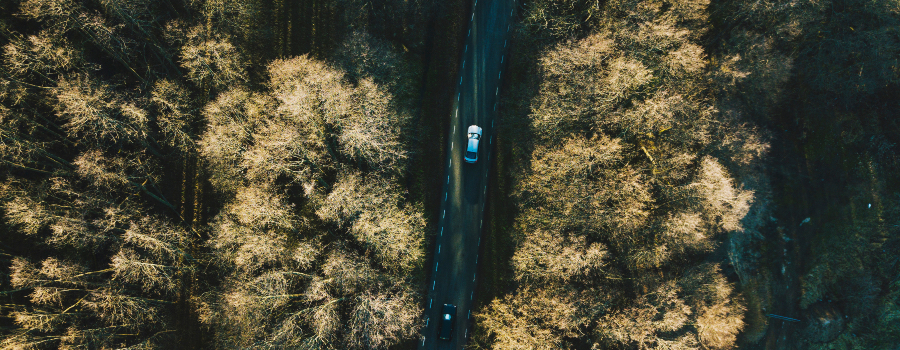
Off-Peak Exploration (Remaining Months):
The remaining months in the Baltic countries provide a quieter and more budget-friendly experience, with fewer tourists compared to Western Europe. Take your time to explore lesser-known gems, such as the charming coastal town of Palanga in Lithuania, the medieval streets of Cesis in Latvia, and the picturesque Lahemaa National Park in Estonia. You can immerse yourself in the rich heritage of the Baltics without the hustle and bustle of the peak season.
For those seeking even more distinctive adventures, consider exploring the “Hill of Witches” in Juodkrante, Lithuania, a mesmerizing outdoor sculpture gallery with eerie and whimsical wooden carvings from Lithuanian folklore. Alternatively, journey to the Latvian Ethnographic Open-Air Museum near Riga to step back in time and immerse yourself in traditional Latvian architecture and culture. Another unique experience awaits on the Estonian island of Kihnu, where a UNESCO-listed matriarchal society led by strong women preserves their distinctive traditions, vibrant handicrafts, and unique music. These off-peak gems offer a deeper connection to the Baltic countries’ rich heritage and culture, away from the tourist crowds.

In summary, the Baltic countries offer a diverse range of experiences throughout the year. Your choice of the best time to visit depends on your interests and budget. Whether you’re savoring the warm embrace of summer, enjoying the enchantment of Christmas, or seeking an active winter adventure, the Baltic region is ready to delight you with its rich culture, stunning landscapes, and historical treasures.
Join unforgettable exploring experience! Galleries, museums, workshops and more.
EAT & DRINK
Get excited about incredible power of senses! Bars&pubs, restaurants, cafés, etc.
STAY & ENJOY
Feel the spirit of local life expressions! Wellness, casinos, shopping, etc.

Iveta Gruodytė
E-mail: [email protected]
Tel. +370 698 45681
Professionally educated in sports and tourism management, Iveta is passionate about encouraging guests to explore the Northeastern region of Europe in the most attractive way. She has been working in the tourism industry since 2013, assisting customers from 64 countries, and she loves doing it!
ASK A QUESTION
Tour operator Baltic Tours Group since 1991 Address: Vasingtono sq. 1, LT-01108 Vilnius, Lithuania

Phone: +370 5 2661616
WhatsApp: +370 698 45681
Office open hours: Mon-Fri, 8AM-6PM (+2 GMT)
STAY UPDATED
Enter your email address if you want to receive our newsletter

CHEAP FLIGHTS

COUNTRY TOURS
- Tours in Belarus
- Tours in Denmark
- Tours in Estonia
- Tours in Latvia
- Tours in Finland
- Tours in Lithuania
- Tours in Mongolia
- Tours in Norway
- Tours in Poland
- Tours in Russia
- Tours in Sweden
- Tours in Ukraine
- Tours in Beijing
- Tours in Bergen
- Tours in Bogolyubovo
- Tours in Cesis
- Tours in Copenhagen
- Tours in Druskininkai
- Tours in Fagernes
- Tours in Geilo
- Tours in Helsinki
- Tours in Jurmala
- Tours in Kaunas
- Tours in Ketrzyn
- Tours in Kharkhorin
- Tours in Kiev
- Tours in Klaipeda
- Tours in Kolka
- Tours in Krakow
- Tours in Liepaja
- Tours in Lviv
- Tours in Minsk
- Tours in Moscow
- Tours in Mragowo
- Tours in Nida
- Tours in Oslo
- Tours in Palanga
- Tours in Parnu
- Tours in Peterhof
- Tours in Porvoo
- Tours in Riga
- Tours in Rundale
- Tours in Shanghai
- Tours in Šiauliai
- Tours in Sigulda
- Tours in St. Petersburg
- Tours in Stalheim
- Tours in Stockholm
- Tours in Suzdal
- Tours in Tallinn
- Tours in Tartu
- Tours in Trakai
- Tours in Ulaanbaatar
- Tours in Valmiera
- Tours in Vihula
- Tours in Vilnius
- Tours in Vladimir
- Tours in Voss
- Tours in Warsaw
- Tours in Xian
PDF Brochure
Enter your email to get All season tour catalogue.
Classic Baltics
8 days | explore three colourful capitals and a forested island in the baltics..

Uncover the cultural wonders and historical riches of three fascinating countries on an 8-day tour through Lithuania, Latvia and Estonia. Wander the beautiful Old Town of Vilnius and learn about its complex modern history. Discover Riga’s Art Nouveau architecture and feast on Latvian cuisine at the city’s vast Central Market. Unwind in a log cabin set among evergreen forest on Saaremaa Island, sharing a meal of local favourites with your fellow travellers, and finish in Estonia’s cool capital, Tallinn. This tour takes in historic cities, a pristine wooded island and unique Baltic cultures – all while taking you well off the typical tourist trail.
Trip overview
- See the best of the Baltics in a week – soaking up centuries of history, getting a taste of the region’s hearty cuisine and meeting plenty of locals along the way.
- Join a local guide to discover the best bits of Vilnius, from its legendary beginnings and UNESCO-listed Old Town to its tiny independent republic, Uzupis.
- Discover the treasures of Riga – both historic and culinary – on a walking tour through the cobbled streets of the Old Town followed by a Latvian lunch at the lively Central Market.
- Take a breath of pine-scented air during a relaxing stay on forest-covered Saaremaa, the largest island in Estonia, sharing a dinner of local favourites before snoozing the night away in a log cabin.
- See some of the region’s finest art and stroll through manicured gardens at Tallinn’s Kadriorg Palace Art Museum, a grand baroque building built by Peter the Great.
- We recommend packing light and smart for this trip as you'll be required to carry your own luggage between train and bus stations and hotels, which can include going up and down multiple flights of stairs, and across cobblestones.
- This trip covers a lot in a week, so there are some long drives. However, all travel is in comfortable private vehicle or public bus, with one ferry ride. Please review the itinerary for details.
Labas! Welcome to Lithuania. Tonight you’ll attend an important welcome meeting at 6 pm at the hotel. Afterwards, you’ll have the option to join your leader and new travel companions for dinner at a local restaurant. If you arrive early, spend some time getting to know Vilnius. This charming capital is remarkably green and oozes history – but hip bars, cool cafes and a plethora of street art add a modern twist that makes it a joy to explore.
- Hotel (1 night)
There are no meals included on this day.
It’s very important that you attend the welcome meeting as we will be collecting insurance details and next of kin information at this time. If you are going to be late please let your travel agent or hotel reception know. Ask reception or look for a note in the lobby for more information on where the meeting will take place. If you can't arrange a flight that will arrive in time, you may wish to arrive a day early so you're able to attend. We'll be happy to book additional accommodation for you (subject to availability).
This morning, join the group for a city tour led by a local guide. Pass through Cathedral Square and the UNESCO-listed Old Town, and learn about the legend of Vilnius' creation and the prestigious history of Vilnius University. Continue to the painting of Our Lady of the Gate of Dawn, a famed painting of the Virgin Mary that adorns the 16th-century city gates. The afternoon is yours to spend as you wish. Maybe take a hike to Gediminas Castle Tower or check out expansive views from the lofty TV tower – the latter is Lithuania’s tallest building and the location of a history-making event on 13 January 1991, when Lithuania gained independence from the Soviet Union. Alternatively, you could spend an hour or two exploring the tiny independent republic of Uzupis, which was declared in 1997. Ask your leader for more recommendations.
- Vilnius - Walking Tour with Local Guide
- Vilnius - University Museum - EUR3
- Vilnius - National Museum - EUR5
- Trakai - History Museum & Castle - EUR12
- Vilnius - Gediminas Castle Tower - EUR6
- Vilnius - TV Tower - EUR14
- Museum - EUR6
Hop aboard a comfortable public bus to Riga, Latvia. On arrival, transfer to the hotel, located a short walk from the symbolic Freedom Monument – or, as she's affectionately known to the locals, Milda. Head out on a guided walk with your leader, navigating the narrow, cobbled streets to discover the key sights of the Old Town. You’ll stop for lunch at the sprawling Central Market, housed within five repurposed Zepellin hangars. Countless stalls feature everything from local pastries and traditional Latvian soups to tempura and fried chicken. Opt to try a few local specialities – such as Riga Black Balsam, an herbal liqueur – before digging into a meal made from fresh, seasonal Latvian produce.
- Riga - Central Market Visit
- Riga - Leader-led orientation walk
Today’s travel time is approximately 4 hours.
Enjoy a free day getting to know Riga at your own pace. Most of the Art Nouveau architecture for which the city is famed is located in a neighbourhood known as 'the quiet centre'. A leisurely stroll along the canal that intersects the city's central park is another popular optional outing, as is a visit to one of its many museums. The National Museum of Art, located only a few minutes' walk from the hotel, is particularly impressive. Perhaps take in views of the city with a drink at a rooftop cafe (your leader will be able to make some recommendations) or, if the weather is right, make the trip to the popular beach resort town of Jurmala (30 minutes by train).
- Riga - Beer Spa - EUR151
- Riga - St Peter's Tower - EUR9
- Riga - Riverboat Cruise - EUR20
- Riga - Museum of War - Free
- Riga - Mentzendorff's House - EUR3
- Riga - Latvian National Museum of Art - EUR8
Rise early for the trip to Saaremaa island, the largest island in Estonia, by private minivan and public ferry. This heavily forested island is known among Estonians as the perfect place to relax in nature, and you’ll see soon why. Arrive in the island's south by late afternoon and transfer to your accommodation for the evening. You’ll stay in a cosy locally-owned property, surrounded by forests – a lovely spot to unplug after a few days of city escapades. A private room in a charming log cabin will be your home for the night. You may like to take a walk in the woods and work up an appetite for a dinner of hearty local favourites, perhaps Baltic herrings and potatoes with dill to fill you up.
- Cabin (1 night)
Today’s travel time is approximately 6 hours.
NOTE: Our farm stay won't be available for the departure on 16th JUNE, 2024 so instead our group will stay in a hotel for the night.
After breakfast, head to the biggest town on the island, Kuressaare. One of the biggest draws is Kuressaare Castle – one of Estonia’s best preserved fortresses, complete with terracotta conical spires and a shimmering moat. Opt to spend some time exploring the castle grounds and accompanying museum to learn more about life on Saaremaa throughout the ages. Later, hop on a public bus to the Estonian capital of Tallinn. Tonight's accommodation is in Tallinn's atmospheric Old Town, which is packed with tempting dining options for your free evening.
Today’s travel time is approximately 4.5 hours.
Today, your leader will get you acquainted with the key sights of Tallinn on an orientation walk. Then you’ll take a tram to the outskirts of the city to visit Kadriorg Palace Art Museum. Commissioned by Peter the Great in the early 18th century, this fine example of Baroque architecture features fabulous frescoes, decorative stucco and elaborate, colourful gardens – and of course, an impressive collection of early European and Russian art. Return later that day (your ticket is open so when you head back is up to you), perhaps opting to hire a bike for some active sightseeing, or continuing the cultural immersion at more of the city’s museums. Tonight, you might like to head out with the group for one last Estonian meal together, washed down with a glass of kali, a fizzy drink made from boiled rye bread.
- Tallinn - Kadriorg Palace Art Museum
- Tallinn - Kiek in de Kök Tower Museum - EUR12
- Tallinn - Estonian History Museum - EUR12
- Tallinn - City Bike Tour - EUR28
- Tallinn - TV Tower - EUR16
- Tallinn - City Museum - EUR8
- Tallinn - Peter The Great Museum - EUR5
Time to say farewell to your fellow travellers – your trip ends this morning after breakfast. There are no activities planned for today, but Tallinn has a lot to offer and there's plenty to keep you busy for a few more days. Let us know in advance if you’d like us to book additional accommodation for you (subject to availability).
7 breakfasts, 1 lunch, 1 dinner
Private vehicle, Ferry, Public bus
Comfortable hotel (6 nights), Cabin (1 night)
Dates and availability
Important notes.
1. A single supplement is available if you’d prefer not to share a room on this trip. The single supplement excludes Day 5 (farmstay) where you will be in shared accommodation and is subject to availability. Please speak to your booking agent for further information.
Want an in-depth insight into this trip? Essential Trip Information provides a detailed itinerary, visa info, how to get to your hotel, what's included - pretty much everything you need to know about this adventure and more.
Filter by rating

Rick Steves’ Europe: Helsinki and Tallinn: Pearls of the Baltic
H elsinki and Tallinn are two great capitals in Northern Europe. Just 50 miles and a two-hour ferry ride apart, these two cities – facing each other across the Baltic Sea from their respective countries of Finland and Estonia – are not only neighbors, but soul sisters.
Finns and Estonians share a similar history – first Swedish domination, then Russian, then independence after World War I. But while Finland held on to its freedom through the Cold War, Estonia was gobbled up by the expanding Soviet Empire and spent the decades after World War II under communism, regaining its freedom in 1991.
Today both are enjoying good times as members of the European Union and share a common currency, the euro (Finland was one of the first countries to adopt the euro, in 1999). And both countries are members of NATO, with Finland joining the military alliance in 2023 for protection against a newly belligerent Russia.
In spite of its Swedish roots, old Helsinki feels Russian. When the Russians took over Finland in 1809, they moved the capital to Helsinki and hired German architect Carl Ludvig Engel to model the city after their capital, St. Petersburg. This resulted in fine Neoclassical squares and stone buildings with white trim and columns. Because filming in Russia was not possible during the Cold War, movies like Gorky Park and Dr. Zhivago were actually filmed in Helsinki .
Helsinki’s grand boulevard, the Esplanade, provides wide and inviting sidewalks for shoppers and a people-friendly park up the middle. At the top of the Esplanade is Market Square, Helsinki’s delightful harborfront plaza. The colorful outdoor market is worth a stop for perhaps the quickest, cheapest lunch in town. The salmon grills are a favorite. Everyone from the Finnish president to tourists stop by for a dash of local flavor.
At the shore is a wooden deck with washing tables built out over the water. The city provides this for locals to clean their carpets. A good Saturday chore in summer is to bring the family carpet down to the harborfront, scrub it with seawater, and let it air-dry in the Baltic breeze.
A short ferry ride takes you across the harbor to Helsinki's most important sight: Suomenlinna Fortress. It was built by the Swedes with French financial support in the mid-1700s to counter Russia's rise to power. Think of it as European superpower chess. The Russians made St. Petersburg their “eye on the West.” The French countered by moving a Swedish castle to Helsinki, stopping the Russian offensive – for the time being. These days the sleepy fortress serves as a popular park with scenic strolling paths.
From Helsinki’s harbor, ferries zip across the Baltic to Tallinn. The trip is so easy that Finns routinely visit Tallinn to eat, drink, and shop more cheaply than at home. On summer weekends, the city virtually becomes a Finnish nightclub.
Tallinn once consisted of two feuding medieval towns. Toompea – the upper town on a hill – was the seat of government ruling Estonia. The lower town was an independent city, a Hanseatic trading center filled with German, Danish, and Swedish merchants who hired Estonians to do their menial labor.
At the center of the lower town is Town Hall Square, a marketplace through the centuries. The 15th-century town hall dominating the square is now a museum with city history exhibits; climbing its tower earns a commanding view.
Like many tourist zones, Tallinn's is a commercial gauntlet, with medieval theme restaurants and enthusiastic hawkers of ye olde taste treats. But just a couple of blocks away is, for me, the real attraction of Tallinn, where still-ramshackle courtyards host inviting cafés and bistros serve organic cuisine in a chic patina of old-world-meets-new.
Climbing the stairs from the lower old town into Toompea, you’ll notice that the architecture tells a story. For instance, the Alexander Nevsky Cathedral was built by Russians in 1900. Facing the parliament building, it was clearly designed to flex Russian cultural muscles during a period of Estonian national revival. It’s a beautiful building, but most Estonians don't like it.
Near the cathedral, Tallinn's Museum of Occupations and Freedom tells the history of Estonia under Soviet, then Nazi, and once again Soviet occupation. Artfully arranged suitcases are a reminder of people who fled the country, leaving everything behind. Prison doors evoke the countless lives lost in detention and deportation. Displays show how the Soviets used surveillance to kept Estonians in line and focus on the inhumane living conditions in occupied society, stories of Estonians living in exile, and ultimately independence and freedom.
After suffering through a challenging 20th century, Tallinn has joined Helsinki as a vibrant and welcoming destination in the 21st. While both cities have their own story to tell, they also share a common heritage – and spirit of resilience.
(Rick Steves ( www.ricksteves.com ) writes European guidebooks, hosts travel shows on public TV and radio, and organizes European tours. This column revisits some of Rick's favorite places over the past two decades. You can email Rick at [email protected] and follow his blog on Facebook.)
©2024 Rick Steves. Distributed by Tribune Content Agency, LLC.
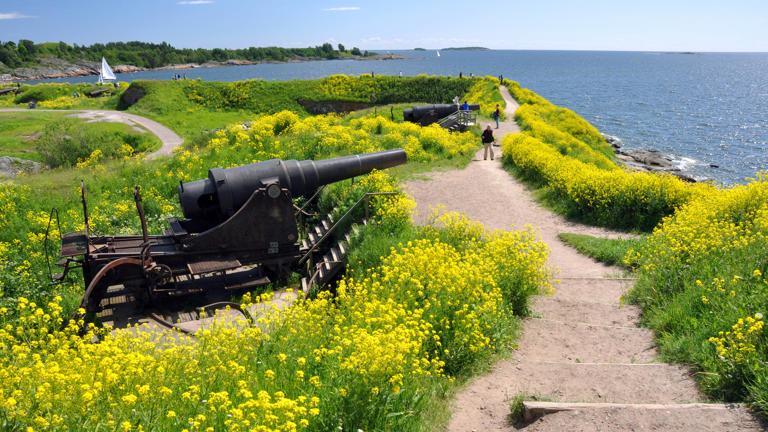

IMAGES
COMMENTS
That was a pretty comprehensive guide to the Baltics! We are a group of 4 (husband, daughter, son-in-law and myself), planning a trip to the Baltics for around 2 weeks, starting Oct 18th or so. We thought we could travel the 3 Baltic countries by road (bus or hired car), then head to Warsaw for a few days, and head back home to Bangalore from ...
The Culture of the Baltic Region. The Baltic Region of Eastern Europe is a unique territory inhabited by non-Slavic natives as well as ethnic Slavs. Travelers to the Baltic Region will discover the centuries-old folk culture, strong national pride, and the refreshing air of the Baltic Coast. Visiting this region offers sights and activities not ...
This is the first post about the Baltics on Penguin and Pia so we are going to be adding lots more information on the region in the future! As a good place to start, below is a sample itinerary with the capitals, day trips, hostels, and other points of interest in the Baltic states. In fact, all of Eric's hostels in all three countries made ...
Sep 21, 2023 • 6 min read. The Baltic Trails take ambitious hikers through the wooded national parks, beaches and historic towns of Estonia, Latvia and Lithuania. Architecture. A road trip through the Baltic States. Oct 9, 2019 • 4 min read. Food.
In addition, it also takes you to the lesser-known areas of each country. You get to spend two nights on Saaremaa, Estonia's biggest island, explore the castles of Sigulda, Latvia, and climb the impressive sand dunes in the Curonian Spit in Lithuania. Even though two weeks are not enough time to see everything the Baltics have to offer, this ...
Ferry station for the boat to Suomenlina. Day by Day breakdown of Baltics Itinerary. Here is a day by day breakdown of the Baltics itinerary. It is pretty straight forward trip as it mostly focuses on visiting the big cities. Day 1: Land in Vilnius to start the trip. Day 2: Full day Vilnius. Day 3: Full day Vilnius.
When is the best time to visit? While our favourite travel time of the year is usually Spring (mid-March to mid-June) and Autumn (mid-September to mid-December), the three Baltic countries are best visited between the end of May/early June and mid-end August, when the temperatures are in the low 20s (centigrade that is), and the days are super long. . If you want to experience the Baltics in ...
What are the countries in the Baltic Region. There are three countries in the Baltic Region. This includes Lithuania, Latvia, and Estonia. The region got its name due to the fact that these countries lie next to the Baltic Sea. This is why some resources might even say that Sweden, Finland, and Poland are also part of the Baltics.
When to Go to the Baltic States. The Baltic States are countries best visited in summer, when temperatures are mild and the sun shines for 18 hours on the longest days. Taking advantage of off-season deals may backfire: Spring is often brief and wet, fall is chilly, and winter is dark, cold, and challenging for travel, especially to rural areas.
Baltic countries of Estonia, Latvia, and Lithuania still often get lumped together in travelers' minds—until they actually visit. The former Soviet Republics are actually quite distinct ...
Baltic states. The Baltic states are three countries of north-eastern Europe, on the eastern shore of the Baltic Sea. The three small countries have a long interesting history, and an impressive cultural heritage dating back to the Hanseatic League. The region's 175,015 km 2 are home to 6.3 million people, nearly half of them in Lithuania.
The 3 Baltic countries Latvia, Lithuania and Estonia were under Soviet rule until 1991, which meant they were pretty much off limits to the outside world. ... The best time to visit Baltic countries is from late spring through to early autumn, with July and August being the warmest months. Because the Baltic states are located high up in Europe ...
Baltic Tours & Trips. TourRadar has 239 tours visiting the Baltic countries - Estonia, Latvia, and Lithuania. The tours start from just 2 days in length, up to 21 days. The most popular month to go is August, which has the highest number of tour departures. 239 Baltic tour packages with 993 reviews.
Why Visit the Baltic Countries? Lithuania, Latvia, and Estonia are among the best places to travel to if you are looking to escape from the crowdedness of other European countries. From Trakia in Lithuania, Cesis in Latvia, and Tallinn in Estonia, the Baltic countries prove that fairy tales really do come true with a perfect mix of untouched ...
2 days in Tallinn. Day trip from Tallinn. 2 days in Riga (with an optional extra day) Day trip from Riga. 2 days in Vilnius. Day trip from Vilnius to Trakai. If you are wondering how to see the best of the Baltic in 10 days, you will need to plan at least 3 day trips - one from each capital.
January and February, are freezing in the Baltics and not the best time to visit unless you're a fan of short days, cold weather and thermal underwear. March and April are still very cold although well wrapped bird watchers will reap rewards: early springtime signals the start of swans, ducks and geese moving into the wetlands and shallow bays along the Baltic coastline.
Travelling to the Baltic Countries (Lithuania, Latvia & Estonia) can be the most rewarding of all European adventures, with everything you look for in a trip...
Eurail Pass for the win. The Eurail Pass is your golden ticket to trains (and even some buses and ferries) across Europe, including the Baltic beauties. It's like having a key to the city, but for multiple countries! Scenic vibes on the go. On your trip, you'll be zipping through forests, coastlines, and cute towns.
The Baltic summer, from May to September, is a splendid time to explore this region. Enjoy warm weather and long daylight hours as you immerse yourself in the beauty of the Baltic coast. Start your journey in Lithuania, where you can visit the medieval streets of Vilnius, the charming Trakai with its castle on a lake, and the vibrant Old Town ...
USD $1,791. Uncover the cultural wonders and historical riches of three fascinating countries on an 8-day tour through Lithuania, Latvia and Estonia. Wander the beautiful Old Town of Vilnius and learn about its complex modern history. Discover Riga's Art Nouveau architecture and feast on Latvian cuisine at the city's vast Central Market.
Helsinki and Tallinn are two great capitals in Northern Europe. Just 50 miles and a two-hour ferry ride apart, these two cities - facing each other across the Baltic Sea from their respective ...
Holidays in Nordic, Scandinavian, Arctic, Baltic, Balkan & Eastern European areas from the Baltic Travel Company. +44 (0)208 233 2875. UK Local 08456 800 642. 1866 834 8359 1800 025 807. Search Try our Advanced Search ... on the Northern Lights, the Midnight Sun and all the countries Baltic Travel can take you to, and special offers, please ...
Estonia-Latvia: Tallinn-Riga trains connect at Valga (6 hours, $20 without rail pass), but direct buses save time (4 hours, $20). Ferries connect Tallinn to Stockholm and Helsinki, Riga to Stockholm, and Liepaja to Travemünde (Germany). Eurail Global and Scandinavia passes grant a discount on some of these international ferries (but one ...
2024-04-23. BNS/TBT Staff. VILNIUS - The Lithuanian parliament on Tuesday rejected proposals to restrict travel for Russian and Belarusian citizens to their home countries, but took a step toward passing a bill extending national sanctions against them and tightening conditions for Belarusians. Twenty MPs voted in favor of the proposal to ...